TL;DR |
|---|
When you think of a comic book, the first thing that grabs your eye is the cover. For iconic publishers like Marvel and DC, the cover has always been a creative space where artists push boundaries and set the tone for what lies within.
As heroes like Batman and Superman evolved, their covers also changed, reflecting the culture, trends, and imagination of each era. It’s no surprise that the comic book industry is thriving. The global market was valued at $16.8 billion in 2024 and is projected to reach $31.2 billion by 2034, growing at a CAGR of 6.6%.
In this blog, we’ll explore the types of comic book covers that didn’t just define stories — they defined eras. Also, we'll be talking about how to design cool comic book covers.
Over the years, comic book covers have done more than grab attention. They’ve told us where comics were headed and what readers cared about. Each era brought its own style, message, and creative flair, many becoming some of the best comic book covers of all time.
Let’s take a closer look at the standout comic book covers ideas that not only defined their eras, but helped shape the legacy of comics as we know them.
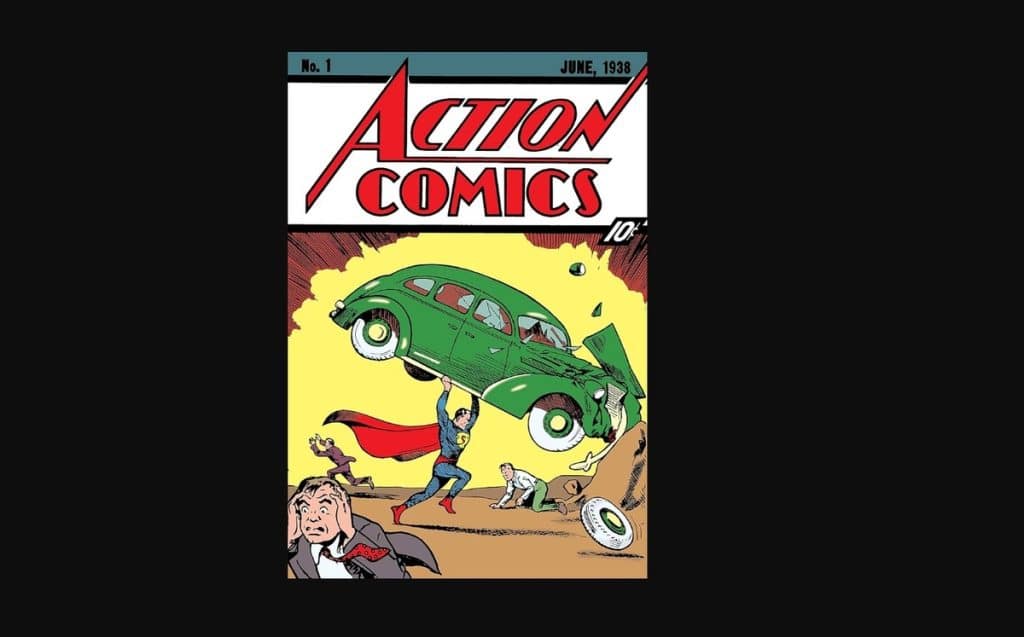
The Golden Age exploded with energy. Covers from this era were all about bold heroes leaping into action — sometimes quite literally. When Action Comics #1 dropped in 1938, Superman was shown lifting a car over his head. That image alone redefined what a superhero could be larger-than-life, unstoppable, and unforgettable.
Then came Captain America Comics #1, where Cap famously punched Hitler right on the cover. During World War II, this was more than just eye-catching it was powerful. These early works are often seen as some of the most iconic comic book covers ever printed.
Batman’s early appearances in Detective Comics were just as thrilling. With his cape billowing and fists flying, he leapt across covers like a shadow in motion.
These classic comic book covers didn’t just entertain; they inspired, uniting readers during uncertain times and leaving a legacy still felt in today’s superhero stories.
Want to know what makes characters like Superman or Batman so iconic? Read about comic book characteristics to see what sets them apart.
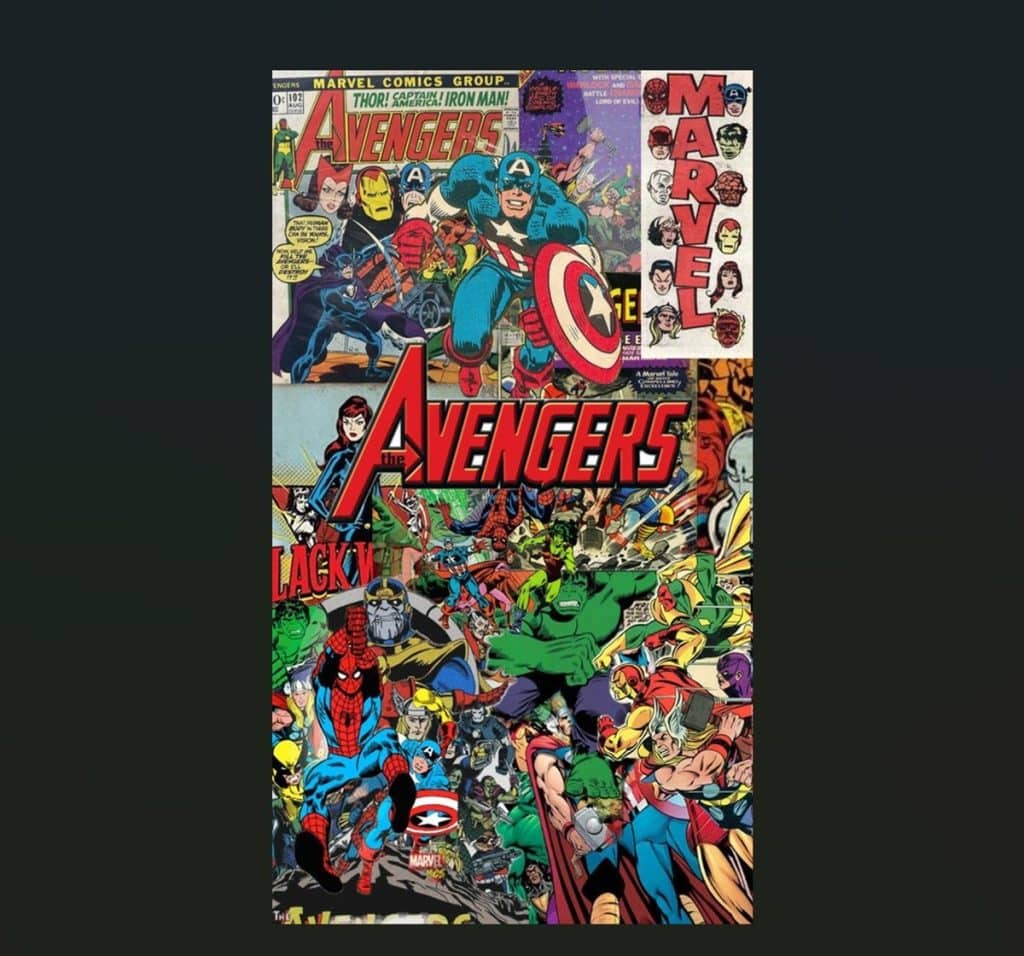
Welcome to the era of big ideas and even bigger teams. The Silver Age brought a wave of imagination, science fiction, and collaboration — all front and center on the covers. This is when comic book universes truly began to feel... universal.
Marvel introduced The Avengers, with covers featuring Thor, Iron Man, Hulk, and more, battling side-by-side against massive threats. At the same time, DC’s Justice League of America united Superman, Batman, Wonder Woman, and others in epic scenes that became cool comic book covers fans still remember.
The art also took on a new vibe with cosmic backdrops, experimental layouts, and dynamic poses that felt like movie stills. Journey into Mystery gave us Thor surrounded by stars and myth — a perfect example of comic book cover ideas that embraced scale and spectacle.
Silver Age covers were loud, fun, and full of promise. Many of these comic book covers required advanced planning and production techniques. And, if you want to learn how comics like these go from idea to printed reality, check out the full book printing process.
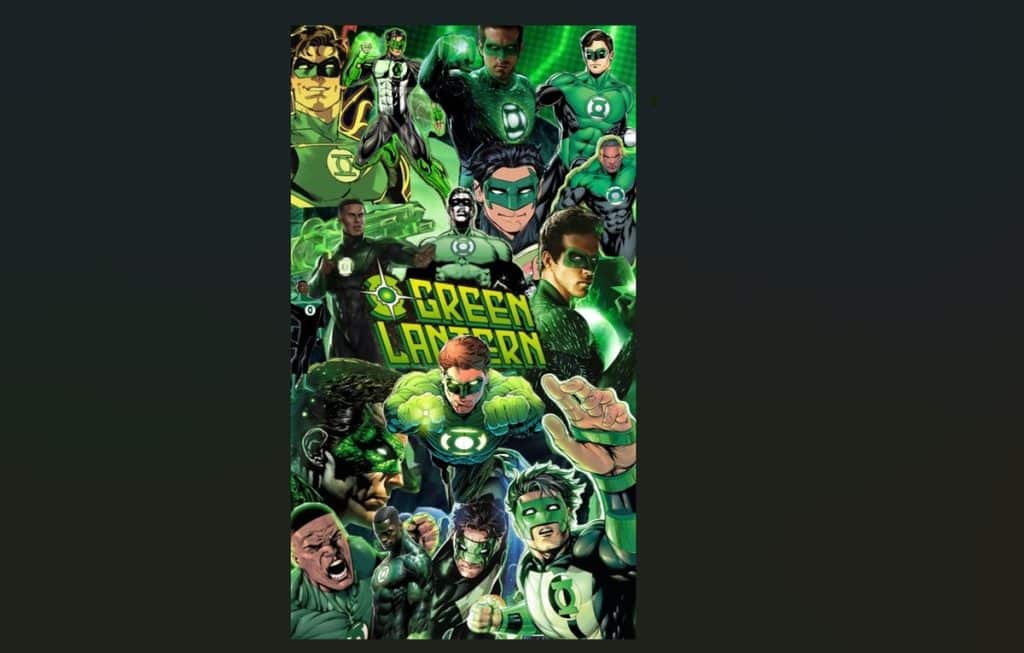
The Bronze Age brought a serious tone shift. Covers started reflecting real-life struggles — and they didn’t hold back. Suddenly, superheroes had problems that couldn’t be solved with a single punch.
Take Green Lantern #85 — the cover shocked readers by showing Green Arrow’s sidekick caught in heroin addiction. This raw, unforgettable cover is one of the most iconic comic book covers that marked comics’ leap into mature storytelling.
Then, there's The Amazing Spider-Man #50, which shows Peter Parker walking away from his costume, emotionally weighed down. It captured his inner conflict in a single, powerful image, a classic comic book cover still studied today.
Even Wolverine’s rise brought moody, intense visuals that felt personal and gripping. Batman’s #205 gave us haunting visuals with rich shadows and high stakes. Artists like Neal Adams helped usher in comic book cover ideas that mirrored society’s toughest questions.
These covers didn’t shy away from tough topics. They leaned in and challenged readers, and many of them remain among the best comic book covers to date.
If you want to create something similar and publish your own comic, here’s a simplified comic book printing process that walks you through the steps.
Ready to print your own powerful story? Check out our Comic & Graphic Novel Printing services for top-quality results trusted by creators.
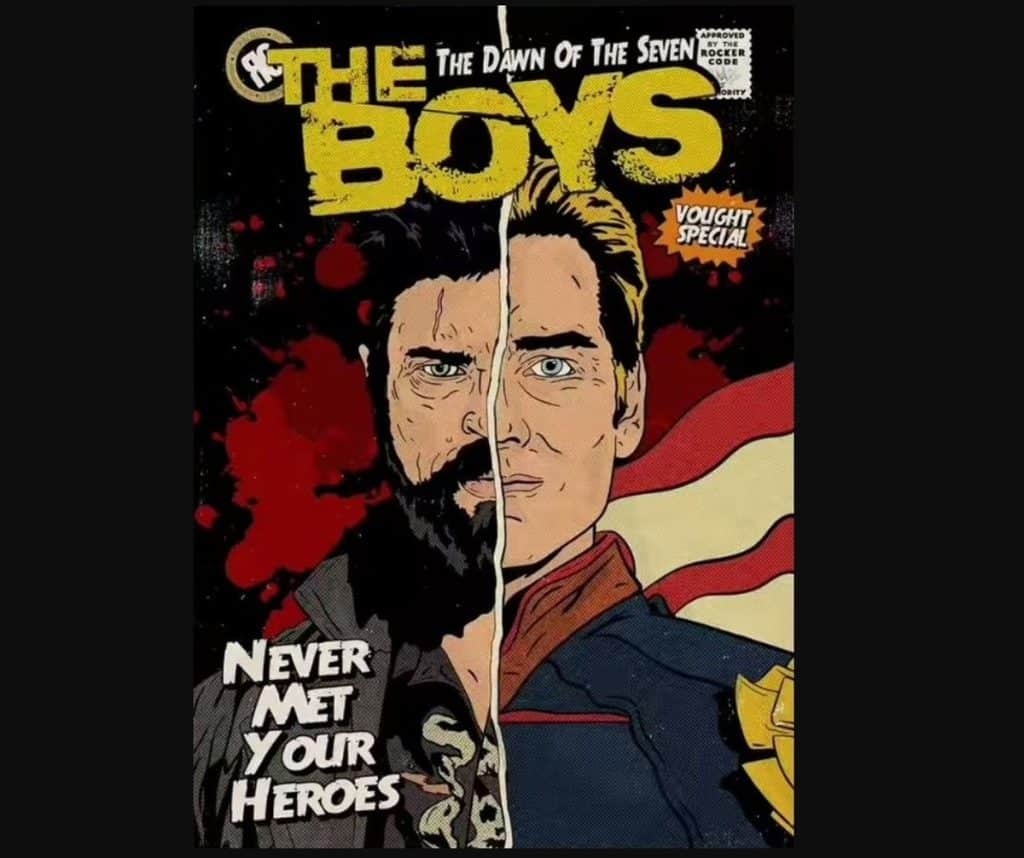
The Modern Age shook things up. Comic book covers became more creative and competitive, with publishers like Marvel and DC doing everything they could to stand out.
To attract a broader audience, they introduced variant covers, multiple versions of the same issue, each with its own twist. Some cool comic book covers of this era include:
Variant Trends | Key Examples |
|---|---|
Holographic | Amazing Spider-Man #365 had a shining holo cover |
Minimalist | Superman #75 was simple, just showing his torn cape |
Retro-themed | There were old-school designs on limited Batman comics |
Gritty Realism | The Boys featured raw, bold covers like a bloodied Homelander or Butcher’s intense stare that captured its dark, subversive tone |
These weren’t just for flair; they turned comic book covers into collectable art. If you're also planning your first print run, it helps to know how much it costs to print a comic book so you can budget smartly.
The Modern era brought forward some of the best comic book covers for collectors and casual fans alike, showing how format, texture, and artistry could create lasting impact.
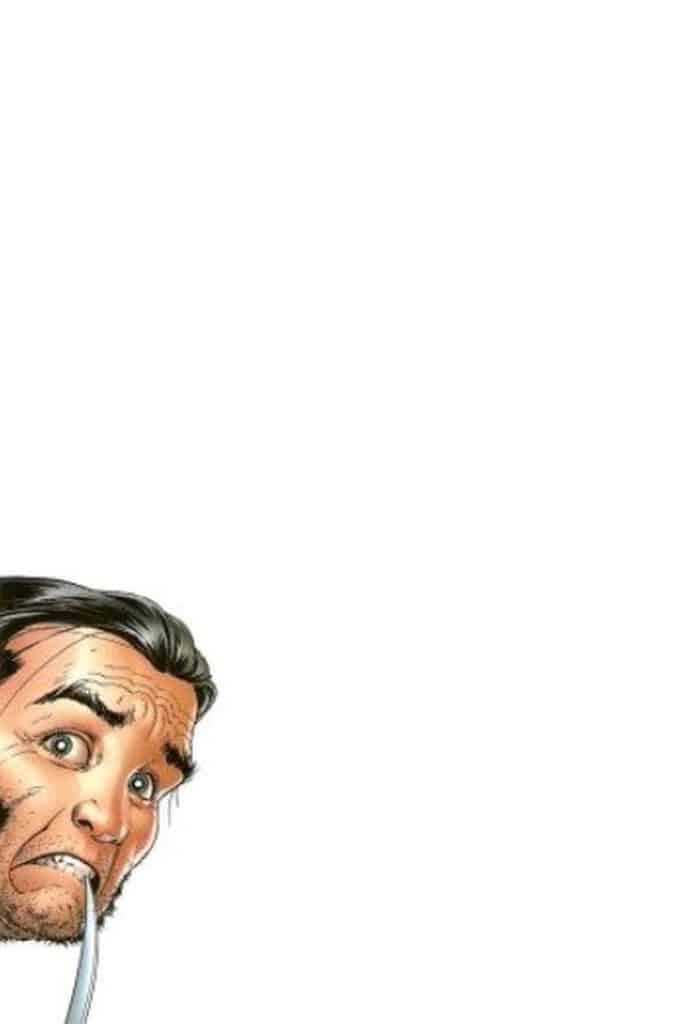
In the Digital Era, comic book covers have taken a fresh turn, leaning into minimalism, bold design choices, and more artistic storytelling. Heroes like Batman, Wolverine, and others from the Marvel universe now appear on covers that break away from traditional comic art styles.
One standout example is John Cassaday’s Astonishing X-Men #17, where Wolverine is surrounded by stark white space. This subtle design is among the most iconic comic book covers of modern times.
If you're curious how comics are created from scratch in today’s world, here’s how comic books are made, from concept to cover.
As digital media expands through gaming and streaming, comic covers are evolving to stay relevant. These modern covers whisper instead of shout, proving that even today, classic comic book covers can be redefined.
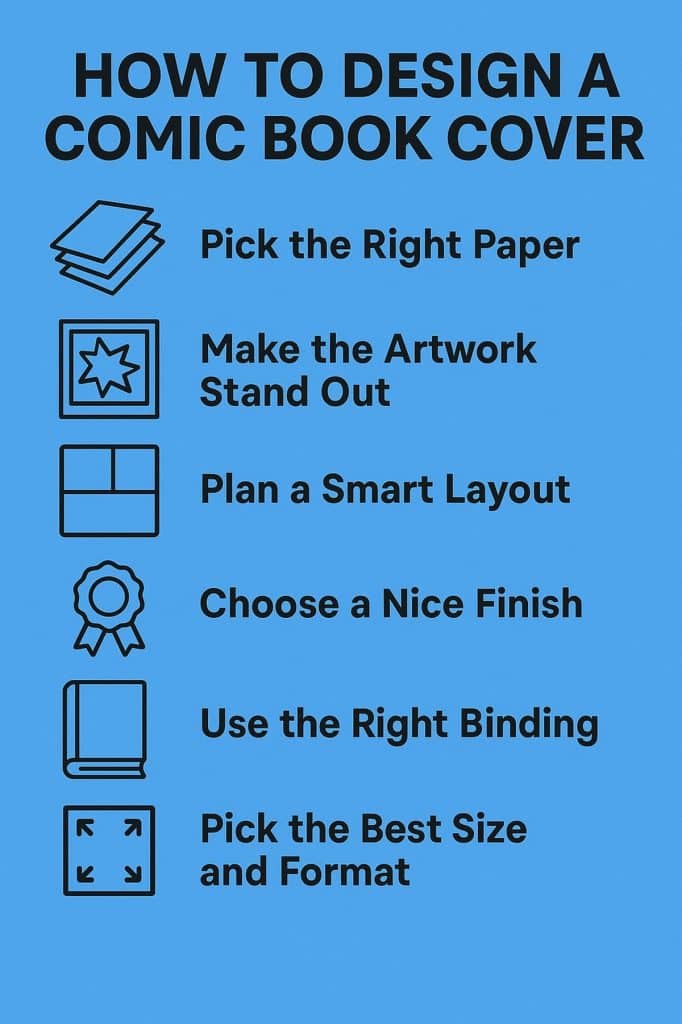
A comic book cover is more than just the first page, it’s the hook that draws a reader in. Whether you're crafting the next cult classic or an indie gem, here are some pro tips to help your cover stand tall among the best comic book covers:
The quality of your paper plays a big role in how your cover looks and feels. For most comic books, cardstock is a popular choice. It’s thicker than regular paper and offers durability while still being cost-effective.
Glossy paper adds shine and makes colors pop, which is perfect for high-energy, action-packed comics. Matte paper gives a more muted, classy look, ideal for darker or more serious storylines. Some creators even go for textured paper to add depth and uniqueness.
Not sure how to prep your files or choose the right paper? Ex Why Zed is here to help
Great cover art is what stops someone in their tracks. Strong visuals like dynamic poses, bold color schemes, and high contrast can instantly communicate the vibe of your story.
Use focal points, bold colors, and layered composition. Think about Superman’s chest emblem or Wolverine’s claws, these iconic comic book covers stay etched in memory. If you’re working with an artist, make sure the cover reflects a powerful moment or the emotion of the issue.
Tip: Study classic covers by legends like Jack Kirby or modern graphic styles from indie comics. See how they use space and color to lead the eye.
Let your layout guide the eye. Position titles, names, and issue numbers with care. Keep the spotlight on your characters and scene, just like many classic comic book covers do. Your title, subtitle (if any), issue number, and author or illustrator credits should be easy to find but not overpower the artwork.
Use visual hierarchy. Make the title the most prominent, followed by character artwork, and then the smaller details. Keep things balanced. Too much text or too many visual elements can feel cluttered.
The finish you choose affects how the artwork looks once printed. Here are the common options:
Tip: Ask for print samples to see how your artwork looks with different finishes before you commit.
Have questions about foil, UV, or finishes? Our team is always here — reach out to us directly and we’ll guide you through the options.
Binding doesn’t just hold the book together, it affects how the cover and pages sit and how durable the comic is over time.
The standard comic book size (6.625" x 10.25") is a safe bet. It fits display racks and collector boxes. But experimenting with size can make your comic stand out:
Standard sizes work best for collectors. But if you want to stand out, oversized or mini formats are great comic book covers ideas for indie creators.
Tip: If you're going to print your comic, always check with your printer first to see which sizes are most cost-effective or compatible with their machines.
A striking comic book cover deserves equally impressive print — and that’s where Ex Why Zed delivers. Trusted by thousands of creators, we offer high-quality comic printing with vibrant colors, sharp detail, and premium finishes like gloss, matte, spot UV, and foil.
Whether you’re printing a one-shot zine or a collector’s edition, our expert team guides you through every step from file setup to choosing the best binding and paper.
Now that you’ve done the hard part, let us handle the print. Request a quote and see how your comic can shine with professional production.
Comic book covers have always reflected the spirit of their time, from the bold action of the Golden Age to today’s digital designs. More than just eye-catching art, they open doors to new worlds, spark imagination, and shape pop culture.
So whether you’re a fan, a collector, or a creator, never overlook the power of a great cover — because the next iconic comic book cover might just be yours.
Iconic comic book covers really show off their hero and the time they come from. You can see this with Captain America when he hits Hitler, or when Batman sits brooding on top of a gargoyle. These covers mix strong pictures with things from that time, so people remember them. Marvel is known for many of these covers, like ones for Thor or the ones that show Wolverine’s wild strength.
Comic covers have played a big part in pop culture. They help make heroes like Superman and Batman into powerful symbols. These covers from Marvel and DC have a long history. Some show Spider-Man as Peter Parker looking inward through art. Many comic covers like these have started new movies, merchandise, and even big shared worlds. This has pulled people from all over the world in and made them fans.
Variant covers give people more choices, letting them see different art styles on their favorite comics. These covers might show Wolverine in new scenes or give a fresh look to Thor's famous poses. Comic makers like Marvel and DC turn these covers into special art that many want. Since there are only a few of each cover, they can be worth good money when people sell them later.
Creators such as Jack Kirby helped change how people tell stories with pictures for Marvel and DC. Kirby worked on Captain America, and the art stands out even today. Steve Ditko also made strong artwork for Superman and Batman. These people made comic covers so special that many still remember them. They helped shape the way we see comics now.
Creating a graphic novel is no small feat; it takes vision, discipline, and hours of careful design. But when it comes time to actually print your graphic novel, the choices you make can determine whether it lands with impact or falls flat.
If you're an artist, writer, or indie publisher wondering how to print a graphic novel with professional results, you're in the right place. In this guide, we'll walk you through every step, from layout to print and promotion, with expert insight and services from Ex Why Zed, UK’s most trusted creative printers.
Whether you're self-publishing a full-colour graphic novel or producing a short run for conventions, each step plays a vital role in transforming your digital artwork into a polished, professional-quality book. Follow these essential steps to ensure your final product not only looks exceptional but also reflects the time, creativity, and effort you’ve invested in every panel.
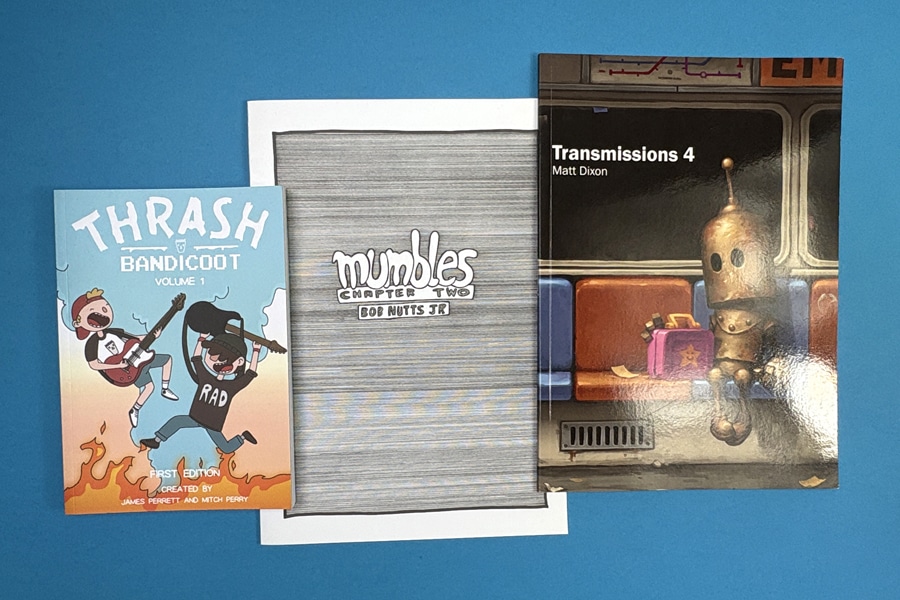
Before you begin the printing process, it’s essential to define the key specifications of your graphic novel. These early decisions will directly influence your design approach, production costs, and overall reader experience.
Here are a few layout decisions to consider at this stage:
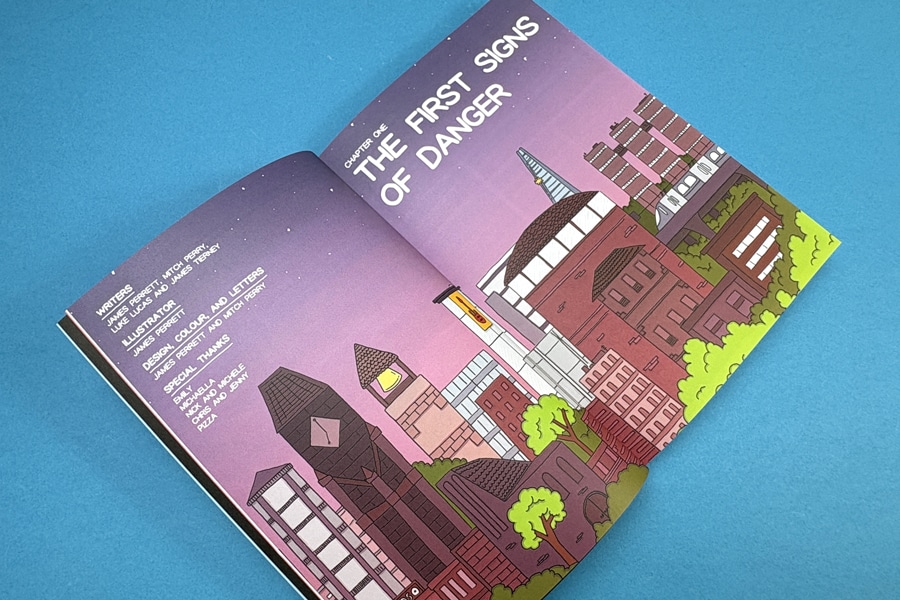
The look and feel of your book can change drastically depending on the paper you choose. For graphic novels, where visuals are key, Ex Why Zed offers several options that help your artwork shine:
Binding matters too. For shorter zine-style books, saddle-stitching (staples) works well. For thicker stories, perfect binding (like a paperback novel) offers a more professional spine and finish. Hardback options are also good if you're looking to create a premium collector’s edition.
Not sure which paper to choose? Explore our guide on the best papers to print, including silk, gloss, uncoated, and recycled options.
Your cover is your first impression. A great graphic novel cover combines eye-catching illustration with clean typography and thoughtful composition. If you’re printing a perfect-bound book, make sure you also account for the spine width when designing your wraparound cover.
Don’t overlook the impact of finishes. Matte or gloss lamination gives the book a professional feel. Spot UV adds texture and shine to specific elements like a title or logo. You can even opt for foil stamping or embossing for a standout tactile effect.
When it comes to how to print a graphic novel, your printing method plays a key role in cost and output quality. The two most common methods are:
Whether you are looking for a Litho Printing Company or a Digital Printing Company, Ex Why Zed offer both under the same roof. With industry-leading presses like HP Indigo for digital works and Heidelberg for litho runs, you're covered no matter your print run size.
Once your layout and cover are finalized, it’s time to prepare your files for production. Getting the technical setup right ensures your printed graphic novel looks just as sharp and polished as it does on screen. Here are the key elements to focus on:
An ISBN (International Standard Book Number) is a unique code used to catalog your publication title and is essential if you plan to sell your graphic novel through retail platforms like Amazon, bookshops, or libraries. Each format, whether paperback, hardcover, or digital, requires a separate number. If you're producing variant covers, those may also need their own ISBNs.
However, if you're selling directly via social media, your website, or at zine fairs, an ISBN isn’t mandatory. If you do include one, it’s typically placed on the cover spread (specifically the lower area of the back cover) or on the inside back cover, depending on your layout and distribution needs.
Before committing to a full production run, it’s wise to print graphic novel in a small batch, or even a single copy, to evaluate the final product in hand. This gives you a chance to:
At Ex Why Zed, there’s no minimum order requirement, you can print just one copy if needed. This flexibility allows you to refine your project before scaling up confidently. This also helps you avoid costly reprints and ensuring your graphic novel is ready for readers from page one.
Once your book is printed and in hand, it’s time to shift your focus to visibility. Strategic promotion is key to growing your audience and building momentum for future issues or volumes.
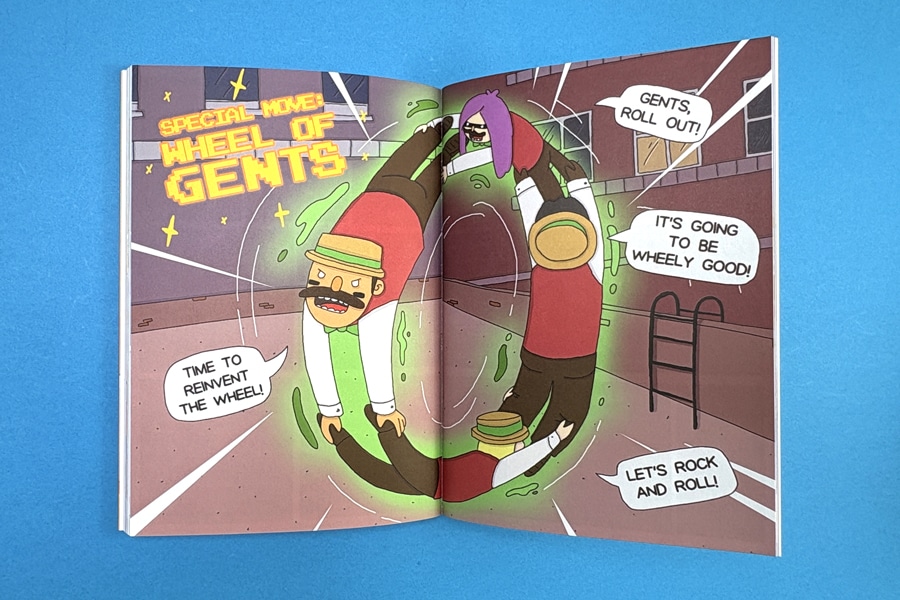
Here are a few proven strategies:
A professionally printed book with clean design, vibrant interior pages, and quality finishing can boost your credibility. It also helps attract the attention of influencers, reviewers, and indie bookstores looking for standout titles.
At Ex Why Zed, we specialize in high-quality, creator-friendly printing for graphic novels, zines, and illustrated books. Whether you're printing a single proof copy or a full commercial run, we offer exceptional flexibility with no minimum order quantities. You’ll also have access to a wide range of paper stocks and both digital and litho printing using industry-leading presses.
You’ll get access to free file checks, clear setup guides, and one-on-one support from experienced print experts who understand the unique needs of artists and self-publishers. We also offer commission-free fulfilment, warehousing, and worldwide distribution, so your story doesn’t just get printed, but gets into the hands of readers.
Printing a graphic novel is where your creative vision becomes tangible. From choosing the right paper stocks to finalizing your spine design file, every element contributes to the quality of your printed book. It's also important to ensure your interior pages, outer covers, and spine artwork are included in a properly prepared single PDF file to achieve a professional final result.
Whether you’re producing a zine with low page counts or a full-length book with a detailed cover spread and high page counts, precision matters. Proper setup of file formats, dpi PDF file, bleeds, and binding edge alignment helps avoid issues like unprinted edges and supports a polished final appearance.
Before production, review your layout, check your individual files, and confirm your estimated date to ensure everything is on track. With careful preparation, your graphic novel will not only read well, but look like a professionally produced piece worthy of your audience’s bookshelf.
If your number of pages is under 64, saddle stitch binding is ideal. It uses machine stitches to secure pages and is cost-effective for shorter runs. This works well for zines or titles with minimal details and fast turnarounds. Staple binding also allows the pages to be pressed flat so you don't lose any content. For longer projects, consider perfect binding or hardcover for greater durability.
Yes, we accept files exported from Affinity Publisher and Adobe Photoshop, as long as they meet our print-ready specs. You can upload a separate PDF §file for your front cover and interior content or combine them into one single PDF file. Make sure your spine dimensions, bleeds, and resolution are accurate before submitting. If you’re unsure, check our support page for templates and file setup help.
You’ll receive a downloadable proof to verify layout, alignment, and important content placement. This preview includes inner pages, inside covers, and a spine thumbnail to help you catch issues before production. For books with low paper weights or lots of ink coverage, we recommend checking for ink transferral or paper transparency. An online preview is also available through your artwork tab.
Pricing depends on format, paperback items vs. hardcover items, inner pages, and total page count. You can get an initial quote instantly using our online tool, or request a bespoke quote if your project exceeds a specific limit or has special requirements. All costs, including estimated shipping date, are shown in your shopping cart before checkout. For complex requests, our print experts can guide you to the correct place in your setup process.
You can easily reorder through your account, where any pending order details, previous spine files, and ad user data preferences are saved. Be sure to update any single pages that contain new or revised internal pages. For books with a dust jacket, verify that the design updates extend to the top of prints and flaps. We recommend confirming all specs before submission to avoid a higher cost for post-production changes.
Several elements contribute to your book’s longevity, including the binding method, paper type, and how frequently the book will be handled. Using a strong adhesive for perfect binding ensures that pages remain intact, even with repeated use. Choosing a durable stock like uncoated paper can also reduce glare and wear over time.
Struggling to get your book noticed on social media? Without captivating visuals, teaser videos, and behind-the-scenes insights, it can be difficult to reach a wider audience. This blog will help you tackle those challenges with proven strategies to boost your book’s visibility. You'll discover practical ways to engage readers, from giveaways and live Q&As to influencer collaborations and targeted ads. Ready to make your book shine online? Let’s get started!
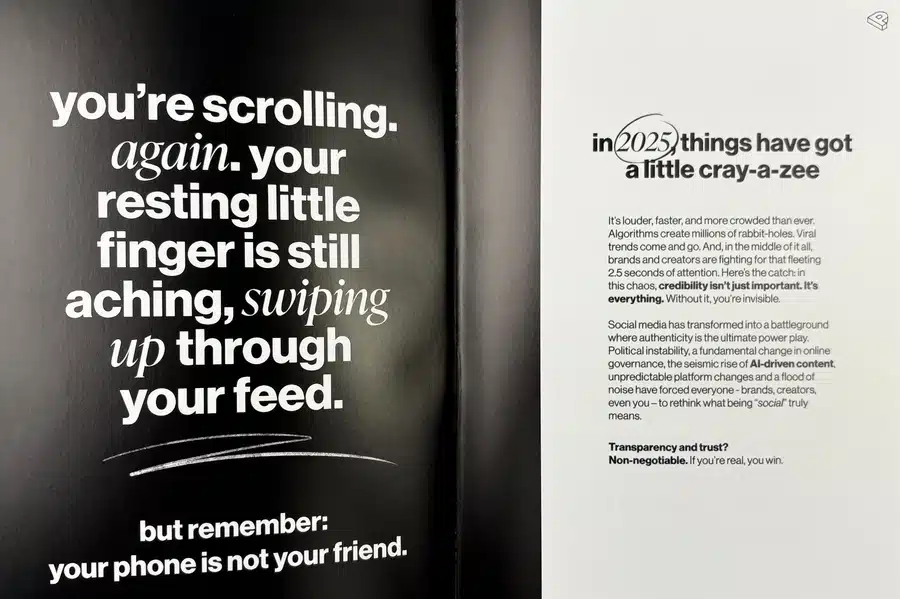
A successful book launch strategy includes three key phases: pre-launch, launch week, and post-launch. Each phase has specific goals and activities to engage your audience. From building buzz before the book release to maximising exposure during the book launch party and maintaining momentum afterwards, each phase is vital for your book's success.
Promoting your upcoming book requires creating hype during the pre-launch phase. To do this, start building anticipation months before the release date with these strategies: Identify ideal readers, share teaser content like snippets and author interviews, engage with your audience by responding to comments, build excitement by sharing intriguing details, and maintain a strong online presence as the launch date nears.
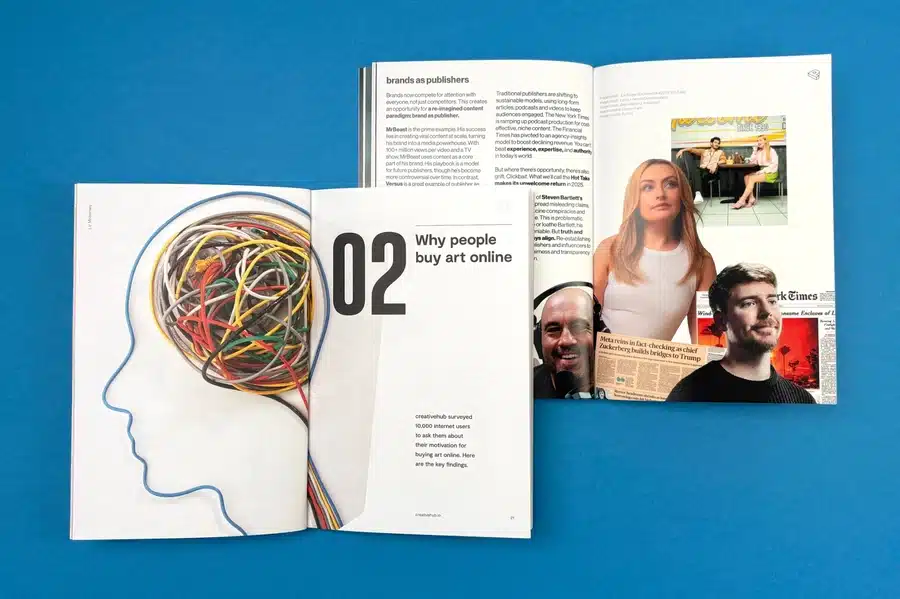
Boosting online activity during the book launch party is vital to generating buzz. Use eye-catching visuals or videos to announce the release date. Increase social media posts for updates, book reviews, and book promotion during the launch week. Cross-channel promotion across various platforms helps reach a broader audience. Live video sessions, such as author readings or Q&A sessions, can enhance interaction and social media success.
You can also leverage an AI video editor to quickly create engaging highlight reels, teaser clips, or personalized thank-you messages that capture attention and drive more shares during your launch week. Pro tip. Optimize your audio and add music to video content; the more trendy the better.
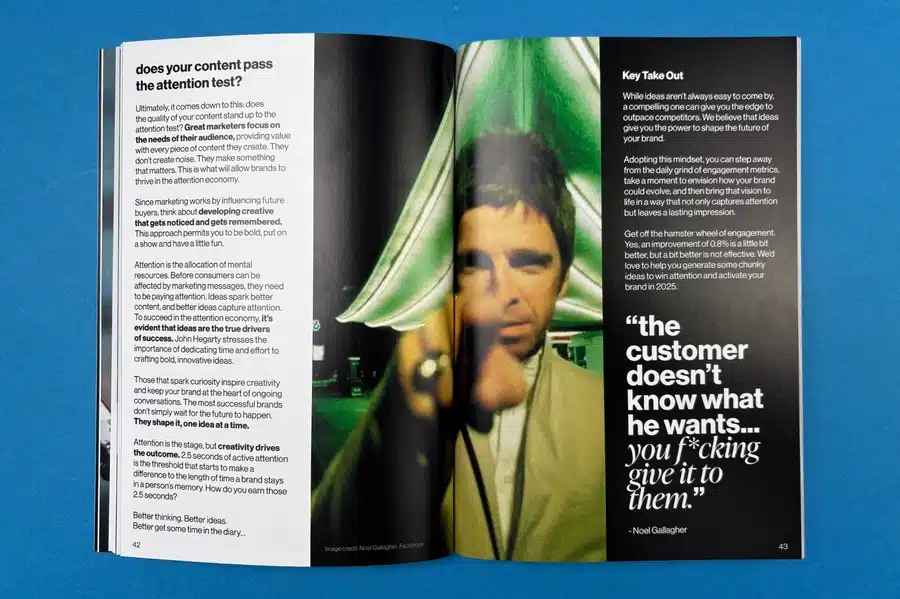
To maintain momentum after the book launch, engage with your audience by encouraging reader reviews through giveaways. Share quotes and backstories to sustain interest and build anticipation. Participate in interviews, webinars, and podcasts to connect with readers. Furthermore, stay active on social media profiles by organising contests and giveaways to keep followers engaged beyond the book release.
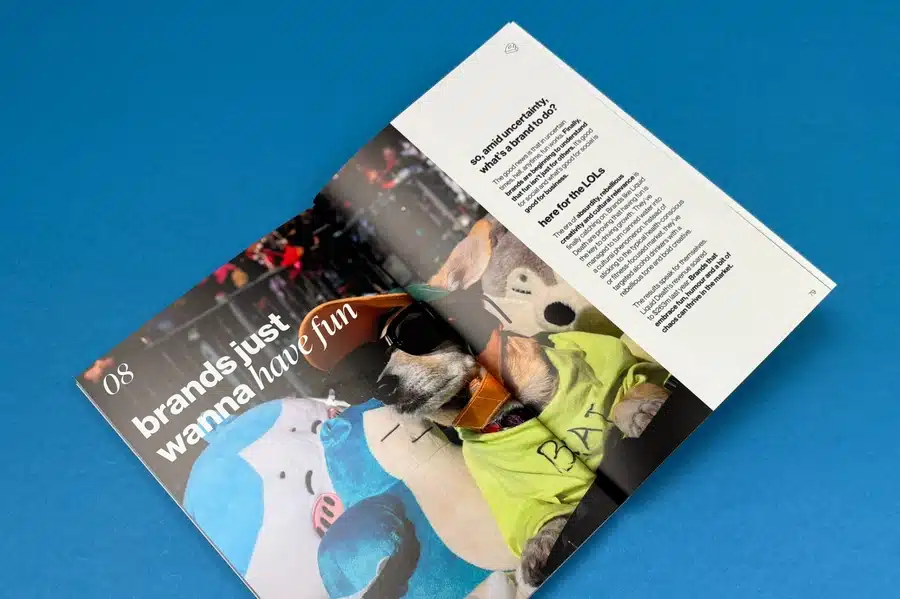
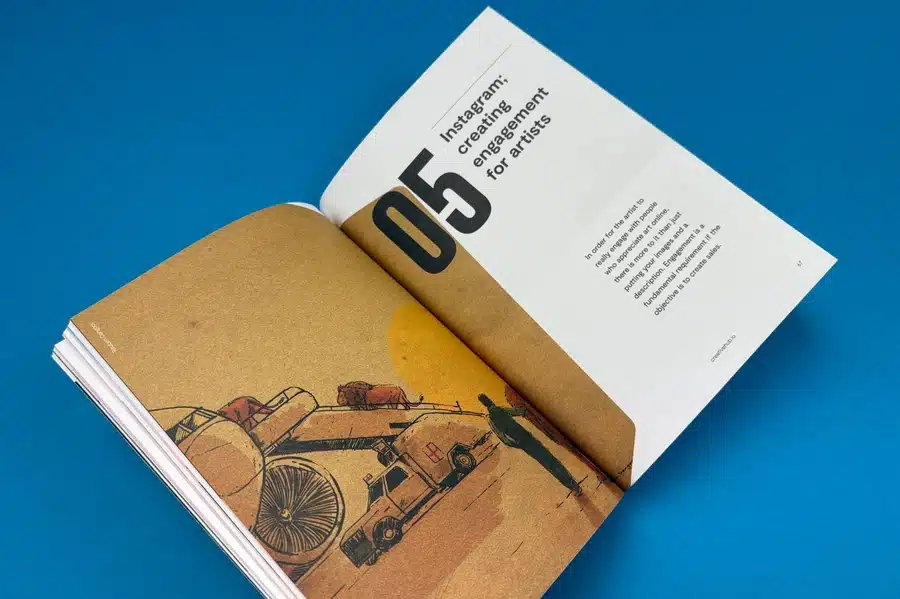
Social media marketing offers vast promotion opportunities for book launches, but common mistakes can hinder success. Neglecting pre-launch content, poor timing, inconsistent posting, and ineffective hashtag use can impact your book's online reception. Learn how to avoid these errors during your book promotion.
Posting content sporadically can lead to irregular engagement and missed opportunities for visibility. Without a plan, your audience may lose interest, and your promotional efforts might fail to create momentum.
To avoid this, create a detailed content calendar outlining what and when to post leading up to and following your book launch. Identify optimal posting times based on audience activity patterns and balance your content types, such as cover reveals, quotes, and behind-the-scenes content. Consistency and thoughtful timing help maintain audience interest and boost visibility.
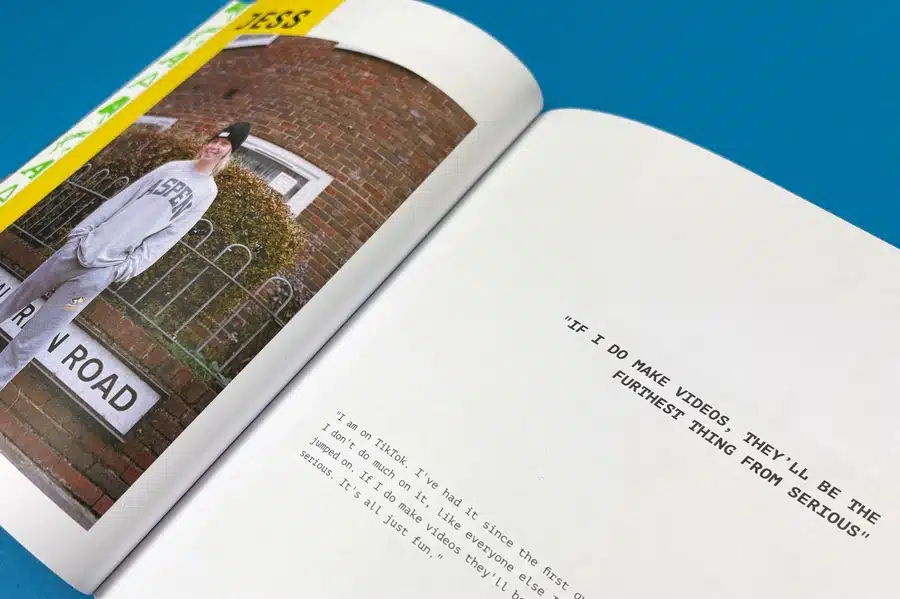
A lack of audience engagement can make your social media efforts feel one-sided. When authors fail to respond to comments or questions, it can create a distance between the author and readers.
To build genuine connections, actively respond to comments, address questions, and acknowledge readers who share your posts. Engaging with your audience fosters loyalty and increases the likelihood of your content being shared, amplifying your reach. Establishing a habit of interaction transforms passive followers into active supporters.
Many authors focus solely on launch day promotions while neglecting the pre-launch phase. Without building early anticipation, you risk launching your book to an unprepared audience.
However, building anticipation early is key to a successful release. Share teaser content, such as cover reveals, writing milestones, and behind-the-scenes stories, to generate curiosity. Collaborate with influencers and request advance reviews to build buzz. Consistent pre-launch content helps establish momentum and a ready audience for your book's debut.
Underutilising hashtags and platform-specific features can limit your content's reach. Without hashtags, your posts may remain invisible to potential new readers who search for content by topics and trends.
Hashtags make your posts more discoverable to new audiences, while features like Instagram Stories, Twitter threads, and Facebook Live can amplify engagement. Research relevant hashtags for your genre and incorporate them thoughtfully in each post. Explore platform tools like polls, Q&A sessions, and countdown timers to boost interaction and visibility.
Approach Social media requires ongoing attention and adaptability. Some authors schedule posts in advance and neglect regular performance analysis, missing opportunities for improvement.
Avoid this mistake by actively monitoring engagement metrics and adjusting your strategy accordingly. If specific posts perform well, create similar content; if some fail, rethink your messaging. Staying flexible and responsive to audience feedback keeps your promotional efforts effective and relevant.
Launching pre-orders too early without a clear strategy can dilute the impact of your book’s release. It may spread out sales over time, weakening the momentum of your launch week. Instead, time pre-orders to build excitement and focus on driving sales during the release week to maximise rankings and visibility.
Instead, time pre-orders strategically, focusing on building momentum as the launch date approaches. Use pre-orders to gauge interest but emphasise release week promotions for maximum impact on sales rankings. A well-planned timeline ensures a strong sales surge during the launch.
Trying to be active on every platform can lead to burnout and scattered efforts. Without focus, it becomes challenging to maintain quality and engage effectively with your audience. Instead, prioritise 2-3 platforms where your target readers are most active and tailor your content to suit each platform.
Instead, focus on 2-3 platforms where your target readers are most active. For example, romance authors might prioritise Instagram and TikTok, while nonfiction authors could focus on LinkedIn and Twitter. Tailor your content to each platform's strengths and prioritise quality over quantity.
Your audience may lose interest if you focus solely on promoting your book. Constant advertising can feel repetitive and push readers away. Instead, mix valuable content like writing tips, personal stories, or discussions related to your book to keep your audience engaged and invested.
To balance self-promotion, share content that educates, entertains, or inspires your followers. Offer writing tips, share personal anecdotes, or discuss themes related to your book. Mixing promotional content with genuine value keeps your audience engaged and invested in your brand.
Many authors miss the benefits of collaboration in their marketing efforts. Promoting your work alone can restrict your reach and reduce its impact. By partnering with other authors, bloggers, or influencers, you can expand your audience, gain mutual support, and increase visibility through joint promotions or events.
Partnering with fellow authors, bloggers, or book influencers can significantly extend your reach. Consider participating in virtual book tours, cross-promoting with other writers, or engaging in collaborative giveaways. These partnerships can introduce your work to new audiences and create mutual support within the literary community.
Creating content once and leaving it unused can waste valuable resources and limit exposure. Instead, repurpose your content across different platforms, such as turning blog posts into social media posts, videos into short clips, or articles into threads. This allows you to reach more people and keep your content fresh without reinventing the wheel.
Repurposing content helps you maximise your efforts across multiple platforms. For instance, a blog post can be turned into a carousel for Instagram, a Twitter thread, or a LinkedIn article. Break longer videos into short clips for TikTok or YouTube Shorts. Repurposing allows you to stay consistent and reach wider audiences without constantly creating new content from scratch.
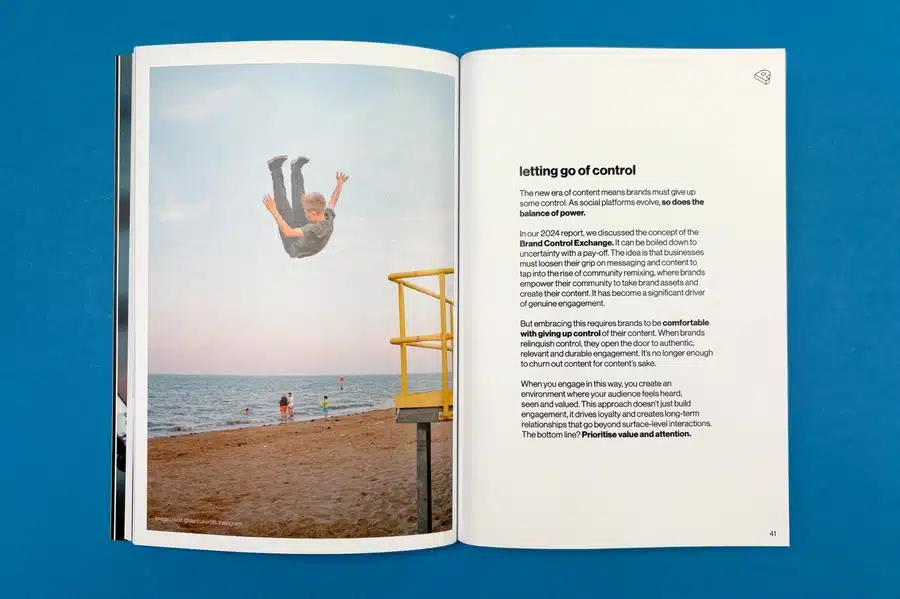
Choosing Ex Why Zed's social media pack over a traditional publisher offers several advantages for your book launch. These services provide personalised support, tools to target a specific audience, and optimum utilisation of social media features. From strategically planning your content to helping you execute your plan, this approach ensures your social media strategy aligns with your book's theme and audience preferences, offering a tailor-made solution for effective online engagement and maximising book sales.
For more information on how Ex Why Zed can help with your book launch, contact us at info@exwhyzed.com.
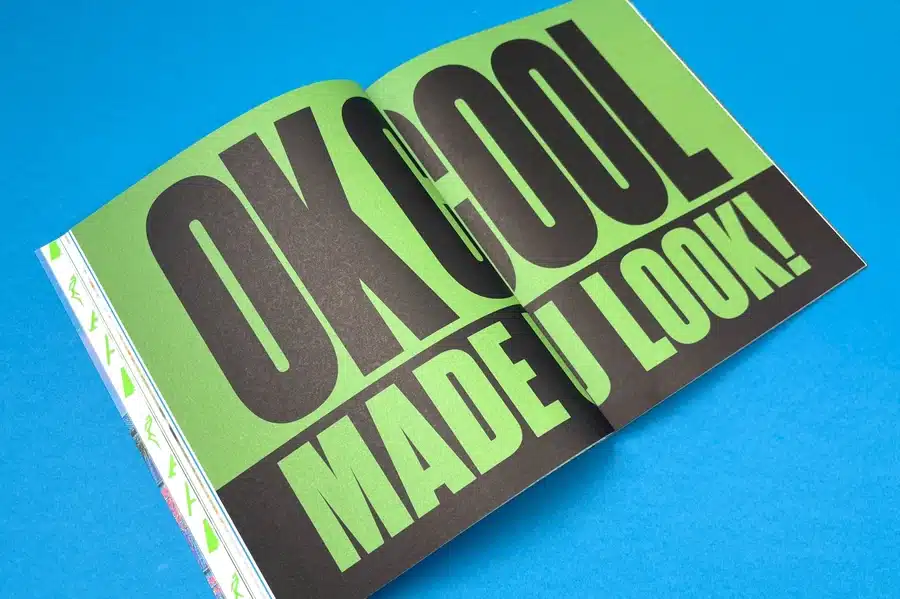
Leveraging social media marketing is crucial for a successful book launch. With careful planning, targeted strategies, and active engagement, authors can expand their reach, engage potential readers, increase book sales, and enhance their online presence. It's essential to focus on the entire book release process, from pre-launch excitement to post-launch momentum. Authors should also be cautious of common social media mistakes. The key is to be prepared, adaptive, and attentive to the audience.
Advertising your book involves creating engaging promotional content, using relevant hashtags, conducting book giveaways, organising virtual author interactions, and collaborating with influencers. Paid advertising on platforms like Facebook and Instagram can extend your book’s reach.
Launching a book on Instagram involves sharing visually appealing posts such as countdowns, book cover reveals, author Q&As, live readings, and interactive IG stories. Hashtags and collaborations with influencers can amplify your book promotion.
Identify popular, relevant hashtags related to your genre and trends. Create a unique hashtag for your campaign and encourage readers to use it.
Craft attractive posts with your book cover, a catchy synopsis, and a teaser video. Schedule these announcements to maintain engagement until the release.
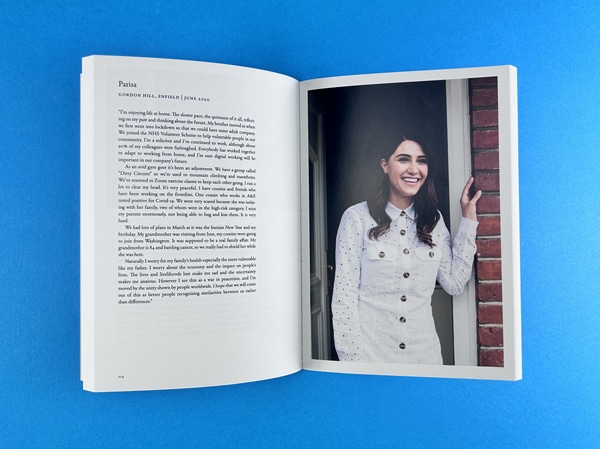
Pre-launch strategies include teasers, author interviews, and giveaways. Post-launch strategies focus on reader reviews, book release updates, and staying active on your author's website and social media profiles.
If you're exploring print for the first time, chances are you've come across both zines and magazines. Or maybe you're wondering if there's even a real difference. On the surface, they both involve pages, covers, and content. But dig deeper, and you'll find two entirely different publishing worlds.
Whether you’re a creator looking to express raw, personal ideas or a brand aiming for polished storytelling, understanding the core differences can help you choose the correct format. A zine movement is grassroots—think DIY, passion-driven, and unconcerned with mass appeal. A magazine, meanwhile, is built for scale and structure, often crafted for a specific audience with curated visuals and a professional finish.
Understanding their differences isn’t just about the words—it’s about aligning your format with your message, audience, and goals. Let’s break down the essentials of zines and magazines so you can make an informed, intentional choice.
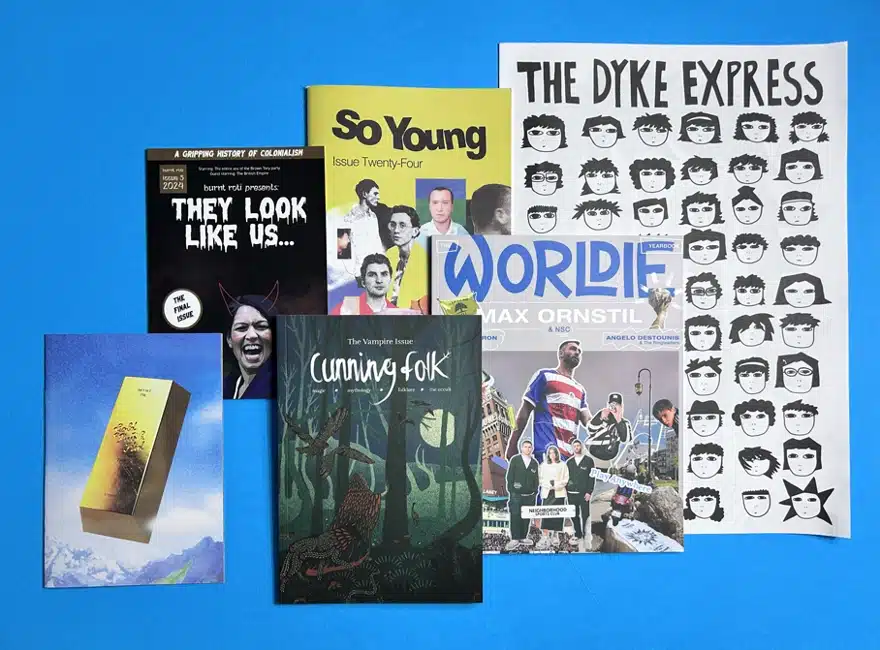
A zine is a self-published, small-batch booklet that thrives on raw creativity and zero rules.
It serves as:
You don’t need a publishing deal or design degree—just a voice and something to say.
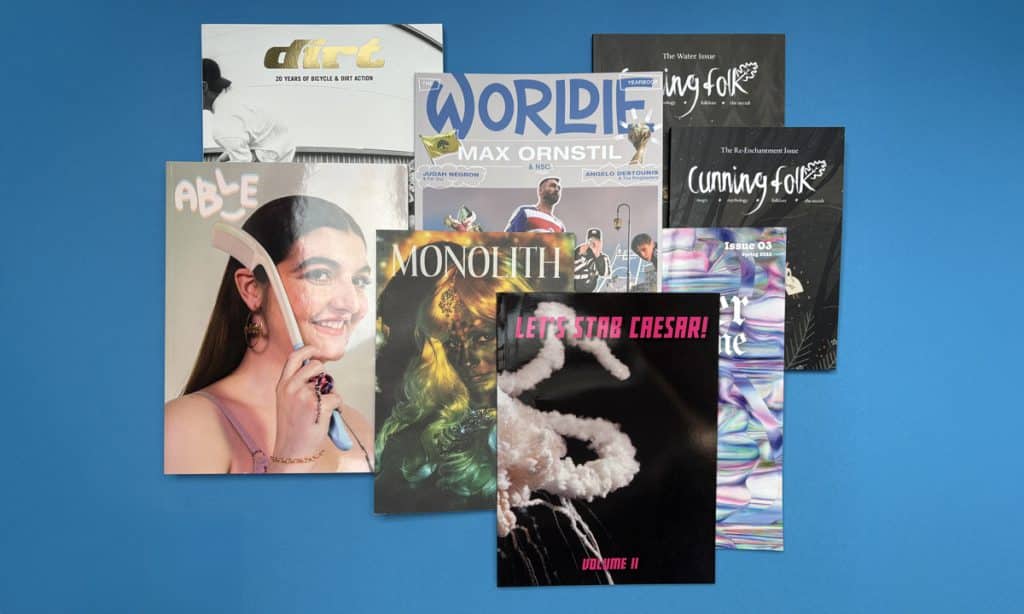
Magazines are professionally crafted publications that follow a weekly, monthly, or quarterly schedule.
It offers:
Whether in print or digital format, magazines aim to deliver consistent, high-quality content that aligns with both their brand identity and their audience’s expectations.
If you are wondering about the difference between zines and magazines, refer to the table below for a clear explanation:
Aspect | Magazines | Zines |
|---|---|---|
Publication Type | Professionally crafted, often by companies | Self-published, DIY booklets by individuals or small groups |
Content | Curated articles, ads, and interviews | Niche topics, personal expression |
Profit-Driven | Driven by profit and advertisers | Not profit-driven, full creative freedom |
Visual Aesthetic | High-quality, polished layouts | Raw, collage-style reflecting grassroots spirit |
Digital Formats | Available in print and digital | Digital zines exist, maintaining authenticity |
Whether you’re crafting a personal zine or publishing a polished magazine, ExWhyZed offers flexible, affordable printing tailored to your project. With low minimum orders, vibrant color output, and a range of paper and binding options, we make it easy to bring your vision to life. You can count on us for reliable, high-quality prints—every time. You can request a quote today!
Zines are for anyone with something to say—raw, honest, and unfiltered. Whether it’s sharing poetry, art, personal stories, or speaking out on social issues, zines give creators complete control, with no deadlines or rules. You make one when you’re moved to speak.
From the punk scenes of the '70s to today’s digital collectives, zines have always been about connecting with like-minded folks.
You’ll find them in coffee shops, indie bookstores, zine festivals, and now all over the internet—wherever there's a need for honest, creative expression outside the mainstream.
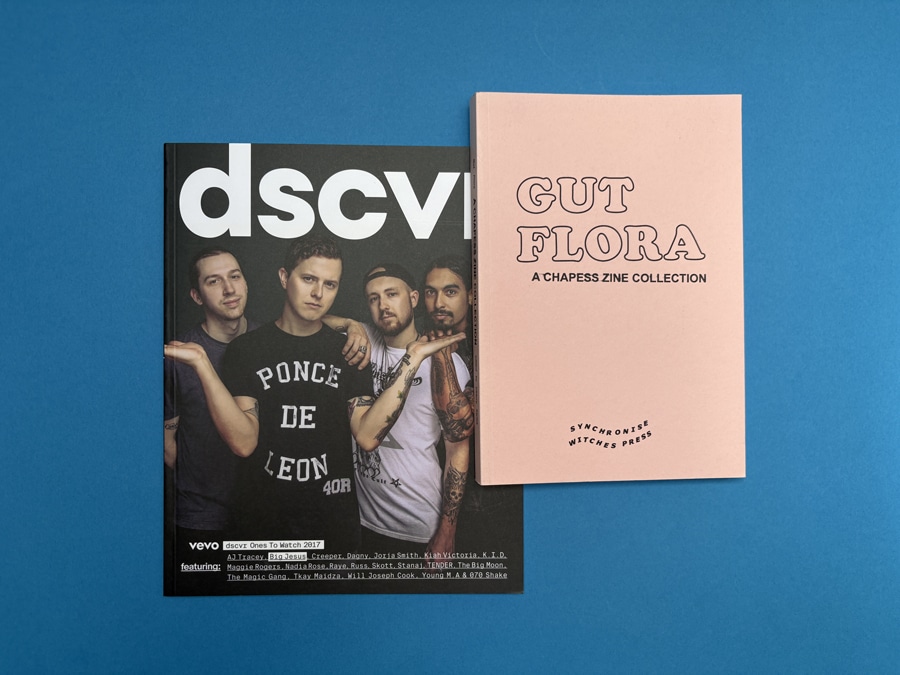
Zines trace their roots to the amateur press movement of the late 19th and early 20th centuries. In the late 1920s, Black creators used ‘little magazines’ like Fire!! During the Harlem Renaissance, African Americans expressed themselves freely.
In the 1930s, science fiction fans began creating ‘first science fiction fanzines,' inspired by publications like Amazing Stories. The 1980s punk rock scene saw zines thrive as a DIY outlet for music, commentary, and news.
With the rise of the internet, zines transitioned from underground to global, staying true to their independent, self-expression roots while connecting communities worldwide.
Zines aren’t just small magazines—they’re raw, personal expressions of ideas often overlooked by mainstream media and current events, created in a variety of formats. Created by individuals or small groups, they offer a significant role as small press publications and a powerful medium for voices from marginalized communities, artists, activists, and anyone with alternative viewpoints or a story to tell.
From politics and punk music to mental health and identity, zines reflect honesty and creativity without filters. Personal or perzines dive into everyday struggles, offering solidarity through shared experiences. Even in a digital world, zines' handmade, tactile quality adds intimacy.
Whether exchanged at fairs or shared online, zines remain essential tools for expression, connection, and the exchange of ideas in cultural resistance.
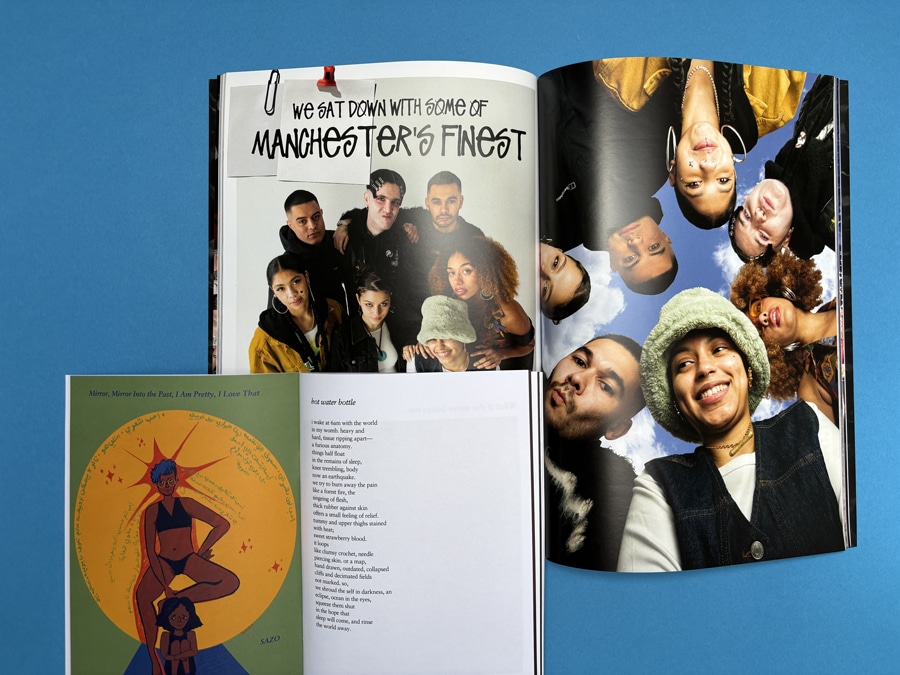
Digital zines carry forward the DIY spirit in a virtual format. Accessible, eco-friendly, and easily shared, they break geographical boundaries while preserving traditional zines' raw, personal nature.
With interactive elements like visuals, text, and motion, they offer a unique reading experience. Though the medium has shifted, the mission remains—to amplify unheard voices, spark dialogue, and build communities through creativity and authenticity.
Zines are as much about visuals as they are about words. From collages and comics to sketches and mixed media, they turn each page into a canvas for self-expression. Visual storytelling adds depth, setting mood, amplifying emotion, and often speaking louder than text.
Whether raw black-and-white art echoing punk roots or bold illustrations tackling social issues, zines use visuals to challenge, connect, and inspire.
Digital formats take this further, allowing creators to layer in GIFs, videos, and animation, expanding the zine’s power to tell bold, immersive stories that spark thought and invite dialogue.
Creating a zine is a personal and artistic journey. Start by choosing a theme—anything from personal stories to social issues or art. Then, consider the color palette, font, and layout.
Colors set the mood. Bold tones grab attention, black and white give a raw, retro edge, and soft pastels create a calm, reflective vibe. A consistent palette throughout enhances visual flow and keeps your message clear.
Fonts shape your zine’s tone. Pick ones that match your theme—quirky for fun, serif for traditional, and sans serif for modern. Ensure readability, and use size or style to show hierarchy (like titles vs. body text).
Your layout directs the reader’s experience. Short zines often use single-page designs, while longer stories benefit from multi-page spreads that allow text and visuals to breathe. You can also mix formats for variety, keeping the zine dynamic and engaging throughout.
At ExWhyZed, we understand that zines and magazines serve different creative goals—zines are raw, personal, and expressive, while magazines are polished, structured, and commercial. We offer flexible, high-quality printing solutions to match both styles.
Our HP Indigo press ensures vibrant, professional results whether you're producing 10 zines or 700 magazines. We help bring your vision to life from paper options to binding choices. And with expert support via email, phone, or live chat, you're never printing alone. Contact us now!
Zines have always been more than a medium; they are a testament to the power of independent thought and creative defiance, especially in recent years. Born out of rebellion, the punk rock movement and the riot grrrl movement have influenced punk zines, including notable examples like Rolling Stone, which continue to thrive as a raw, unfiltered platform for alternative culture and those whose voices may otherwise be silenced.
Whether crafted with paper and ink or designed digitally, zines defy convention, challenge norms, and create spaces for connection and community. Today, they are an unapologetic reflection of culture's rich history and most pressing issues—empowering creators to share their truths and spark conversation.
The zine spirit, grounded in authenticity and resistance, remains an ever-evolving force in both the analog and digital world.
While a 'zine' is derived from 'magazine', the two are significantly different. Unlike traditional magazines produced by publishing companies on a regular schedule, a zine often takes shape in an individual's hands or a small group of zine creators, published whenever the creator has something to share.
Making a zine is a creative journey that begins with an idea, often inspired by personal experiences and the rise of art, realized through a mix of text and visuals. You can use simple resources like a pen, paper, and scissors, or leverage digital tools for a polished finish, and share the finished product on social media. Free expression defines zines, promising much room for experimentation.
Digital and printed zines have each carved their niche. Digital zines cater to the rising online readership in the digital age and have more considerable distribution capabilities, but they do miss out on the tactile experience of printed zines. Nevertheless, both formats carry equal potential to convey impactful narratives.
Zines are typically self-published using DIY methods like photocopying or home printing, favoring small batches and creative freedom, including elements like graphic design. Conversely, magazines undergo professional production with professional quality and higher print quality, standardized layouts, and large-scale distribution.
Zines cater to niche audiences that resonate with their specific themes, issues, or movements. They often serve as community builders, and the Long Beach Zine Fest promotes community building among like-minded enthusiasts. On the other hand, magazines target broader audience bases, modeling their content and design to appeal to a broad spectrum of consumer interests.
We know your time is precious but when you come to prepare your artwork definitely take 5 minutes to read through our step by step file set up pages. The illustrated guides make the process super easy and will answer 99% of the questions you may have.
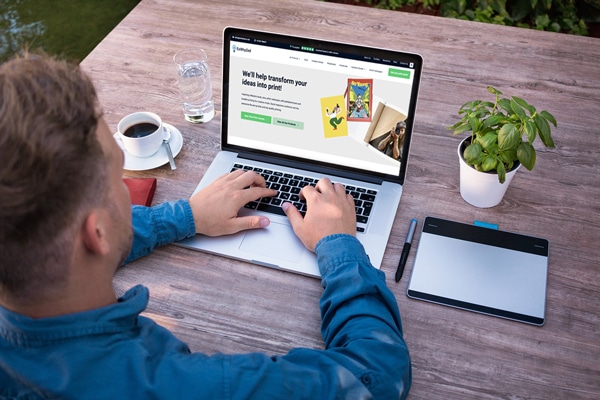
One for the cover spreads, one for the inside pages. Easy.
The cover file will be two pages and will be your outer and inner cover spreads. To make things super easy we have a video tutorial and downloadable templates here.
Have a watch of this video then carry on down this page once you have prepared the cover spreads.
Your perfect bound cover PDF has 2 pages:
Page 1 is the outer cover spread with the back cover on the left, the correct spine size through the middle and the front cover on the right.
Page 2 is the inside front cover on the left, a blank area through the middle for the width of the spine (this is where we bind on your inside pages so ideally this area will be left white). The inside back cover is on the right.
The inside pages are a lot easier and are one file supplied as single pages in reading order. The first page of this file is the first right hand page of your book. The running order of your book is: front cover, inside front cover then the first right hand page.
It might be easier to design your work as spreads, so when you come to export it from InDesign to pdf, choose Pages and InDesign will work it's magic.

We do need 3mm bleed on the edges of your pages. When you come to prepare your artwork for print and before you send it to us, watch this video which shows how to add bleed and why we need it. We won't go to print without the bleed so adding it from the start saves time.
Your export settings in Adobe InDesign should look like this.
Three things to notice:
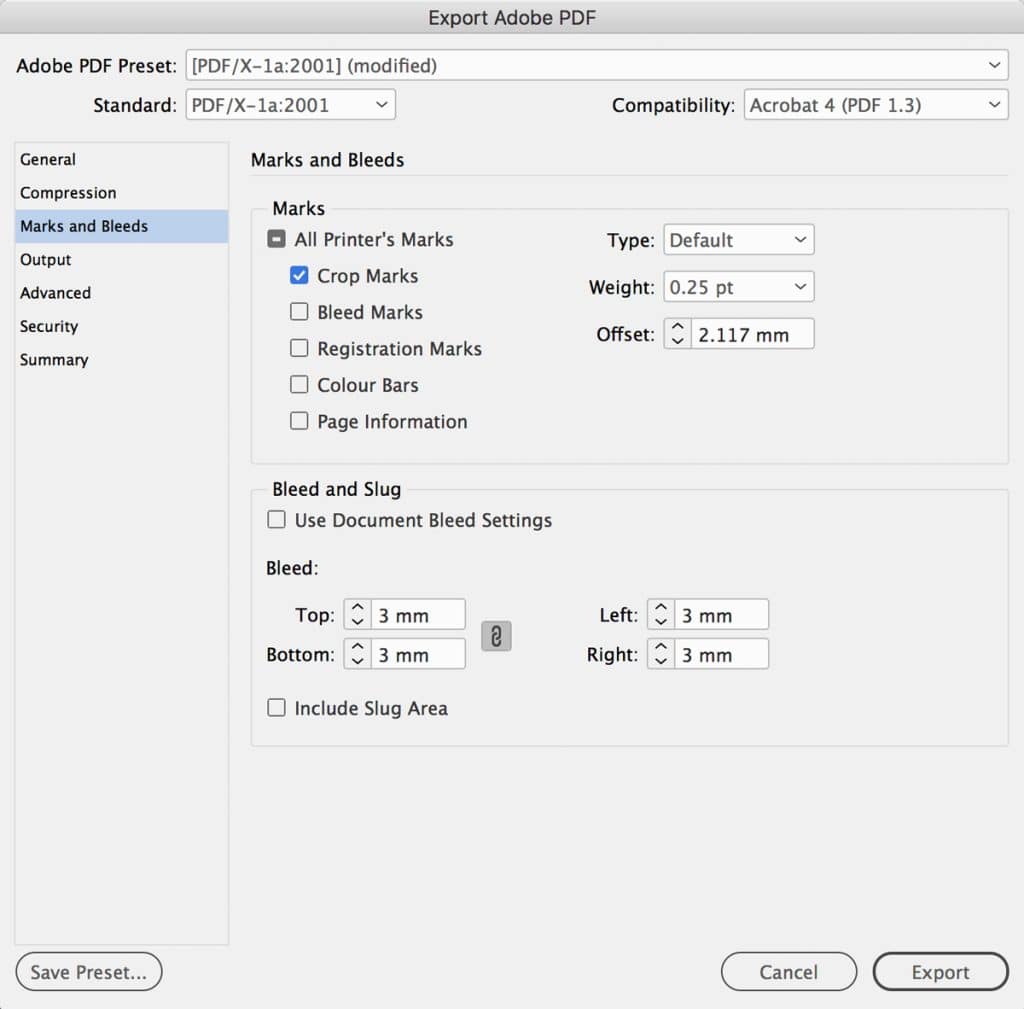
Ideally, your file will be saved as PDFx1a:2001 when exported. If this is not available, do just choose the best quality output possible. You can select this from the top drop-down menu when you export to PDF.
[We just need a PDF so use your personal favourite design program]
All of our website's guides on file set-up are for Adobe InDesign which you can get on a one-week free trial. However, as long as you can export your finished work to a high res pdf, do feel free to use your favourite program. Other options are Affinity Publisher, Quark Express, Illustrator, and even Word or Publisher. The same principles and guides still apply when preparing your layout. Canva is a possibility too but is primarily for digital design that will be used on website and on screen, rather than in print.
So, you don't need to have InDesign to send work to print with us, as long as you can send us a high quality pdf then we can print for you. The export setting will be different depending on which program to use but always choose 'High Quality' or 'Maximum' to ensure the work is crisp and in focus when printed.
If you are an Art Student then learning InDesign now will add an extra string to your bow and additional asset on you C.V for when you go to find a job after Uni.
If you cannot set up your artwork, do ask. We have a wealth of print knowledge and if it is a simple fix to make your files print ready, we will do our best to help.
If you have never printed anything before and this all sounds like a foreign language, don’t worry, remember we are here to help on email, phone and live chat. If it is out of office hours then all of the answers are all in the Resource section on our website too.
Are you feeling overwhelmed by the constantly changing landscape of the book publishing industry? As a writer, it can be frustrating to navigate through the evolving trends and shifts influenced by the world of self-publishing, cultural changes, and economic factors.
This blog delves into ten critical book publishing trends shaping the industry's future, from technological impacts to socio-political influences. These trends present new opportunities and challenge writers, publishers, and readers alike, offering valuable insight into the future of book publishing.
Significant trends toward sustainability are set to impact the book publishing sector by 2025. Let's discuss these top trends in detail, from the surge in self-publishing and the rise of audiobooks & ebooks to authors embracing digital marketing and growing interest in political literature.
The publishing industry is shifting towards audiobooks and ebooks, offering readers convenience and instant access to a wide range of titles. According to the Association of American Publishers, audiobooks have seen a significant rise in popularity, with sales steadily growing yearly.
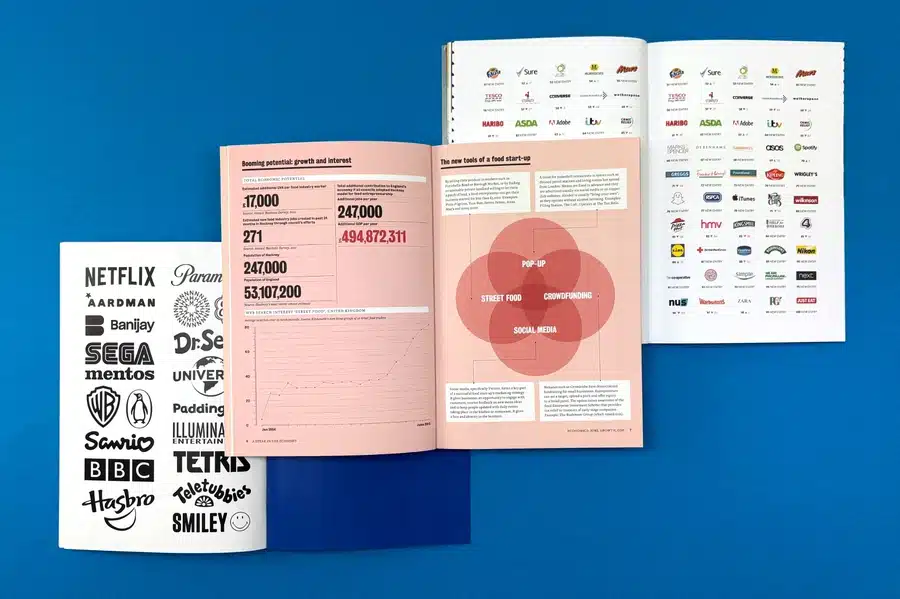
Ebooks, on the other hand, generate substantial revenue, with Amazon dominating the market. This trend has created opportunities for independent authors to quickly enter the digital publishing space. Tech advancements have further facilitated reader access to digital media from public libraries, shaping the modern publishing landscape.
An interesting trend in book publishing is the rise of platforms summarising nonfiction content. These platforms cater to our busy lives, providing quick summaries for readers who seek efficient understanding and new ways to consume information. As society values speed and efficiency, these services that simplify complex information will likely keep growing.
Also read: Self Publishing a Book in 2024 and Printing a Creative Idea.
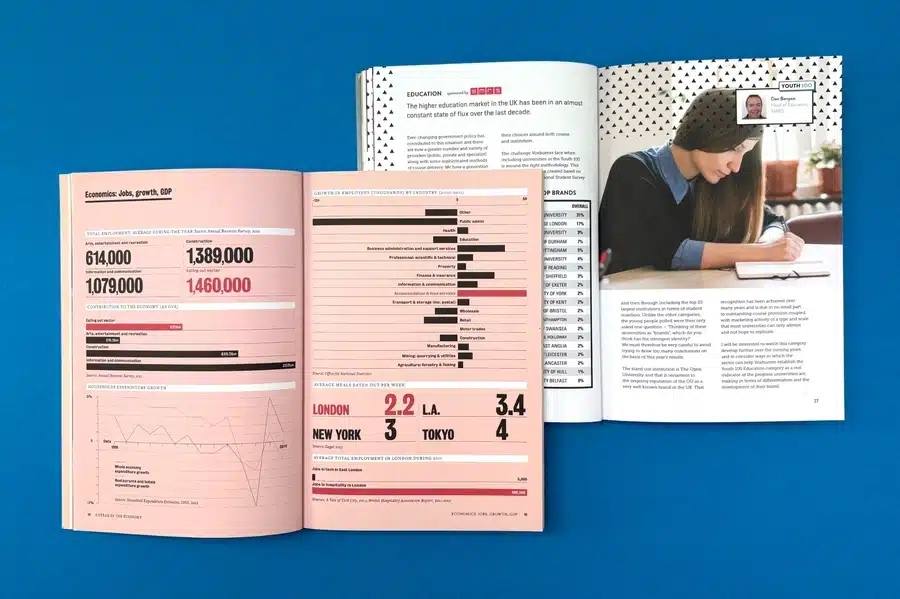
In today's polarised world, political books are highly popular. This trend is expected to continue beyond 2025 due to recent global political dynamics. Memoirs of political figures, such as Barack Obama's "A Promised Land," have seen remarkable success, with millions of copies sold. Books about polarising figures like Donald Trump also enjoy widespread popularity worldwide, including works on President Joe Biden. The sustained demand for political books reflects our collective interest in understanding the leaders shaping our societies.
Small bookstores have faced significant challenges due to the rise of online shopping and the impact of COVID-19. Many have struggled to stay afloat, but bookstores continue to find ways to adapt and generate revenue despite these difficulties. Some have embraced digital platforms, while others focus on creating unique in-store experiences. The future for small bookstores will rely on ongoing adaptation and resilience as they navigate a constantly evolving landscape.
The book publishing industry faces a significant trend: the conflict between libraries and book publishers over ebook access. Publishers have imposed restrictions on library ebook lending, limiting checkouts or licenses. This hinders libraries from serving their communities effectively. While libraries advocate for free information flow, some publishers fear profit loss. Negotiations between Amazon and the Digital Public Library of America signal ongoing industry tensions.
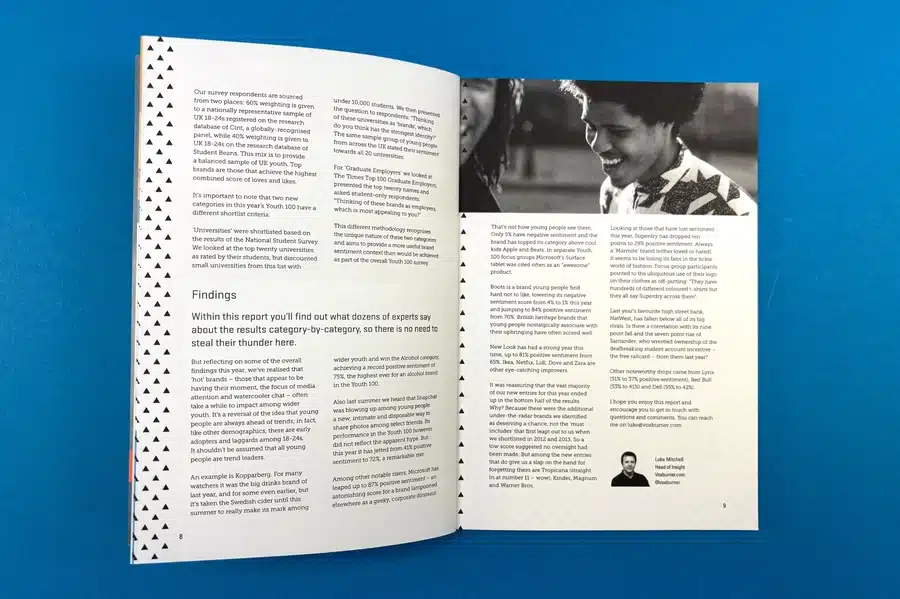
AI has transformed publishing, aiding authors in brainstorming and editing. Platforms like Grammarly and Jasper lead this shift, enhancing writer support. Looking to 2025, the ethical use of AI is crucial for a balanced human-machine creativity blend. AI streamlines content creation, improving writing accuracy and efficiency. These tools detect errors, enhance clarity, suggest topics, boosting productivity and quality.

By 2025, ethics in AI integration will be a focus of publishing. Balancing AI capabilities with human creativity is vital for authenticity and originality in literary works. This evolution ensures that technology ethically complements traditional creative processes, preserving human expression in storytelling.
Self-publishing, a growing trend, empowers authors to control their publication process through platforms like Amazon Kindle Direct Publishing. This trend is expected to continue expanding. Authors enjoy speed and control over design, editing, and pricing, catering to new and established writers seeking autonomy over their work's presentation and marketing. Self-published books allow authors to directly share their stories with audiences, introducing new perspectives and genres.
Platforms like Amazon's ACX convert books into various formats, while Wattpad offers collaboration opportunities with traditional publishers and potential adaptations into printed books or movies. The future of self-publishing presents exciting prospects for author innovation and exploration.
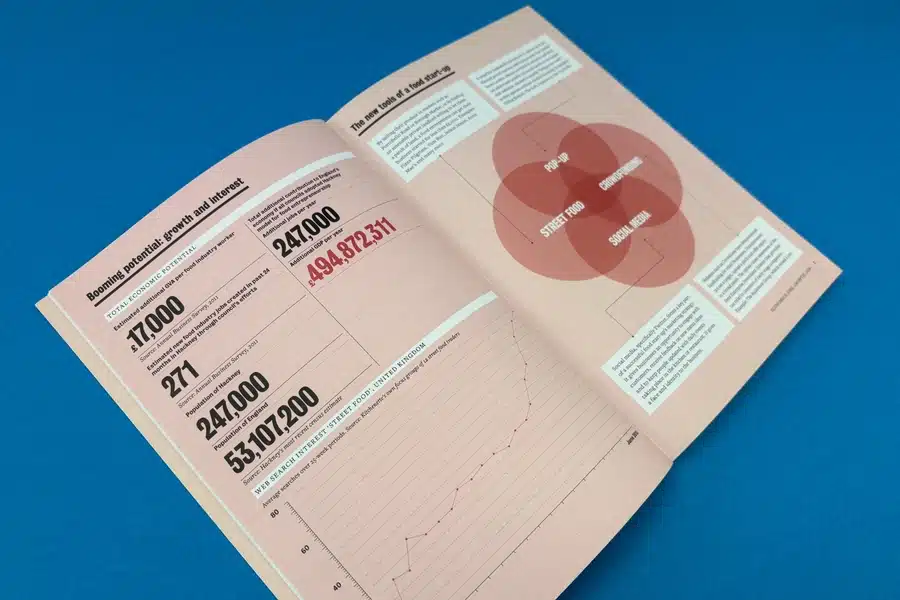
The publishing industry has experienced significant consolidation in recent years, with the 'big six' reducing to the 'big four.' This shift has raised concerns among critics about reduced competition for manuscripts and more challenging contract negotiations for authors. Calls for intervention have been made in Canada, the UK, and the US, but no concrete legislation has been passed yet. Watching how this trend unfolds and affects authors and the book market will be intriguing as we approach 2025.
Independent publishers like Ex Why Zed are gaining ground despite industry consolidation, taking bold risks with unique genres and emerging authors. These indie publishers champion diversity in literature, offering a broader range of perspectives. As we head into 2025, the influence of indie publishers, including ExWhyZed, will be one to watch in the evolving publishing landscape.
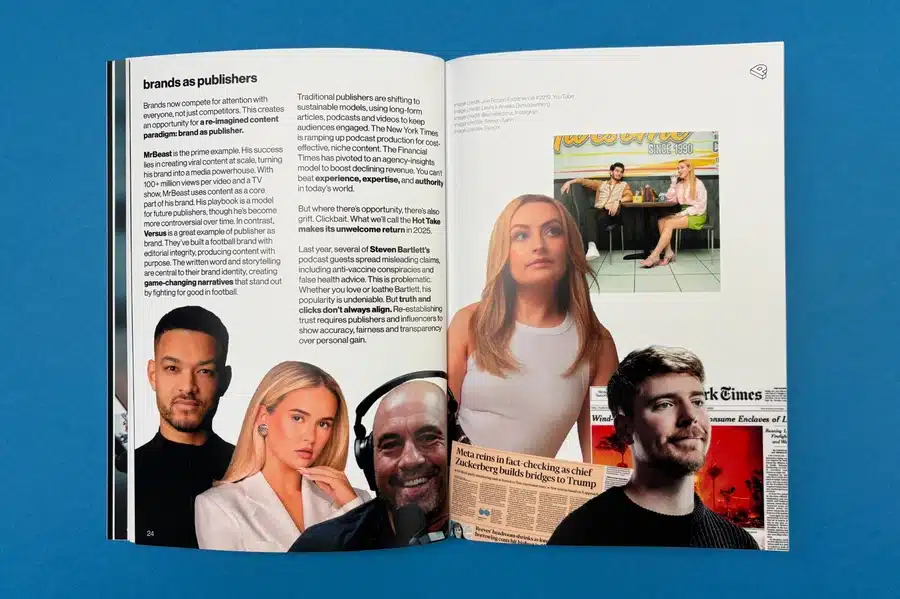
The book industry is shifting towards digital formats, with authors, especially self-published ones, focusing on online marketing and social media for effective book marketing. Email marketing is a powerful tool for engaging readers, while platforms like Facebook through #BookTok drive book promotion. AI is revolutionising marketing tasks for authors by aiding in writing blurbs and social media content. The future of publishing lies in embracing digital trends for meaningful author-reader connections in 2025.
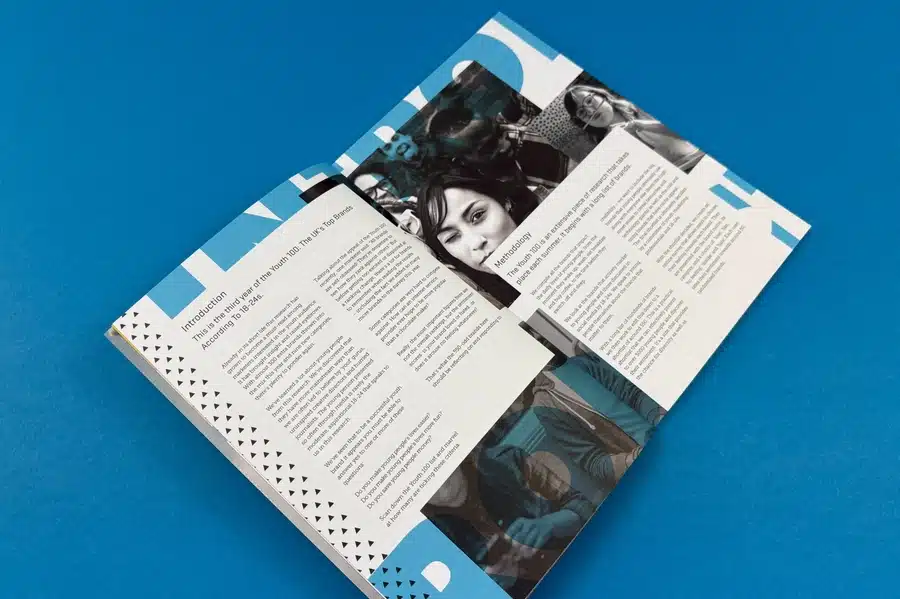
Stay ahead in the ever-evolving world of book publishing with Ex Why Zed, your trusted partner for expert insights and tailored publishing solutions. We guide authors and publishers through every stage of the publishing process—from manuscript development and design to innovative marketing strategies.
Whether launching a debut novel, exploring self-publishing, or expanding your publishing brand, Ex Why Zed helps you navigate industry trends and maximise your success. Let’s create exceptional books and shape tomorrow’s bestsellers together—Connect with Us today!
The publishing industry is undergoing a profound transformation, driven by technological advancements and societal shifts that are reshaping storytelling and placing greater emphasis on inclusivity. From the rise of digital formats to the growth of diverse voices and independent publishers, each trend adds a new chapter to this evolving narrative. As literary genres and experiences continue to diversify, writers and readers are offered new opportunities. Amidst this dynamic landscape, literature remains a powerful and unifying force. Embracing change is not just inevitable but crucial—highlighting the importance of navigating these developments to shape the future of book publishing.
New authors can break into the publishing industry by honing their writing skills, understanding their target audience, and crafting an engaging manuscript. They could opt for traditional publishing routes or consider self-publishing. Utilising digital marketing strategies is also essential to promote their work effectively.
Successful self-publishing strategies include understanding your target audience, crafting compelling content, investing in professional editing and design, utilising platforms like Amazon Kindle Direct Publishing, and leveraging email marketing and social media promotion to reach and engage readers.
Even though the demand for digital books is steadily increasing, printed books are not becoming obsolete. Many readers still prefer the tactile satisfaction of turning actual pages and building physical collections. However, according to trends, the growth rate of print book sales is slowing.
One can leverage the growth in ebooks and audiobooks by creating digital versions of their work. Self-publishing platforms or services like ACX can convert written work into formats suitable for a broader, digitally inclined audience, thereby increasing reach and potential revenue.
Are you feeling overwhelmed by the idea of creating a poetry zine? It's okay to feel intimidated by the terms "poetry" and "zine." Many beginners find the process of making their first zine challenging. But fear not; this guide is here to help break down the process into manageable steps so you can enjoy the journey.
What is A Poetry Zine?
A poetry zine can be defined as a self-published booklet that contains your original poetry. It's an excellent way to share your words, your world, and your viewpoint with others. Think of it as the mini version of a poetry book—raw, edgy, and inside; it's a collection of poems you have penned down, folded neatly between two pages of paper.
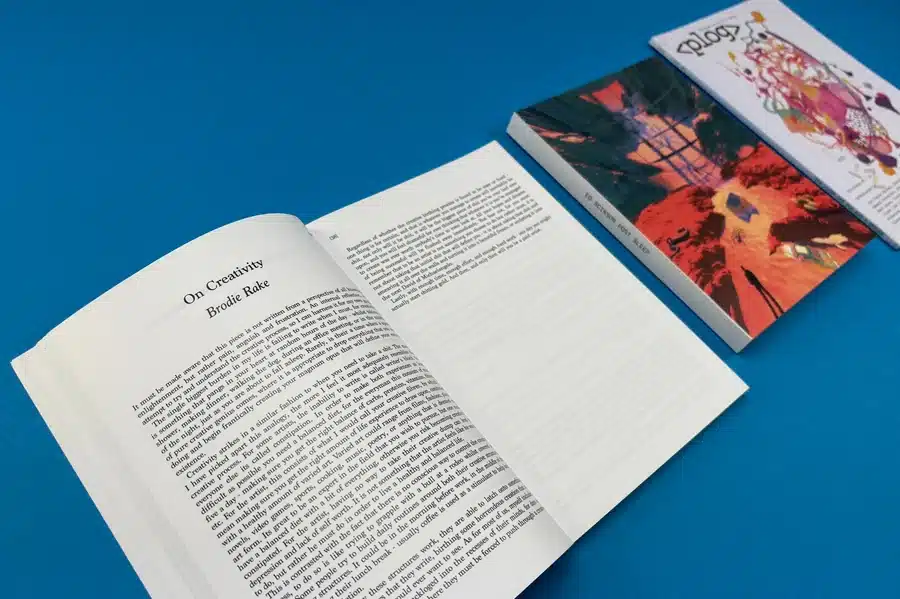
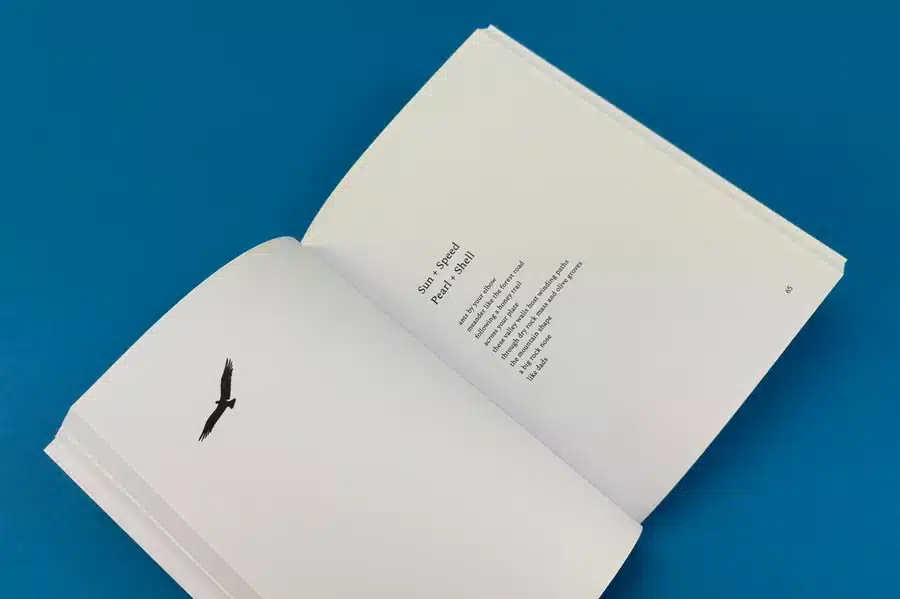
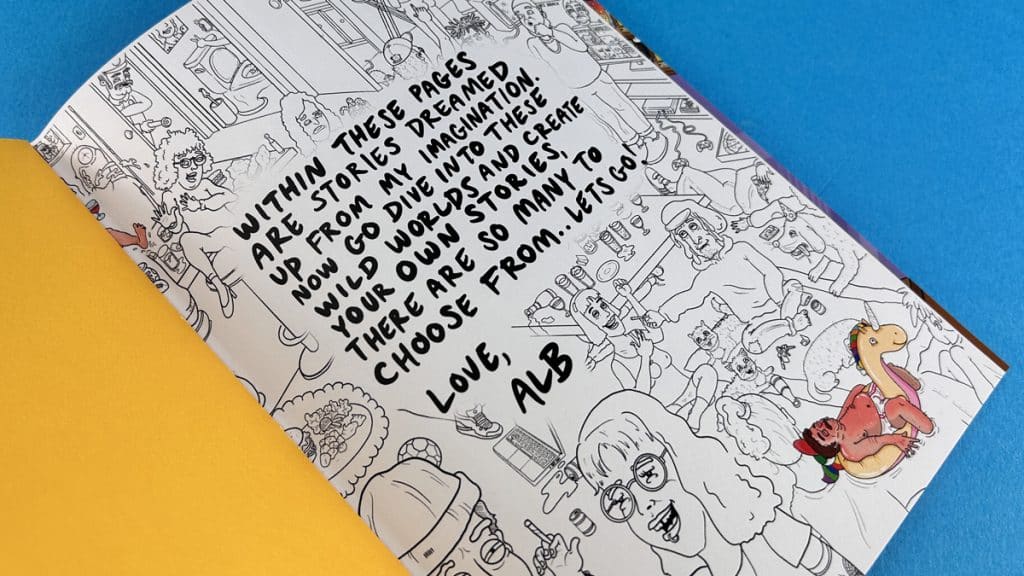
Now that you're familiar with a poetry zine, let's delve deeper into how to craft a concept for your zine. Remember, there's no definitive one-size-fits-all when creating your zine. The beauty of a zine lies in its uniqueness. So, don’t just attempt to mimic existing work; unleash your creativity and weave a story that defines you.
Creating a poetry zine involves battling the storm in your mind. Brainstorming techniques like Stream of Consciousness, Mind Mapping, and Word Clouds can generate ideas. Stream of Consciousness lets ideas flow freely without judgment. Mind Mapping involves visualising related concepts around a central theme. Word Clouds visually map out potential topics by adding related words to a central theme word.
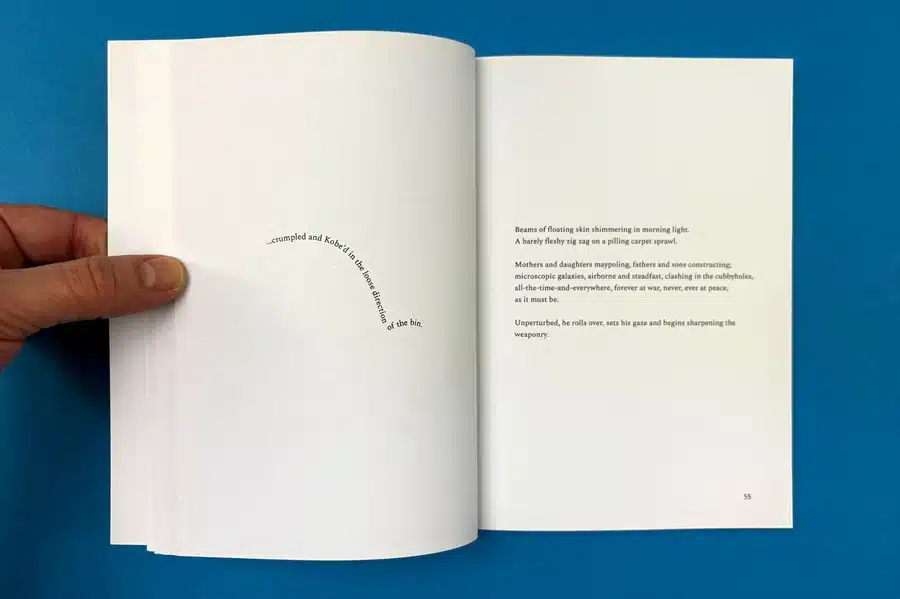
Ideas multiply like rabbits. Immerse yourself in zines to spark inspiration. Explore platforms for layout ideas. Life experiences, values, and beliefs can inspire you in this vast internet culture. From conversations to travel diaries, poetry is everywhere—you just need to find it in the mundane.
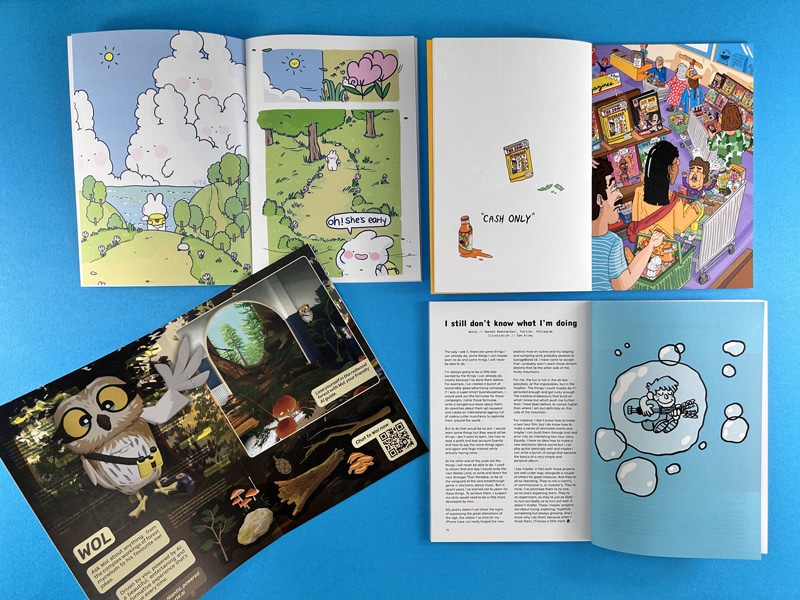
Now that you have a reservoir of ideas, it's time for the next exciting phase - designing your poetry zine. The design process involves two primary elements: visual layout and typography. Each element carries its weight and is crucial in how the final zine appears. After all, the cover of your zine is your first chance to lure the readers into the world of words enclosed within.
The layout of your zine sets the tone for your poetry, guiding the reader through your thoughts and feelings. Visual elements can enhance specific pieces and create a sensory experience. Colors and textures can echo moods, while images and patterns, including collages, add depth to each page, forming unique narratives. Use brainstorming techniques to gather visual content, bringing your mood board to life within your zines.
While the visuals catch your reader's eye, the choice of typography guides them through the pages. A careful selection of fonts not only defines the aesthetic of your zine but also enhances the readability. Choosing the right typeface strengthens the emotion of the words, lending weight to your voice. Variable fonts are great for adding dynamism across the pages of your zine, each waiting to be flipped over to reveal a new page full of surprises. However, remember that legibility should always be prioritised over decorative forms.
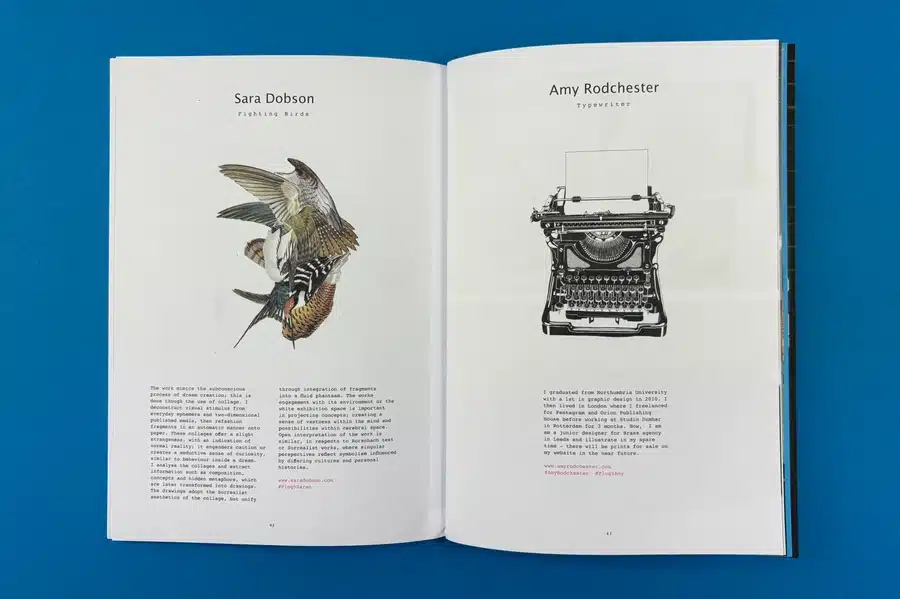
Once the layout and typography of your poetry zine are decided, it's time to select the special verses that you want to share with the world. The process involves picking up your best poems and determining their order in the zine to ensure a harmonious flow.
Selecting poems for your zine calls for intuition and thought. Pick poems that align with your zine's theme and illustrations. Include poems like haikus, sonnets, and free verse to showcase your literary style. Aim for a diverse yet cohesive collection where each poem amplifies your zine's voice. Let every page reflect your poetic essence!
Every zine is a journey guided by you, the arranger. Organising poems thematically adds depth, creating an immersive experience for readers. Arrange poems sequentially to tell a story or based on contrasts/similarities. Each poem should complement the next for a seamless flow of emotions and thoughts on your zine's pages.
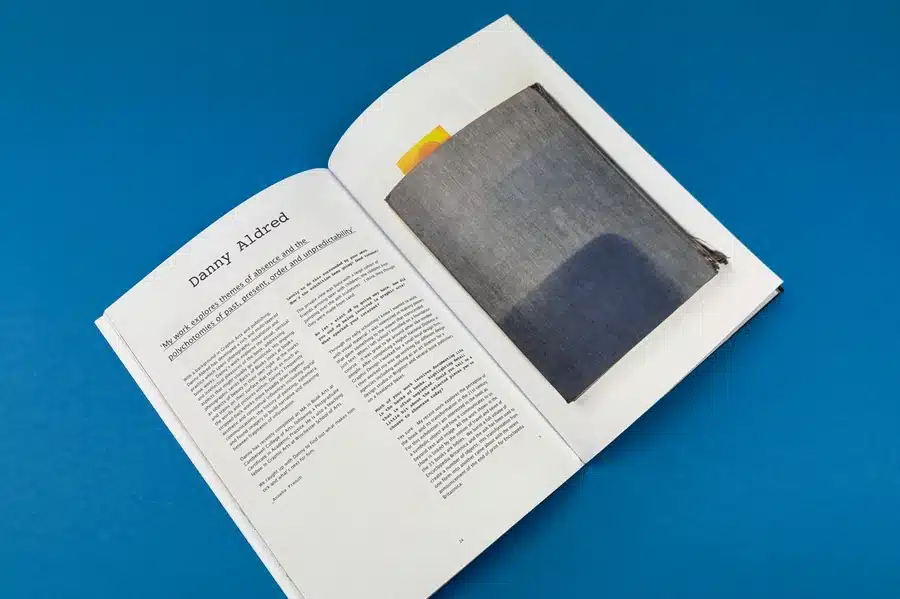
Now that the design and organisation are set, it's time to bring your zine to life. This phase involves decisions on printing, folding, and binding techniques, particularly regarding the content of your zine. It's crucial as it turns your selected words into a tangible piece of art - the poetry zine.
When printing your poetry zine, consider these options: Home Printer: Convenient but limited to A4 size. Costs can increase based on ink and paper type. Photocopier: Ideal for bulk quantities, cost-effective per copy, but requires manual assembly. Online Printers: Offers various sizes, paper types, and binding choices. More expensive for small quantities. Choose a printing option that suits your budget, output needs, and convenience.
After printing, binding your zine is an exciting task that affects its feel and appearance. Contrary to common belief, binding shouldn't be complex or professional-looking. The most common and affordable method is saddle stitching or stapling along the crease of the fold. For a fancier option, consider Japanese or Coptic stitching, which may require extra tools and skills. A regular 'half-fold' style is the simplest and most popular choice for folding.
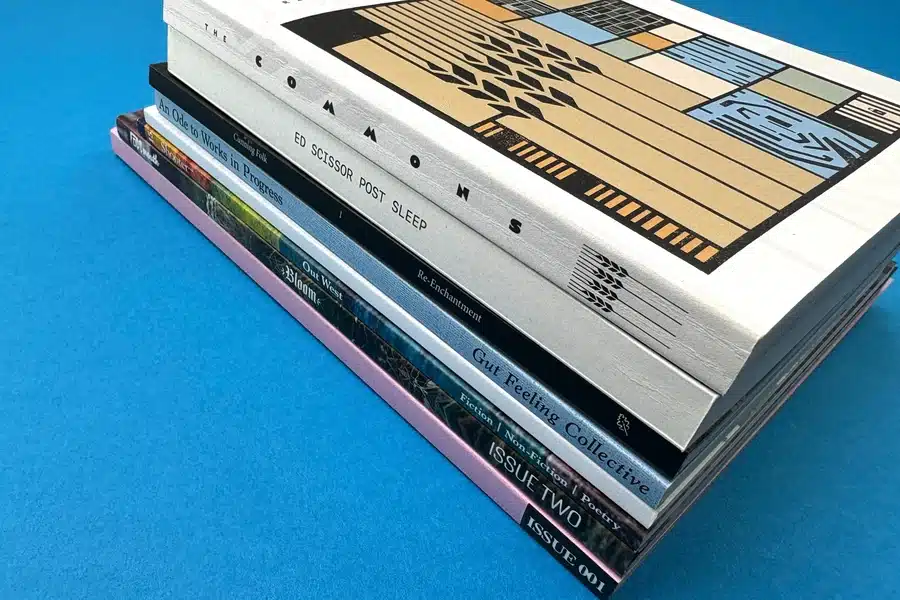
Social media platforms are essential for promoting creative work. Key platforms for promoting your poetry zine include Instagram, where you can showcase your zine visually; Facebook for discussions, live readings, and workshops; and Twitter for engaging with literary conversations and sharing excerpts. Use relevant hashtags to boost visibility and engage with your audience to cultivate avid readers.
Offline promotion is crucial for promoting your poetry zine. Partnering with local bookstores and participating in literature events can help you reach a wider audience interested in literature. Engage with like-minded individuals, receive feedback, and be part of a supportive literary community.
Ready to make your poetry zine stand out? Partner with Ex Why Zed today and bring your creative vision to life!
If you are seriously dedicated to proliferating your zines, self-publishing platforms are a brilliant avenue. With multiple print-on-demand services available now, self-publishing your zine can help you reach a global audience without investing exorbitantly upfront. From selecting the paper quality and typeface to deciding the selling price, you have complete control over how your zine is presented and sold.
Ex Why Zed empowers poets and creators through beautifully printed indie poetry zines. We offer expert guidance from design to print, ensuring each project reflects the creator's vision. With diverse printing options and collaborations with platforms like Popshot, we cater to new and established artists. Explore our services and kickstart your self-publishing journey today. Contact us at hello@exwhyzed.com or call +44 1206 766647 for inquiries or to order your paper sample pack.
Creating a poetry zine is not just about compiling poems; it is a creative endeavour that allows you to express your deepest emotions and thoughts. Crafting a poetry zine involves much more than just writing - from conceptualising themes to designing layouts, each step offers a unique learning experience and a sense of fulfilment. By embarking on this journey, you can establish a profound connection with your readers as you share your inner poet. Embrace your creativity, let your imagination run wild, and begin the exciting process of creating your very first poetry zine today!
If the Forest Could Speak, It Would Look Like This
Charlotte Bellamy’s If The Woods Whispered is a poetic-photographic symphony, where design, print, and emotion converge. With 150gsm uncoated pages echoing the natural world and a silk-laminated cover that softens the visuals, this 180-page piece showcases how material choices can deepen narrative tone. The collaboration nailed every detail—right down to spine width. Designers take note: let content breathe, proof meticulously, and always match your materials to the mood. This project is a blueprint in turning artful intent into a tactile, emotionally resonant book. Read the full story.
A Love Letter to the Unfinished
An Ode to Works in Progress celebrates imperfection with clarity and care. Gut Feeling Collective’s debut poetry book combines a monochrome aesthetic with silk-stock tactility and a bold, minimalist cover. Every element—from justified inner text to a precisely aligned spine—serves the evolving narrative. When last-minute tweaks came in, Ex Why Zed adapted with ease, ensuring the book stayed true to its message. For self-publishers: simplicity isn’t basic—it’s bold. Spine cohesion, tactile finish, and design restraint are your allies. Discover the full case study.
Small Format, Big Impact
Buoy Press’s Poetry Will Have To Do proves that compact design can carry emotional weight. At just 180x100mm, this collection feels intimate—like a secret passed between hands. Printed entirely in black on 100gsm Evolution Uncoated, with a tactile 300gsm cover, the book pairs eco-conscious material with thoughtful layout. Perfect binding enhances durability, while carefully chosen typography lets the words breathe. The seamless reprint process highlights how strong client-printer rapport leads to flawless execution. For indie poets: size can be a statement, and uncoated stocks deliver unmatched warmth. Explore the full Buoy Press journey.
How to Self-Publish a Poetry Book—The Smart Way
This guide distills everything a modern poet needs to self-publish with impact—from shaping your manuscript to designing a standout cover and choosing the right format. It dives deep into practicalities like editing costs, ISBNs, and print options (POD vs. offset), while delivering pro-level insights: use uncoated paper for warmth, don’t cram poems onto pages, and treat your layout like a stage for each piece. Ideal for first-timers and seasoned poets alike, it’s a blueprint for building a book that looks and feels as powerful as your words.
Your No-Fuss Guide to Poetry in Print
Forget the gatekeepers—this hands-on guide empowers you to turn raw poems into a bound poetry zine that’s bursting with personality. From idea-storming and mood boards to layout finesse and bold binding choices, it shows how to shape your style into something tangible. Top takeaways? Keep typography readable but expressive, give poems room to breathe, and match your binding to your vibe. Whether you're printing a one-off zine for a poetry night or scaling up with POD, this is creative freedom at its finest.
Creating a digital poetry zine follows the same process as creating a paper zine, except the output is digital. You design, arrange, and edit your zine using software like Microsoft Word or Adobe InDesign, and then you share the finished digital file online.
Absolutely! Many poets sell their zines either online or at local events and bookstores. Remember to factor in printing and delivery costs when deciding on a selling price.
Inspiration can be found everywhere—books, music, nature, conversations, personal experiences and emotions. You can also explore existing zines on social media platforms like Instagram or online communities.

Crafting an impeccable piece of literature is half the battle won. The other half lies in presenting it to the world in the most captivating manner, and this is where the role of book cover art and design comes into play. It's often remarked, 'Don't judge a book by its cover,' but let's be candid: that's precisely what readers do initially. An eye-catching book cover acts as the facade of your literary work, tempting potential readers to delve deeper.
If you are venturing into the world of self-publishing, nailing your book cover design is more than necessary; it's essential. It's okay if you're not a wizard graphic designer; good book cover design doesn't equate to intricate designs and heavy detailing.
Often, simple yet thought-out compositions can work wonders when it comes to tempting the reader to pick up your book. This blog will guide you through several aspects of crafting a unique book cover design, so let's get started!
In the field of self-publishing, the book cover is the foremost marketing tool at one's disposal. While your literary merit will be the ultimate determining factor, the cover catalyses the reader's journey from glancing to browsing to eventually purchasing the book. Let's delve deeper into the need for book cover design in self-publishing.
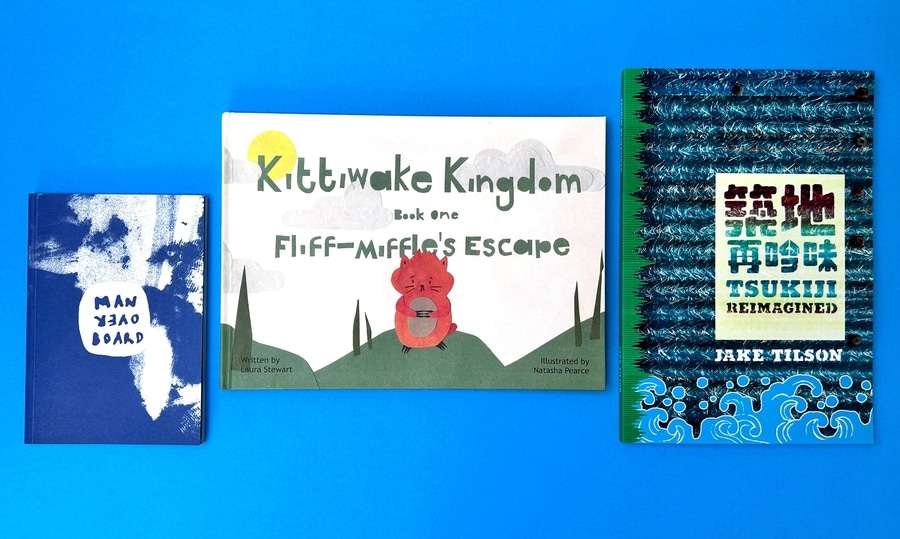
In book publishing, a captivating cover is crucial. It's the first thing readers notice, often determining whether they'll explore further or move on, even when purchasing a Kindle version on Amazon. Even a significant story risks being overlooked without an engaging cover.
Thus, investing in a well-designed cover ensures your book makes a strong first impression. It can spark curiosity and draw readers into discovering what lies beyond the cover. Remember, your book cover is your silent salesperson.
A good cover grabs attention and appeals to your target audience. Genre-specific designs—like warm tones for romance or dark, mysterious themes for thrillers—create familiarity and attract the right readers.
By reflecting on the book's theme and genre, the cover sets clear expectations for readers. It becomes essential for creating emotional connections before they even turn the first page.
Excellent book cover ideas are not just about flamboyance but involve smart integration of various key elements—each playing a significant role in setting the tone through effective lighting, shading, and the detail of your cover for your book. Let's discuss these elements in the following sections.
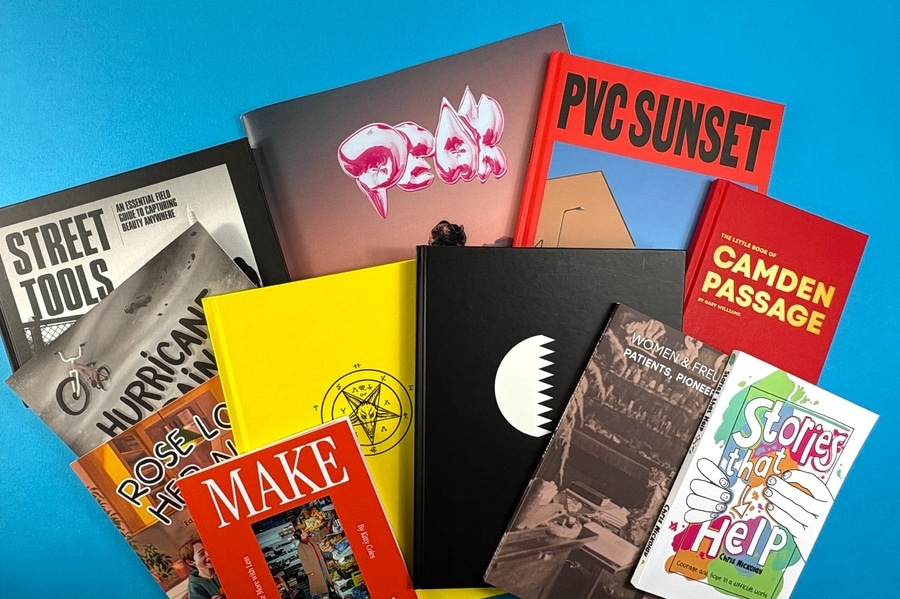
Imagery is the focal point of any book cover, whether it's a photograph, illustration, or an interesting play on unique colour. It should visually represent the essence of your book's theme or setting, even if it doesn't depict the plot directly.
For example, a high-fantasy book might showcase a mystical realm or a dragon, instantly conveying its genre. Since imagery is the first non-verbal interaction with potential readers, it must effectively capture the book's core essence.
Typography is another key aspect of a great book cover that stands out on a bookshelf. Font style, size, and colour should align with the design and genre. The book’s title, being the most prominent text, must grab attention and remain legible—even at thumbnail size for online displays.
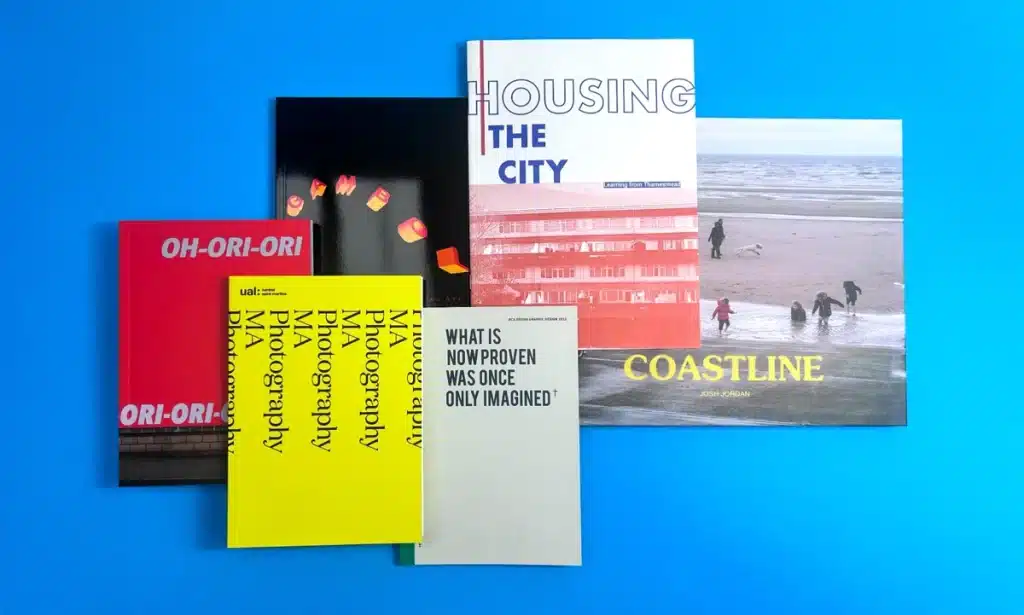
Besides, a clear text hierarchy is crucial to emphasise the title text over other details like subtitles or the author name. Choose fonts that enhance readability while matching the book's tone and style.
Colour theory plays a fundamental role in effective book cover design. The colours you choose can evoke specific emotions in your prospective readers, making them more or less inclined to learn more about your book. A thoughtful colour scheme can elicit the desired mood and help your book appeal better to the target audience.
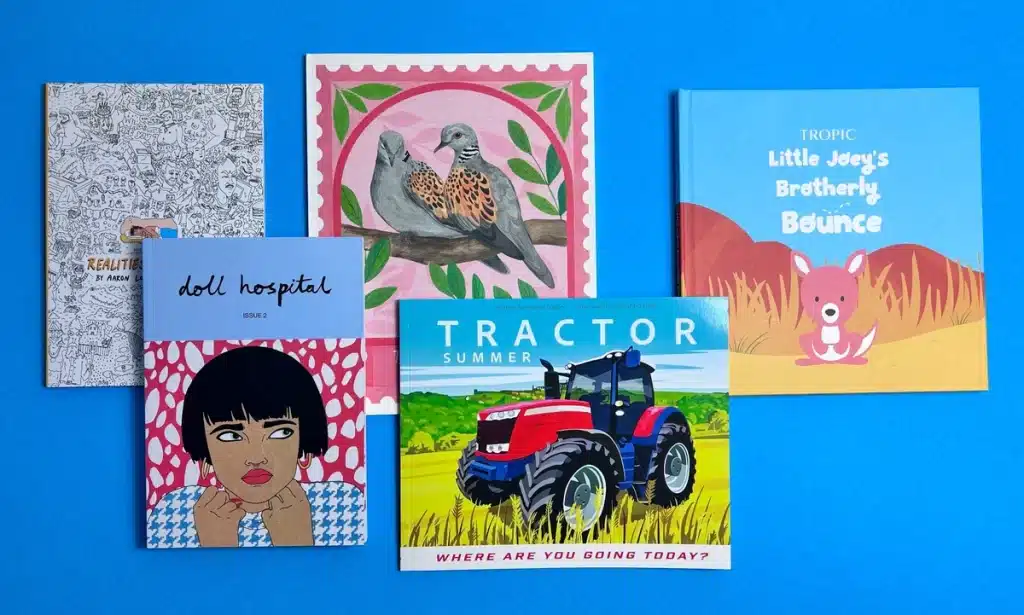
Designing your own covers requires considering the intended format—E-book, Paperback, or Hardcover. Ebooks must prioritise straightforward typography and eye-catching imagery for digital thumbnails. In contrast, paperbacks and hardcovers need additional design elements, like back and spine covers, tailored to their physical dimensions and format-specific requirements. Let's learn the differences in detail in the following sections.
Hardcovers and paperbacks differ in more than cover material. Hardcovers are sturdy, often with dust jackets, offering design options like embossing and inside flaps for a premium feel. Paperbacks are lighter, simpler to handle, and have straightforward design needs.
| Aspect | Hardcover | Paperback |
| Feel | Sturdy, high-end | Light, practical |
| Design Opportunities | Inside flaps, embossing | Cover bends easily |
| Price | More expensive | More affordable |
Ebooks are preferred for their portability and ease, requiring covers optimised for small screens, clarity in black and white, and thumbnail impact. In contrast, print books—paperbacks and hardcover books—require attention to factors like paper quality, finish, and physical dimensions, including considerations for print copies in a bookstore. Each format has unique design needs, especially when publishing in multiple formats.
| Aspect | Ebook | Print Book |
| Design Opportunities | Optimised for small screens, clarity, and thumbnail impact | Includes spine and back cover design, paper quality, and finish options |
| Price | More affordable | Hardcover: Expensive, Paperback: Affordable |
We often limit book cover design to the 'cover,' focusing only on the front. However, a holistic book design goes beyond just the front cover—it involves careful thought and artistic input on the back cover and the spine, too. Let's discuss these concepts in the below sections.
Perfect Bound Cover Design Video Guide
Illustrated guide and instructions
This page also includes a list of common spine sizes for various page numbers and paper choices.
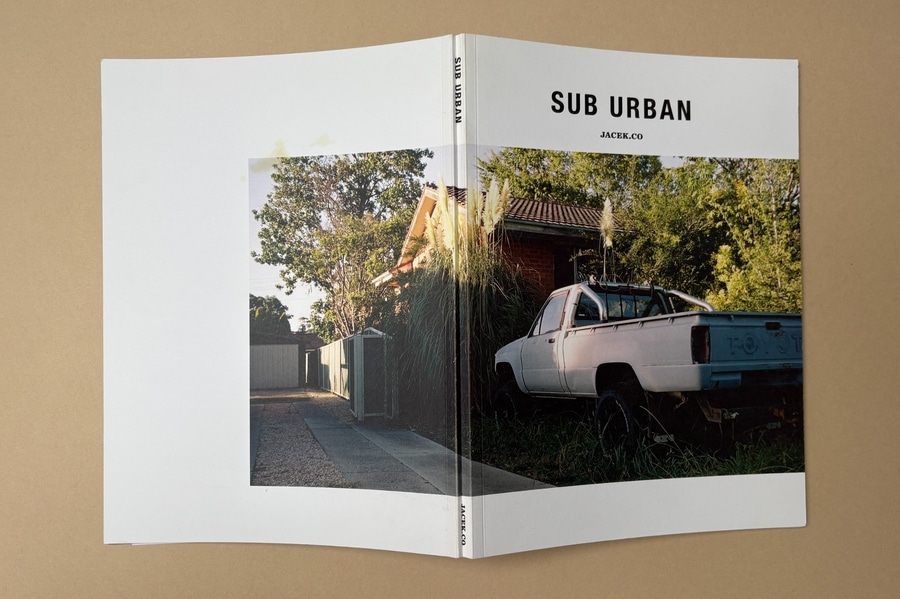
To save you a bit of time and head scratching, we have a set of downloadable templates for softback book covers. Each template has the required spine through the centre. (You will need Adobe InDesign to open it. They do offer a free one week trial).
When you export to PDF can you set the bleed to 3mm on the right and left and 10mm on the top and bottom - this way the hairlines will show on the PDF and we'll know where to fold the spine. We have locked the hairlines and white box so drop your artwork in over those.
Ultimately, we only need a PDF laid out as a spread to print the cover, so do use whichever design/layout program you are most comfortable with. We’ll give the file a good check and preflight when it arrives and will flag up any potential issues. So don’t worry if you’re not 100% sure you’ve done it correctly.
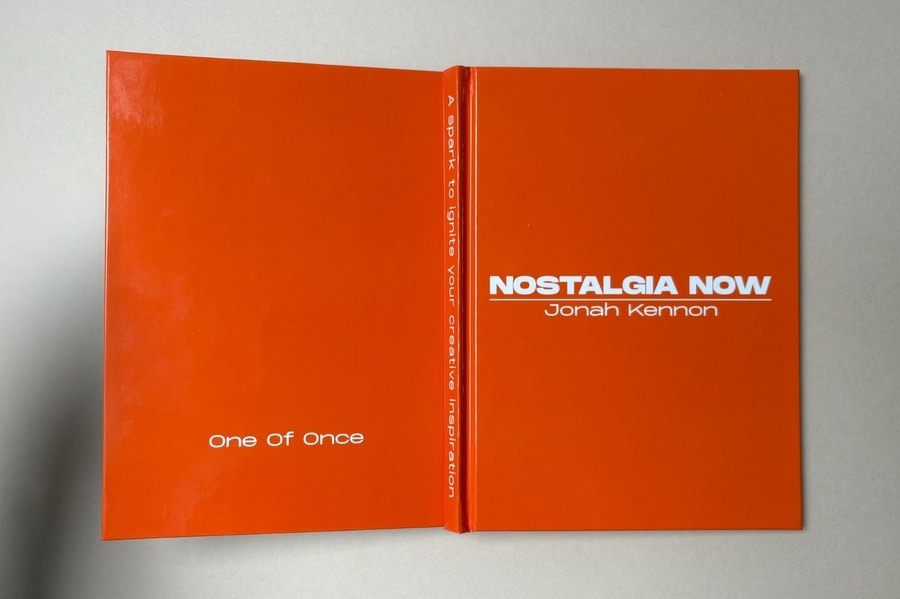
There is a slightly different process between designing the cover for a perfect bound softback book and a hardback book. The hardback book cover design requires extra 17mm flaps around the edge which are the parts of the printed cover which fold around and are glued to the inside of your hardback case. You can just about see on the image below, the 17mm of the cover which has been tucked around and glued down underneath the orange endpapers.
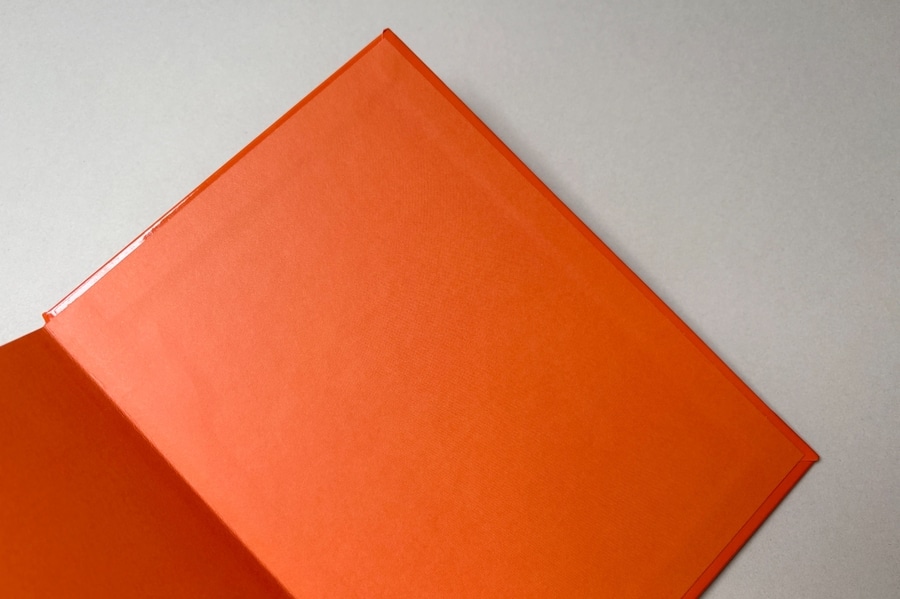
The front cover should offer a clear, intuitive glimpse into your book's content, immediately capturing the viewer's interest. It must blend compelling imagery and the two main parts of your front cover, genre-appropriate fonts, and colours that evoke the intended emotions. The goal is to create a visual narrative that intrigues potential readers, compelling them to explore the book further.
Key Considerations while designing the front cover:
The back cover provides additional details, including the book's description, author bio, and book reviews, similar to what you would find on an ebook’s description page. The layout should be organised and flow logically, starting with a brief synopsis or blurb. The goal is to smoothly guide the reader from learning about the book's story to getting to know the author.
Key Considerations while designing the back cover:
The spine width calculator is pivotal in making your book stand out when aligned with others on a shelf. It carries the book's title, the author's name, and often, the publisher's logo or imprint.
Key considerations while designing the spine are:
Your book’s font is more than just a design choice—it shapes how readers experience your words. The right typeface enhances readability, sets the tone, and ensures a professional, polished final product. Whether you're writing a gripping thriller, an insightful non-fiction book, or a whimsical children's story, selecting the perfect font is crucial for both aesthetics and accessibility.
This deep dive guide explores the best fonts for self-publishing, breaking down serif vs. sans-serif styles, genre-specific recommendations, and font-pairing strategies. You’ll learn why classics like Garamond and Baskerville work beautifully for fiction, while Helvetica and Avenir are ideal for modern non-fiction. We also cover key technical considerations, such as font size, spacing, and licensing, ensuring your book is both visually appealing and easy to read.
Whether you're opting for professional assistance or going the DIY route, learning specific book design’s top tips and trends can guide you towards creating an impactful book cover. Read on to learn these fantastic design tips and trends.
Understanding your book's genre and audience is essential for effective cover design, as it sets the appropriate dominant tone of your book. Each genre, including those with bright colours and cartoonish illustrations, has its own visual style that resonates with readers. For example, thrillers often feature darker tones and intense imagery, while romance novels use warm colours to evoke emotion.
Similarly, knowing your audience's age, tastes, and expectations helps shape the design. A young adult novel, for instance, requires a different approach than one aimed at mature readers. Focus on these elements to create a cover that appeals to your target demographic.
Avoid the temptation to cram too many elements on your cover—remember, simplicity sells. Your book's narrative may have multiple themes, characters, and settings—however, resist illustrating them all on the cover. Instead:
Whether to attempt a DIY book cover design or hire a professional designer depends on your level of comfort with design software, creative abilities, and budget. Let's check out more details on both of them.
DIY design provides a hands-on approach to your book cover design, maintaining complete control over the creative process. However, there are specific pros and cons when opting for a DIY design, which we shall discuss in the following table.
| Pros | Cons |
| Full creative control | Time-consuming |
| Cost-effective | Limited design skills may impact the output |
| Variable revision times | The learning curve for design software |
We will just need a high res PDF file to go ahead. SO do use the program you are most comfortable with laying out the artwork in. Ensure that you are happy with how everything looks on the page, then Export or Save As PDF. Easy!
We'll give the files a thorough check and preflight when they arrive and at that stage we will flag up anything that doesn't look right so you can change it before printing.
When you hire a professional designer for your book cover, you essentially invest in their expertise and experience. They deeply understand design principles, genre-based trends, and audience preferences and can seamlessly blend these factors into an appealing design. However, there are both advantages and disadvantages to hiring them, which we shall learn in the table below.
| Pros | Cons |
| Expertise in design software and tools. | It can be expensive. |
| Transforms vision into polished, high-quality cover. | It may not match your personal design style. |
| Access to premium resources. | Longer collaboration and revision time. |
| It can boost book sales and attract readers. | Doesn’t need design skills or a limited budget. |
As you decide to seek professional help, why not choose Ex Why Zed? We specialise in creating visually stunning, brand-aligned covers that genuinely reflect the essence of your book. Whether you need a simple design or a more intricate, creative approach, we ensure your cover stands out from the crowd.
Our team uses various techniques, from vibrant colour schemes to clever typography, to make your cover as captivating as your story. We also handle all your other publishing needs, so Reach out to us today to collaborate and bring your book to life!
Creating a compelling book cover is crucial in self-publishing, as it serves as the first visual impression of your story. The cover should effectively capture your book's essence through imagery, typography, and colours while aligning with your book’s genre and appealing to your target audience.
Whether you hire a professional or design it yourself, ensure the cover is a professionally designed cover that is engaging and relevant to make a substantial impact on potential readers. Your book cover is your story's first impression—make it count!
You can design a book cover for self-publishing through professional services, utilising online design platforms with customisable templates like Canva or graphic design software like Adobe InDesign or GIMP for a more hands-on approach to selling copies of your book. A great way to ensure success is by understanding your genre and audience and using sound design principles, particularly sharing your designs on Instagram to check how your followers initially interact with the designs.
The cost of hiring a professional book cover designer can vary significantly based on experience level, complexity of the design, revisions, and licensing fees for images or fonts. It can range from a few hundred to a few thousand dollars depending on how complex your brief is and how many pages there are in your book to typeset and design.
To format your book for self-publishing, use professional design software like Adobe InDesign or hire a designer. Ensure proper margins, fonts, and sizes for a polished look. Convert the file to PDF for submission. Consider hiring a professional formatter for best results.
The best approach to creating a book cover is combining a clear understanding of your book's essence, genre, and target audience with strong design principles, including the rules of design that showcase a distinct style and give readers a sneak peek of what's to come. This might involve professional help, online design tools, or learning graphic design software for a personal touch.
Various free DIY book cover design tools are available online. Canva is a popular choice, offering a plethora of templates and graphic elements. GIMP offers advanced photo editing, while Adobe Spark and Microsoft Word are other accessible options providing customisations in design templates.
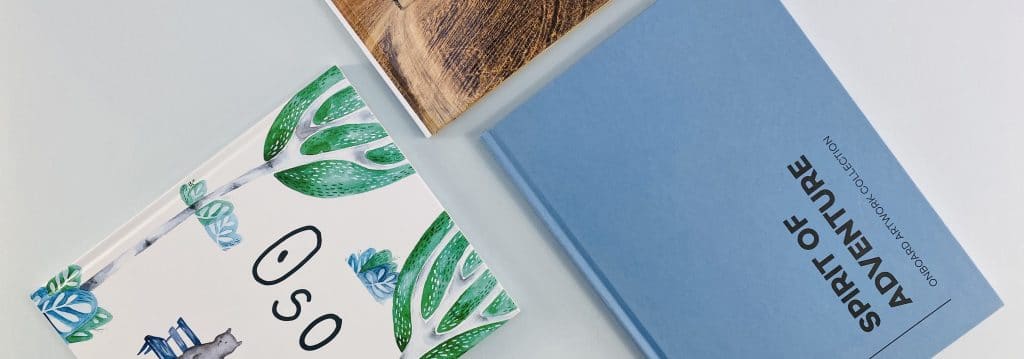
Companies offering hardback photo book printing have reduced the costs and other hurdles that used to be associated with self-publishing. As a result, people have come up with intriguing photo book varieties, and more artists are experimenting with photo books, making new formats and designs. This blog will guide you on the process of creating your own photo book, from conceptualisation all the way to hardback book printing.
The first thing you should do is to gather all your photos in one place. If your pictures are scattered across multiple devices or social media sites, doing this is a great way to stay organised.
Try moving all your image files to just one folder or sorting them based on your own criteria so you can easily go through them. This will come in handy in choosing photos for your book, which will be discussed in the next point.
Photographs are the star attraction in the best photo books UK-wide, similar to how storybooks would not be complete without the story. As such, we recommend that you select only the best pictures from your portfolio.
Not every photograph is created (or, in this point, taken) equally. There is bound to be a few really good shots that stand above the rest in terms of quality. Now that you have gathered all your photos in one place, it would be easy to go through them to find one photograph for each subject. In doing so, you should consider factors such as blurriness, focus, lighting, angle, and general presentability.
Some of these can be corrected with image editing software later on, but other things like angles are permanent. If a shot is great, but there are some parts that don’t look very good, always remember that you can crop or edit them out of the picture.

The best photo books have a coherent storyline that is essentially told through pictures. As such, it is important that you have a consistent theme with your page design. This theme should be the same all throughout your photo book, from its front and back cover to the introduction and the content. The design should also relate to the nature of your photos.
Additionally, avoid using too much of the same layout in your photo book. Although the term “do not fix what is not broken” also applies in photo books, you could do well with more variety. They add flavour to your photo book and prevent a bland, repetitive appearance. You can do different page styles and layouts, like a single photo panorama on two pages, centring a big photo on a page, placing multiple pictures on one page, and other creative designs. You can also use text to your advantage by combining your photos with descriptive excerpts.
Now that you are happy with the running order and planned layout, it is time to find a place where you can have it printed. There are plenty of places online where you can find affordable book printing services in the UK.
You can do your research on the Internet by reading reviews and comparison articles that list the advantages, disadvantages, and prices of printing companies operating in the UK. You can also ask around online forums and message boards, especially those in the photography niche groups. Sometimes, you won’t even need to ask questions yourself since it is very likely that someone before you has asked about the top online photo book printing companies in the UK.
One such company is Ex Why Zed. We also print modern, beautifully designed perfect bound photo books that are guaranteed to be a hit. Plenty of people have found success with their photo books by working with us, and you could be one of them today.
Here on Ex Why Zed, we recognise that not all clients know the various terminologies, jargon, and other intricacies of the printing industry. As such, we strive to guide every customer through the printing process by providing informative content. We feature a video guide posted on this website that discusses the basics of what you need to know about hardback book printing, from paper size, binding method, paper type, and more.
If you have any questions, you can contact us via telephone at 01206 766647. You can also send your concerns directly to our email at hello@exwhyzed.com.
![]()
First Class Service and Outstanding Print Quality
From the outset, ExWhyZed provided fantastic support and customer service. As a first time self-publishing author, printing was a bit of a mystery. Their long and detailed explanatory video was a hugely helpful start, which enabled me to understand the process.
I can't rate their service highly enough. Everybody who has seen the finished product is hugely impressed by the quality.
"Matt Rumbelow, first time author"
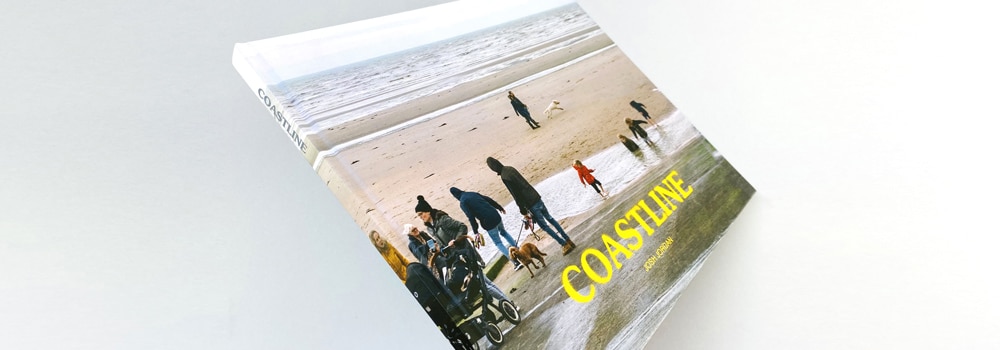
If you want your books to be enjoyed by the buyer for a long time, getting hardback art book printing is well worth the investment. However, it may be worth considering paperback photo book printing instead if you are on a tight budget. Hardback books can be sold for a higher cover price in comparison with their soft back equivalent.
Once a contract has been signed, the time it takes for commercial book publishing ranges anywhere between 18 and 24 months. Take note that it might also take one to three months to complete a contract. You should also consider the fact that it might take you one to twelve months to find a publisher in the first place.
However, if you self-publish through Ex Why Zed, we will aim to deliver your finished, bound, ready-to-sell hardback book in 1-2 weeks. Yes, that's right, 1-2 weeks not 18 months!
Binding is the last stage in converting multi-page content into a coherent book. Perfect binding refers to the process of binding several pages with an adhesive to produce a clean, crisp, and professional-looking printed item.
Hand binding and mechanical binding are the most popular methods. Perfect binding is another option that some professionals prefer because of its high-quality results.
There are many options available when getting hardback printing for photography books. Some of the most popular options include perfect binding and case binding.
With perfect binding, pages are bound to your chosen book spine using strong glue. Meanwhile, case binding is used to create heavy-duty books, and the pages can either be stitched together or bound using adhesive.
When it comes to short production runs, such as those involving anywhere between 200 and 300 books, digital printing will generally be the most cost-effective alternative. There are no set-up costs involved with a production run when using a digital printing press.
There are plenty of cover material choices when it comes to hardbound photo book printing. The most common option is binder’s board. However, you can also use paperboard that is covered with another type of material, such as leather, heavy paper, or cloth.
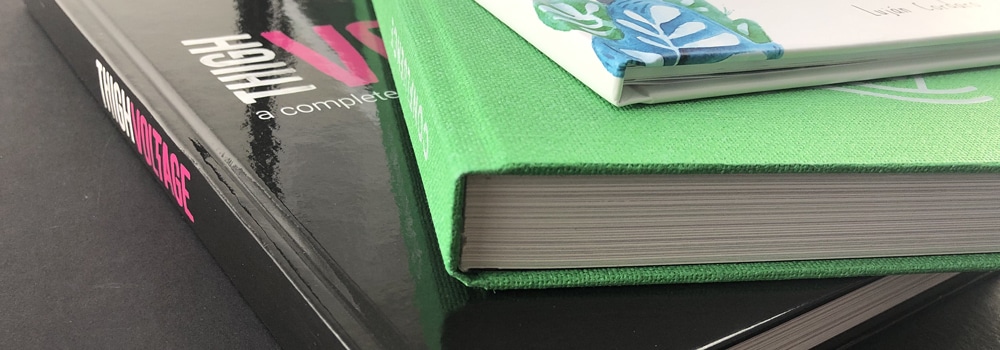
If your printed materials are of poor quality, your customers may believe that your services are of low quality as well. Because of this, your choice of printing services is crucial. Before hiring a printing service provider, first determine how they operate, ask questions, speak with the personnel, and generally get a feel for how they function. Looking up testimonials from previous clients would also help greatly.
If you would prefer to have certified experts work on your prints, just give Ex Why Zed a call!
When selecting a printing business for your project, you don’t just want to pick the first one that comes to mind. You should ideally select a printing company that offers all of the things you require, be it paperback or hardcover photo book printing.
You want to hire a printing firm that will deliver high-quality work. The final print of your project will have a big influence on how your brand is seen, which is why you must first verify the quality of the printing services that you’re hiring.
To do this, the easiest way is to view a few samples from the business’ website. With that said, seeing and physically examining the samples is the best option.
The hardback is a sign of quality and an indication that a publisher is serious about selling it. A hardcover demonstrates to booksellers and customers that this is a book worth their attention.
Also, bookshops may only order a small number of copies of your book if it’s published in paperback but are likelier to stock more copies if it comes out in hardback.
Hardback books look more beautiful and impressive than their paperback counterparts. There’s no doubting this. They are also far more durable, ensuring that anyone who buys the book is able to enjoy it for years on end.
On the other hand, paperbacks are much less expensive. For those looking to publish on a large scale for a lower price, paperback book printing is generally the way to go.
Overall, either is a fine choice for book printing. It all depends on your budget and personal preferences.
If you’ve been searching for “hardcover book printing near me”, you’ve come to the right place. Get in touch with Ex Why Zed today and learn how we can help turn your project into a reality.
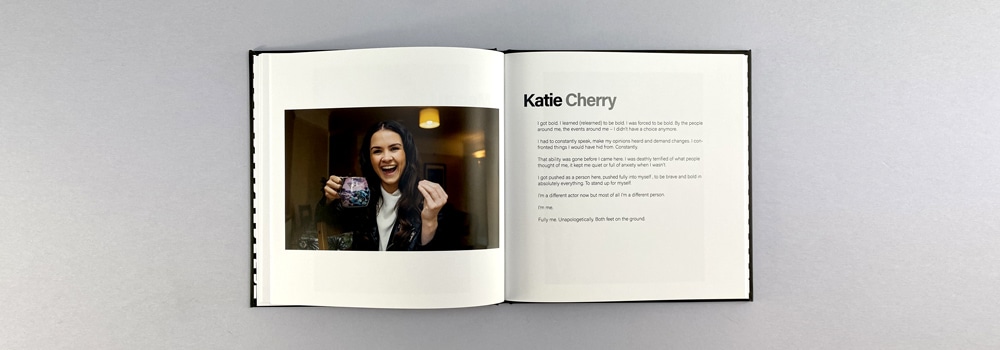
Art transcends boundaries, and an art book is its most profound expression. At Ex Why Zed, we specialise in transforming your artistic visions into beautifully crafted art book printing that captivate and inspire. Whether you're an artist, gallery owner, curator, or enthusiast, our expertise in art book printing ensures your work is presented in the most compelling way.
An art book is more than a collection of images; it's a curated experience that immerses the reader in your creative world. It provides context, tells a story, and offers a tangible connection between the artwork and the viewer. From detailed imagery to insightful narratives, artist catalogue printing serves as a timeless keepsake of your creativity.
Art galleries and exhibitions often require high-quality printed materials to enhance the visitor experience and extend the impact of the artwork beyond the gallery walls. Here are some popular publications we produce:
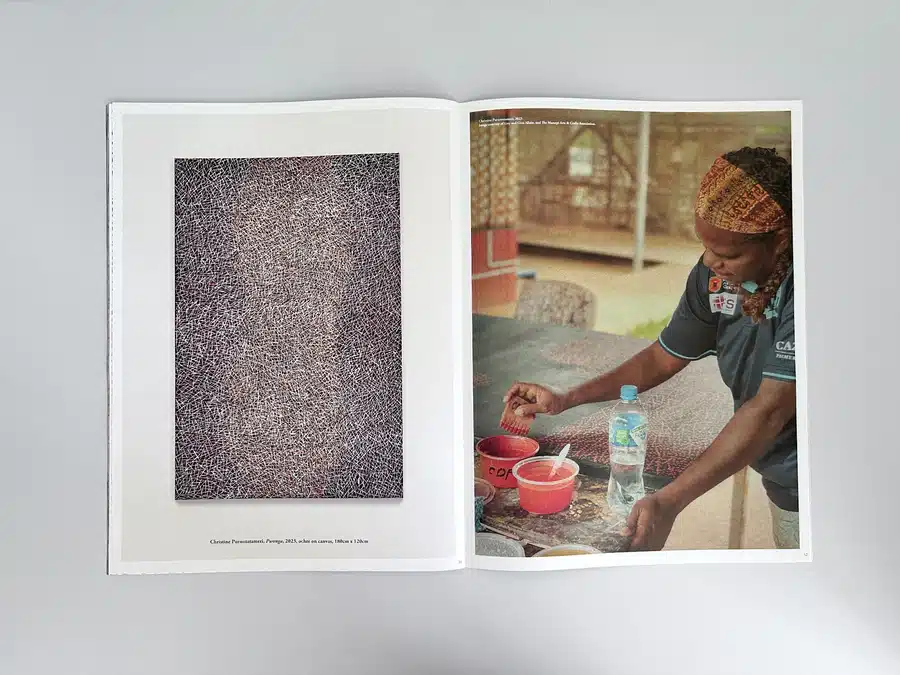
Dive into the captivating world of "Yoi," a stellar exhibition catalogue we crafted for JGM Gallery. This large-format booklet showcases the enchanting artworks of the Munupi Arts and Crafts Association, reflecting the cultural heartbeat of the Tiwi people.
This is the next in an expanding range of almost A3 booklet printing, we have completed as art gallery catalogues for JGM. Here is another case study for Tiwi Artistry: Large Format Booklet Printing – Showcasing Tiwi Artistry at JGM Gallery
Design Highlights:
Actionable Insights:
Imagine visitors at your exhibition holding a beautifully designed catalogue, feeling the texture of the pages, and absorbing the vibrant images and stories. These tangible keepsakes not only enhance the experience during the event but also serve as lasting reminders of your work in their homes and offices. Art books allow your audience to revisit and rediscover your art, deepening their connection over time.
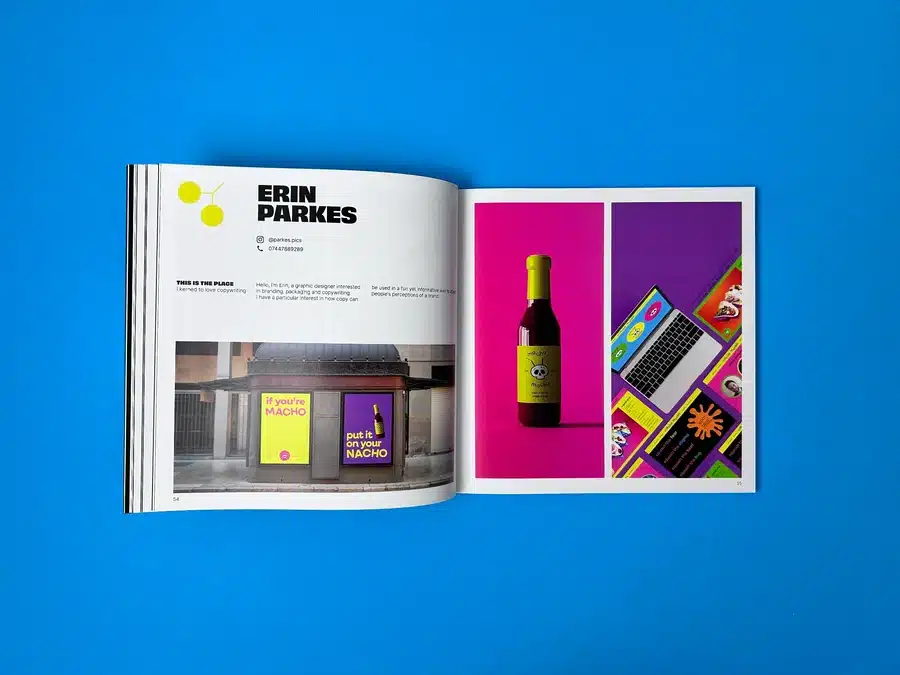
The "This Is The Place" degree show catalogue for Manchester School of Art exemplifies how printed materials can showcase emerging talent.
Design Highlights:
Actionable Insights:
We understand that every project is unique, and several factors influence the cost of printing your art book:
We work closely with you to balance your vision with your budget, providing detailed quotes and options to make informed decisions.
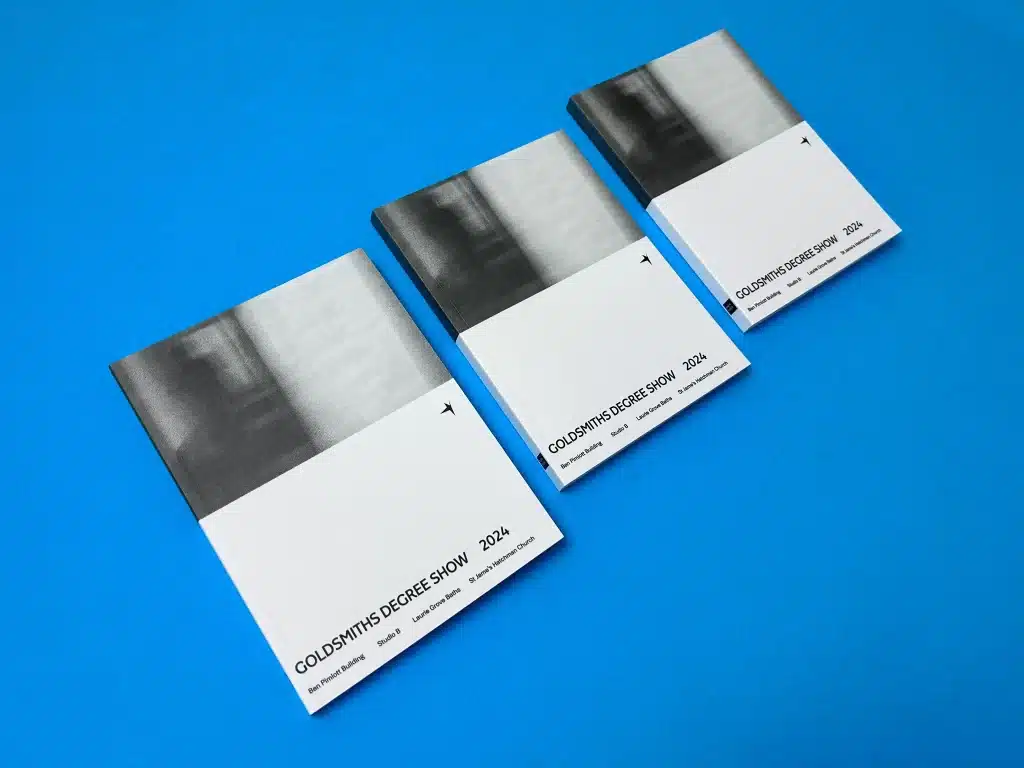
For the "Goldsmiths Fine Art Catalogue 2024," we collaborated with the university to manage costs effectively while achieving a premium look and feel.
Design Highlights:
Actionable Insights:
Our commitment to excellence goes beyond printing; it's about providing a seamless and enriching experience:
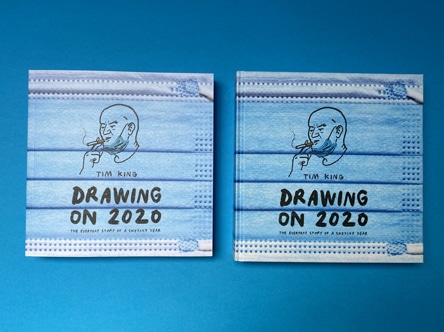
We helped Tim King bring his ambitious project to life by printing both softback and hardback editions of "Drawing on 2020."
Design Highlights:
Project Highlights:
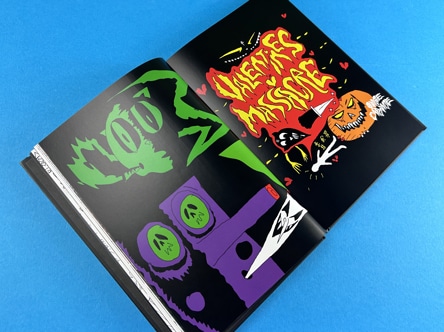
Partnering with multi-disciplinary artist Onoe Caponoe, we produced his hardback art book "Who Am I?" with precision and care.
Design Highlights:
Project Highlights:
In a digital age, physical art books offer irreplaceable value:
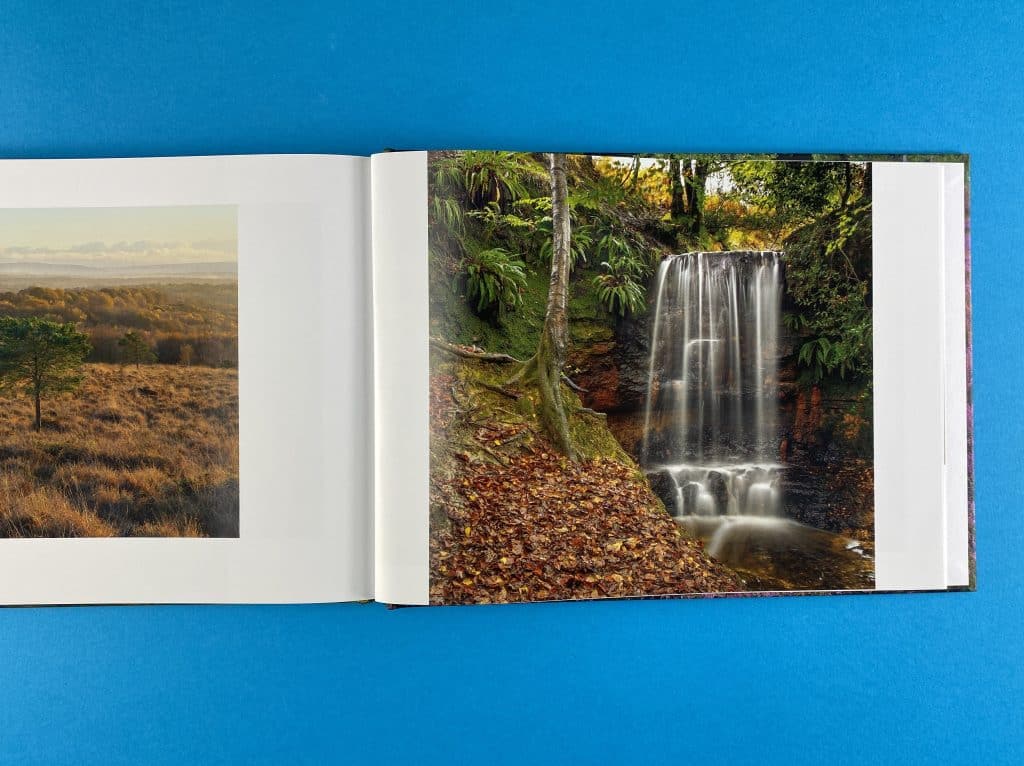
The coffee table book "Through The Seasons on Ashdown Forest" by Craig Payne and James Adler is a perfect example of the enduring appeal of printed art books.
Design Highlights:
Project Highlights:
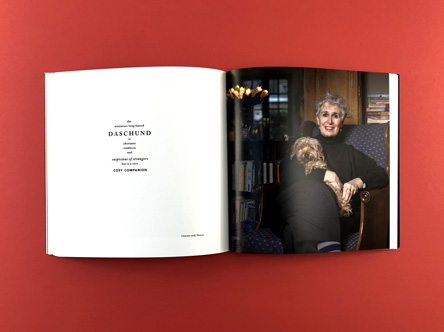
Anne Clements chose our services for her charming book "In The Dog's House," a 21st-century portrait of contemporary tastes in canine companions.
Design Highlights:
Project Highlights:
Join the Print Renaissance
There's a resurgence in the appreciation for printed art. While postcards and PDFs have their place, they often serve as fleeting interactions. An art book is a lasting testament to your work's significance—a piece that your audience can hold, explore, and treasure.
We offer a range of printing options to suit your needs:
Ready to Bring Your Art Book to Life?
Contact Ex Why Zed today to discuss your project. Let's collaborate to create a publication that not only meets but exceeds your expectations.
Have you ever wanted to hold your own newspaper? Imagine its pages filled with interesting stories that many people want to read. Even with all the digital stuff around us, print newspapers still have a special charm. To start a newspaper, you need a good business plan. You also need to work hard and have a love for sharing important content. This guide will help you learn how to launch and grow your own newspaper. It will cover everything from planning your first issue to getting a group of loyal readers.
Despite the dominance of digital media, starting a newspaper offers unique advantages, especially in local or niche markets. Newspapers can provide in-depth analysis, investigative journalism, and cater to audiences who prefer print media. In smaller communities, newspapers serve as a trusted source for local news, culture, and events that may be overlooked by larger digital platforms.
Additionally, the print format can stand out in a digital-saturated environment, offering an exclusive, tangible reading experience. Furthermore, newspapers can build strong community ties and support local businesses through targeted advertising.
Newspapers play a crucial role in building informed communities by offering:
In this way, newspapers contribute to community cohesion and civic engagement.
Before printing the first issue of your newspaper, you must fulfil certain prerequisites. This preparation will help you face various challenges and take advantage of the chances in the changing world of print media. Here are the prerequisites you must fulfil:
One of the first steps to start your newspaper is to know your niche and target audience. What kind of newspaper do you want to create? Will it focus on a certain area, a special interest, or both? Figuring out your niche helps you make a plan for your content. It will also help you make your publication fit your specific audience.
Knowing your target audience is just as important. Who do you want to reach with your newspaper? What do they like? What is their age group? How do they get their news? By answering these questions, you can create content that connects with your readers and builds a loyal following. Keep in mind that having a clear niche and a good understanding of your target audience is key to making a newspaper that stands out in the busy media world.
Before launching your newspaper in the UK, understanding the legal considerations and registration processes is essential. These steps ensure you comply with UK media laws and avoid potential legal issues down the line. Here's a simplified guide to key legal considerations:
| Legal Aspect | Description |
| Publication name | Ensure your chosen newspaper name doesn't infringe on existing trademarks. Conduct a trademark search and consider registering your publication name. |
| Content regulations | Familiarise yourself with UK libel and defamation laws. Ensure your content is accurate, fair, and doesn't incite hatred or discrimination. |
| Data protection | If you collect personal data from subscribers or contributors, comply with the UK's data protection regulations, including the General Data Protection Regulation (GDPR). |
It is highly advisable to seek legal advice from a media law specialist for a thorough understanding of your obligations and to ensure compliance with all applicable UK laws.
Creating a newspaper needs some key tools and software to make your ideas real. Desktop publishing software, like Adobe InDesign or QuarkXPress, is very important for your design. It helps you determine newspaper styles, layout, typography, and where to place images. Image editing software, such as Adobe Photoshop, is also very important. It helps you improve photos, make graphics, and make sure everything looks good for print.
If you are not using only stock photos, you will need a good digital camera to take clear pictures. Finally, it is important to work with a good printing company. They will know the intricacies of newspaper printing including how to choose the right quality of newsprint paper. Talking about what you need for printing and knowing their guidelines will help ensure your newspaper comes out great.
Assembling a good team is important for making a high-quality newspaper. This means finding people who love storytelling, have an eye for design, and care about honest journalism. The specific jobs might change based on how big your newspaper is, but some key roles are editors, reporters, photographers, and designers.
Editors look after the content process. They make sure everything is accurate, clear, and follows the newspaper's rules. Reporters gather information, talk to people, and write interesting news stories. Photographers take great photos that go with the news articles. It is vital to find good people who share your goals and enjoy doing quality journalism. Building a strong team helps create a friendly and creative space, which is needed for a successful newspaper.
Launching a newspaper requires several important steps. Each step is vital for making your publication successful. The successful completion of all the steps will lead to the exciting release of your first issue -
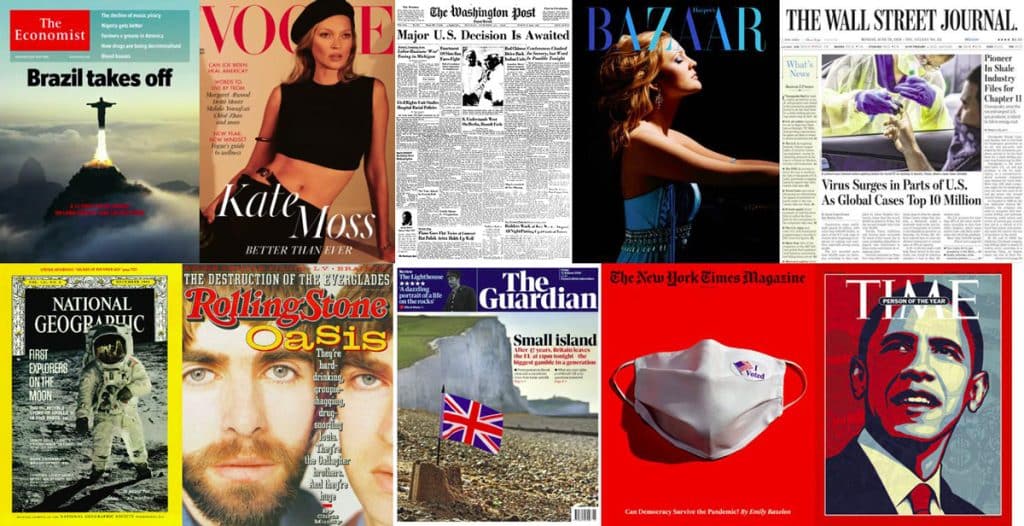
Your newspaper's brand is very important. It includes the name, logo, fonts, and overall look. This brand should show what your newspaper is about, who your target audience is, and what values you hold. Make a name and logo that stand out and match your publication’s style. They should connect well with your readers.
Being consistent is very important when you create your brand. Use the same logo, fonts, and colours everywhere. This includes your newspaper, website, social media, and business cards. A strong brand helps readers remember you. It builds trust and sets the stage for a loyal audience and a successful paper.
Content is very important. The success of your newspaper depends on sharing engaging and informative stories that connect with your target audience. Hire skilled writers who can create interesting stories, do good research, and share information in a clear and simple way.
The layout or the template of your newspaper matters just as much. A good design should have a nice balance of text and images. Use suitable font sizes and clear headings to make it easier for readers to enjoy and understand. Always keep in mind that the content and styling of your newspaper should work together. This way, you can provide a fun and informative reading experience for your audience.
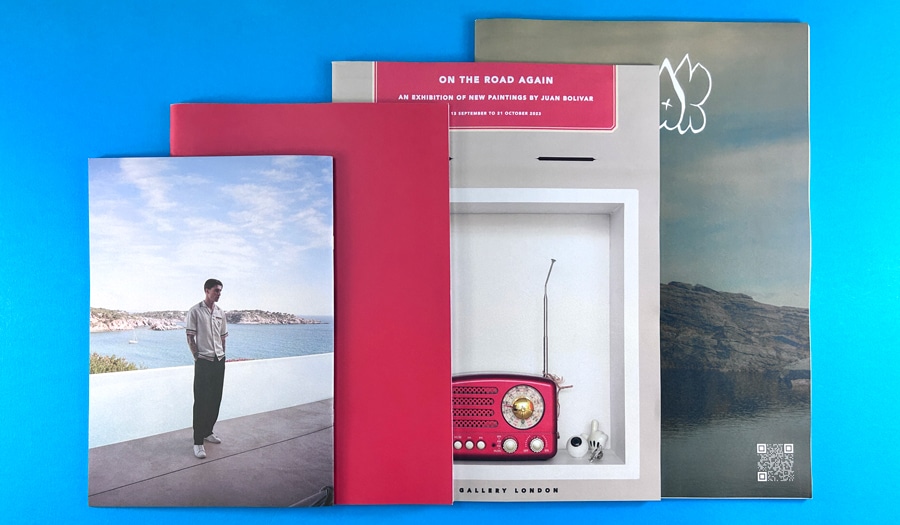
An effective way to get your newspaper to readers is by having a strong distribution network. Think about different ways to distribute it, like subscriptions, newsstands, local businesses, libraries, and community centres. Decide on the right print run for your first issues. Check your budget, where you can distribute it, and how many people will want it. As more people read your newspaper, you can change the print run.
Also, think about delivery costs and how you will manage it. Will you do the delivery yourself, or will you hire a distribution company? Look closely at the costs and benefits of both options. This will help you make the best choices for your budget and distribution goals.
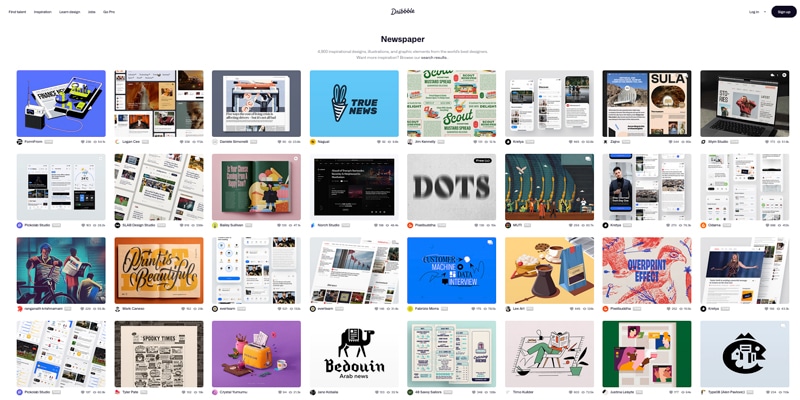
In today's world, having an online presence isn't just nice to have; it is essential. You should create a website for your newspaper. This site can host your articles, share information about subscriptions, and provide space for advertisers.
You can use social media platforms such as Facebook, Instagram, and Twitter. These platforms help you connect with your readers and share brief pieces of your content. They can also help you bring more visitors to your website. Be sure to engage with your followers by responding to their comments. Running contests or polls can also help build a community. A strong online presence works well with your print newspaper. It lets you reach more people and gives you new ways to engage with readers and earn more money.
The launch of your first issue is an important event. Create some excitement by hosting a launch party. Invite community members, local businesses, and the media to join in celebrating your newspaper’s release. This event is a great chance for networking, building awareness, and get publicity.
You should think about sending press releases to local media. Highlight what makes your newspaper special and share details about the launch event. To attract early readers, offer special subscriptions or discounts to encourage them to sign up. A good launch plan can create buzz and lead to positive talk about your newspaper. This can help set you up for success in the future.
Creating a way to earn money that lasts is very important for your newspaper. Look into different ways to build cash flow, like through ads, subscriptions, and sponsorships. This will help you have various income sources and stay financially steady.
You can earn money from ads by working with local businesses, groups, and people who want to reach your target audience. Offering good prices for ads and flexible placement can bring in more advertisers and grow your revenue. Subscriptions can also help because they create a steady income and show that your readers care about your paper. Think about providing different levels of subscriptions with added perks to encourage more people to subscribe.
Diversifying how you earn money is important for making your newspaper business strong and sustainable. Here are some ways you can do this:
Setting the right prices for ads is also very important. It helps attract advertisers and keeps your publication's value fair. Here are some tips:
After you launch your newspaper, aim to grow its reach and get more readers. Use good marketing strategies that fit your target audience and budget. Think about using social media, getting involved with the community, and teaming up with local businesses. This can help boost your visibility and draw in new readers. Always check how well your marketing is working. Make changes to improve their effect and reach more people.
A clear marketing plan is very important for getting to your target audience and building awareness for your new newspaper. You should try different strategies that use both traditional and online marketing methods. Here are some of the top strategies:
Ex Why Zed is a trusted choice for newspaper printing in the UK, offering high-quality, customisable solutions tailored to your needs. We provide versatile options in size, design, and paper type. With FSC-certified materials and eco-friendly inks for larger orders, we combine sustainability with excellent craftsmanship. Our customer service team is known for their expertise and responsiveness, ensuring you receive the guidance needed for a seamless printing experience. Learn more about printing newspapers with Ex Why Zed.
Unlocking the Hidden Expenses: Diving into the Economics of Newspaper Printing.
For a snapshot of how cheap it is to print your own newspaper, here are a few key prices.
Staple Bound and Ready to Distribute
Promote Your Brand to a New Audience
Ideal for University Student Hand Outs
Starting a newspaper today needs a mix of old methods and new ideas. It's important to know your niche, the laws you need to follow, and who your audience is. Having a strong brand, interesting content, and a good way to share your work is key to a successful start. Making money through ads and subscriptions is also necessary. By using a clear plan and staying open to changes in the industry, you can find your way in the tough market and create a successful newspaper in this digital age.
Starting a newspaper in the UK can cost different amounts. It depends on things like printing, staffing, and marketing. Operating expenses include rent, utilities, and regular marketing. There are financing options such as loans, grants, and investors.
While print publications are still important, newspapers can now be online only. This particularly caters to all those who are environmentally conscious. Digital newspapers use the internet to share their content. This helps them reach more people and saves money on printing and distribution. There is also the concept of sustainable newspaper printing to cater to all those who are worried about destroying the nature to print newspapers.
To find your target audience, do careful market research. Look at the demographics and see which publications have already reached similar groups. By understanding what people like, need, and how they use media, you can better define who your target audience is.
Create an appealing media kit. Show how far your newspaper reaches and who reads it. Include details about advertising choices. Give good prices and flexible packages. Show potential advertisers how valuable your publication is and how it can help them reach their money goals.
The cover of your zine is the first thing that people see. It's your chance to make a bold, attention-grabbing statement. One of the most effective ways to do this is through the use of colour. But not just any colour - we're talking about CMYK colours. CMYK stands for Cyan, Magenta, Yellow, and Key (Black), the four inks used in the traditional method of printing hard copies.
While coloured paper can certainly add a unique touch to your zine cover, it comes with its own set of challenges. For one, there are only a limited number of colours available. And even if you find the perfect shade, the cost can be prohibitive, especially for indie presses.
Instead of using coloured paper, we recommend printing a flat colour as a background. This technique allows you to achieve the same visual appearance as coloured paper, but with more flexibility and at a lower cost. You can choose from millions of colours, and you can even print different graphics on the reverse side of the page.
Here is a quick video to Printing a coloured cover as a cost-saving alternative to using a premium coloured card.
• The best black to use for text is 0/0/0/100. This is 0% cyan, 0% magenta, 0% yellow and 100% black.
• For a dynamic jet black background colour, go for 30/30/30/100.
• If you want to print a right colourful red in CMYK then select your content to 0/100/100/10.
• A bright CMYK is 100/40/0/0, a medium blue is 100/80/10/0 and navy is 100/70/0/70.
• Royal Blue is very hard to print in CMYK.
• Bright yellow you can stick to 0/0/100/0 - easy!
• Gold is not easy to replace because CMYK inks are not metallic or as dynamic as foiling so don't have the shine.
• A mid tone, grass green would be 50/0/80/0 and for a dark, Racing Green use 90/0/100/70.
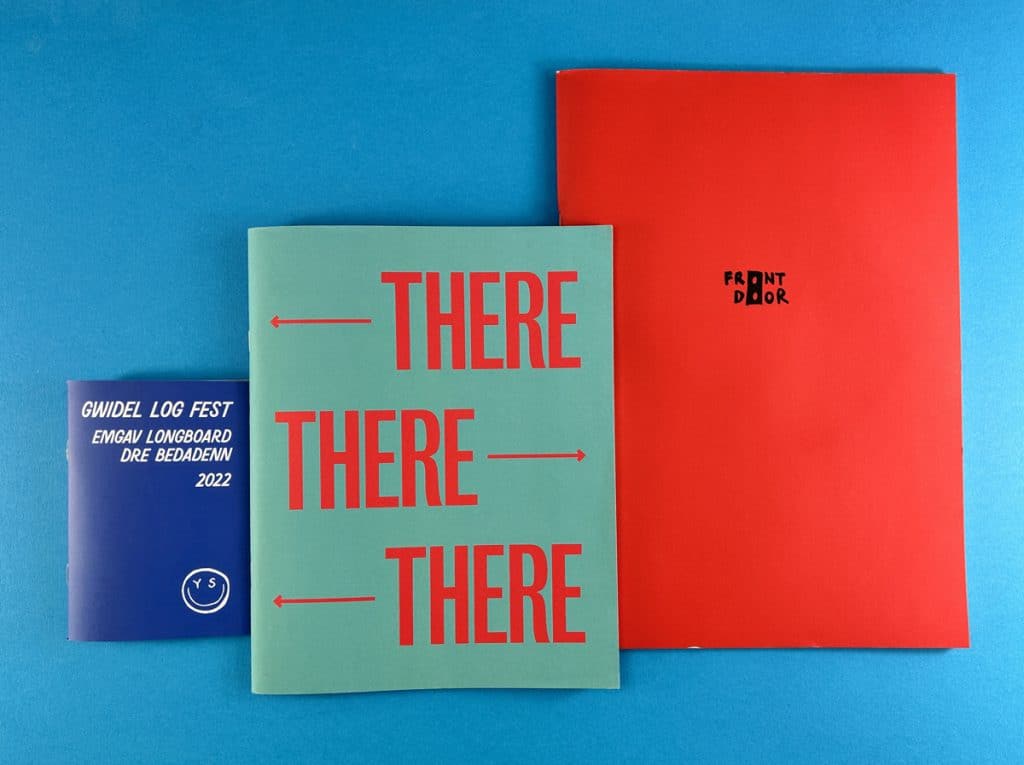
When it comes to printing a flat colour, uncoated paper is the way to go. The matte finish and slight grain of uncoated paper lend themselves well to overall background colours. It gives the impression that the paper itself is the actual colour, which is the effect we're trying to achieve.
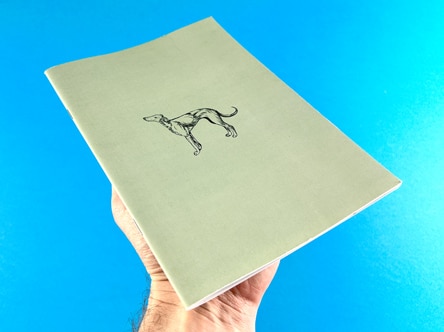
If you're using a cover weight of 170gsm or thicker, we recommend applying a matt lamination to the front cover. This thin layer of film protects the fibres of the paper, allowing us to fold it without any issues of cracking.
Below is a cover with a solid red background colour and you can see when we folded the sheet, the fibres of the card have opened up. Lamination prevents against this happening.
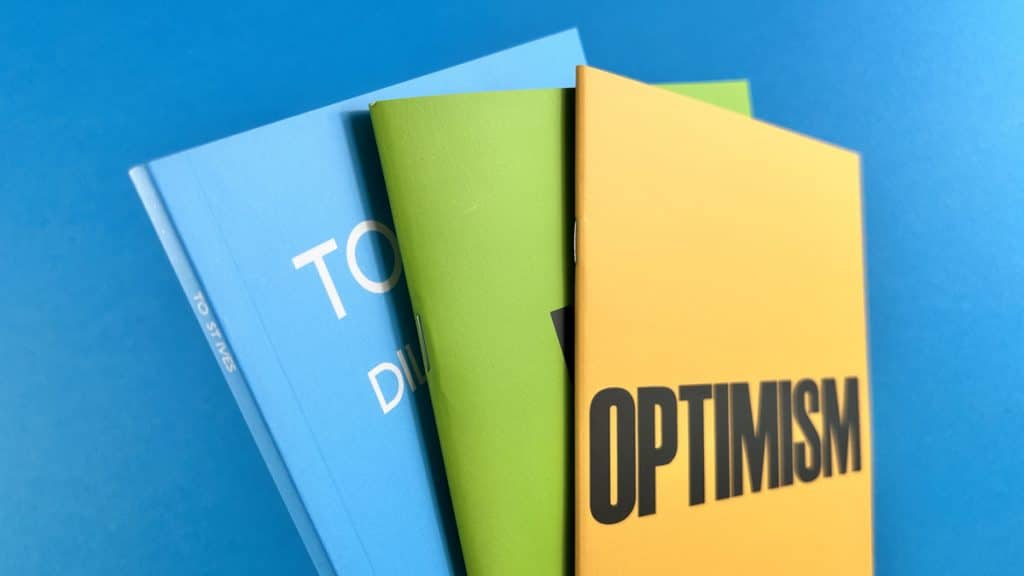
If you're looking for a way to give your zine cover a premium feel without the premium price tag, we have a hack for you. You can download high-resolution close-ups of papers from the G. F Smith website and use them as the background on your InDesign artwork. This gives the appearance of coloured, textured paper or card.
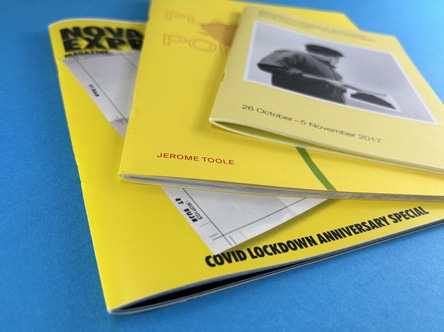
What is a CMYK colour guide for printing?
CMYK stands for Cyan, Magenta, Yellow, and Key (Black). These are the four inks used in the traditional method of printing. All printers use CMYK ink.
• The best black to use for text is 0/0/0/100. This is 0% cyan, 0% magenta, 0% yellow and 100% black.
• For a dynamic jet black background colour, go for 30/30/30/100.
• If you want to print a bright colourful red in CMYK then select your content to 0/100/100/10.
• A bright CMYK blue is 100/40/0/0, a medium blue is 100/80/10/0 and navy is 100/70/0/70.
• Royal Blue is very hard to print in CMYK.
• For Bright Yellow you can stick to 0/0/100/0 - easy!
• Again, gold is not easy to replace because CMYK inks are not metallic so don't have the shine. We can print metallic gold on our litho press but this process is more effective for 500 copies or more (the set-up costs are higher on that machine).
Which colours print well in CMYK?
Most colours print well in CMYK, but it's important to note that CMYK cannot reproduce all the colours that you can see on your computer screen in RGB (Red, Green, Blue) mode.
Our free paper sample swatches come with an alphabet on the reverse. Each letter is printed with a different CMYK setting to help you choose which will work best. The front card has a key of CMYK% of each letter so note that down and drop it in on your artwork. Easy!
To print vibrant colours in CMYK, it is best to convert any images in Photoshop then adjust the color balance, brightness and levels to boost them up after conversion.
In your design software, you can usually find the option to set your artwork in CMYK in the colour settings or preferences.
Bright colours, fluorescents, neons, metallics and royal blues tend to look more muted in CMYK ink.
Creating a standout zine cover is an exciting process that allows your imagination to run wild. By understanding the nuances of CMYK printing, you can create vibrant, attention-grabbing covers that truly represent your unique vision. So go ahead, experiment with different colours, textures, and finishes. The world of zine printing is your oyster!
Zines have always been a platform for self-expression, a space where creators can let their imagination run wild. Whether it's a literary magazine like Shooter, a typographic marvel like No Cold Callers, or a poetry zine, each one is a unique piece of art. In this post, we'll take a closer look at these three distinct types of zines, each showcasing a different facet of creativity and individuality.
Shooter literary magazine is a testament to the diversity of topics that can be explored in zines. Each issue is centred around a different theme, providing a platform for a multitude of voices to be heard. For instance, the 'Cities' issue features neatly arranged text following a grid format, showcasing the poetry and creative writing of various writers. The text is intertwined with full-colour pages, acting as a backdrop to the creative writing.
The Shooter zines are perfect bound, with a neat spine that comfortably accommodates the title and the name of the magazine. This binding style not only gives the zine a professional look but also ensures durability.
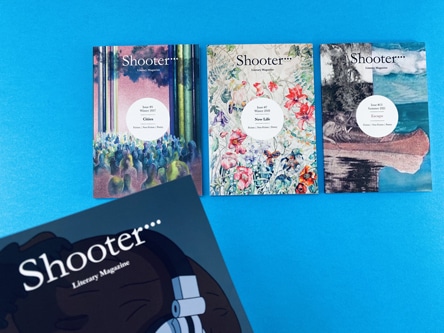
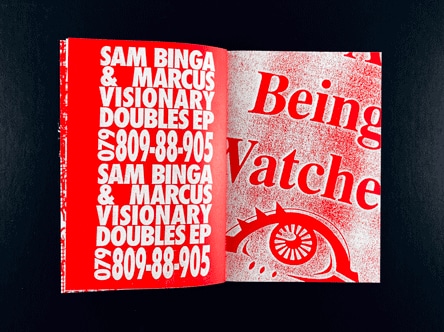
No Cold Callers is a zine that truly embodies the phrase "no rules for zines". It's a typographic feast, with layers upon layers of type stacked over each other. The inside pages are printed on 190gsm paper, showcasing what can be achieved with type.
The zine's design is reminiscent of the iconic work of David Carson and Ray Gun, with its engaging one-colour print and consistent colours per page. The mix of images, photography, and a 70s style typeface creates a visually captivating experience. This compact, A6 wire stitch zine is a testament to the limitless possibilities of zine design.
Poetry zines offer a canvas for expressive words, a space where poets can share their thoughts and emotions. One such zine is an A5 perfect bound zine with 40 inside pages printed onto 90gsm uncoated paper. The cover is a 300gsm silk card with matt lamination on the outside, providing a professional appearance and added durability.
This zine, along with others like it, showcases the unique ways of creating a typographic zine. Each page is designed to attract the reader and grab their attention, with careful consideration given to the size of the font to ensure legibility.
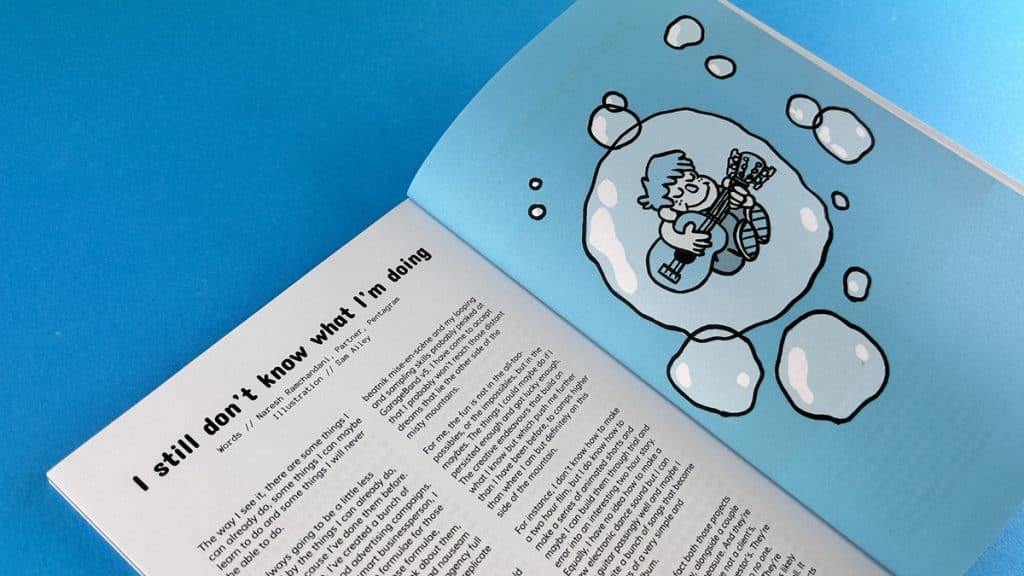
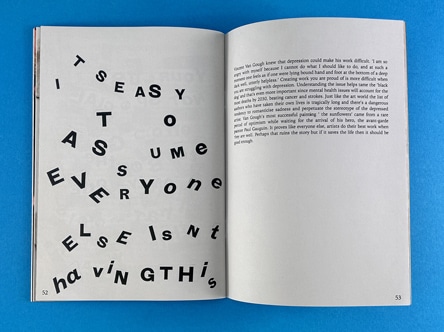
When it comes to styling your typographic zine, there are a few key considerations to keep in mind. The type on each page should be designed to attract the reader and grab their attention. The size of the font plays a crucial role in making your content legible. Check out our Definitive Zine Printing Guide for styling and aesthetic ideas.
For instance, you might want to consider using a larger font size for headers to make them stand out. For body text, a smaller font size would be more appropriate. Splash text, which is used to highlight important information or quotes, can be set in a larger font size and a different typeface to draw attention.
At Ex Why Zed, we are passionate about supporting the vibrant community of independent publishers through our dedicated Indie Press printing services. We've had the privilege of collaborating with innovative creators to bring their unique visions to life. Projects like the evocative works of Buoy Press showcase the power of thoughtful design and quality printing. The insightful Mayday Rooms Pamphlet Series highlights how self-publishing can amplify important voices and ideas. We also crafted the visually stunning Art Journey of Sean Newman, featuring a luxurious linen cover that embodies the essence of his artistic exploration. Additionally, the compelling hardback photography book Bait Gritain demonstrates our commitment to producing high-quality prints that capture the photographer's vision. Each of these projects reflects the creativity and dedication that define the indie press community, and we're honoured to help bring these stories to a wider audience.
By choosing Ex Why Zed for your indie publishing needs, you join a network of passionate creators who value quality, innovation, and personal expression. Our bespoke printing solutions are tailored to meet the unique requirements of each project, ensuring that your work not only stands out but also resonates with readers. Let us help you transform your ideas into beautifully printed realities, just like we did for these remarkable publications.
For more information on zine creation and printing, check out these resources:
Creative writing is a broad field that encompasses various forms, each with its unique characteristics and purposes. The four primary forms of creative writing are:
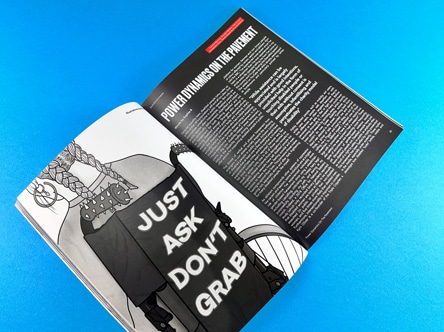
Creative writing is a vast field with numerous types and sub-genres. Here are nine types of creative writing that you might explore:
The five basic forms of creative writing are:
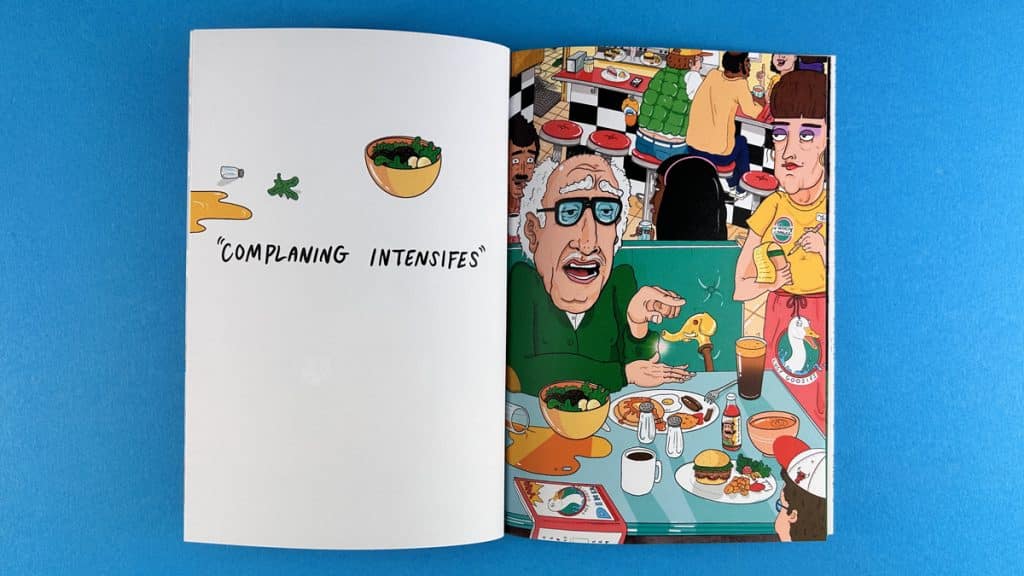
The three key elements of creative writing are:
The seven key elements of creative writing are:
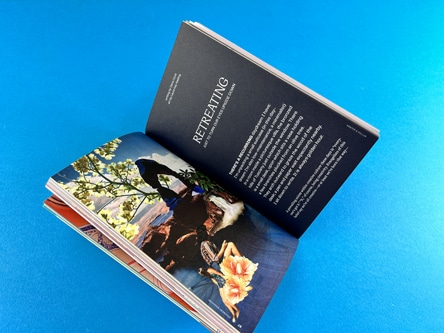
The six traits of creative writing are:
While creative writing is an art form that encourages freedom of expression, there are some general guidelines that can help you improve your craft:

The seven styles of writing are:
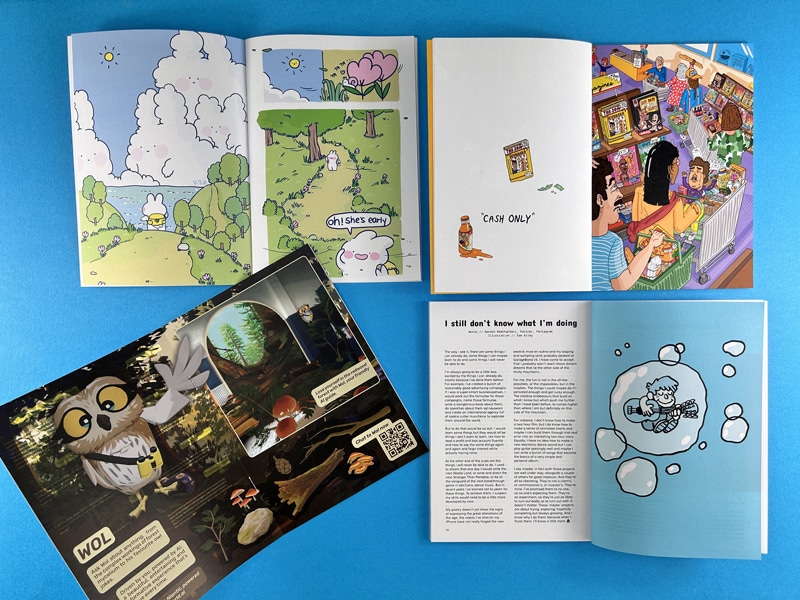
Skateboarding is more than a sport; it's a culture, a lifestyle, and a form of self-expression. One of the most vibrant aspects of this culture is the world of skate zines. These DIY publications, often created by skaters themselves, capture the spirit, creativity, and community of skateboarding in a way that mainstream media can't. In this comprehensive review, we'll dive into the world of skate zines, exploring some of the most influential publications like Lines, Lost Art, and Same Old Zine, and their impact on the skateboarding community.
Skate zines embody the DIY ethos that is at the heart of skateboarding culture. Just as skaters transform urban landscapes into their playgrounds, they turn their experiences, stories, and artwork into zines that reflect their unique perspectives. These zines are often hand-drawn, photocopied, and distributed within the community, making each one a labor of love and a testament to the skater's passion for the sport.
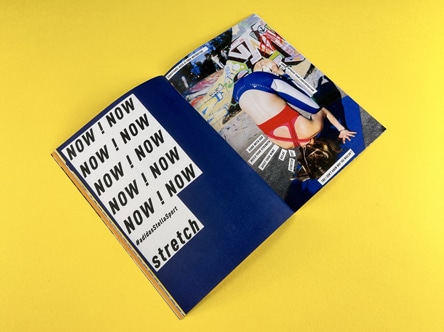
Creating a skate zine is not just about showcasing one's skateboarding skills or knowledge. It's also about contributing to the community, sparking conversations, and inspiring others. Whether it's a zine featuring trick tutorials, skatepark reviews, or skater profiles, each publication adds to the rich tapestry of skateboarding culture.
Skate Pal 'Lines' is a prime example of a skate zine that has made a significant impact on the skateboarding community. This A5 zine, with its 300 GSM front cover and 115gsm inside pages, is a visual and textual exploration of skateboarding in Palestine. The zine features a mix of editorial content, illustrations, and skate photography, all presented with great typography and ample white space to let the content breathe. Lines is more than just a collection of skateboarding images and stories. It's a platform for highlighting the skateboarding scene in Palestine, a region that is often overlooked in mainstream skateboarding media. By showcasing the talent and passion of Palestinian skaters, Lines is not just a zine; it's a statement, a testament to the power of skateboarding to transcend borders and unite people.
Lost Art is another influential skate zine that deserves mention. This zine is a collaboration with Nike Skateboarding, and it's a visual feast for the eyes. The full-bleed, punchy, faded black and white images throughout the zine are a testament to the artistry and creativity inherent in skateboarding.
Lost Art goes beyond traditional page layouts, mixing and matching multiple images on a page and overlaying text on images. This Ray Gun-esque approach to design gives the zine a dynamic, energetic feel that mirrors the excitement of skateboarding itself.
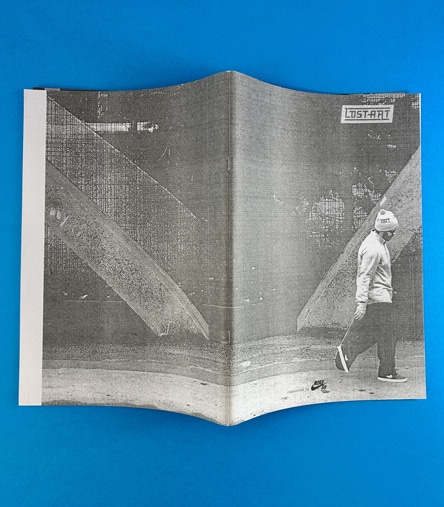
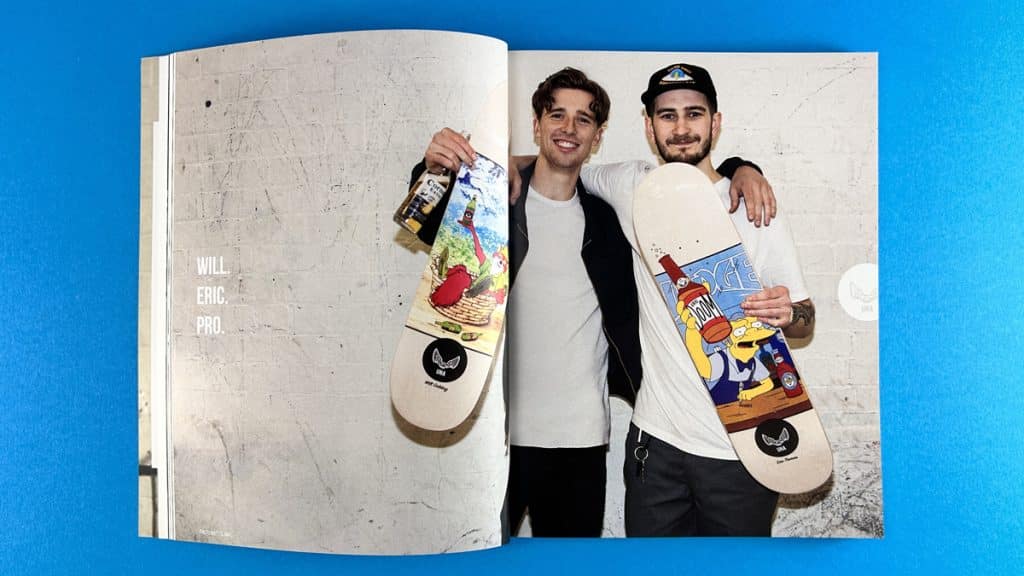
Same Old Zine takes the concept of a skate zine to another level. This skateboarding magazine book features over 100 pages of carefully curated content, including stunning illustrations, engaging text, and breathtaking photography. The zine is perfect bound with matt lamination on the cover, giving it a professional and polished look.
Same Old Zine is a celebration of skateboarding in all its forms. Whether it's showcasing gnarly tricks, highlighting underground skate spots, or profiling emerging skaters, the zine captures the essence of skateboarding culture in a way that is both authentic and engaging.
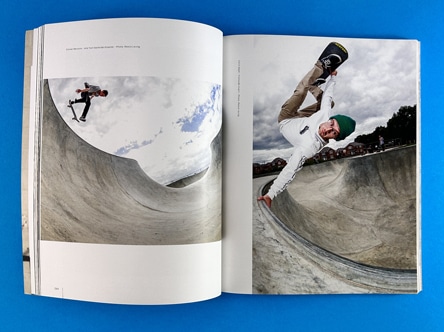
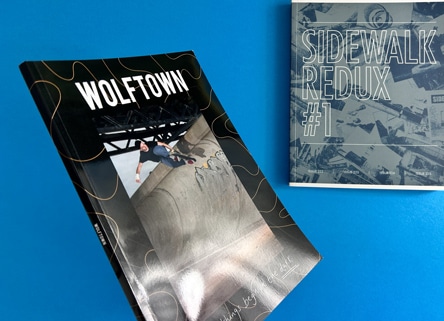
Two other notable skate publications that deserve mention are Wolftown and Sidewalk Mag Redux. Both are perfect bound publications that feature almost 200 pages of content, making them more akin to books than traditional zines.
Wolftown, a product of Wolftown Skateboards, is a testament to the skateboarding scene in Wolverhampton, UK. The zine is a collection of montage artwork, free-flowing page layouts, and gnarly graphics that capture the essence of the local skateboarding community. It's a celebration of the city's skateboarding culture, showcasing the talent and passion of its skaters. You can check out their latest issue here.
Sidewalk Mag Redux, on the other hand, is an iconic publication in the skateboarding world. It's a comprehensive archive of skateboarding history, featuring interviews, profiles, and stunning photography. The zine is a must-read for anyone interested in the evolution of skateboarding culture and its impact on society. You can delve deeper into their content here.
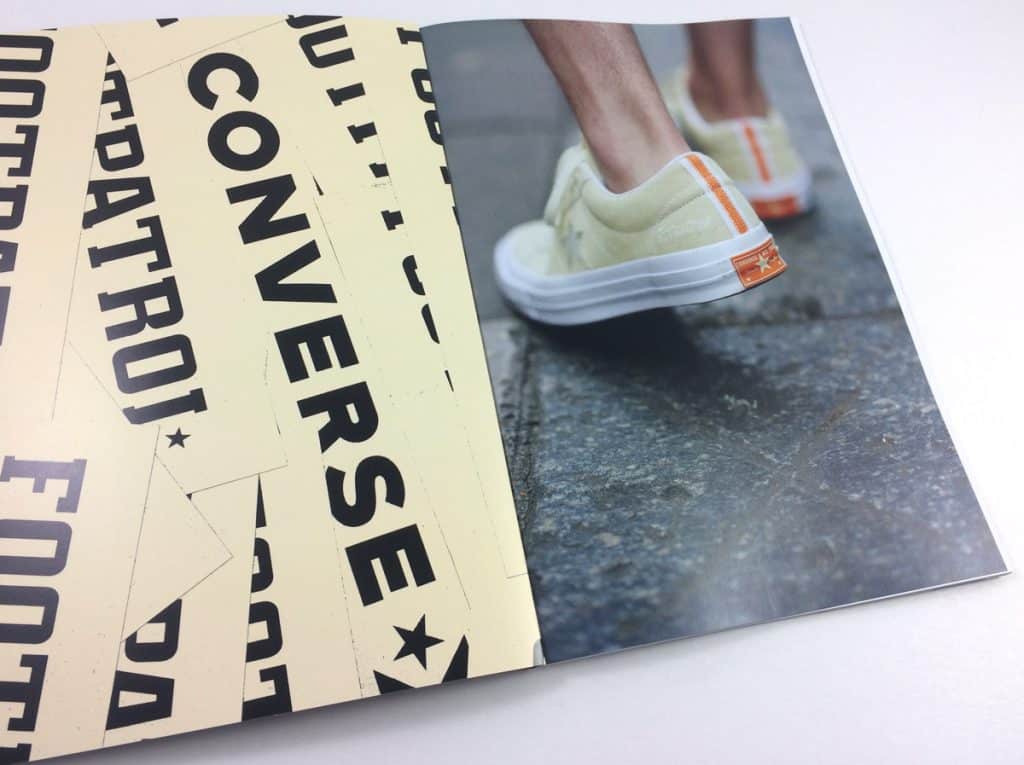
Converse and Footpatrol, a premier London sneaker boutique, unveil a modern spin on the iconic One Star silhouette. Drawing inspiration from Footpatrol's birthplace, Berwick Street Market in Soho, the collaboration embodies the cultural richness of this lively neighbourhood.
The Footpatrol x Converse One Star, available in classic black or pristine white, marries aesthetic appeal with high-quality materials. Signature logos on the outer and inner sides represent the union of these brand identities.
To accompany his collab we printed an A5 lookbook with a silk finish. Explore our portfolio for more on this exciting skateboard print case study. The Footpatrol x Converse One Star collection is now available at select Converse and Footpatrol stores.
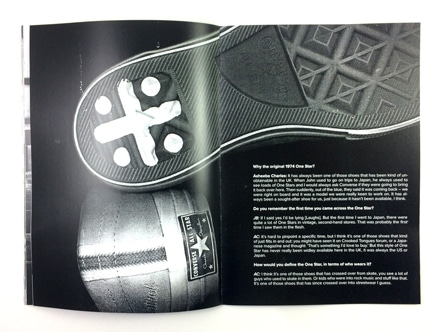
Skate zines play a crucial role in fostering connection and creativity within the skateboarding community. They provide a platform for skaters to share their experiences, showcase their skills, and express their views on various aspects of skateboarding culture. By doing so, they contribute to the diversity and vibrancy of the skateboarding scene.
Moreover, skate zines also serve as a historical record of skateboarding culture. They capture the evolution of the sport, the rise of different skateboarding styles and trends, and the stories of skaters who have shaped the scene. In this sense, skate zines are not just publications; they are time capsules that preserve the legacy of skateboarding for future generations.

Wrapping this up, skate zines are a vital part of skateboarding culture. They embody the DIY ethos of the sport, provide a platform for skaters to share their stories, and contribute to the richness and diversity of the skateboarding community. Whether you're a seasoned skater or a newbie, exploring skate zines like Lines, Lost Art, and Same Old Zine is a great way to immerse yourself in the world of skateboarding. So when you take the board out tomorrow, get your mate to find some great angles to shoot you from!
Getting a book published the traditional way takes a lot of work. With so many authors trying to get noticed by publishers, it can feel almost impossible to get your story out there. This leaves many writers frustrated, wondering if they’ll ever see their book in print.
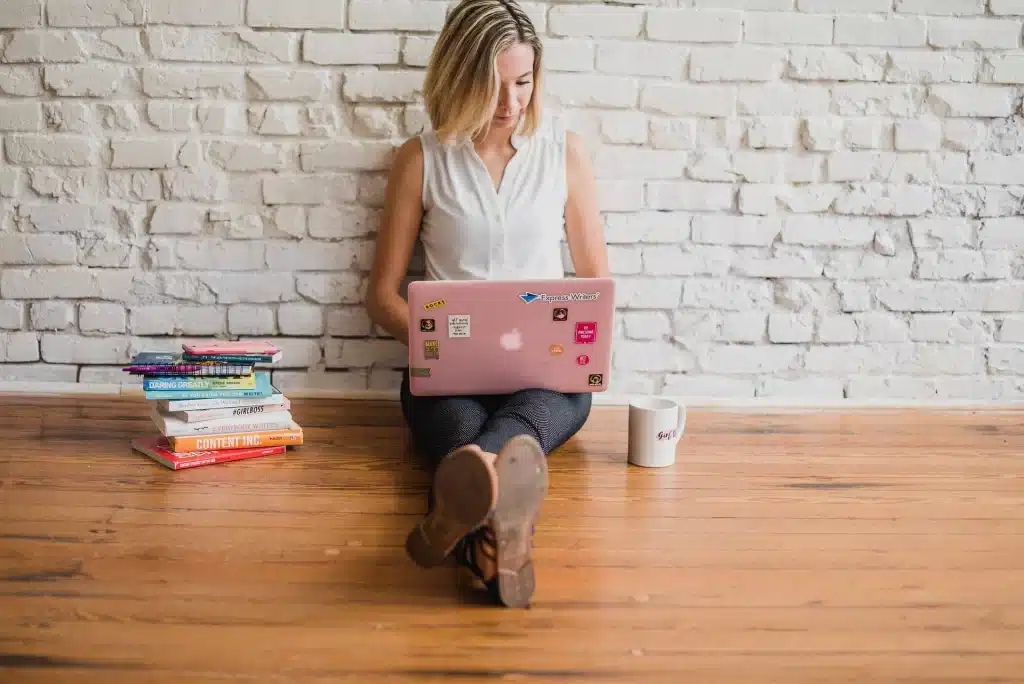
You might be worried about how to reach readers without a publisher or if anyone will even notice your book. These are real concerns, but Amazon Kindle Direct Publishing (KDP) offers a solution. It gives you control and the chance to share your work with the world.
In this blog, we’ll guide you through the basics of self-publishing on Amazon Kindle in the UK. We’ll show you how to get started, reach more readers, and answer common questions along the way. Let’s dive in!
When authors want to self-publish in the UK, Amazon Kindle Direct Publishing (KDP) is a popular choice. However, Ex Why Zed based in Colchester is the go-to for self publishing authors in the UK and US.
• Enjoy our website absolutely packed full of content (probably too much 🙂
• Request a quote and we'll be back with prices in a few minutes
• If you are not sure on the options, speak to Harriet or Mike, our friendly account managers
• Grab your drink of choice and browse our much loved YouTube video print guides.

When considering self-publishing, choosing the right partner can significantly impact your book's success. While Amazon Kindle Direct Publishing (KDP) offers a broad platform, self-publishing with Ex Why Zed provides a unique, personalised approach that sets your work apart in ways KDP simply can't.
At Ex Why Zed, we offer bespoke book printing services, high-quality printing options, and a hands-on, collaborative process that empowers you to bring your vision to life. Unlike the one-size-fits-all approach of KDP, we tailor each project to your specific needs, ensuring that your book stands out in both digital and print formats. Plus, with our dedicated support team, you’re never alone in the process—we’re with you from concept to completion, offering expert advice at every step.
Self-publishing with Ex Why Zed not only gives you complete creative control but also ensures your book receives the professional finish it deserves, something that's often compromised in the streamlined, automated world of Amazon KDP.

Authors no longer have to follow the old ways of publishing and can now reach their target readers with ease. A key driver in this shift is Amazon’s Kindle Direct Publishing (KDP).
KDP offers authors numerous opportunities, providing significant control over their work, from content creation to pricing. In this guide, we’ll explore what Kindle Direct Publishing is, how it operates in the UK, and how you can leverage it to reach millions of readers worldwide.
Kindle Direct Publishing (KDP) is a service from Amazon. It lets authors publish their books on their own in digital and print formats.
The true advantage of KDP lies in its simplicity and the control it grants authors. You retain full ownership of your content, choose your book's design, set your own price, select your target audience, and manage your advertising. With KDP, authors can earn up to 70% in royalties, making it an attractive option for self-publishing.
Currently, the platform also supports publishing in over 45 languages, allowing your work to reach a global audience. It redefines traditional publishing by empowering authors to share their stories directly with the world without the need for intermediaries.

Self-publishing on Amazon Kindle in the UK is easy with Kindle Direct Publishing. You can go at your own speed for Amazon Kindle self-publishing in the UK. To begin, all you need is a completed manuscript and a book cover, and you must register on the KDP website.
Once you create your KDP account, you can upload your book files. Next, enter important information like the title, description, keywords, and categories. After that, you set the price for your book. KDP allows you to design the layout and front cover of your book so everything looks the way you want.
Your book can show up on Amazon's websites in 72 hours after you publish it. You can also use special features like low-content books, setting a pre-order date for your Kindle eBook, and making it fit well for Kindle Unlimited on KDP.
You get to keep full ownership of your work. You also have control over everything in the publishing process. This way, you can earn a high royalty rate from sales of your eBooks and paperback books.
From writing and editing your manuscript to formatting it for Kindle and then launching your eBook and hardcover, each step is important for your book’s success. This guide will give you useful advice and tips for every stage. Let’s explore the key parts of self-publishing.
Your path as a self-publisher starts with writing a book that connects with your readers. This may seem simple, but the thrill of publishing can sometimes distract from making good content that people enjoy. Here are some tips to help you create a great book:
Once your manuscript is finished, editing and proofreading are very important steps for self-publishing. Editing means going over your work many times. This helps to improve the plot, characters, words, and overall flow of the story.
Next, proofreading is where you check for spelling, punctuation, and grammar mistakes. You should also make sure everything is consistent.
Getting a professional editor or proofreader can help a lot. They offer new ideas and can find mistakes you might overlook. Good editing and proofreading are important to make sure your book looks perfect.
After you finish your manuscript, you need to get it ready for the Kindle platform. Formatting your book for Kindle is key. It helps make your work look professional. It also makes it easy for readers to read on their Kindle devices. Here are some tips:
Amazon has clear guidelines and helpful tools like Kindle Create to make formatting easy. Make sure you stick to these guidelines. This way, you can give your readers a smooth reading experience.
To make a strong impact, release your Kindle eBook and hardcover together. This will reach different readers and increase your visibility on Amazon. Use the KDP dashboard to control your book.
Make sure your cover and description grab attention. Set a good pricing plan, too. Promote your book with tools like Kindle Countdown Deals. Use social media to bring people to your Amazon page. This plan will help you succeed in self-publishing.
To publish your work, you first need to create an Amazon Kindle self-publishing account. This step is easy to follow:
Now it's time to take the next step in self-publishing Amazon Kindle books. You should upload your book to KDP. Go to your KDP Bookshelf. Then, follow the steps that come next.
When you have everything ready, save your work. If you like how your book looks, click on 'Publish Your Kindle eBook' or 'Publish Your Paperback Book'. After getting approved, your book will show up in the Amazon Kindle store in 72 hours.
Entering your book details can change how easy it is for people to find and buy your book. So, remember these few points we will share next.
These details help readers decide if your book is what they want. This choice can impact your sales. So, it is important to be careful when you fill them out.
Choosing the right categories and keywords is key to making your work easier to find on Amazon. When you fill these out in your KDP account, think about what your ideal reader likes. Consider what they might search for.
If you have written a historical fiction book set in medieval England, there are several useful keywords you can use. These might be "historical fiction," "medieval England," and "historical narratives." You can also choose fitting categories. For example, you could pick "Fiction > Historical" or "Literature & Fiction > Genre Fiction > Historical."
Here is a quick example of picking good keywords and categories:
| Genre | Effective Keywords | Appropriate Categories |
| Thriller | 'Crime thriller', 'Suspenseful Story', 'Mystery novel' | 'Mystery, Thriller & Suspense > Thrillers > Crime' |
| Science Fiction | 'Space exploration', 'Alien invasion', 'Futuristic narrative' | 'Science Fiction & Fantasy > Science Fiction > Space Opera' |
Always use keywords and categories that your readers are likely to look for. This will make your work easier to find.
It's time to upload your manuscript and cover files. Make sure your manuscript is in a format that works well with Kindle, like DOC, DOCX, EPUB, or HTML. Before you upload, take a moment to check that there are no formatting mistakes or typos in your work.
Your cover can really affect your sales, so it is important to make it look nice. The ideal size for Kindle eBook covers is 2,560 x 1,600 pixels. You can upload your completed cover file or use Amazon’s Cover Creator tool to design it.
After you upload your files, use the Previewer tool from KDP. This will help you check that everything looks good on different Kindle devices.
After you upload your book, picking the right price is very important. Think about Amazon's royalty structure. You should also consider its length and genre. It is key to find a balance between profit and what readers can afford. This section will help you understand royalties, set pre-order dates, and choose a good price.
Amazon's KDP gives authors two choices for royalties - 35% and 70%.
Your choice of royalty rates will depend on the price, its file size, and where you are selling it. Look closely at these points. This will help you pick the option that fits your goals and gives you the best profits.
Scheduling a date for pre-orders can help create excitement and boost early sales for your book. With Amazon KDP, you can set a pre-order date for your Kindle eBook as early as 90 days before its release.
During the pre-order time, your book gets a page on Amazon. Customers can order it whenever they want. These sales count towards your launch day sales total. This increases your chance of getting on bestseller lists.
However, remember that if prices change or if there are cancellations during this time, you might lose your pre-order privileges, either for a short time or forever. So, make sure you are completely ready before you set a pre-order date.
When setting a price for your book, consider several factors to ensure it’s both competitive and fair. Here’s a breakdown:
Keep in mind that pricing your book too high may deter readers while pricing it too low could make it seem less valuable. Striking the right balance is crucial. Additionally, pricing isn't a one-time decision; you can adjust your pricing based on your book’s sales performance and market trends.

With your book ready for readers, it's time to explore ways to maximise your earnings. Amazon KDP offers several opportunities to boost your income beyond sales. In this section, we’ll cover strategies such as joining KDP Select, running promotions and deals, and using Amazon's marketing tools to increase your profits.
KDP Select is a special program that offers enhanced profit opportunities and promotional options for KDP authors. In exchange, authors agree to sell their eBooks exclusively on Amazon.
By joining KDP Select, your book becomes available to readers through Kindle Unlimited (KU) and the Kindle Owners' Lending Library (KOLL). These readers can access your book for free, and you’ll earn a share of the KDP Select Global Fund based on the number of pages read.
Enrolling in KDP Select requires a commitment to exclusive distribution for at least 90 days. The program provides benefits like broader exposure, more readers, and potentially higher earnings. However, it's important to weigh these advantages against the limitations and consider your long-term goals before enrolling.
To boost your earnings, consider running promotions and deals on your Kindle eBook. Amazon KDP offers two main promotional tools:
Both these tools can help you gain more visibility, improve your sales rank, and boost sales even after the promotion ends. To really make the most of these promotions, it’s important to spread the word through other marketing channels. Share the news on social media, send out email newsletters, or write about it on your blog to reach more people.
Amazon's marketing tools can help boost your earnings in several ways. Here are some you can use:
Also read: 10 Ideas to Promote Your Children’s Book on Social Media.
There are many success stories of UK authors who have thrived on Amazon Kindle. These authors used the platform to achieve impressive results, proving that with a solid plan, self-publishing on Kindle can lead to success and high sales. Let’s look at how British writers changed their Kindle books into bestsellers and built successful careers.
Self-publishing offers many opportunities, and numerous authors have used it to become bestsellers on Amazon.
Mick Bose, writing under the pen name ML Rose, is a bestselling author on Amazon. Based in London with his family, he gained recognition for his thrilling DCI Rohan Roy series. His journey to success began with the gripping novel My Brother’s Keeper, which marked the start of his successful writing career.
G J Ogden, a bestselling author from Flintshire, Wales, is renowned for his science fiction novels. Before becoming an author, he worked as a technology journalist and studied physics. Ogden has penned over 45 science fiction books, including the popular The Aternian Wars series, which began with Forsaken Commander. This book was shortlisted for an award and won the Kindle Storyteller Award in 2023.
Kindle Direct Publishing allows you to publish and sell your book, and it also opens the door to awards. Winning these awards can enhance your credibility, boost sales, and provide a sense of achievement.
Amazon’s Kindle Storyteller Award is a great example. Authors who published their books through KDP can enter this award. This gives their work more exposure and recognition.
UK author G.J. Ogden won Amazon’s 2023 Kindle Storyteller Award for his book 'Forsaken Commander'. Also, Prince Harry’s book 'Spare' is Amazon’s best-selling book of 2023.
Also read: How to enter Amazon’s Kindle Storyteller Award.
Self-publishing is easier now than ever before. Today, Amazon Kindle Self-Publishing is in the lead. It gives authors from all around the world a chance to share their work.
The journey from having an idea to finishing a book can feel hard. However, Amazon KDP UK makes it easier. You can learn about KDP, get pricing tips, and read success stories. Now, becoming a self-published author is closer than ever. So, what are you waiting for? Start your first book publishing journey with Amazon Kindle today!
Publishing on Amazon UK is free at first. You only pay when your book sells. Amazon will take a share of the profits. Kindle eBooks have pay rates that are different from paperback or hardcover books.
You should pay attention to important Amazon Kindle self-publishing rules. These include the format you need to use, how to set prices, choosing good keywords, and tips for cover design. Learning about these topics will make your self-publishing easier.
Yes, UK residents can use Amazon KDP to publish ebooks and paperbacks on their own. To get started, create an account on the UK Amazon website. Then, follow their guidelines. After that, you can publish your content and connect with a large audience through Kindle Direct Publishing.
Yes, you can still earn money by self-publishing on Kindle. If you have a good marketing plan, write quality content, and engage with your audience, you can make a good income through Kindle Direct Publishing.
In the evolving landscape of book publishing, authors are increasingly exploring self-publishing as a viable alternative to traditional publishing houses. This article examines why self-publishing with Ex Why Zed, a renowned print company specialising in a variety of book formats, offers a superior solution for authors. Key considerations include cost-effectiveness, time efficiency, creative freedom, higher profit margins, responsiveness, personalised support, extensive experience, and flexibility in publishing options.

So impressive! Everything worked brilliantly with Ex Why Zed. From now on they will always be my chosen printer. I can’t see how anyone could improve on them!
Waldemar Januszczak, British Art Critic and Television Producer.
Now let's get into the content!....
The publishing industry has undergone significant transformations over the past few decades. Traditional publishing houses have long been the gatekeepers of the literary world, controlling which books reach the market. However, the advent of digital technology and the internet has democratised the publishing process, giving rise to self-publishing as a formidable alternative.
Self-publishing empowers authors to take control of their work from creation to distribution. It eliminates the need for literary agents and lengthy approval processes associated with traditional publishing. Authors can now publish children's books, photography books, zines, creative writing projects, and hardback books with greater ease and autonomy.
| Aspect | Traditional Publishing | Self-Publishing with Ex Why Zed |
|---|---|---|
| Time to Publish | 12 - 24 months | As quick as 5 days |
| Author's Profit Margin | 5% - 15% after royalties | 100% of profits after costs |
| Creative Control | Limited (publisher has final say) | Full control retained by the author |
| Upfront Costs | Possible costs for agents, marketing (£5k-10k) | Transparent printing costs only |
| Customer Satisfaction | Varies | 4.9/5 on Reviews.io |
| Types of Books Published | Determined by publisher's interest | Any genre or format |
| Ownership of Rights | Often shared or held by publisher | Full ownership by the author |
| Support and Guidance | Limited due to large client base | Personalised, responsive support |
| Print Run Flexibility | Publisher decides quantity | Author chooses quantity (small or large runs) |
Ex Why Zed is a UK-based print company specialising in high-quality book printing services. With a focus on assisting self-publishing authors, the company offers a range of services tailored to meet diverse publishing needs.
We are proud of our 4.9 out of 5 rating on Reviews.io and Trustpilot, reflecting exceptional customer satisfaction.
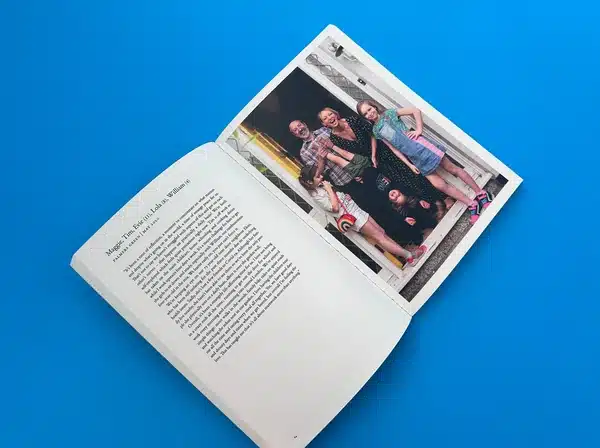
Traditional publishing often involves significant upfront costs, including editing fees, marketing expenses, and sometimes contributions to printing costs. We offer competitive pricing with transparent cost structures, allowing authors to budget effectively.
Authors who have chosen Ex Why Zed report substantial savings compared to traditional publishing costs, enabling them to allocate funds to marketing and promotion.
| Expense | Traditional Publishing | Ex Why Zed Self-Publishing |
|---|---|---|
| Editing Fees | Covered by publisher | Author's responsibility |
| Design and Formatting | Limited input | Full control (services available) |
| Printing Costs | Covered but deducted from royalties | Paid upfront, lower costs per unit |
| Marketing Expenses | Limited support | Author-controlled (optional services) |
| Average Upfront Costs | Minimal | Variable (depends on services chosen) |
Ex Why Zed has optimised its processes, printing and publishing offering to minimise production times without compromising quality.
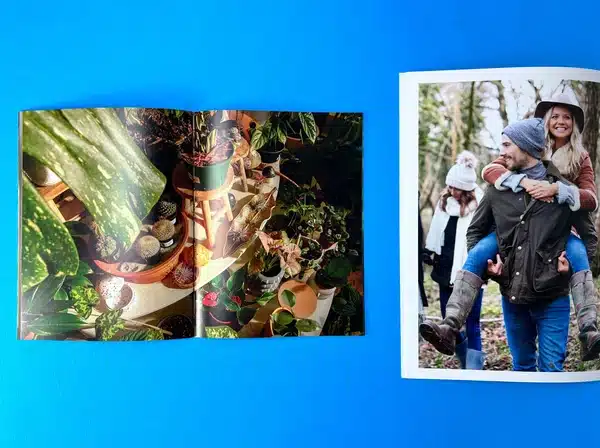
Authors retain full rights to their work, allowing them to make decisions regarding content, design, and distribution.
Ex Why Zed: Offers print runs as low as 1 copy to tens of thousands.
Traditional Publishers: Often require large initial print runs, limiting flexibility.
| Aspect | Traditional Publishing | Ex Why Zed Self-Publishing |
|---|---|---|
| Content Ownership | Shared or publisher-owned | Fully owned by the author |
| Creative Decisions | Publisher-driven | Author-driven |
| Contract Length | Long-term binding | No restrictive contracts |
| Revisions and Updates | Difficult to implement | Easy and at the author's discretion |
| Rights to Adaptations | Often held by publisher | Retained by the author |
Traditional publishers often offer royalties ranging from 5% to 40%. Self-publishing with Ex Why Zed allows authors to retain 100% of their profits after covering printing costs.
Authors have the liberty to set their own pricing, enabling strategic positioning in the market to maximise sales and profits.
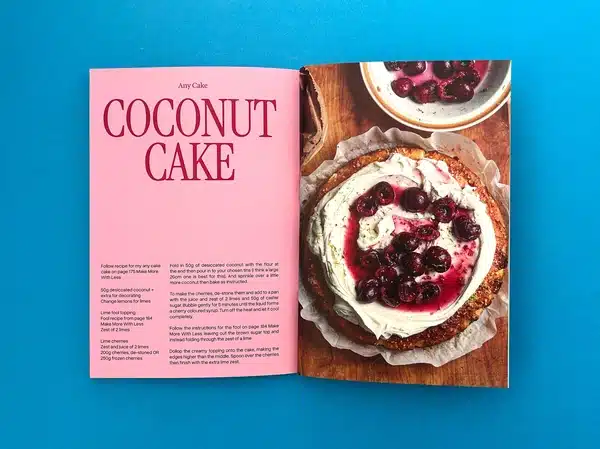
Ex Why Zed is highly regarded for its responsive and helpful customer service team, providing support throughout the publishing process. Catch them on hello@exwhyzed.com, call on 01206 766647 or in the Live Chat during office hours.
Ex Why Zed provides assistance with design, layout, and formatting without extra fees, whereas traditional publishers may charge for additional services or limit them to select authors.
With years of experience in the printing industry, Ex Why Zed brings valuable insights to the table, helping authors navigate the complexities of self-publishing.

Ex Why Zed accommodates a wide range of book types, catering to various genres and styles.
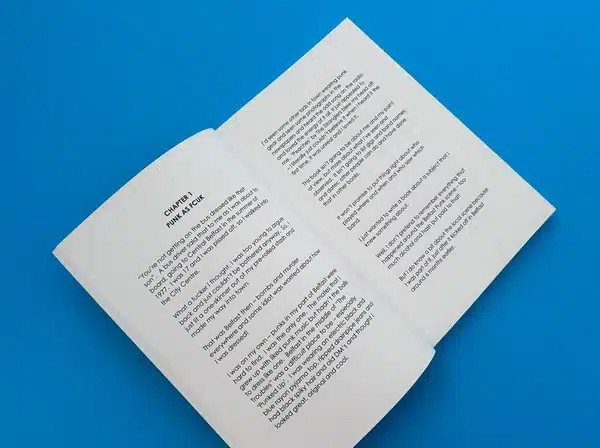
Authors who have collaborated with Ex Why Zed consistently praise the company's professionalism, quality of work, and supportive staff. These positive reviews reflect a high level of customer satisfaction and trust in their services.
Self-publishing with Ex Why Zed presents a compelling alternative to traditional publishing. The advantages of cost-effectiveness, time efficiency, creative freedom, higher profit margins, exceptional support, extensive experience, and flexible options make it an ideal choice for authors seeking control over their publishing journey. By partnering with Ex Why Zed, authors can bring their visions to life on their own terms while ensuring a high-quality end product.
Printing A5 booklets can feel overwhelming, especially with budget constraints and so many layout options to consider. Their compact size and informative nature make them perfect for impactful branding and communication, but finding cost-effective solutions can be tricky.
This guide is here to make it easier. We’ll walk you through the diverse uses of A5 booklets, the best printing options, and how to estimate costs effectively. Plus, we’ll share insider tips to help you cut costs while maintaining quality.
By the end, you'll be well-equipped to navigate A5 booklet printing in the UK and make smart choices to maximise your investment. Let’s dive in!
Several factors influence the final cost of printing A5 booklets. While some, such as page count and ink type, are straightforward, others may be less obvious. Key elements affecting the cost include:
You can also check out our video on booklet printing guide to get actionable tips and insights on brochures, zines, and catalogues.
Remember, the idea is not just to find the cheapest option but to strategically select a blend that aligns with your brand image and audience expectations while fitting within your budget.
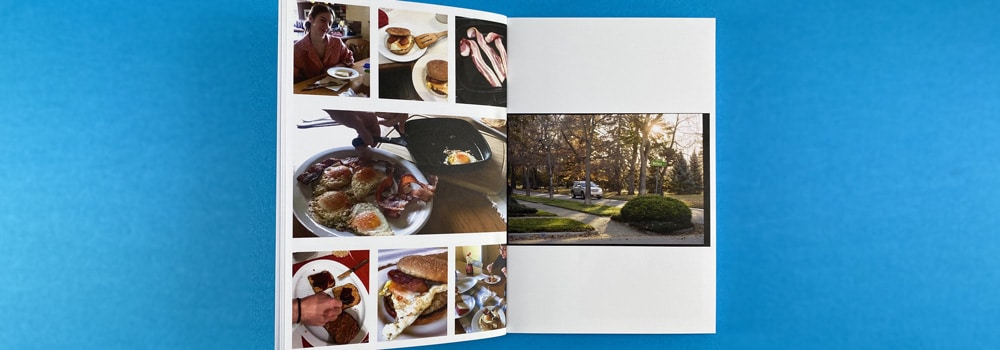
A5 booklets are incredibly versatile and perfect for a wide range of business needs. Their compact size and ample page space make them a go-to choice for various purposes. Whether you're looking to advertise your brand through postcards, flyers, leaflets, or a newsletter, showcase your products, or provide detailed manuals and guides, A5 booklets have got you covered.
Think of them as the ultimate multi-tasker in your marketing toolkit. They’re small enough to be easily carried around but large enough to hold all the essential information you want to share. So, let’s dive into how A5 booklets can boost your business and help you connect with your audience effectively.
A5 booklets are one of the fantastic marketing materials you’ll need! Their handy size is perfect for sharing important information about your business without the bulk of larger posters. You can distribute them at trade shows, exhibitions, or even in stores, and they’re easy for customers to carry around and read later.
Whether you leave them at a help desk or hand them out door-to-door, A5 booklets can boost your brand’s visibility and make your advertising campaigns more effective. They’re a smart, portable way to get your message into the hands of potential customers.
A5 booklets are perfect for product catalogues. They let you showcase a wide range of products in a neat and attractive way. Even though they’re compact, they have enough space for detailed product lists, high-quality images, and key information.
These high quality booklets offer a fun-sized, effective way to present your products, making it easy for customers to browse through your offerings. Adding colour pages can make your catalogue even more eye-catching, blending great visuals with essential details to create a truly appealing package.
Five booklets are perfect for manuals and guides. Their size strikes the right balance, offering enough space for detailed illustrations and instructions while remaining easy to handle. Whether you need a training manual for your team or an equipment guide for users, A5 booklets are a great choice.
You can opt for coloured or black-and-white pages for exceptional print quality, depending on what best highlights the important information. This flexibility ensures that your manuals and guides are not only informative but also user-friendly, making it easier for readers to understand and follow along.You can check out this video for information on different creative uses of booklet printing and more.
To estimate A5 booklet printing costs, consider factors like quantity discounts, booklet design, and whether you choose online or local printing. While some costs are clear, others depend on various factors. Let’s break down these details to get a clearer picture.
Quantity discounts can significantly reduce the cost of book printing A5 booklets. The more you print, the lower the cost per unit, which is great for large-scale advertising or promotions. However, buying in bulk might not be ideal for short-term needs or frequently changing content. Weigh the benefits against storage and future needs before committing to large orders.
Choosing between online and local print shops can really impact your A5 booklet costs. Online printers often offer better rates and more options because they have lower overheads and serve a larger customer base. Plus, you can easily compare prices. Local print shops, however, can provide personalised service and fast turnaround without delay in the delivery date. Weigh the benefits of each based on your needs, budget, and timeline.
Customisation can really make your A5 printed booklet stand out, but it usually costs more. Extras like special paper, unique binding options, embossing, and custom designs add to the cost but can boost your booklet’s look and effectiveness. Professional design services can also ramp up expenses but may be worth it if you’re aiming for a strong impact on your audience.
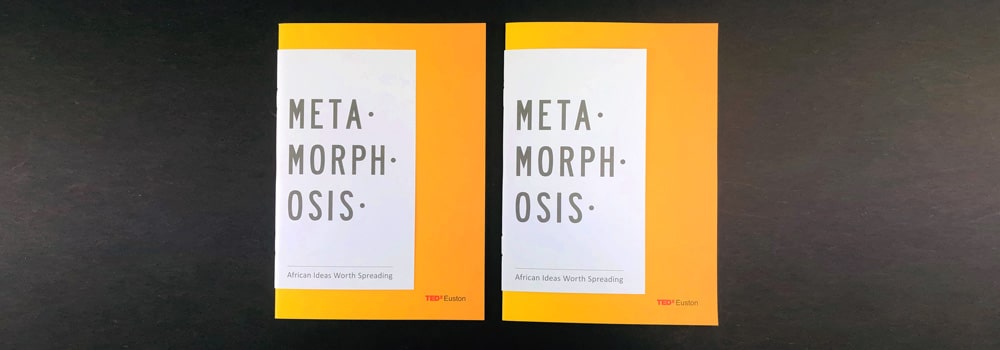
To help you manage your printing expenses, we’ll explore several cost-saving tips. We’ll cover strategies like choosing the right printer, the perks of bulk ordering, and effective design principles.
Choosing the right printer can make or break your A5 booklet project. High-end printers offer great quality but at a higher cost, while budget printers may lack in quality or options. Research your options—read reviews, order sample prints, and check for special discounts. Also, consider delivery time and location, as distant printers might add extra shipping costs or delays. Find a printer that balances quality and cost to fit your needs.
In the printing world, ordering in bulk can lead to big savings. Larger orders often come with significant discounts because the cost of setup and design is spread across more booklets. This works well for content with a long shelf life. However, for content that changes frequently or is time-sensitive, bulk ordering can lead to waste, negating the savings. So, weigh the benefits of discounts against potential wastage to make the best choice.
A professionally designed booklet doesn't always require an outsized budget. By implementing a few smart design principles, you could create an impact without denting your pocket. Here are some tips to optimise design without escalating costs:
Experiment with digital design tools available online to minimise professional designer charges. Use templates where possible and then add personalised touches to tailor them to your brand.
For top-notch A5 booklet printing at great rates, ExWhyZed is your go-to choice! We offer extensive customisation options, including page colour, binding, finishes, and materials. Our pricing adjusts based on your selections, ensuring you get the best value.
Get a quick cost estimate using our online project builder. Just enter your booklet’s details, and we’ll provide a quote. For more information or to start your project, email hello@exwhyzed.com. Let’s make your printing project a success!
Printing A5 booklets involves several key decisions that impact cost and quality. From choosing the right paper and finishes to selecting between online and local printers, each choice affects your budget. By balancing these factors and applying cost-effective design strategies, you can create a booklet that meets your goals and impresses your audience while staying within your budget. Use this guide to make informed decisions and achieve a successful, cost-effective printing project.
The cost varies significantly depending on various factors, like paper type, page count, and colour options. As an estimate, basic A5 booklet printing can start at around £58 for an order of 25 copies, with prices escalating based on additional customisations or higher quantities.
The overall cost of booklet printing depends heavily on factors like the number of pages, paper quality, ink used, perfect binding style, etc. A Standard A5 booklet’s printing starts from approximately £58 for a minimum order, with costs rising for more extensive or premium selections.
Several factors impact the cost of A5 booklet printing, including the number of pages, paper type and quality, colour and ink usage, finish options, and binding style. The chosen printer's pricing structure, quantity discounts, and any additional services like customisation or design could also significantly affect the costs.
Saddle-stitched (or stapled) binding style is often the most affordable option, given its minimalist approach with merely a few staples along the spine. However, the ideal binding style should be chosen as per the intended use and desired durability of the booklet.
Turnaround times are primarily dependent on your chosen printer and their specific production schedules. On average, it can range from a few days to a couple of weeks, though express services might offer quicker turnarounds at an additional cost.
Digital printing serves as a cost-effective alternative to traditional offset printing, particularly for short runs or customised printing requirements. With reduced setup costs and quicker turnaround times, digital printing can offer considerable savings without compromising on quality.
Keeping content concise, limiting colour usage, optimising space usage, and leveraging available design templates or digital design tools can significantly reduce design-related costs. Additionally, matching the design complexity to the booklet’s purpose and audience can avoid unnecessary expenditure.
Answer: Less than you think, with Ex Why Zed!
Printing with us means your books arrive months, if not years, ahead of when they would through a traditional publishing company. You also get to keep more of the profit and have more creative control over the design, styling, size, pagination and finish.
As an aspiring author, self publishing a book is exciting since it allows you total creative and financial control of your work. However, the different costs involved in the process can be overwhelming.
Whether you have a few thousand dollars to pour into your passion project or are working with a tight budget, knowing what expenses to anticipate can make the process smoother and less stressful.
This article breaks down the key expenses of self-publishing your book in 2024 and future years. At Ex why Zed, you understand the best way to approach the process. With this blog, you will feel more ready as you work towards becoming a published author!
Self-publishing involves many steps, each requiring a financial investment—from editing and design to marketing and beyond. The total cost to self-publish a book can range from a few hundred to several thousand dollars, depending on your specific needs, the quality you aim for, and the complexity of your work. Let's look at each of these costs in detail!
Perfect Bound, Professional and Flexible in their use.
A Large Solution for your Art, Writing and Design
Photo Books, Student FMPs, High End Brochures
The three factors which affect the price of printing a book most are:
• The size
• The number of pages (which affects the binding type)
• The quantity
Increasing any of these three elements will move the cost upwards. Reducing these factors will help keep your printing costs down.
To a lesser extent, choosing silk or gloss is cheaper than uncoated. Choosing a more flexible 250gsm cover is cheaper than 300gsm or the rigid 350gsm. Opting for 115gsm Uncoated, 130gsm silk or gloss inside pages reduces the price in comparison with 170gsm.
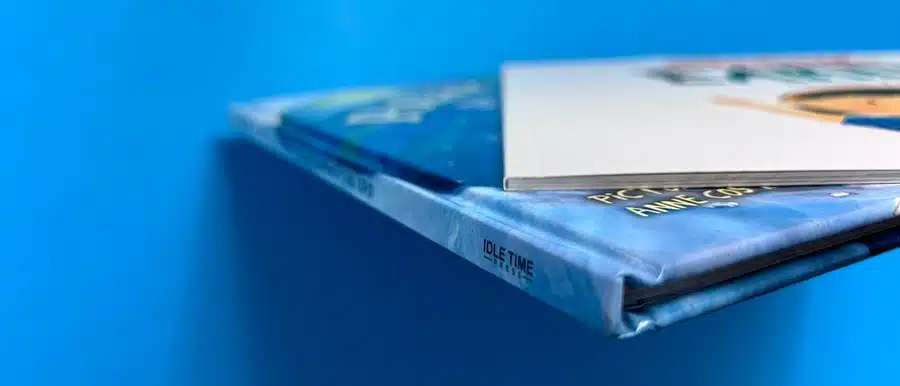
The pecking order of sizing costs, starting with the lowest, is A6 > A5 > 240x170mm > 210x210mm > A4. Remember at Ex Why Zed we print all the custom sizes in between these common sizes. So A6 is cheaper than A5 which is cheaper than 240x170mm etc.
If you add pages to the design, that means we need more paper to print the books so that is directly related to the overall price.
Printing more copies will increase the bottom line but in turn also decreases the price per book. So for example, printing 100 copies would cost more than printing 25. However, when you print 100, the price per copy will be less.
For example, 100 copies of an A5 Perfect Bound book with 84 pages would cost £338. This works out at £3.38 per book. If you increased the print run to 500 copies then we can print the same book for around £1350 which is only £2.70 per book.
This would form an impressive publication to fill with your art, photography or creative writing. Similar publications have a retail cover price of £10-£15 so this gives you a healthy profit of around £7-12 per copy sold. IF, you self-publish with Ex Why Zed. If you go through a publisher, expect them to take 40-50% of the profit.
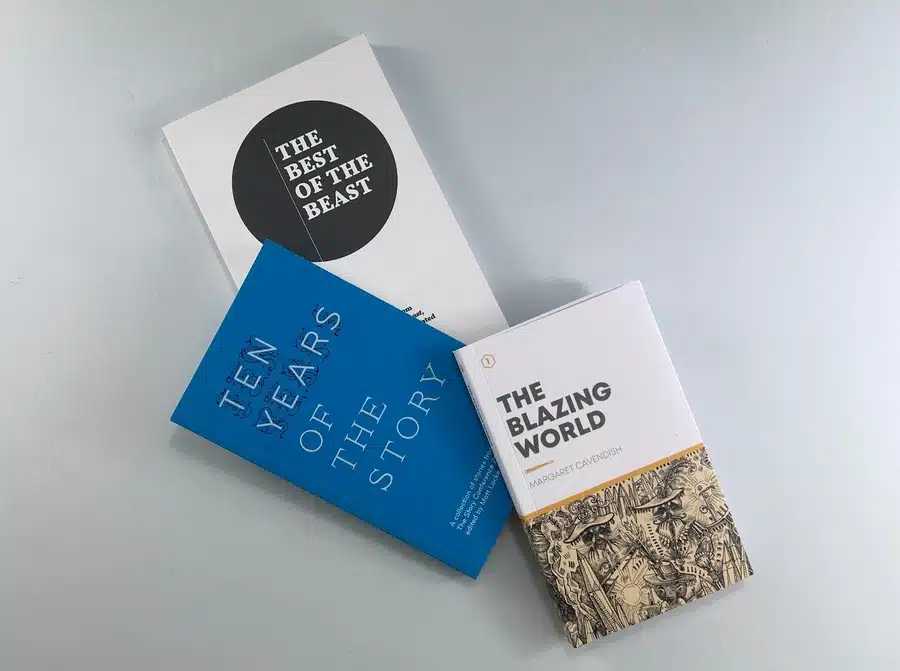
Enjoy browsing through our portfolio of self published books to see what can be achieved.
There are over 500 case studies in our Portfolio now and remember, these are all real life projects we have printed NOT the mickey mouse, CGI nonsense all the other sites display.
Ultimately all we need to print your book is a high resolution PDF file. This can be achieved using almost every piece of software.
If you are looking to design the artwork yourself, then take a few minutes to read our guide of the Best Software for Book Design.
An attractive, professionally designed book cover isn't just eye-catching; it's one of your most powerful marketing tools. A great front and back cover can significantly boost your book's sales, sometimes leading to a sales difference of up to 1000%.
The cost of cover design can vary greatly, primarily depending on the designer's expertise and the complexity of the project.
Just Bear With Us
If you are printing a children's book and need it designed first then speak to our friends at justbearwithus.com who will create a stunning design to bring your story to life. Once the design is signed off, come back to us for discounted prices on your printing.
While we recommend Adobe InDesign, Affinity Publisher or Quark Express for designing your book, if you prefer to outsource this process. Our guides to finding a designer on People Per Hour and contacting a designer on Fiverr are great starting points for identifying someone to help out with making your book look superb.
Editing is a crucial step in getting your manuscript ready for publication. A well-polished, error-free text enhances readability and adds credibility to your work. Note that the cost of professional editing services varies, largely depending on the type of editing required and the length of your book.
There are three main types of editing: developmental editing, copyediting, and proofreading. Below, we'll explore each type and the associated costs in detail.
Developmental editing, or content or substantive editing, is an in-depth review of your whole manuscript. This process assesses 'the big picture' — elements like story arcs, character development, plot lines, and themes. The purpose of a Development Editor (DE) is to ensure that your story makes sense, flows well, and doesn't contain any inconsistencies or gaps in subject matter.
Copy editing, also known as line editing, focuses on improving your manuscript's clarity, tone, and readability. Here, an editor picks apart your sentences, corrects sentence structure, fixes grammar issues, highlights plot holes, and polishes your draft to perfection. This step might even result in a reduction of your word count if deemed necessary.
Proofreading is the final review of your manuscript to catch and correct any lingering punctuation, spelling, grammar, and formatting errors. This is one of the additional services that ensures the overall quality of your writing before publication, as you don't want to spot errors after the book has been published and is in the hands of readers. Thus, proofreading is crucial in creating an error-free, polished product.
Proofreading costs are usually calculated based on word count. They are either charged at an hourly or daily rate or per 1,000 words.
Prices can fluctuate based on factors such as the editor's experience, turnaround time, different genres, and the condition of the manuscript when submitted for editing.
Formatting is the process of arranging the number of pages and text to ensure they look professional and are easy to read. This involves consistency in margins, font choices, line spacing, paragraph alignment, and chapter headers.
The cost of professional book formatting varies depending on the complexity and length of your manuscript. For example, a novel with minimal special formatting needs would be less costly to format than an illustrated textbook with numerous images and charts.
E-reading is very popular today, and turning your book into an ebook is a good idea. It allows you to reach more readers around the world and makes your book available to more people.
Converting your printed manuscript into an ebook involves tasks like applying styles, reformatting for different screens, adding metadata, and meeting retailer specs. If you have the knowledge then you can convert your book into a Reduced Size PDF with a couple of clicks.
Another option is to produce it as a turn-page book on a number of the automated sites. You may well be able to find someone on peopleperhour or fiverr who can complete this process quickly and for just a few pounds.
The International Standard Book Number (ISBN) is a unique number assigned to each version and format of a book, like an identification number. For example, a paperback, hardcover, and ebook version of the same book each require a separate ISBN.
For the ISBN you should go directly to https://www.nielsenisbnstore.com/ who are the UK suppliers. On their site, you secure the ISBN, then download the barcode which can be added to your artwork.
Whether or not you need an ISBN depends on your plans for distributing your book. If you plan to sell your book in bookstores, online retailers, or libraries, you'll need an ISBN. Some self-publishing platforms provide an ISBN for free, but it's usually registered under their name, which may limit your distribution options. If you want to own the rights to your ISBN, you'll need to purchase it.
Print-on-demand (POD) services are an attractive option for independent authors. This service prints books only when an order is placed, allowing indie authors to avoid high upfront costs and the issue of storing bulk orders.
At Ex Why Zed we have no minimum order quantity so we can print one copy for you. However, the more copies you print the lower the price per book will be.
Once your book is ready for launch, the challenge is to get it noticed. The effort and resources you put into marketing and promoting your book will significantly influence its visibility and sales.
Social media is your best friend here. You have the potential to tap into a global market of 7 billion readers for free. Yes, for FREE! Creating an Instagram, Facebook or TikTok account costs nothing and you can start posting content immediately.
Paid Advertising includes costs for Amazon, Google, and Facebook ads. Depending on the platforms and duration of your ad campaigns, the cost varies.
Professional Website: Having a professional website or blog is a crucial platform for promoting your book. Costs might include domain registration, web design and development, and hosting. Platforms like Wix enable even novice web designers to quickly and efficiently set-up an online presence.
Email Marketing: This involves costs for email marketing services and platforms to manage your subscriber lists and send out newsletters or promotional emails. Prices vary depending on the service provider and the size of your subscriber list.
Book Launch Events: Organising book launch events, signings, or speaking engagements can help generate buzz around your book but also add costs for venue hire, refreshments, and promotional materials. Costs vary widely based on the location and scale of the event.
PR and Media Outreach: Hiring a PR firm or a press release distribution service to get media coverage can be a cost-effective way to gain exposure. Costs for PR services vary widely, from a few hundred dollars for a single press release to thousands for comprehensive PR campaigns.
Remember, effective marketing begins even before your book is published, so it's wise to budget for these costs early in your publishing journey.
Self-publishing can get pretty expensive, and you might not be ready for that. If that's the case, finding ways to cut costs without losing quality is key.
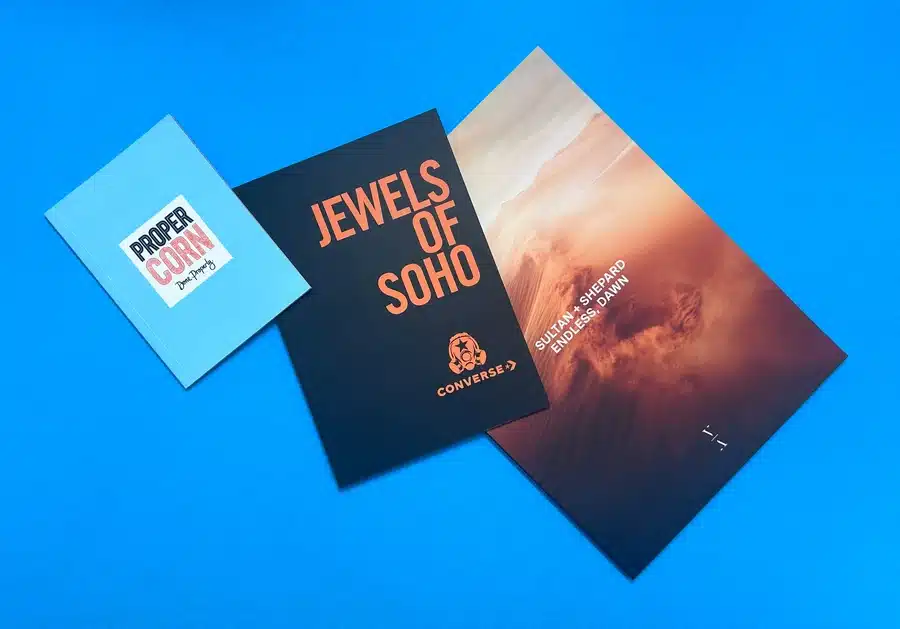
You could use budget-friendly tools for formatting, design your own book cover, or even rely on beta readers for those first rounds of the editing process. Don't forget about the free promotional tools that many self-publishing platforms offer, and consider using social media or blogging to market your book without spending a dime.
Editing, designing, and promoting your book all cost money, and sometimes they might push you past your budget. If that happens, don't worry—there are free or affordable tools out there that can help you create a high-quality book without breaking the bank.
Grammarly: This tool can help make your writing clearer and grammatically correct. It can act as an initial check before hiring a professional editor.
Canva: A user-friendly design tool that can assist in creating a basic cover design or marketing materials for your book.
BookFunnel: An affordable platform for distributing ebooks directly to readers, which can be handy for sending out review copies.
MailChimp: A useful tool for managing your email list and sending out professional-looking newsletters.
Crowdfunding is a way to raise funds for your self-publishing ventures. Its platforms offer a unique means of validating your book idea, pre-selling copies, and funding your publishing expenses through the collective effort of individual supporters. Here are some popular platforms that authors can use:
Kickstarter: Perhaps the most well-known crowdfunding site, Kickstarter has a specific section for publishing projects.
GoFundMe: GoFundMe is a widely used tool for all kinds of fundraising campaigns, including self-publishing.
Patreon: Patreon allows fans to fund your work on a recurring basis, providing a consistent income stream.
Self-publishing a book can be overwhelming, whether you're a first-time author or have some experience under your belt. The process is time-consuming and often costly, and finding the right solutions can be a real challenge.
That's where Ex Why Zed comes in. We can turn your book ideas into reality without depending on traditional publishing methods, saving you time and money. This gives you full control over the book publishing process and gets your book to you in just a few days. With fair pricing, expert advice, and competitive quotes, we can help you make the most of your budget.
At Ex Why Zed provides high-quality printing across the UK. You can choose from various paper finishes, including uncoated silk or gloss, to keep costs down while maintaining quality.
Ready to get started? Get in touch with us now!
Understanding the cost of self-publishing is important for any author starting out with their first book. While it can be expensive, there are ways to save money and improve your publishing experience.
Invest in professional services when needed, use free or low-cost tools where possible, and keep going. The thrill of seeing your print book and sharing your story with the world is worth the investment.
Whether you're writing a novel, a guide, a children's book, or poetry, don't let anything stop you from achieving your publishing goals.
The average book cost to self-publish in 2024 ranges depending on the print spec of the book. Consider the size, number of pages and quantity. Expenses include editing, formatting, book design from a book designer and cover, ISBN registration, book marketing, and print-on-demand costs. Actual costs will depend on various factors like word count, quality required, and individual needs.
While you can use various free tools for book creation, it is nearly impossible to self-publish a book entirely for free. High-quality editing, professional cover designs, ISBN registration, marketing, and even printing have costs. At Ex Why Zed our prices are fair and enable you to make a decent profit on your project.
Self-published authors make money by selling their books directly to a wide audience of readers, often via online retail platforms like Amazon KDP, Lulu, or Apple iBooks. They have control over the pricing of their books and earn a percentage of each sale, called royalties, which is their primary income.
Yes, apart from traditional and self-publishing there's also the option of hybrid publishing–a middle-ground that combines aspects of both which is the best fit for many. In hybrid publishing, authors contribute upfront costs in return for higher royalties while also enjoying some of the publishing services and distribution associated with the traditional publishing industries.
Managing self-publishing costs means budgeting carefully and focusing on key services like editing and cover design. Use affordable tools for tasks like formatting and take advantage of free marketing through social media and other platforms.
Costs can vary to self-publish a poetry book. Factors like book-length, cover design, and distribution influence expenses.
Examples like Shooter Literary Magazine, Cunning Folk and Popshot provide inspiration to peers looking to attack this market.
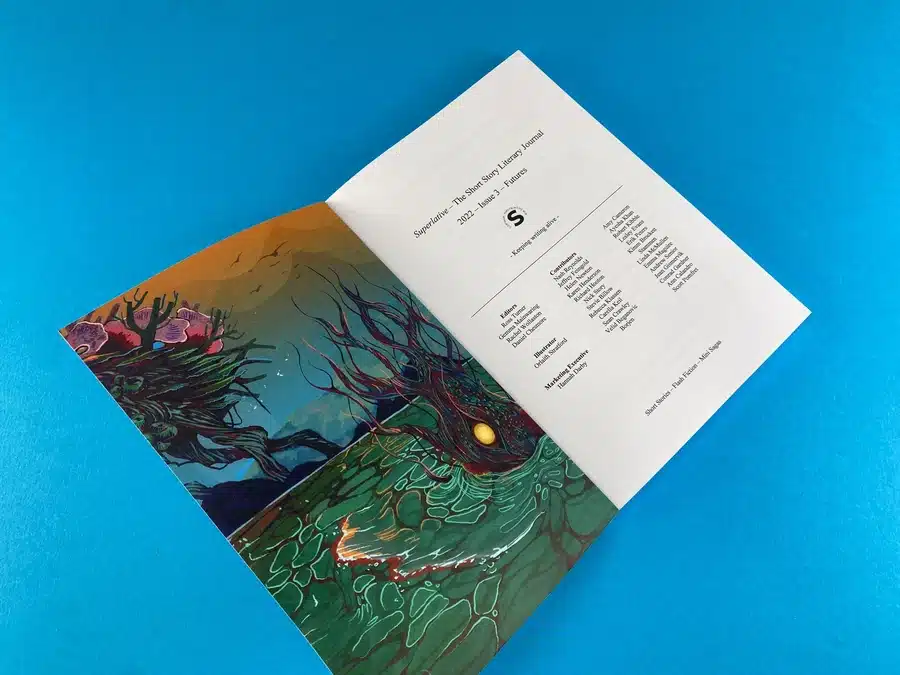
Extra, Extra! Read all about it! The world of newspaper design is vast, and it can be challenging to know where to start. Whether you're a seasoned designer or just starting with newspaper design, this blog post is for you. We will take you through the fundamentals of newspaper design, from creating a strong headline to exploring innovative layout ideas. You'll also learn how to master the inner page layout and maintain consistency across pages. We'll provide tips on dos and dont's of newspaper design and share tried-and-tested strategies for success.
But that's not all - we'll also delve into the importance of creativity in newspaper printing and design. A unique and eye-catching layout is essential in today's competitive market. So let's get started on this journey to winning newspaper style ideas and inspiration!
When it comes to newspaper design, understanding the fundamentals is crucial. The grid layout serves as the backbone of a well-designed newspaper, organising content in a visually appealing and structured manner. Captivating headlines play a vital role in grabbing the reader's attention and enticing them to delve further into the articles. Achieving a cohesive design involves striking a balance between editorial content and advertisements, ensuring a seamless reading experience. Subheads act as signposts, guiding readers through the main text and enhancing comprehension. Typography also plays a significant role in newspaper design, enhancing readability and setting the tone for the publication. By mastering these fundamentals, publishers can create visually appealing and engaging newspapers that captivate their readers.

Enhancing readability and page scanning is a breeze with well-crafted subheadings. These informative and engaging subheads break up content, creating a hierarchy of information that guides readers through the text. Subheads offer the perfect opportunity to tease upcoming sections, keeping readers engaged and intrigued. So, whether you're publishing in The New York Times or a local newspaper, don't underestimate the power of subheads in capturing and retaining your reader's attention. They're the secret sauce to winning newspaper styles.
Mastering the art and science of newspaper layout and flow involves understanding the psychological impact it has on reader engagement. By employing visual hierarchy, you can guide readers through the content, ensuring they don't miss important information. Strategic use of white space creates a clean and organised layout, enhancing readability. Balancing text and imagery is crucial for an aesthetically pleasing design that captures the reader's attention. So, whether you're publishing in The New York Times or creating your own newspaper, mastering layout and flow is essential to capture and maintain your reader's attention.
Staple Bound and Ready to Distribute
Promote Your Brand to a New Audience
Ideal for University Student Hand Outs
Dive into the rich tapestry of newspaper history and discover how design has evolved over the centuries. From the refined elegance of broadsheets to the punchy appeal of tabloids, every style tells a story.
At the heart of our ethos at Ex Why Zed lies the belief that every newspaper should be as unique as its creator. Let's explore how you can harness the power of design to make your mark in the world of print.
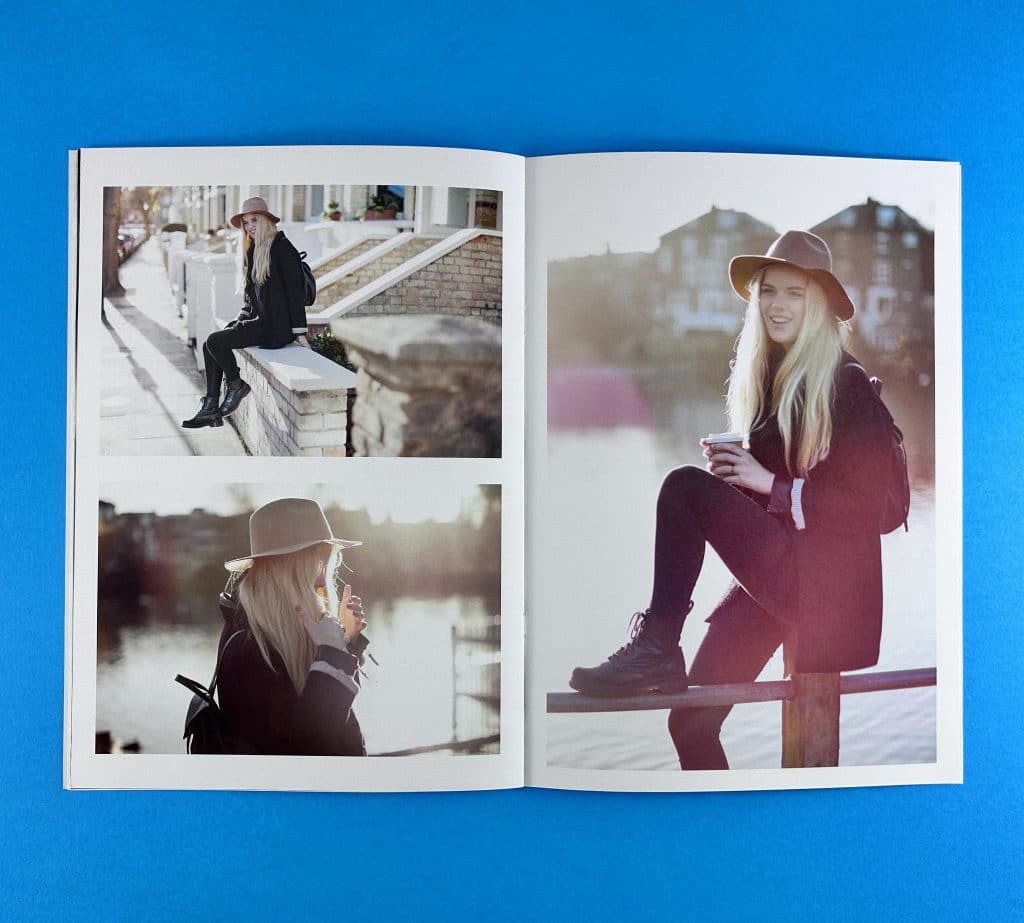
The Telegraph (UK): Best At: In-depth analysis and authoritative commentary. Iconic Because: A British institution since the 19th century, The Telegraph has consistently delivered quality journalism, earning a reputation for reliability. Graphic Design Standout: Elegance meets functionality. Their design balances tradition with modern aesthetics, making the newspaper both visually appealing and easy to navigate.
La Repubblica (Italy): Best At: Dynamic reporting with a European touch. Iconic Because: Established in the 1970s, La Repubblica quickly became a staple for Italian readers, known for its fearless journalism and liberal stance. Graphic Design Standout: A lively blend of Italian flair and structured design. The newspaper seamlessly incorporates vibrant images with its fluid typography.
The Hindu (India): Best At: Comprehensive coverage with a South Asian perspective. Iconic Because: As one of India's oldest newspapers, The Hindu is revered for its balanced reporting and insightful analysis. Graphic Design Standout: A classic design that places emphasis on content. The layout is organized, with clear sections and a harmonious colour palette.
El País (Spain): Best At: Reporting Spanish news with a global context. Iconic Because: Spain's leading newspaper is known for its investigative journalism and its commitment to democratic values. Graphic Design Standout: A blend of modern European design with traditional elements. The use of imagery is particularly striking, often telling a story in its own right.
Sydney Morning Herald (Australia): Best At: Combining Australian news with global insights. Iconic Because: A staple for Australians, the SMH is renowned for its independent journalism and in-depth analyses. Graphic Design Standout: Fresh and vibrant. The design captures the Australian spirit, with bold headlines and a breezy layout.
When it comes to styling for print perfection, the cover design is key and there are several key elements to consider. First and foremost, the cover needs to be visually appealing in order to grab the reader's attention. This can be achieved through the use of eye-catching colours, typography, and layout.
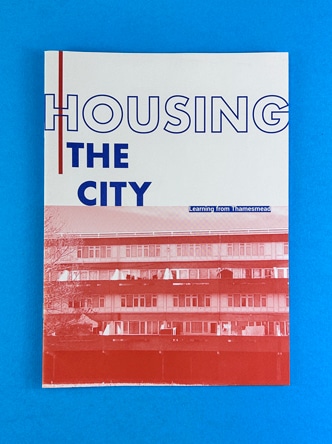
One of the most important aspects of a newspaper cover is the main headline. It should capture the essence of the front page story and entice readers to delve further into the publication. A compelling headline can make all the difference in attracting readers and piquing their curiosity.
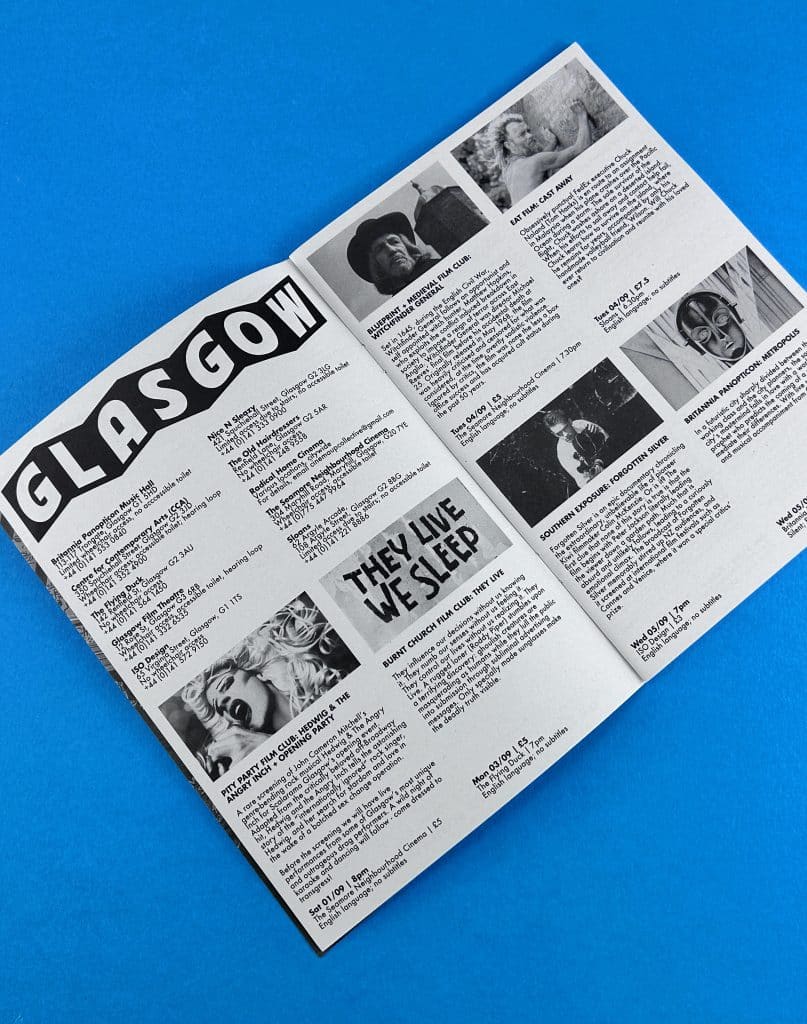
In addition to a strong headline, the use of compelling images or illustrations on the cover can greatly enhance its appeal. Visuals have the power to convey information quickly and effectively, drawing readers in and enticing them to explore the content further.
Furthermore, it is crucial to design a cover that reflects the tone and theme of the publication. A cohesive and consistent aesthetic helps to build brand recognition and loyalty among readers.
Lastly, incorporating NLP terms, can add an extra layer of engagement to the cover lines and teasers. These terms not only optimise the content for search engines but also demonstrate a deep knowledge of the industry.
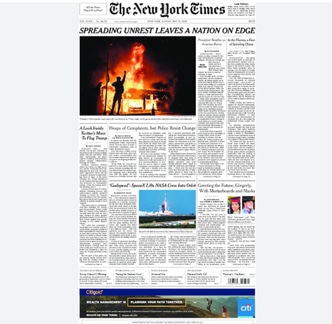
Your font size plays a crucial role in capturing readers' attention and ensuring readability. Different age groups have varying levels of visual acuity, so it's important to choose font sizes that cater to their needs. Larger font sizes are ideal for headlines as they grab readers' attention and entice them to read further. Experimenting with font sizes can create visual interest and hierarchy in the layout, making the content more engaging. Customising font sizes based on the target audience and publication style is essential for a cohesive design.
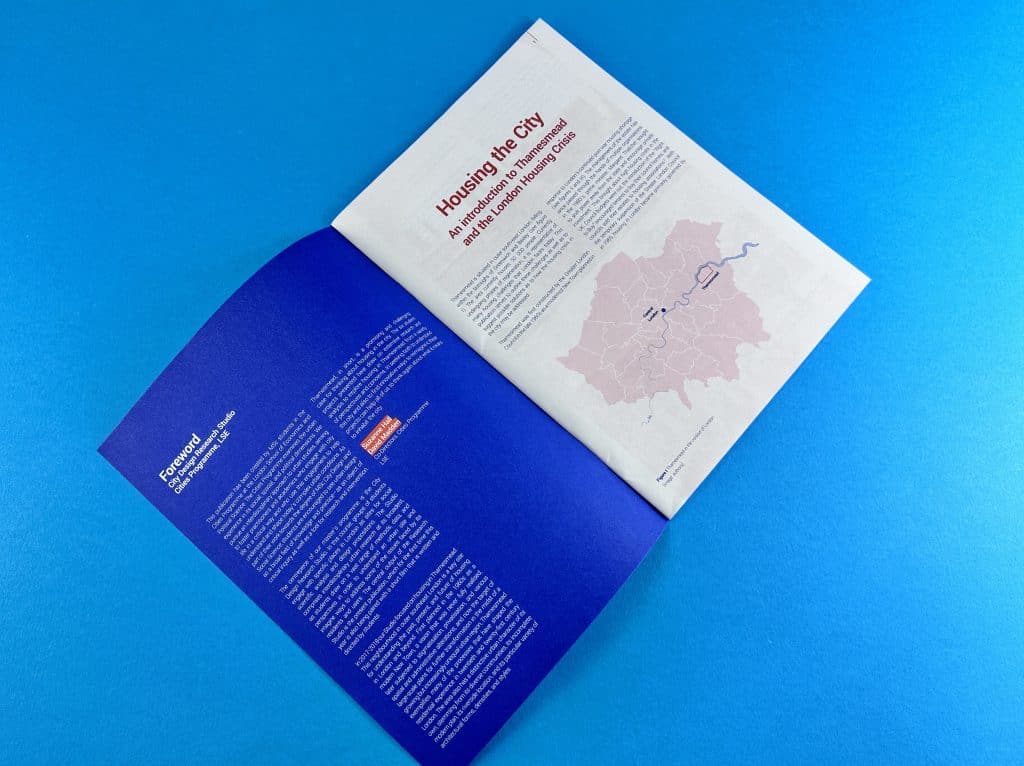
Designing newspaper for print relies on thinking outside the box and creating unique and visually stunning layouts. Embracing asymmetry and unconventional grids can give your newspaper a modern and dynamic look. To engage readers, consider incorporating interactive elements or multimedia into your layout. However, it's important to strike a balance between creativity and usability to ensure a seamless reading experience. By pushing boundaries and exploring innovative layout ideas, you can create a newspaper that captures the reader's attention and keeps them coming back for more.
There are several strategies that can help create a seamless flow from the cover. Consistency is key, so maintaining the same typography, colour scheme, and overall style throughout the publication is important. Page numbers, like you see on the image here can guide the reader through the newspaper and also act as a vehicle for you to reference back to in a Contents page. Effective use of columns and alignment can help organise the content and make it more reader-friendly. Incorporating pull quotes and sidebars can highlight important information and grab the reader's attention.
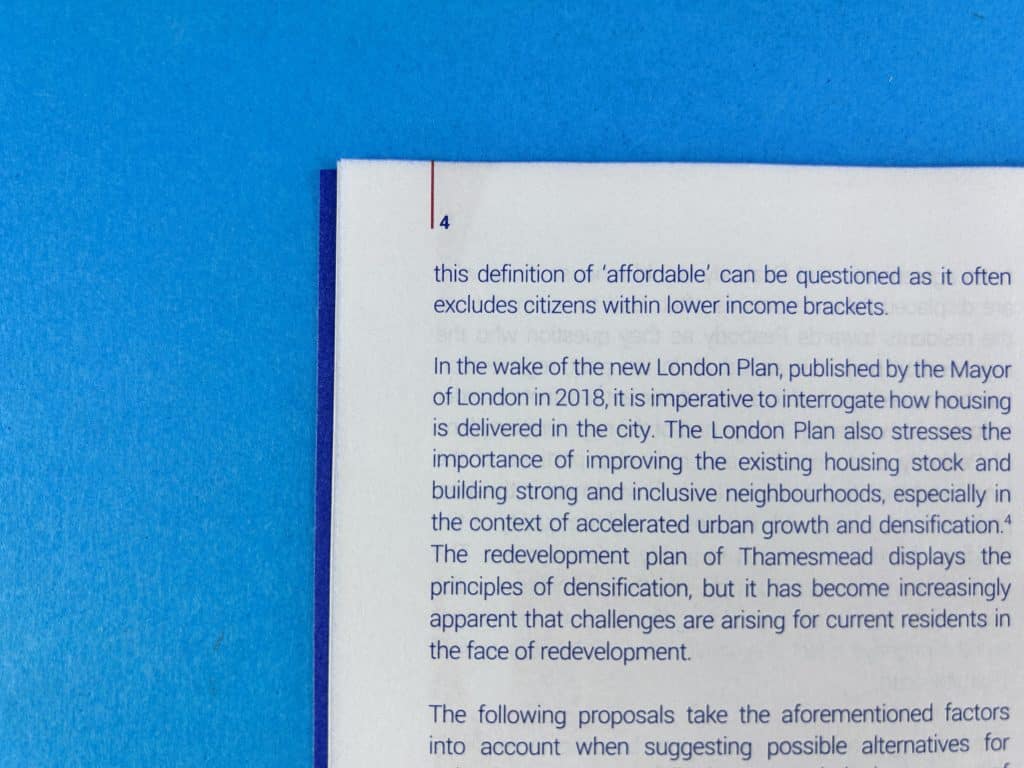
Finding the perfect equilibrium between text and visuals is crucial for captivating reader's attention. High-quality images that complement and enhance the written content can elevate the overall visual appeal of the newspaper. Infographics and data visualisations are effective tools for presenting complex information in a digestible format. Experimenting with different image placement and sizing options adds visual impact and creates a dynamic reading experience. The balance between text and imagery is the key to creating an engaging and visually appealing newspaper layout.
Consistency is key when it comes to maintaining a cohesive visual identity throughout your newspaper publication. By utilising design elements that are consistent across pages, you can establish a strong and recognisable brand presence. One way to achieve this is through the use of style guides, which ensure uniformity in typography and colour palette. Additionally, applying consistent spacing, margins, and alignment throughout the publication creates a sense of coherence. Incorporating recurring design elements or motifs further enhances brand recognition.
There is a small spine gutter on a stapled newspaper, where a fraction of the content is slightly obscured. This only tends to be around 1mm though. You can see on the image here there is a double page spread image and the mouth is right on the page join.
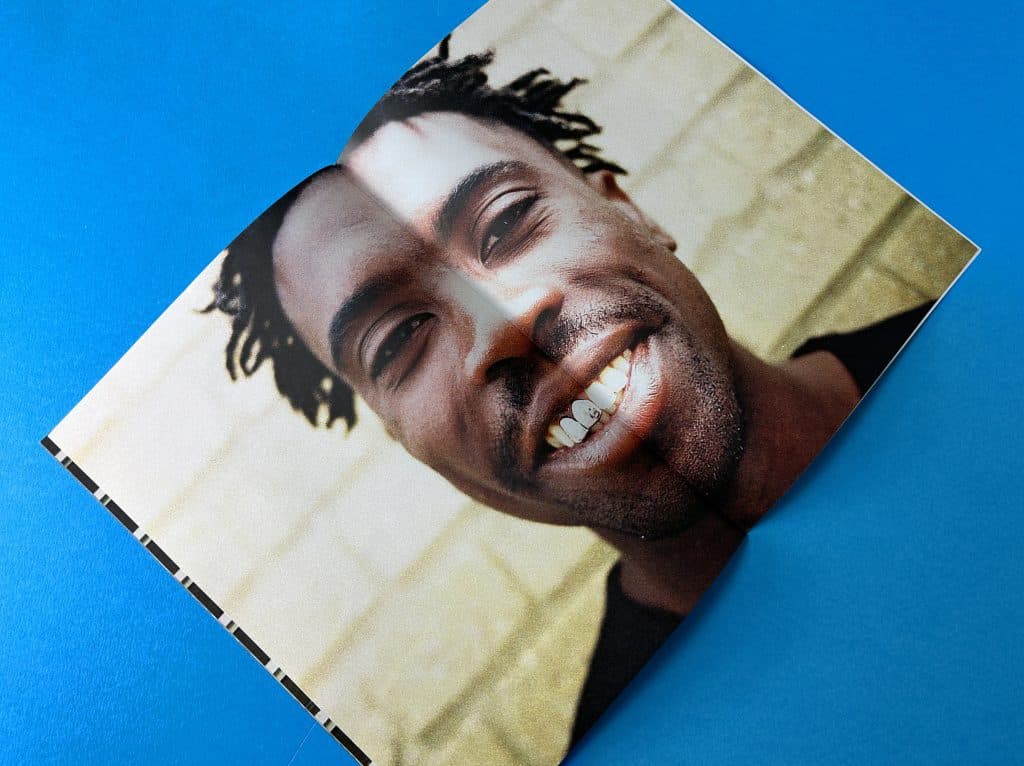
Simplicity in design is key to ensuring easy navigation for readers. Avoid cluttered layouts that overwhelm them, instead focusing on clean and organised designs. Proper use of white space enhances readability, allowing the eyes to rest and absorb information more easily. Consistent use of fonts and colours throughout the newspaper maintains visual harmony and helps establish a cohesive brand identity. Remember, a well-designed newspaper layout will engage readers and keep them coming back for more.
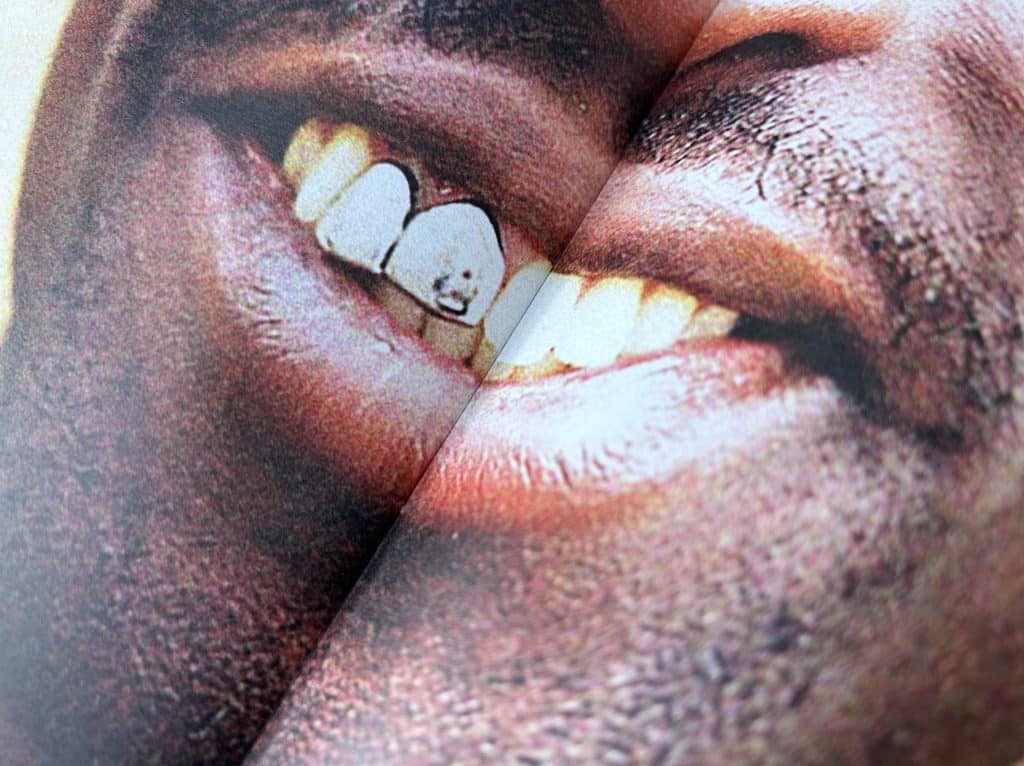
There are several common mistakes that should be avoided. One of the key mistakes is overcrowding the front page with too many elements. This can overwhelm readers and make it difficult for them to find the information they're looking for. Another mistake to steer clear of is using too many different font styles. This can be distracting and make the design appear messy. It's also important to have a clear hierarchy of information, ensuring that the most important stories or headlines are easily distinguishable. Additionally, long paragraphs should be avoided as they can make the content difficult to read. Breaking them into smaller chunks promotes better readability. Lastly, don't forget to proofread for any spelling or grammatical errors. These mistakes can undermine the credibility of the publication. By avoiding these common pitfalls, newspaper designers can create more visually appealing and reader-friendly layouts.
To create winning newspaper styles, it's essential to implement tried and tested strategies for success. One effective strategy is using grid systems to achieve an organised and structured layout. Grid systems help maintain consistency and make it easier for readers to navigate through the newspaper. Another strategy is incorporating visually appealing images that grab the reader's attention and enhance engagement.
Balancing the placement of imagery and text is also crucial for a harmonious look. By following editorial guidelines, such as consistent formatting, newspapers can establish a professional and polished appearance. Finally, understanding your target audience and catering to their interests ensures that the content resonates with readers.
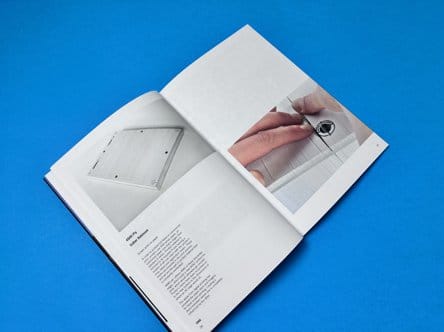
Creativity plays a significant role in newspaper design. Unique layouts, typography, and illustrations capture readers' attention and enhance storytelling. Innovative colour schemes create a memorable reading experience, while thinking outside the box helps newspapers stand out from the competition.
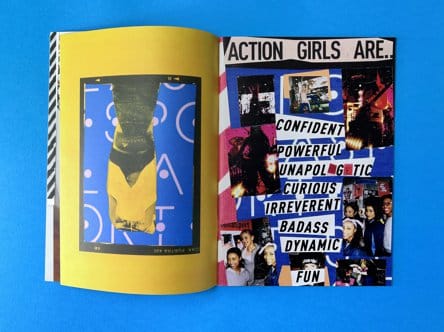
Creating a unique and eye-catching design for newspapers is essential for several reasons. Firstly, it helps establish the brand identity of the newspaper. Secondly, eye-catching designs attract more readers and increase circulation. Additionally, standout designs are more likely to be shared on social media, giving the newspaper more exposure. Lastly, unique designs differentiate newspapers from online sources and create a lasting impression on readers.
Newspaper design is an art that combines creativity, knowledge, and strategy to create engaging and visually appealing content. From the impactful headline to the layout and flow, every element plays a crucial role in capturing the reader's attention. The cover design sets the tone for the entire newspaper, with font size and innovative layout ideas making a big impact. Inner page layout requires a balance between text and imagery, while maintaining consistency across pages. To ensure success, it's important to avoid common mistakes and follow tried and tested strategies. Lastly, creativity is key in newspaper design, as it helps create a unique and eye-catching design that stands out from the crowd. So, let your imagination run wild and create winning newspaper designs that captivate readers.
Staple Bound and Ready to Distribute
Promote Your Brand to a New Audience
Ideal for University Student Hand Outs
Welcome to your Newspaper Design for Print Masterclass – a gateway to the exhilarating world of newspaper printing! Dive deep into the art and science of crafting compelling newspapers that captivate and inform. Whether you're a budding designer or a seasoned pro, this masterclass will elevate your skills, transforming your ideas into print-ready masterpieces. Get ready to embark on a journey that melds creativity with technique, ensuring your newspaper printing projects stand out in a crowd. Let's turn those design dreams into tangible realities!
When it comes to seeking inspiration, there are a few iconic names that immediately spring to mind. Let's dive into the world of newspaper printing and uncover the magic behind these iconic newspapers:

The Guardian (UK):
The New York Times (US):

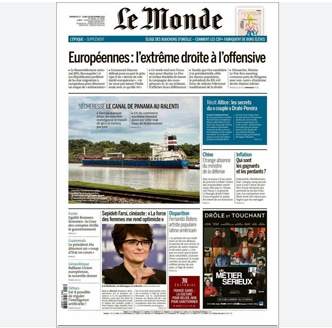
Le Monde (France):
Die Zeit (Germany):

The Times (UK):

Asahi Shimbun (Japan):

In a world awash with publications, these newspapers have carved a niche for themselves through a combination of journalistic prowess and design excellence. Their ability to evolve while staying true to their roots is a testament to their enduring appeal. And, as we craft content in the style of Ex Why Zed, we can draw inspiration from these giants, ensuring our work is not just read, but remembered.
Step aside, mainstream media, and make way for the unsung heroes of the print world! Dive into a realm where design meets storytelling in its most avant-garde form. These niche publications aren't just magazines; they're masterpieces, each page a canvas of creativity, innovation, and passion. As you embark on this journey, prepare to be enthralled by the genius of these under-the-radar gems. From the art of slow living to the intricacies of tech and humanity, you're about to uncover tales that resonate, designs that captivate, and content that leaves an indelible mark. Ready to be inspired? Let's turn the page!

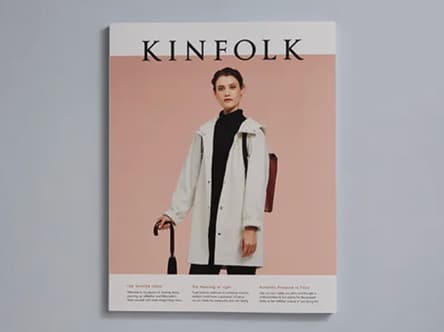
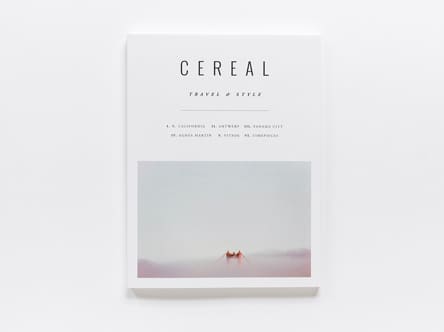

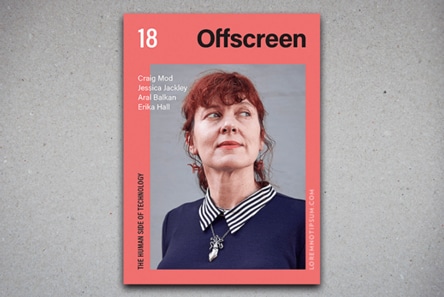
Each of these publications, in their own way, challenges the status quo. They're not just magazines; they're experiences.
Looking for font inspiration? Look no further than these three websites, which are overflowing with creative ideas for masthead design and newspaper page layout. Each site offers a unique perspective on typography and can provide you with fresh concepts to incorporate into your own designs. Whether you're looking for classic elegance or modern flair, these websites have something for everyone!

Creative Market Blog:
Each of these websites offers a unique perspective on typography and design, ensuring that you're equipped with a plethora of ideas and inspiration as you embark on your newspaper design journey.
First up, what is a Masthead?
A masthead is a crucial element in the world of print and digital publishing. It refers to:
In essence, the masthead serves as a publication's visual signature, helping readers instantly recognize and connect with the brand. Mastheads are the crowning glory of any publication, often becoming as iconic as the content they represent. They form a newspaper template for all future issues - nail it one issue 1 and it is synonymous going forward.

Each of these mastheads has stood the test of time, evolving with their respective publications while maintaining their iconic status.
Capturing the attention of readers is the cornerstone of crafting the best-designed newspapers. The first step? Choosing the perfect typeface that not only meets the specifications of a printed newspaper but also infuses it with a unique character. Will you opt for the timeless elegance of a classic Serif, or venture into the contemporary realm with a Modern Sans-serif? Perhaps the titles on each page demand a bolder, more dynamic font that instantly draws the eye. The art of typography is more than just letters on a page; it's about creating a visual narrative that makes people pause, engage, and immerse themselves in the content. So, as you embark on this typographic journey, ask yourself: How will my choices ensure the newspaper doesn't just inform but also captivates?
Serif Fonts:
Sans-serif Fonts:
Slab Serif Fonts:
Body Text:
Headings:
Break convention and make your headings as large as you feel they need to be. They will certainly be more attention grabbing if you made the masthead 100pt and the interior headings over 40pt.
Most of the fonts above can be found on legacy websites and are available for free download.
If you have a Creative Cloud Subscription, then full 20,000 choices in the Adobe Fonts library can be used for both personal and commercial projects.

Ultimately we need a high res PDF to make and print your newspaper. Most, if not all design programs from Microsoft Word to Adobe InDesign can Save as PDF or Export to PDF. Once your design is finished, you are just a couple of clicks from a print-ready PDF.
The key elements of good newspaper design for print include a clear and visually appealing layout, legible typography, proper use of headlines and subheadings, effective use of images and graphics, consistency in design elements, and attention to detail in spacing and alignment.
Remember, the journey to print your own newspaper is as much about absorbing inspiration as it is about execution. By immersing oneself in diverse sources of knowledge and creativity, one can ensure that their publication isn't just another piece of print, but a testament to the power of design and storytelling.
Ah, the quest for creative inspiration! Before diving headfirst into the newspaper design and print journey, it's essential to immerse oneself in a myriad of sources to truly grasp the art and science of it all. Here's a curated list to fuel that creative fire:
Typography Workshops:
Typography is the backbone of any print publication. Engage in workshops or online courses to understand font pairings, hierarchy, and the nuances of type design.
Historical Archives:
Delve into the archives of renowned libraries or online platforms. Exploring vintage newspapers and magazines can offer a wealth of design inspiration and a lesson in evolution.
Design Books & Journals:
Publications like "Designing News" by Francesco Franchi or "The History of Graphic Design" can provide insights into the ever-evolving world of design.
Digital Design Platforms:
Websites like Behance, Dribbble, or Awwwards showcase cutting-edge design work from around the world, offering a fresh perspective and modern inspiration.
Art Galleries & Exhibitions:
Art movements have often influenced design trends. Exploring galleries can provide a broader understanding of colour, composition, and visual storytelling.
Cultural Immersion:
Attend local events, festivals, or even travel. Experiencing different cultures can offer unique design perspectives and storytelling techniques.
Feedback Sessions:
Engage with fellow designers or potential readers. Regular feedback can refine your design approach, ensuring it resonates with your target audience.
Sustainability in Print:
With a growing emphasis on eco-friendly practices, understanding sustainable printing methods and materials is crucial.
Digital Mockups & Prototyping:
Before going to print, use digital tools to prototype your newspaper. This allows for iterative design tweaks and ensures the final product aligns with your vision.
Navigating the world of self-publishing can be daunting, especially when it comes to design. A captivating book cover and well-laid-out pages are crucial for attracting readers. If you're considering hiring a designer from Fiverr for your book design or illustration project, this guide will walk you through the process from start to finish.
We found over 16,000 book designer options when search on Fiverr - plenty for every type of style and budget. Do also take a look at our guide to finding a designer on PeoplePerHour and our article on Top Book Design Solutions.
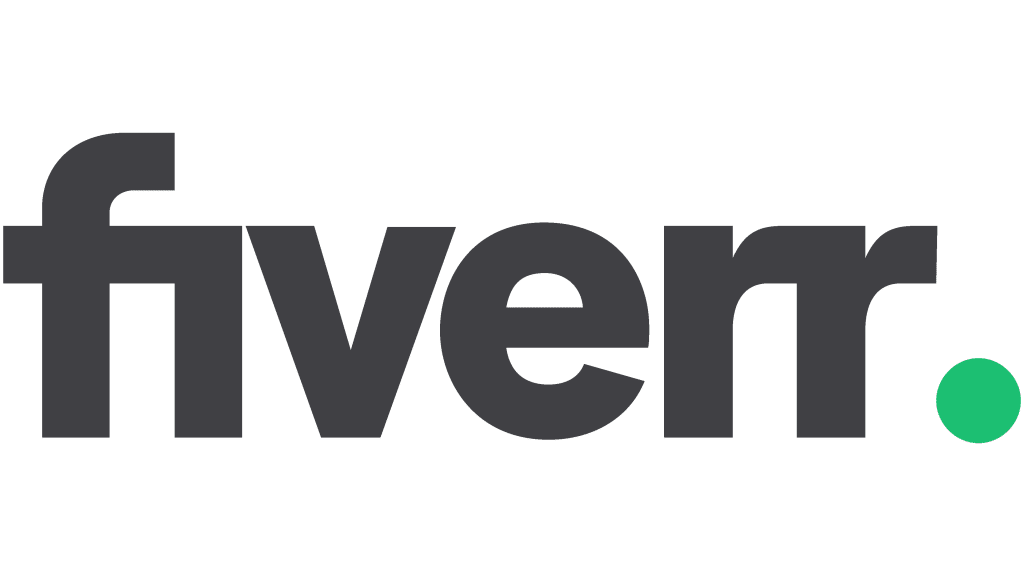
Begin your journey on Fiverr's book design search page. Here, you'll find a plethora of designers offering their services. Use filters like 'Budget', 'Delivery Time', and 'Seller Level' to narrow down your options.
Before approaching a designer, review their portfolio. This will give you an insight into their style, quality of work, and whether they align with your vision. Look for designers who have experience in your specific genre or type of book.
Fiverr provides a rating system and reviews from previous clients. This feedback can be invaluable in understanding the designer's professionalism, communication skills, and reliability.
Once you've shortlisted a few designers based on their portfolios and reviews, it's time to approach them for what can be considered a virtual interview. Given the global nature of platforms like Fiverr, your chosen designer could be anywhere in the world. This geographical diversity is one of the platform's strengths, but it also means you need to be thorough in your initial interactions to ensure a smooth working relationship.
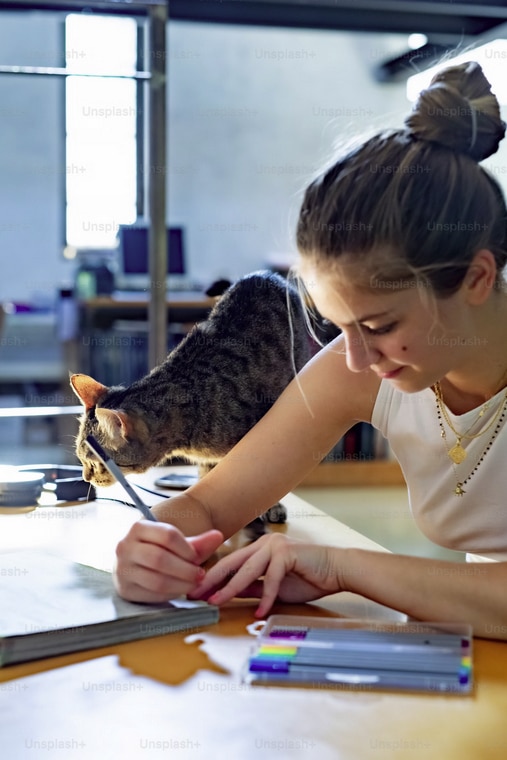
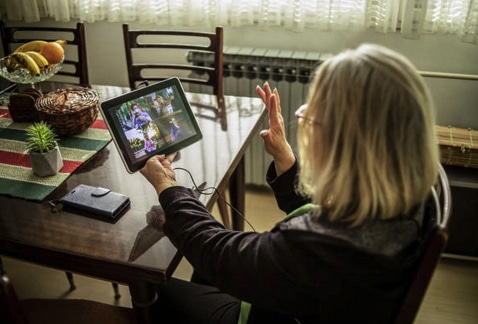
Additional Considerations:
Remember, this initial interaction is not just about assessing the designer's skills but also about gauging their communication style, responsiveness, and professionalism. It's essential to establish a rapport and ensure you're both on the same page before embarking on the design journey together.
When you're ready to proceed, provide the designer with a comprehensive brief. This should include:
We have written some solid design briefs which you can copy and paste into an initial message to the designers you have identified as possibilities:
Before finalising the project, discuss the budget and timeline. Ensure you're clear about any additional costs, such as revisions or add-ons. Set milestones for the project, especially if it's a larger or more complex design task.
Once the project is underway:
Once you're satisfied with the design, the designer will provide you with the final files. Ensure you receive all necessary formats for both print and digital use.
After the project's completion, leave a review on the designer's Fiverr profile. This helps future clients and also acknowledges the designer's efforts.
Finding and managing a book design project on Fiverr can be a smooth process with the right approach. By being clear in your communication, setting expectations, and actively participating in the design process, you can ensure your book resonates with your target audience and stands out in the crowded marketplace.
Remember, a well-designed book not only attracts readers but also enhances the reading experience. So, invest the time and effort to get it right!
We understand and appreciate the urgency so we deal with work in the order it arrives in our inbox. Lots of books are needed for Christmas markets, online sales and all self-publishers are keen to get their work on the shelves to secure big orders whilst buyers are active and looking for great presents.
Small to Medium Run Wire Stitched Booklets (1-500 copies)
3-4 Working Days
Small to Medium Run Perfect Bound Book (1-500 copies)
5 Working Days
Long Run Wire Stitched Booklets (1000 copies +) 6 Working Days
Long Run Perfect Bound Books (1000 copies + )
7/8 Working Days
Long Run, litho printed Hardback Books (750 copies+ or section-sewn inside pages)
As of 3rd October, we are currently booking in for delivery EARLY DECEMBER.
Our machinery for this type of work gets extremely busy. If you are planning 1000 copies or more of a case bound, hardback book and need it this year, best to book it in now. Thank you.
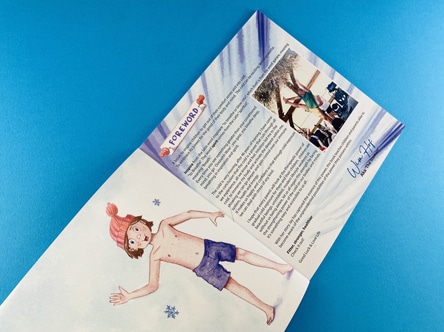
• Send us a work in progress file a few days before the job goes live. We can preflight it and let you know issues to fix.
So, if you have a project going ahead in the next few months there are a few things we can do to make the job run more smoothly:
• Give us a heads up in advance that the artwork is coming.
Allow more time for production
> an extra couple of days on digitally printed
> an extra 2-3 days on litho work
> Allow a lot longer for litho printed hardback books (750 copies or more, or those with section sewing).
We will work as quick and efficiently as we always do, but the volume of work does build. There is no harm in your work arriving well before the deadline rather than on it.
• If you are going for a Premium paper or foiling then we can order the material and dies before the artwork arrives if you book the job in.
• Couriers get overwhelmed too in the run up to Christmas and especially around Black Friday 24th November.
Any questions, do give us a shout, we are here to help on email, phone and live chat. We don't bite, our customer service team are accessible, friendly and knowledgeable.
Allow more time and your important job will be a calm, fun project rather than a last minute scramble.
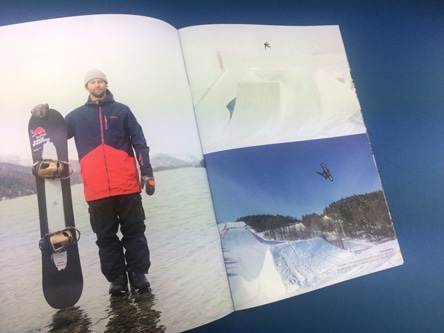
You are about to enjoy and digest the following insight:
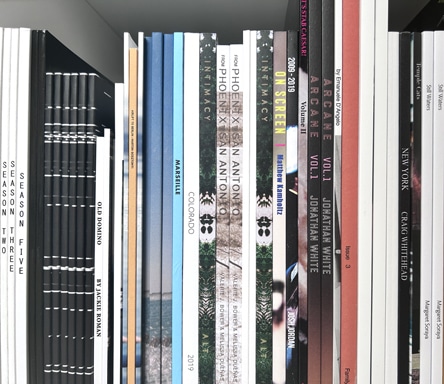
In the dynamic world of zine production, one factor always remains the same - the longing for a publication that seamlessly amalgamates quality, creativity, and affordability. As one of the leading UK print companies, Ex Why Zed has transformed this desire into reality, bringing to life an array of winning perfect bound zines over the years. This article will take you behind the scenes of our print production, showcasing some of our star performers that are not just high quality and cost-effective, but also adored by readers around the world.
A zine is more than just a medium of communication - it's a representation of the creator's artistic vision and identity. Let's dive into our assembly line and see the champions that have made a difference.
Showcase 1: The Professional Portfolio
When you are looking for a professional-looking zine at a good unit price, ideal for a self-promo portfolio, our A5 Perfect Bound Books rise to the occasion. With a 4pp cover printed onto 300gsm uncoated and matt lamination on the outside, this model adds an air of professionalism to your portfolio. The 60pp text onto 115gsm uncoated and the four-colour print throughout ensure high-quality content delivery. The cost per copy decreases significantly with higher print runs, making it a cost-effective option.
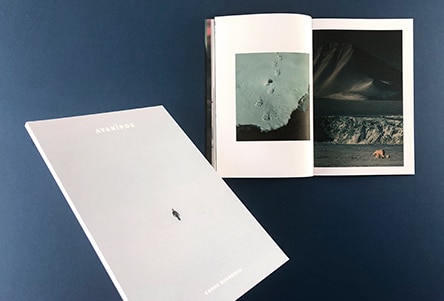
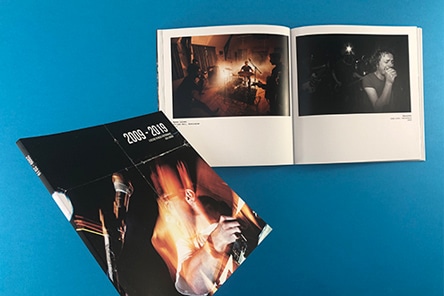
Showcase 2: The Versatile Square Format Zine
A versatile and impressive square format zine is perfect for an annual report or a photo set from a recent foreign trip. Our 210x210mm Perfect Bound Books are printed on a 4pp cover onto 300gsm uncoated, with matt lamination on the outer surface for a sleek finish. The 76pp text printed onto 170gsm silk offers a quality tactile experience, and the four-colour print throughout ensures vibrant image reproduction.
Showcase 3: The Weighty Photography Zine
The exquisite weighty photography zine, 'Intimacy' by Ashton Thorp, is a perfect example of Ex Why Zed's craftsmanship. The 4pp cover printed onto 300gsm uncoated and matt laminated to the outer, housing 160 inside pages printed onto 130gsm Silk, this four-colour printed zine not only captures Ashton’s photo sets from the last decade but also provides a substantial photo journal experience to the reader. The 9mm spine and an impressive landscape photo that wraps around the cover add a distinctive design appeal to this model.
If any of these champions fit your project bill, get a personalised quote from us. We are just an email away at hello@exwhyzed.com. In the world of zines, you pick, and we deliver!
Now that we have looked at some of the standard specifications, let's delve into some other exceptional showcases.
Showcase 4: The Evocative Ephemera Magazine Issue 7 & 8
An engrossing blend of art, photography, and insightful articles, Ephemera Magazine Issue 7 & 8 is a reader's delight. With its perfect binding and unique design aesthetic, it is a model example of what Ex Why Zed can deliver.
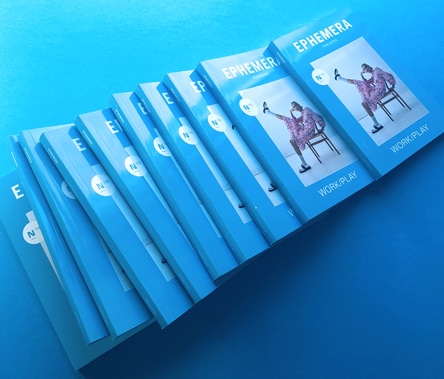
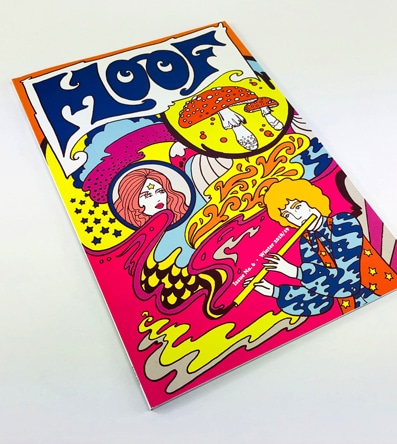
Showcase 5: The Captivating MOOF Magazine Issue 6
MOOF Magazine Issue 6 takes the reader on a psychedelic journey through music and art, bound together with Ex Why Zed's perfect binding. The magazine's eclectic content combined with our quality print production makes for a winning combo.
Showcase 6: The Engaging Shooter Literary Magazine
With its riveting collection of short fiction, non-fiction, and poetry, Shooter Literary Magazine is a testament to our perfect binding technique's versatility.
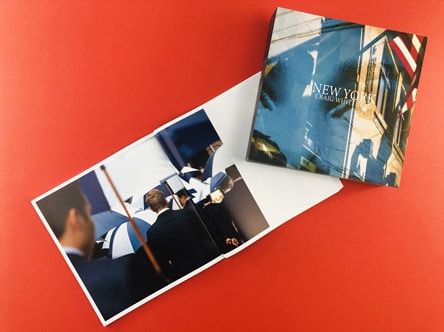
Showcase 7: The Vibrant New York by Sixstreetunder
This zine brings the city's vibrance to life with its stunning photographs, perfectly bound to make each page a window to the city's soul.
Showcase 8: The Enthralling Popshot Magazine
Popshot Magazine, with its captivating illustrations and engaging content, shines as a sterling example of our perfect binding prowess.
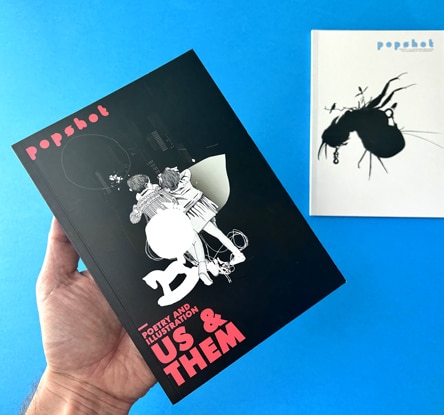
As we move further, we delve into the nuances of perfect bound book design. Mastering these aspects will ensure your zine not only looks good on a shelf or a coffee table but also creates an immersive reading experience. In this section, we'll provide professional tips, including insights from our guide to perfect binding set-up, to help you steer clear of common pitfalls and ensure your project achieves the aesthetic it deserves.
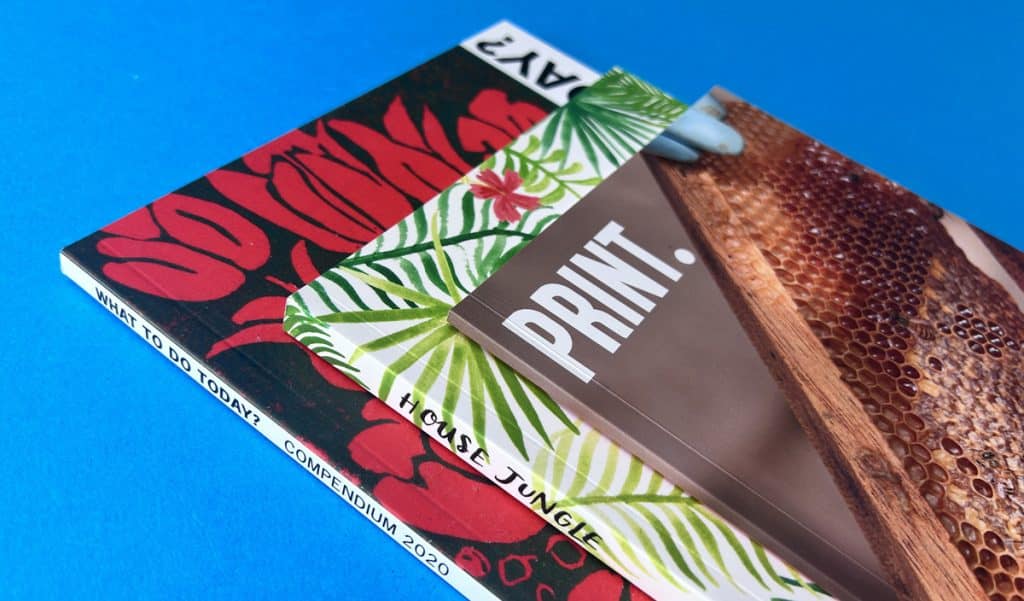
Designing a zine isn't just about the cover; it's about every page. Placing important content in the centre gutter can result in it being lost when the book is bound. To avoid this, we recommend using white borders or displaying one image per page. This approach ensures all content is easy to see, and your readers don't have to strain their eyes or miss out on anything important.
When it comes to designing perfect bound books, one of the key challenges is the narrow spine and the effect it can have on content visibility in the gutter. To counter this issue, it's crucial to keep any content out of the seven-millimetre area of the cover hinge, ideally 12 millimetres plus from the side of the four affected pages. This ensures that your content remains visible, and nothing important disappears into the centre gutter.
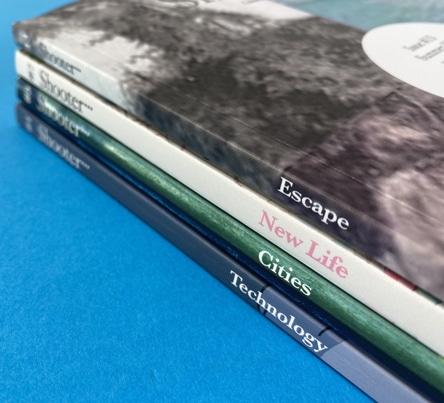
While perfect binding offers a professional and polished look, other methods like stapling or wire stitching can sometimes be more suitable depending on the nature of your project. For instance, wire stitching can be an excellent alternative for thinner publications.
Adding unique features to your zine can take it to the next level. Let's look at some ideas using examples from our portfolio.
This zine showcases the power of a powerful cover design and uncoated paper, offering a unique feel that enhances the reading experience.
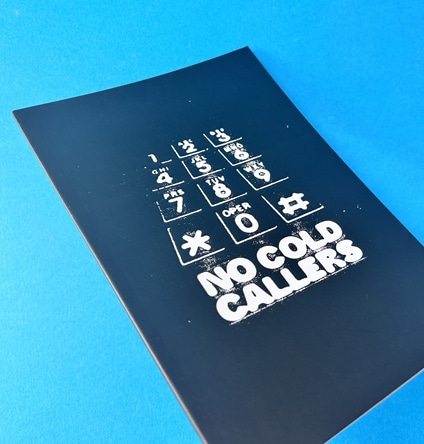
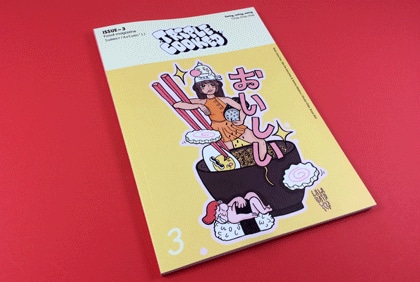
This issue of Triple Cooked exemplifies the effective use of vibrant colours and a balance of text and images for a captivating aesthetic.
Loyle Life
Expanding the lens of our showcase to bring you an inspiring piece of art that marries passion, culture, and craftsmanship, we bring you the 'Loyle Life' by the talented George Cory. This acclaimed photographer is known for his stark yet captivating compositions and a keen eye for detail. His work isn't just photography; it's storytelling at its most immersive, a characteristic that's perfectly embodied in 'Loyle Life'.
The 'Loyle Life' project is an exhilarating odyssey into the vibrant, pulsating heart of the British sauna culture. Through a series of evocative monochrome visuals, Cory deftly captures the unique camaraderie, warmth, and soulful rhythm that define this communal activity. Our Instagram post encapsulates the aesthetic brilliance of this project. From the perfectly timed shutter clicks to the meticulous arrangement of the elements, 'Loyle Life' exemplifies the power of print in telling compelling stories. With its visual brilliance and rich narrative, this project underlines why perfect bound zines are the preferred choice for photographers seeking to present their work in an aesthetically pleasing, high-quality format.
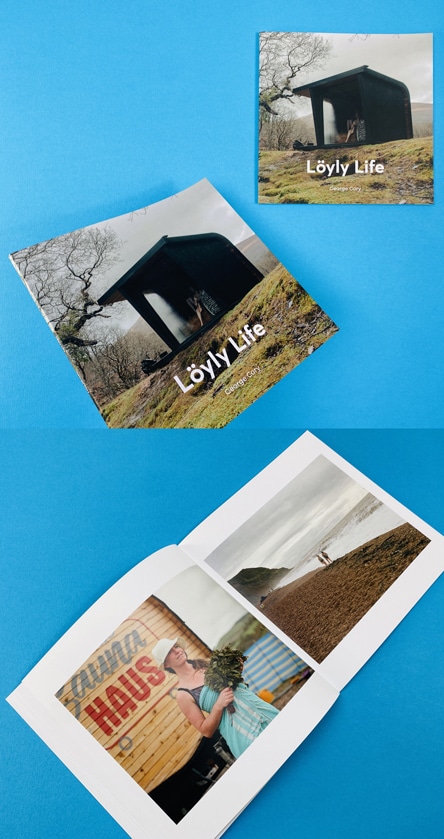
Now that you've got the basics down and explored design possibilities, it's time to launch your zine into the world and consider cost-saving amendments to make your project even more economical. In this section, we'll illustrate with a case study and provide tips to refine your print specs without compromising the zine's appeal.
Launching a new zine can be exhilarating and daunting in equal measure. To inspire you, let's take a look at Able Zine, a zine exploring the theme of the environment through the lens of disability and perspectives of the wider disabled community. The printed version offers a choice of five covers by various creatives, each packed with over 180 pages of content, images, and interviews. The glossy cover and carefully curated inside pages offer an engaging read while also emulating the look of high-fashion magazines.
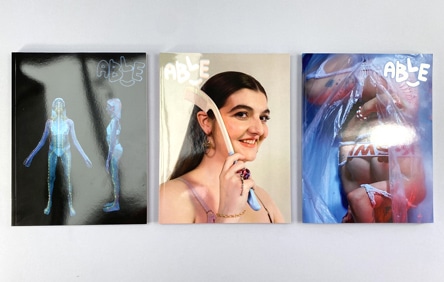
A critical aspect of creating a winning zine is striking a balance between cost and quality. Here are some potential cost-saving amendments that can add value to your zine print specifications without breaking the bank:
Crafting a winning perfect bound publication requires patience, creativity, and a keen eye for detail. At Ex Why Zed, we are passionate about providing our customers with the support they need to make their dream zines a reality. Whether you're a seasoned pro or a budding zinester, we hope this guide has given you valuable insights and inspiration. Remember, the journey to crafting 'winning perfect bound zines' is a process of continuous learning and creativity - so, let's embark on it together!
In the world of self-publishing, zines have emerged as a powerful platform for illustrators to showcase their creativity. These small, self-made publications offer a unique canvas for visual storytelling, allowing artists to share their work in a tangible format that can be easily distributed and enjoyed. In this guide, we'll explore the essential tools for zine publishing for illustrators, offering tips and insights to help you transform your artwork into print.
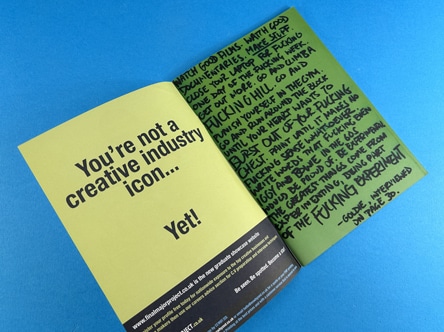
Wire-stitched zines, also known as stapled zines, are a popular choice among DIY creatives. They offer a unique blend of versatility, ease of assembly, and the ability to accommodate various content types. Whether you're looking to showcase your photography, illustrations, or written works, wire-stitched zines provide a flexible and cost-effective solution.
At Ex Why Zed, we've had the privilege of printing a wide array of wire-stitched zines, each with its unique design and aesthetic. In this guide, we'll delve into some of our past projects, highlighting the design elements, paper choices, and printing techniques that made each zine a standout piece.
These two feature 300gsm uncoated zine covers with matt lamination on both sides, giving them a substantial and premium feel. The inside pages are printed onto 115gsm uncoated paper, providing a bright white finish that beautifully showcases the vibrant colours and illustrations. Despite the thicker cover, these zines still retain a certain charm, with the cover naturally trying to flatten itself out when opened.
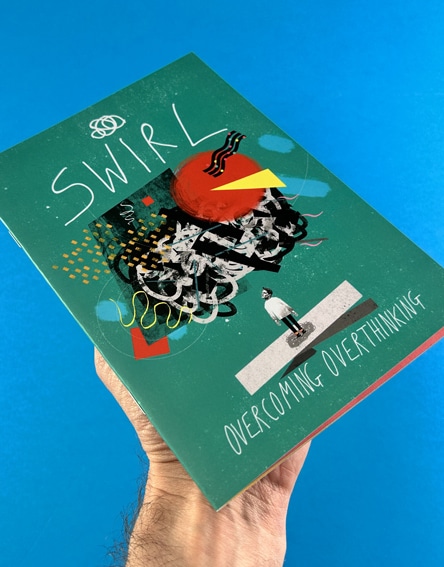
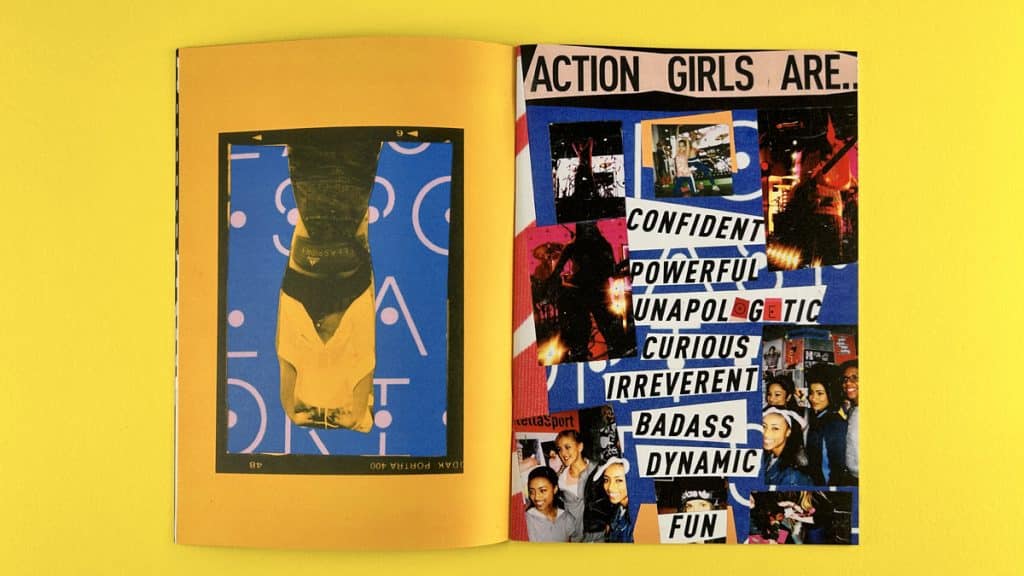
This zine is printed entirely onto 100gsm uncoated paper, giving it a slightly more flexible feel. Despite having 40 pages in total, the zine retains a certain charm, with a slight curl in the middle adding to its collectible appeal.
Pushing the boundaries of wire-stitched zines, Hate features a whopping 76 pages printed onto 100gsm Evolution Uncoated paper. Despite the large number of pages, the zine maintains its integrity, with a big curl on the spine and a lot of bounce adding to its unique appeal.
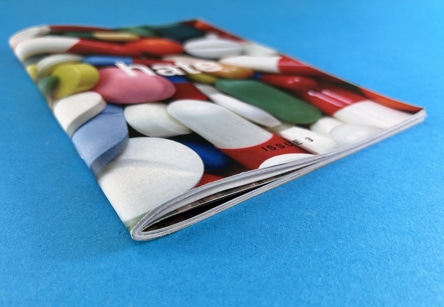
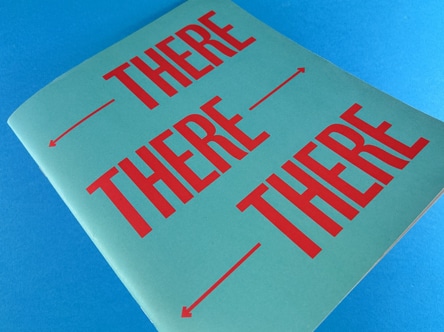
These four zines showcase the flexibility of wire-stitched zines in terms of size. Ranging from A5 to A4, these zines demonstrate that any bespoke size larger than A5 up to and including A4 can be achieved at the same price point. Whether you're looking to create a compact A5 zine or a larger A4 publication, we've got you covered.
The best paper for zine printing depends on your specific needs and preferences. For a more premium feel, a 300gsm uncoated cover is a great choice. For the inside pages, a 115gsm uncoated paper offers a bright white finish that beautifully showcases your images. If you're looking for an eco-friendly paper options, our 100% recycled Evolution Uncoated paper is a great choice. For more insights on paper choices, check out our guide on choosing the right paper for zine printing.
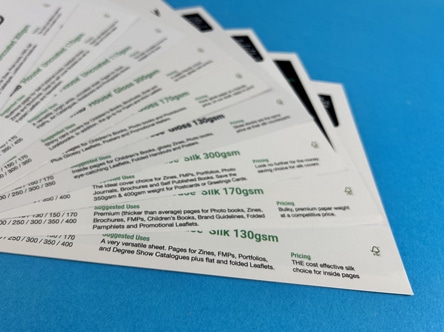
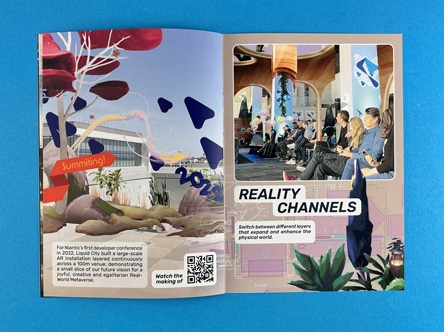
Formatting a zine for printing involves several steps, including setting up the correct page size, creating a layout that suits your content, and ensuring your images are high-resolution. You can find a detailed guide on how to format a zine for printing on our comprehensive guide for zine binding.
Zines can be printed on a variety of paper types, including uncoated, silk, and gloss paper. The choice of paper can greatly influence the look and feel of your zine, so it's important to consider your options carefully. Check out our blog exploring lamination for zine covers for more insights.
Wire stitching, also known as stapling, is a popular binding method for zines. It's cost-effective, easy to assemble, and can accommodate a variety of content types. However, the best binding for your zine will depend on your specific needs and preferences. For more insights, check out our comprehensive guide for zine binding.
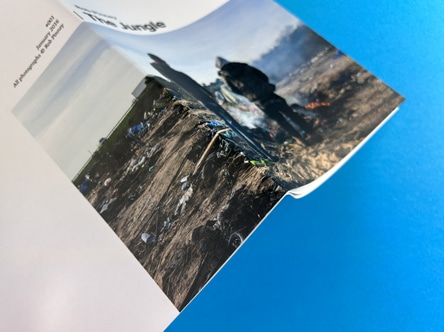
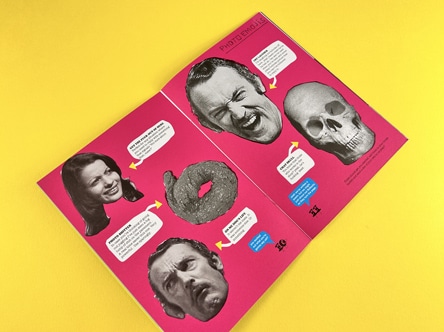
Creating a winning zine design involves several steps, including brainstorming ideas, creating a layout, selecting images or illustrations, and choosing typography and colours. It's important to consider your target audience and the message you want to convey when designing your zine. For more insights, check out our YouTube video on zine design.
The cost of printing a zine can vary depending on several factors, including the size of the zine, the number of pages, the type of paper used, and the printing method. At Ex Why Zed, we offer competitive pricing for zine printing. You can get a quote for your project on our Printed Project Builder.
A good zine is one that effectively communicates its message and engages its audience. This can be achieved through a combination of compelling content, eye-catching design, and high-quality printing. For more insights, check out our YouTube video on what makes a good zine.
Zines can cover a wide range of topics and come in various types, including fanzines (focused on a particular band, celebrity, or TV show), per zines (personal zines that serve as a form of self-expression), art zines (featuring artwork or illustrations), and many more. For more insights, check out our YouTube video on different types of zines.
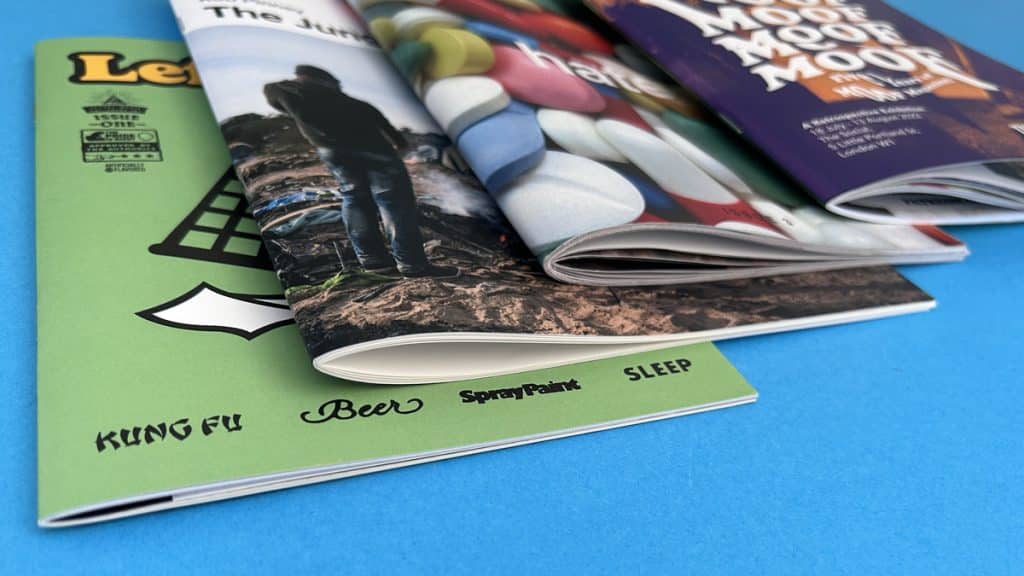
Creating a wire-stitched zine is a creative endeavour that allows you to express your ideas and share your work in a tangible format. With the right design elements, paper choices, and printing techniques, you can create a standout publication that truly reflects your vision.
At Ex Why Zed, we're committed to providing high-quality zine printing services that elevate your visual storytelling. Whether you're looking to print a photography zine, an art zine, or any other type of zine, we're here to help. Get in touch with us today to start your zine printing journey.
Remember, the best zine printers are those who understand your creative rigour and can provide the definitive operational strategy to bring your vision to life. At Ex Why Zed, we're proud to be a trusted partner to many superstar creatives, helping them relax and focus on their craft while we take care of the printing. So why wait?
Start exploring the world of zine printing with us today.
In the world of visual storytelling, the medium is as important as the message. At Ex Why Zed, we understand this better than anyone. Our photographic zine printing services are designed to elevate your visual storytelling, transforming your photography into flawless zines that captivate and inspire.
Photographic zines have emerged as a powerful platform for photographers to showcase their work. These compact, self-published booklets offer a canvas for creativity, allowing photographers to curate their images in a tangible format that can be shared and appreciated by others.
At Ex Why Zed, we are proud to offer high-quality photographic zine printing services that bring your visual narratives to life. From the choice of paper to the print quality, every detail is meticulously handled to ensure your zines look as stunning as the images they contain.
We have had the privilege of printing a diverse range of photographic zines, each one a testament to the creativity and vision of the photographers we work with. Here are a few examples that caught our eye:
Optimism is a standard A5 zine that showcases spectacular photography interspersed with illustrations. The layout is designed to give the images room to breathe, with white space used strategically to enhance the visual impact. The zine is wire-stitched with two staples on the spine, making it easy to flip through and admire the content.
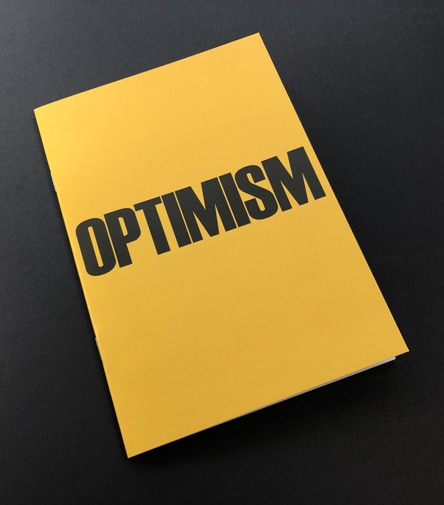
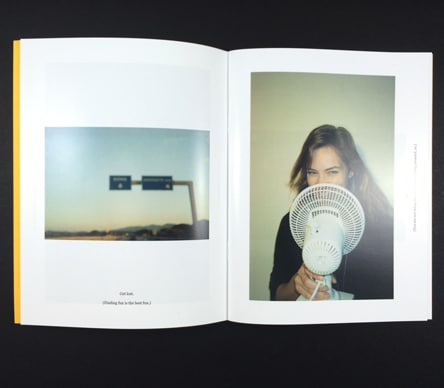
In ‘How to be Fun’, the images are the star of the show. The zine features a combination of full-bleed images and varying white borders around the pages, creating a very loose layout style. The cover, printed on Colorplan Factory Yellow paper with black text, adds a pop of colour that immediately draws the eye.
We take a look at a self-cover A5 photography zine. A pair of them in fact, because this photographer has chosen his ‘house’ style and prints all his zines to match each other. We call it self-cover because all of the pages including the covers are printed onto the same weight of paper, in this instance 170gsm Uncoated. A5 is a neat size and gives you A4 wide double-page spreads to show your work. You can see looking at the side view that there is always a bit of a curl in the zines (they don’t sit completely flat) but this is less apparent on self-cover ones than it would be if you chose a rigid 300/350gsm cover. A thicker cover won't sit flat once opened and will likely stick directly out once opened. The uncoated finish means the ink soaks in slightly and has a softer appearance but is nice to touch. Design your own masthead for the cover and individual styling and we can print a great set of photography publications that will grow over time.
The winning print spec here is:
A5 Booklets
40pp Self Cover onto 170gsm Uncoated
Four colour print throughout
Trimmed, collated and wire stitched
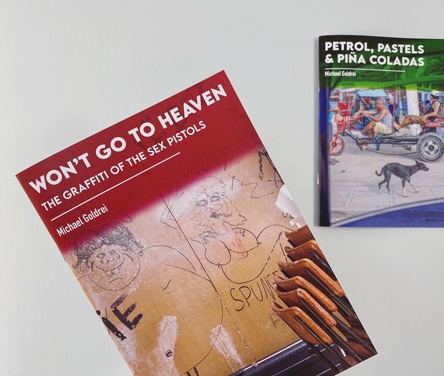
For photographers looking to create a more formidable and book-like publication, perfect-bound zines are an excellent option. These zines are bound with glue along the spine, giving them a professional and polished look. They are ideal for longer content, allowing photographers to include as many images as they want without compromising on the quality of the print.
Gloriously styled, head-space creating, surf-orientated photography of Yannick Schultz @bonjouryannick
The winning print spec is:
A5 Books
4pp Cover onto 300gsm Uncoated
Matt laminated to the outer
58 inside pages onto 170gsm Uncoated
Four colour print throughout
Trimmed, collated and perfect bound
An A5 photography zine with 58 pages of skies, terrain and images that just make you want to get in a VW Camper and leave the city behind. The 170gsm inside pages are more substantial, the max we can actually go to whilst ensuring the glue holds them in. There is a crispness and weight when the reader flicks through. Ahh, check out Yannick’s superb photography. There is a nice flow without adhering to a specific grid layout. We love his smiley face love on the first text page. So cool. The front cover on this particular version does seem to be onto a card lighter than the 300gsm that the final print run was produced onto. It could be 170gsm too with matt lamination which actually makes it easier to lift and open. Both would work. Wrapping the front cover image round onto the spine is one of our favourite design tricks. Going further, and wrapping it around to the back cover too is a superb technique! A top-class photo zine and you’d do well to copy the styling of this for a winning publication.
We enjoy Phoenix to San Antonio, the latest photography journal from the awesome @valeriej.bower and @melisduenas
203x152mm Zines 4pp Cover onto 240gsm Uncoated Matt laminated to the outer 120 inside pages onto 100gsm Uncoated Four colour print throughout Trimmed, collated and perfect bound
We pick up the story as they photographically depict their trip from Arizona to Texas capturing all manner of one-off moments on film. Enjoy classic American cars, a healthy dose of signage and the coolest dressed dude you’ve ever seen, all bookended by poetry and creative writing. We really like the choice of a 240gsm Uncoated cover. It creates a neat spine block and hinges that fall back to the text block easier than a more rigid 300gsm would. Yes, it’s thinner but the more of these snippets we do, the more we’re realising 240/250gsm is a better solution for zines and photobooks.
The 120 inside pages are printed onto 100gsm uncoated which again is slightly lighter than the standard weight which would be 115gsm. However, 100gsm is cheaper to print and each page features full bleed reportage photography documenting their trip across the States.
This is a winning print spec, we like it a lot.
#005 New York is the latest in a set of personal photography journals by @bizzitakingphotos. Just small print runs for personal consumption but each one focuses on a different destination and the sets are formatted and laid out in a polished fashion.
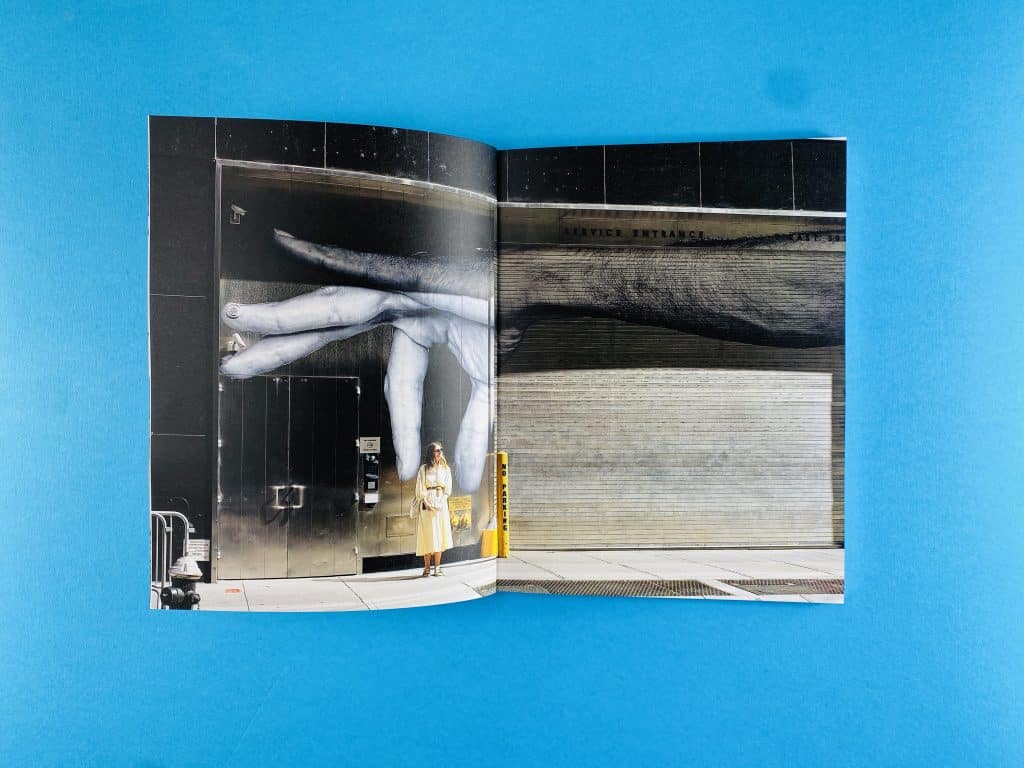
These publications are just a tiny drop in the ocean of the superb photographic zines printed at Ex Why Zed. Just a teaser to whet your appetite about what can be achieved in print. Check out our YouTube channel Ex Why Zed Videos and website portfolio Ex Why Zed Portfolio for more inspiration. Our YouTube is regularly updated with showcase snippets of recent work and super helpful guides on file set-up. Get in touch when yours is ready to go ahead, we can't wait to see your artwork.
At Ex Why Zed, we believe in the power of personalisation. That's why we offer customised zine printing services that cater to your unique needs and preferences. Our zine video guide showcases all these options.. Whether you want a specific size, a particular type of paper, or a unique binding method, we can make it happen. Our team of experts will work closely with you to understand your vision and deliver a product that exceeds your expectations.
In the showcase snippet video above we take a look at the three different binding choices when we come to print your children’s book at Ex Why Zed. The key thing to remember is that the binding method you choose is dictated by the number of pages your publication has.
Let’s get started! First up is wire stitching or stapling if you prefer less print jargon. The printed sheets are produced as spreads then folded in half and stapled twice on the spine to keep them together. Simple, cheap and effective for up to around 40 pages. It might be visually as high end as our next two options but the advantage is that the reader can press the pages completely flat which is a BIG advantage for kids books and bedtime reading. You need to settle on a multiple of four pages for wire stitching so 20,24,28 for example…in case you don’t have a calculator handy 🙂
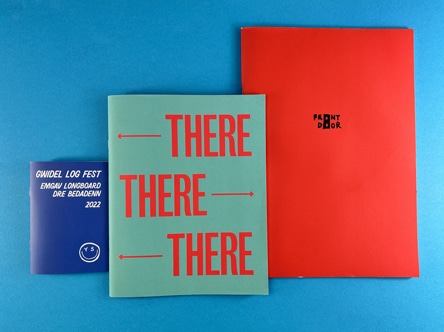
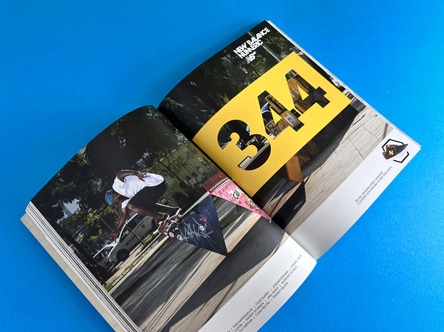
Next up is perfect binding where we print the cover as a spread with a separate text block. The text block is trimmed to the size of your finished book, roughened up on the left hand edge, a layer of glue applied and the cover is wrapped around and glued on with a 7mm hinge to the text block. Your books will have a neat spine if you have a minimum of 32 pages. A lot of books in the children’s sector are exactly 32 pages so choose 170gsm silk, gloss or uncoated for the inside pages and that will just about get us to the 3mm thickness we need to glue the spine. Under 170gsm will be too thin. You can see that it is slightly harder to press the pages down, more so the nearer to 32 pages you are because the spine is tighter. So, don’t rule out staple binding completely if it’s super important that the reader sees the whole of the double-page spread.
The finish of your zine can greatly enhance its overall look and feel. At Ex Why Zed, we offer a range of professional print finishes that can add a touch of elegance to your photographic zines. From matte and gloss to textured finishes, we have options to suit every style and preference. Our team can guide you through the selection process, helping you choose the perfect finish for your zine.
Creating a photographic zine can be a complex process, but you don't have to do it alone. At Ex Why Zed, we offer expert assistance every step of the way. From choosing the right paper and print quality to designing the layout and selecting the binding method, our team is here to help. We are committed to making the process as smooth and enjoyable as possible, so you can focus on what you do best: capturing stunning images.

Yes, people still buy zines. In fact, zines have seen a resurgence in popularity in recent years. They offer a unique and tangible way to consume content, which many people find appealing in our increasingly digital world.
Zines are important because they offer a platform for self-expression and creativity. They allow individuals and groups to share their ideas, perspectives, and artwork in a format that is accessible and affordable.
Historically, zines were printed using DIY methods such as photocopying and hand-stitching. Today, professional printing services like Ex Why Zed offer high-quality zine printing with a range of options for paper, size, and binding.
Zines can be displayed in a variety of ways. Some people like to showcase them on coffee tables or bookshelves, while others prefer to hang them on walls or display them in glass cases. The choice is entirely up to you and depends on your personal style and space.
Zines became popular as a form of counterculture in the 1970s and 80s. They were a way for individuals to express their views and share their artwork outside of mainstream media. Today, they continue to be popular for their unique and personal nature.
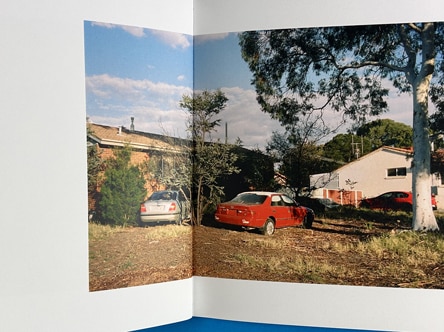
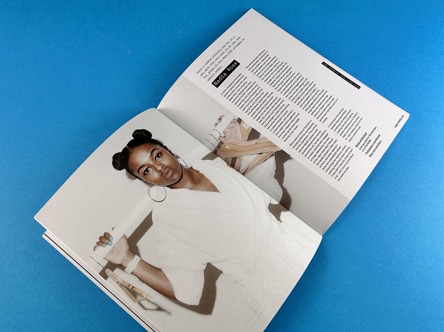
Zines became popular through word of mouth and distribution at events like concerts, art shows, and political rallies. Today, they are often sold online or at independent bookstores, and their popularity continues to grow thanks to social media and a renewed interest in physical media.
At Ex Why Zed, we are passionate about bringing your photographic vision to life. Our expert photographic zine printing services are designed to deliver high-quality prints that do justice to your images. Whether you're a professional photographer looking to showcase your work or a hobbyist wanting to share your images with the world, we are here to help. Get in touch with us today to start your photography zine printing journey.
In the ever-evolving landscape of modern culture, zines have carved out a unique niche. These self-published, often handcrafted booklets have their roots in the counterculture movements of the 20th century, but today, they're not just the domain of artists, activists, and indie publishers. Increasingly, corporations, agencies, and studios are harnessing the power of zines to promote themselves or their clients. At Ex Why Zed, we're at the forefront of this trend, providing top-notch zine printing services to a diverse range of clients. In this post, we'll showcase some of the most innovative and engaging zines we've had the pleasure of printing.
The London Short Film Festival Programme for 2020 took the format of a self-cover zine, allowing the pages to open easily for attendees. The layout is legible and straightforward, with the name of the film at the top and some text underneath, forming a really neat publication. The 60 pages are wire-stitched down the side, making it a practical and stylish guide for festival-goers.
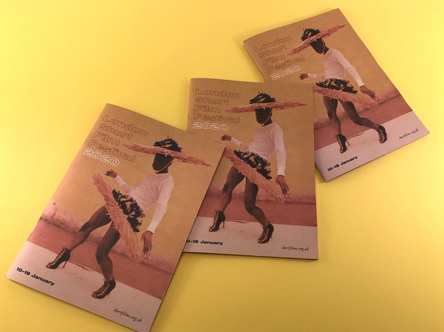
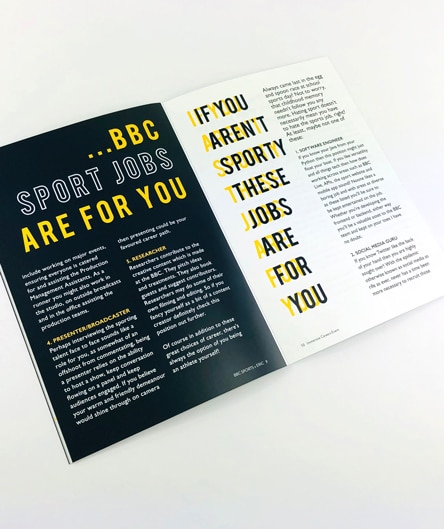
BBC Sport approached us to print a zine for their new intake of interns. Generally, they are in their early 20s, so printing an introductory handbook in zine form was a good fit for the target market. It has a slightly thicker 250gsm front cover and 130gsm silk all the way through. This neat zine format effectively promotes the creative work they're doing at BBC Sport.
'We Make London' is a cool little zine we've just printed recently in conjunction with the design agency Raw Ground Arts. This zine was created for a Science Museum exhibition. They wanted a zine format to appeal directly to the demographic of children and youths that they've been working with on this project. So, they opted for a 300gsm front cover plus matt lamination, resulting in a solid and engaging solution.
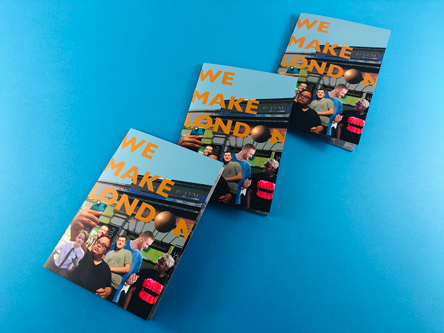
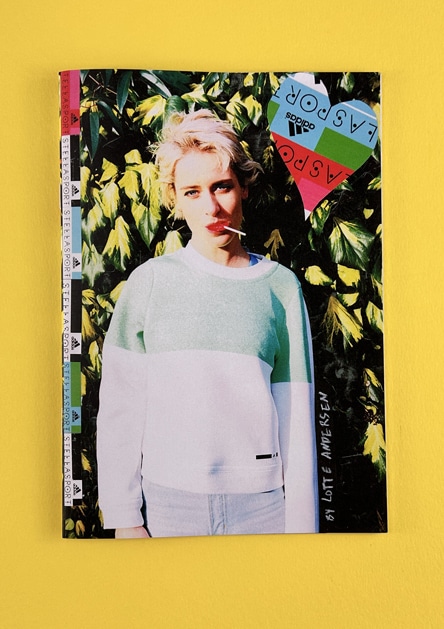
Next up is the Adidas x Stella Sport zine lookbook for their recent collection. They went for an A4 format with all the pages onto the same 100gsm paperweight. The pages are nice and flimsy, easily opening all the way through. Two staples down the spine bind it together. The zine features glorious full-colour images all the way through and punchy typography. This was a big hit at the launch party at Topshop on Oxford Street, where a large number of industry types enjoyed consuming the content in zine form.
Trailblazer Mag is a superb new interactive magazine from @arianacreates_ for kids aged 6-13. This zine offers 24 pages of engaging, bright design, colouring pages, cut and keep content, and features a spotlight on the brilliant @rubyst and @180.studios @storyseedspod @whowhenwowpod. Trailblazer Mag aims to introduce new and exciting art topics to kids each month while also exercising their creativity.
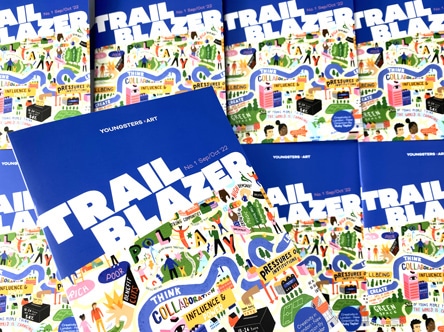
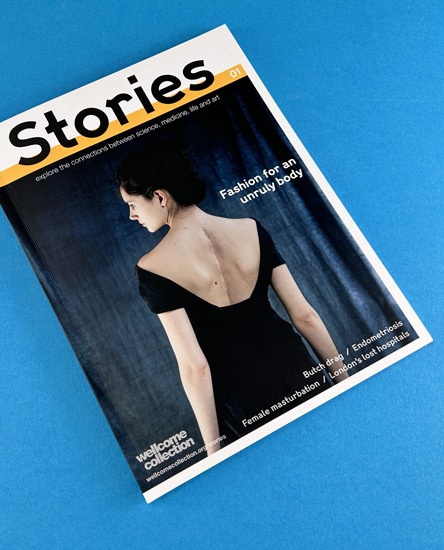
For longer content business zines, perfect binding is a great option, as demonstrated by the Wellcome Collection with their ‘Stories’. This zine explores intersections of society that we often consider to be separate but change our understanding when they collide.
Ex Why Zed was incredibly proud to work with cutting-edge music video host, Vevo, on its first ever print publication which championed their 20 artists to watch out for in 2017. The finished magazine arrived in New York just after Thanksgiving weekend and were swiftly distributed across the US while the London copies were given out by street teams.
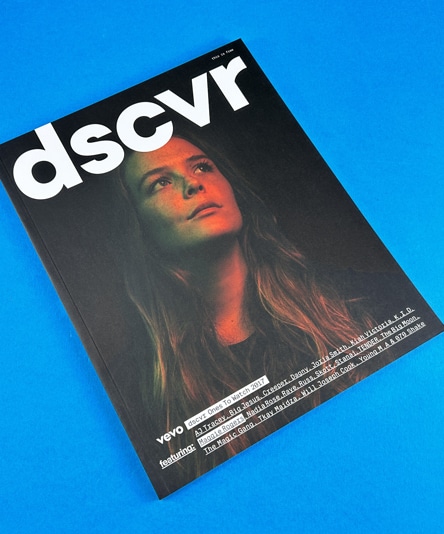
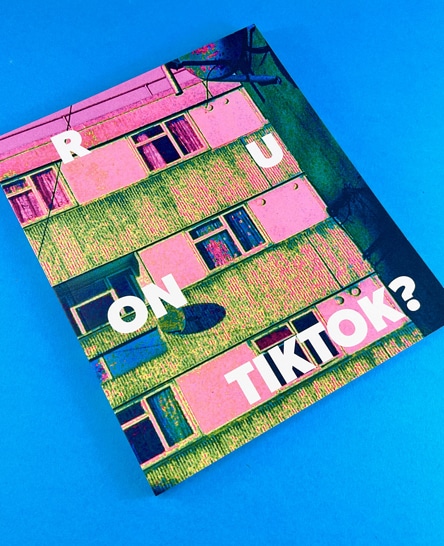
An insightful book by Ok Cool captures Londoners in their natural environment, London, and asking them whether they are on TikTok. Vivid bright green Pantone printing, translucent divider sheets and slick graphic design contribute to make this an engaging zine. A gloriously curated, magnificently designed, boundary-pushing @okcool zine featuring 6 colour printing, magic-revealing translucent sheets, a bespoke size and the simple question; RU ON TIKTOK? Sixteen Londoners were asked the question and the pages are filled with their responses and photography as we transcend the digital hyper-reality of @tiktok_uk into a printed artefact. You see, everyone still loves a physical piece as much as they love scrolling through the latest dance trend!
Increasingly, we are seeing shrewd brands printing zines with us to target a younger audience demographic. Keen to lure them away from screens, a printed zine is a tangible and captivating alternative which, if designed and styled correctly, can engage attention to deliver a message.
Yes, people still buy zines. Despite the digital age, there's a unique appeal to holding a physical copy of a zine. It's a tangible piece of art that you can touch, feel, and even smell. Plus, zines often cover niche topics that might not be widely available in mainstream media.
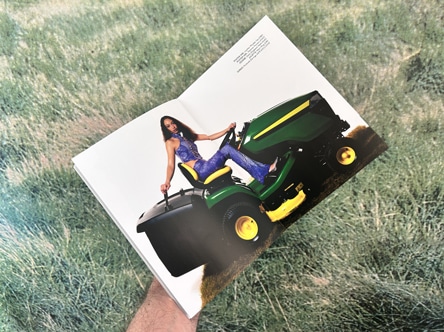
Zines are important because they offer a platform for self-expression and creativity. They allow individuals and groups to share their thoughts, ideas, and art with the world. In the corporate world, a winnning zine design can serve as a unique marketing tool, helping to promote a brand or product in a creative and engaging way.
Traditionally, zines were printed using DIY methods like photocopiers. Today, professional printing services like Ex Why Zed offer high-quality zine printing, allowing for a wide range of sizes, paper types, and binding options.
Zines can be displayed in a variety of ways. Some people like to showcase them on bookshelves or coffee tables, while others prefer to hang them on walls
or create dedicated zine racks. In a corporate setting, zines can be displayed in waiting areas, reception desks, or even distributed at events and trade shows.
Zines became popular as a form of counterculture communication in the 20th century, allowing individuals and groups to share their views and art outside of mainstream media. Today, their popularity continues due to their unique charm, DIY ethos, and the creative freedom they offer.
Zines became popular through word of mouth, distribution at events, and through underground networks. Today, the internet has also played a significant role in the popularity of zines, allowing creators to reach a global audience.
Zines are a powerful tool in the modern corporate and agency world, offering a unique way to engage with audiences, promote brands, and showcase creativity. At Ex Why Zed, we're proud to be part of this exciting evolution, providing top-quality zine printing services to our clients. Whether you're a corporation, an agency, or an individual, we're here to help you bring your zine vision to life.
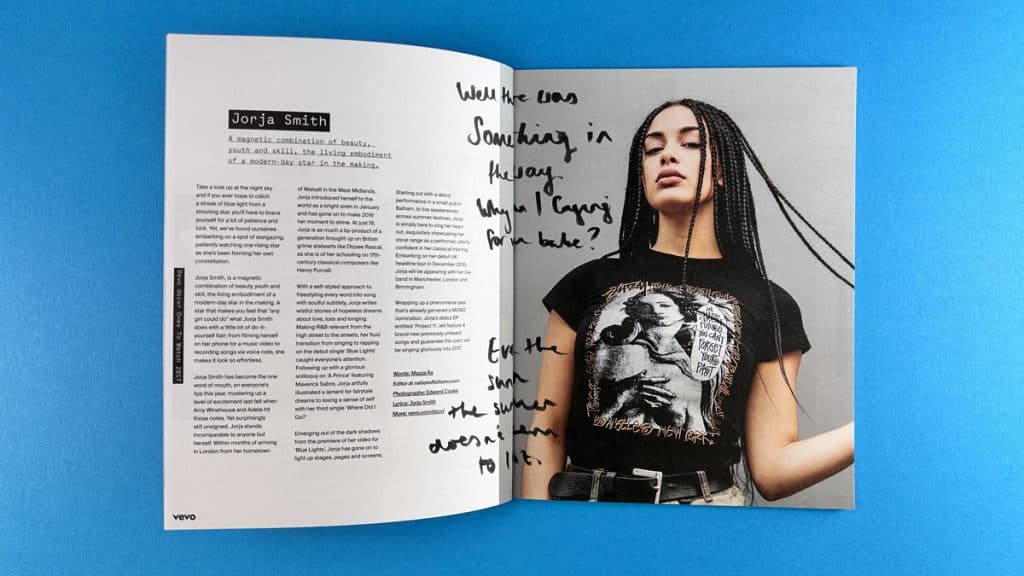
In the world of music, zines have long been a platform for independent voices, a space where underground scenes can flourish, and a medium for artists to connect directly with their fans. From punk rock to hip-hop, from indie to electronica, every genre has found a home in the DIY ethos of zine culture. Today, we're going to dive into the world and art of music zine printing, exploring their impact, their evolution, and their future.
The first music magazine printing can be traced back to 1984 when Billboard first appeared. Founded in Cincinnati by William H. Donaldson and James Hennegan.
In 1926 followed Melody Maker in the UK, NME joined the roster of people's weekly musical consumption in 1952 and Stateside Rolling Stone arrived in 1967.
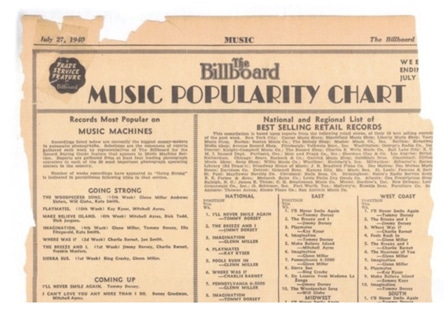
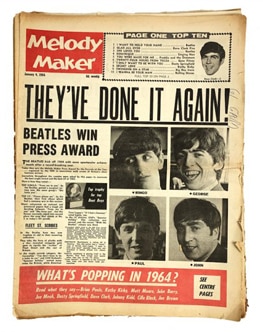
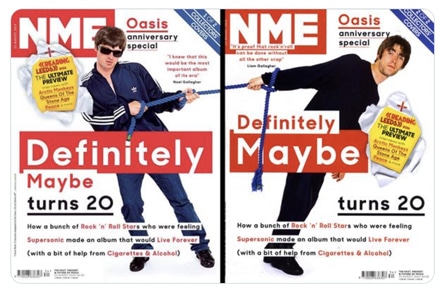
Zines! A Retro Rollercoaster
Our journey begins on the evolution of music zines in their current form in the disco-laden '70s. Amidst the rise and fall of bell-bottoms, zines were born, humbly handcrafted and handed over at gigs. They quickly became the heartbeats of underground music scenes, whispering untold stories of punk, rock, and indie music. The raw, unfiltered emotions echoing from these pages introduced us to a new kind of musical dialogue, a raw lexicon of rebellion.
Power Chords of Zines: Rebooting the Mainstream Mixtape
Ever wondered what it feels like to turn the volume knob on mainstream narratives? Zines did exactly that! They provided a platform for the unheard, the unseen, those grooving to a different tune, far from the shiny limelight of commercial success. Zines are the VIP backstage passes, revealing a world of authenticity beyond what the audience sees from the mosh pit.
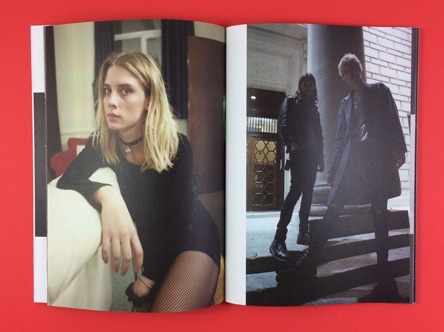
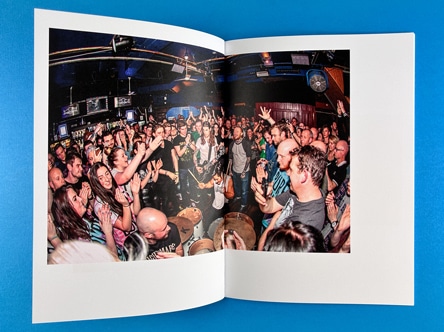
Zines: Spinning the Record on Music Consumption
Zines didn't just remix our playlists; they transformed our relationship with music. They made us question the simple 'like' and 'dislike' toggles, challenging us to dive deeper into the harmonious waters of music. Zines nudged us to consider the artist's soulful intent, the socio-political backdrop, the poetry in lyrics, and the texture of sound. They made us active listeners, tuning our ears to the nuances of musical composition.
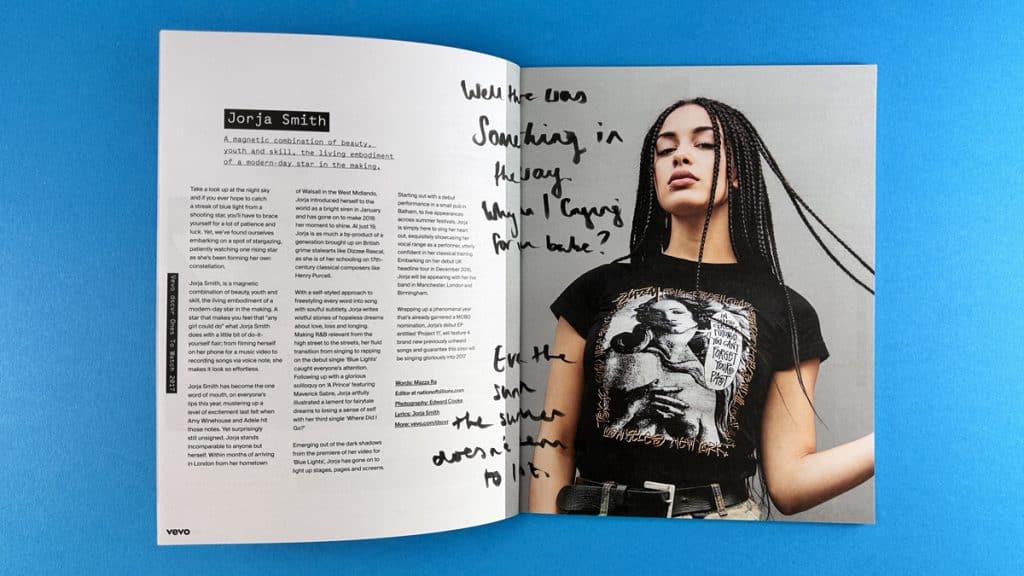
Zines and The Internet: An Encore in Cyberspace
The arrival of the digital era didn't silence the music of zines; instead, it amplified their rhythm to a wider audience. Blogs, vlogs, online communities - they've all struck a chord with the ethos of zines, echoing their messages of dissent, dialogue, and diversity. Zines haven't faded into the vinyl archives; they've simply found a new stage.
Zines Now: Conducting the Symphony of Musical Democracy
Zines remain the steadfast conductors of our music orchestra, waving their batons to the beat of inclusivity and exploration. They democratise music consumption, making us all members of the global music committee. Today, zines stand as tangible anthems of people's power, their pages humming with the democratisation of musical discourse.
Zines: Future Hit Singles
Zines aren't slowing their tempo; they're evolving, turning up the volume on more than just music. They've become a global sensation, a catalyst for change, and a sonic reflection of society. Their impact on the music landscape is as apparent as a high note at a soprano's concert. Buckle up, folks; the zine express is hurtling towards an electrifying future!
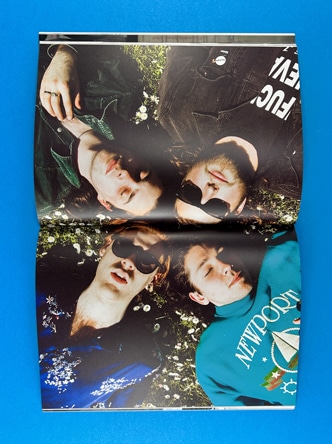
Coda: The Everlasting Echo of Zines
So, there we have it - the zine chronicle! These feisty self-published maestros have rewritten our music scores, inviting us into the jam sessions of punk, the indie rehearsals, and the digital concerts. They've stirred a sense of unity, building a global mosh pit for music aficionados. Thanks to the transformative power of zines, we've become explorers, not just listeners, in the musicverse.
As the tune of this narrative fades, remember: the spirit of zines lives on, in every artist's story, every fan's critique, and every concert goer’s photography.
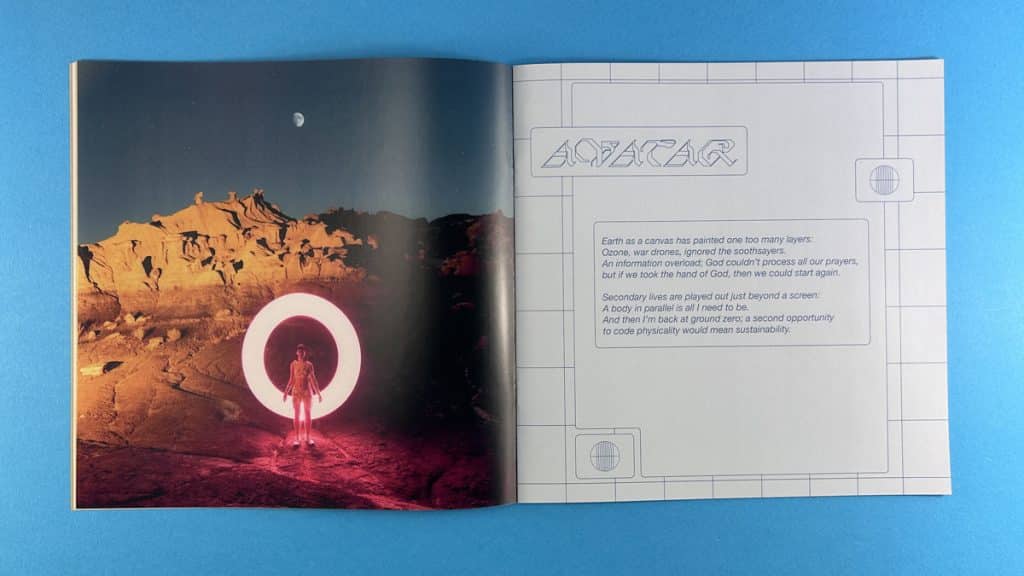
In the showcase snippet video below, we are looking at an A5 zine printed on uncoated paper. The cover has an engaging image which wraps around and is printed onto 200gsm. With 24 pages the zine is wire stitched…or stapled. We can just about get away without laminating 200gsm and the ink won’t crack when it is folded. It is a nice flexible weight that isn’t too rigid. Yes, this zine was for George Ezra. You’ll have seen him on the telly box and at Glastonbury. This was a zine to accompany his latest number one album, Gold Rush Kid. The inside pages are printed onto 115gsm Uncoated. Printing onto uncoated always gives a softer feel to the colours. The lack of a coating means the ink soaks into the paper but there is a tactility when the reader flicks through. This is the decision you need to make. If you want nice bright colours that are true to the screen, choose silk or gloss instead.
Independent music zines have played a crucial role in shaping music culture over the decades. They've been the breeding ground for new ideas, the platform for emerging artists, and the catalyst for music movements. They've challenged mainstream narratives, championed underrepresented voices, and fostered a sense of community among music lovers.
Over the years, many independent music zines have left their mark on the music scene. One such zine is ‘These could be the best days of our lives’. This children's zine features stunning full-colour illustrations, charmingly arranged on the page with a little bit of text opposite to guide the reader through the narrative. The gloss laminated cover instantly draws the reader in, adding a touch of professionalism to the DIY aesthetic.
Another influential zine is Shell Suit Zombie, a zine for the creative market designed to help creatives decide what they're going to do after they finish university. The zine features high-end illustrations on uncoated paper, which means they sit flatter and softer on the matt surface. It's an A5 perfect bound zine, demonstrating the versatility of zine formats.
Still Listening's Issue 9 zine is a stunning example of music inspired A5 zine printing, featuring rich, full-colour spreads that capture the energy of the independent music scene. The vibrant design paired with high-quality print makes this zine a striking collector's piece. If you're looking to print your own music zine, this project showcases the value of professional A5 zine printing.

When the time comes to print your own photography zine, there are a few key considerations to keep in mind. The first is the paper choice. Some styles definitely work better on uncoated paper to soften the images and lines. You might consider uncoated if the original drawings were in pencil or crayon. Alternatively, for sharp, crisp images then a silk finish would be the winning choice. If in doubt, request a paper sample pack from Ex Why Zed to help you decide.
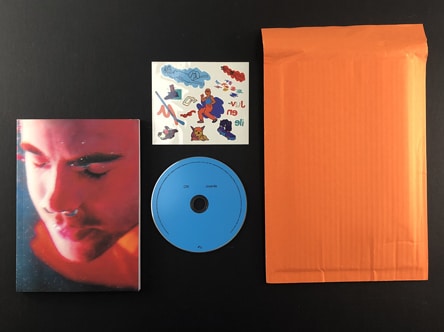
The example here, was limited edition promotional printing for the release of the CRI Juvenile album in October 2020. Printed, collated and assembled at Ex Why Zed in the UK.
The pack included:
• Limited edition perfect-bound zine book
• 'Juvenile' album CD insert
• exclusive 'Juvenile' temporary tattoo sheet
All lovingly packaged in an orange bubble envelope.
Despite the rise of digital media, independent music zines are far from dead. In fact, they're experiencing a resurgence, fuelled by a renewed interest in tangible, physical media and a desire for authentic, unfiltered content. As we move forward, it's clear that independent music zines will continue to play a vital role in the music landscape, providing a platform for artists to express themselves, fostering a sense of community among fans, and challenging the mainstream music industry.
Independent music zines are more than just DIY publications - they're a testament to the power of music, the importance of independent voices, and the enduring appeal of tangible, physical media. Whether you're an artist looking to share your music, a fan seeking out new sounds, or a music enthusiast interested in the culture and history of# The Art of Music Zines: Diving into the World of DIY and Independent Music Publications.
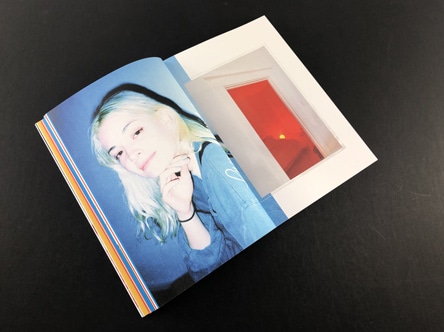
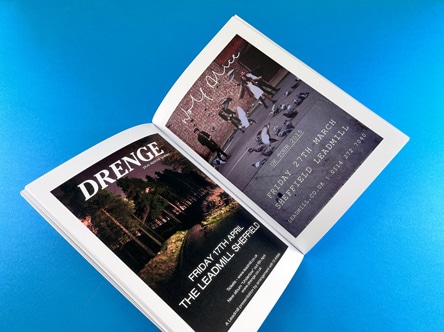
Ever wondered what keeps the pages of your favourite zine beautifully intact? It's the magic of binding, a vital aspect that often goes unnoticed. A well-bound zine not only looks visually appealing but also offers an enriched reading experience. Learn more about Zine Printing.
It's more than just gluing or stitching together the pages; it's about maintaining the aesthetic integrity of your zine. A neat and strong binding ensures that your zine withstands the test of time and frequent handling. Now, doesn't that sound important?
Just as there are many zines, there are multiple ways to bind them. From saddle stitching to wire binding, spiral binding to perfect binding – there's a whole world of techniques out there! But hey, ever heard of perfect binding? Well, it's something quite special!
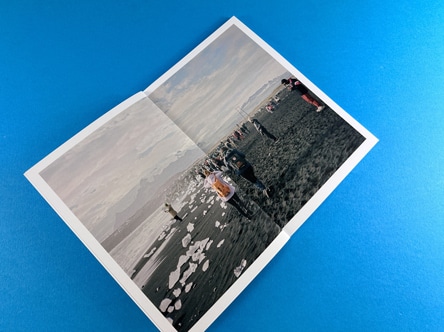
Perfect binding is like the hidden gem in the world of zine binding techniques. It's packed with advantages that give it an edge over the others. Intrigued yet? Let's dive in!
Contextual Impact on Zine Aesthetics.
You know, perfect binding is like the sleek, black suit of zine binding. It lends your zine a high-end, sophisticated vibe that other binding methods might find hard to match. If you're looking to create a zine that's professional or just want it to be super polished, perfect binding could be your perfect match.
Comparison with Wire Stitching.
Perfect binding is like the marathon runner of zine bindings. Where wire stitching breathes heavy at 40 pages, perfect binding keeps going, all the way up to 300-400 pages! If you're dreaming of a thick zine or a bookazine, perfect binding can make it come true.
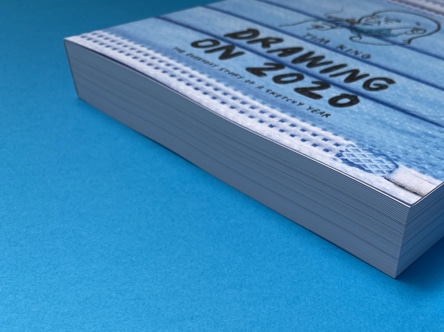
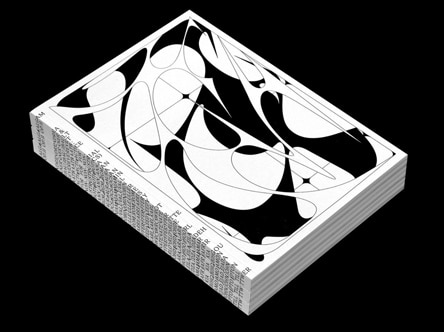
Tackling Bounce and Curling: Perfect Binding vs. Wire Stitching.
There's nothing more annoying than when the pages of your zine start curling, right? Luckily, perfect binding swoops in like a superhero here! It ensures a neat bind, reduces bounce and curling, making the read more enjoyable and hassle-free. It's like enjoying a sunny day in the park without the pesky flies.
This example here looks super cool with the huge width of the spine acting as a vehicle to wrap text around.
Perfect binding seems to be ticking all the right boxes, doesn't it? From a professional appearance to accommodating more pages and improving reader's experience, it's all here!
Perfect binding is not just about looks, but it’s also about practicality. This technique uses less space, which means more information can be packed into your zine. You know what they say – the more, the merrier!
Whether you're creating a comic zine, a literary journal, or a fanzine, perfect binding is your go-to technique. It's like the all-rounder of your cricket team, always ready to play its part!
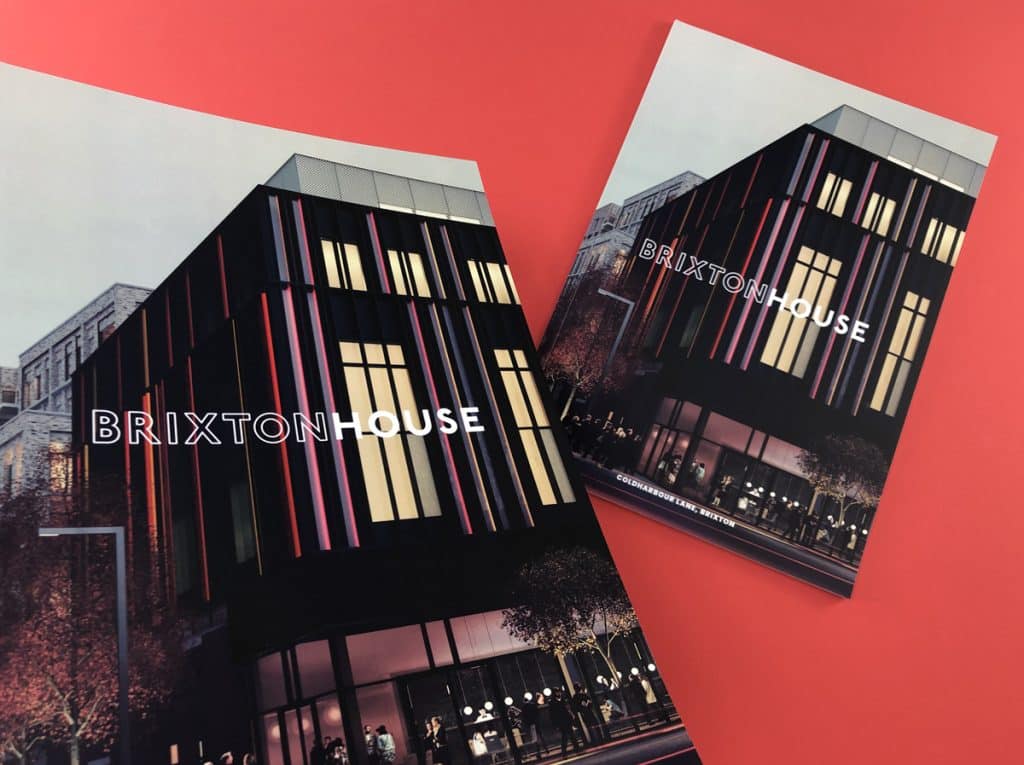
At the end of the day, the binding choice depends on your zine's content, purpose, and your personal preference. But if you're looking for a technique that offers a sleek appearance, accommodates more pages, and enhances the reader's experience, perfect binding is worth considering. Remember, the right binding can make your zine perfectly delightful!
What is perfect binding?
Perfect binding is a technique that involves gluing the pages together at the spine to create a flat edge, often seen in paperback books.
What is the main advantage of perfect binding?
Perfect binding gives a zine a professional look, allows for a higher page count, and provides a neat bind that enhances the reader's experience.
Is perfect binding suitable for all zines?
While perfect binding has many advantages, its suitability depends on the zine's purpose, content, and the creator's preferences.
How does perfect binding compare to wire stitching?
Perfect binding can accommodate more pages and offers a cleaner bind with less bounce and curling compared to wire stitching.
With perfect binding, you do lose 2-3mm on the spine side of the pages unless you force the pages down. On the example here you can see the spine gutter has 'swallowed' some text and made the word 'Brixton' hard to read.
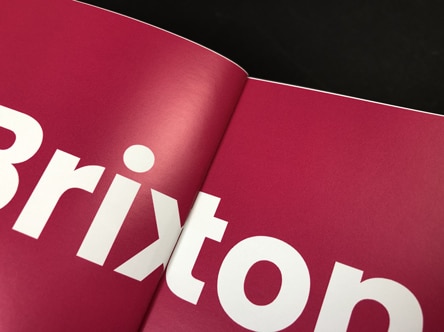
Does perfect binding affect the zine's longevity?
Yes, a perfectly bound zine can withstand frequent handling and lasts longer than many other binding methods. The PUR glue we use is super strong.
Discover more about our projects here: ExWhyZed Portfolio
Our perfect binding set-up guide can be found here: ExWhyZed Perfect Binding Guide
When it comes to creating a zine, one of the most crucial aspects to consider is the cover. It's the first thing that your readers will see, and it can significantly impact their first impression of your work. One way to ensure that your zine cover stands out and remains durable is through lamination. In this post, we'll delve into the world of lamination for zine covers, discussing its benefits and the options available to you.
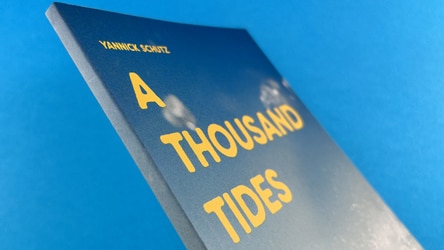
Lamination is a process that involves applying a thin layer of film to the cover of your zine. This film doesn't alter the colour of your printing underneath but serves to protect the fibres of the paper, allowing us to fold it without any issues of cracking. If you've got ink coverage where the sheets are folded, the paper, made of fibres, doesn't like being folded. So when they are folded, if there's ink on that area, the ink and the paper tend to crack. Lamination prevents this, ensuring that your zine cover remains neat and professional. Choosing to go without lamination could result in the cover cracking, which can make it look scruffy and a bit of a mistake. It's especially important to laminate the front cover of your publication if you go for a cover weight of 170gsm or thicker.
You can immediately see cracking on the cover of this wire stitched zine, below. When the cover card has been folded, the ink has cracked and this has opened up the fibres of the sheet to leave a series of scuffed marks down the spine. You shouldn't judge a book by its cover, but when it looks like this....
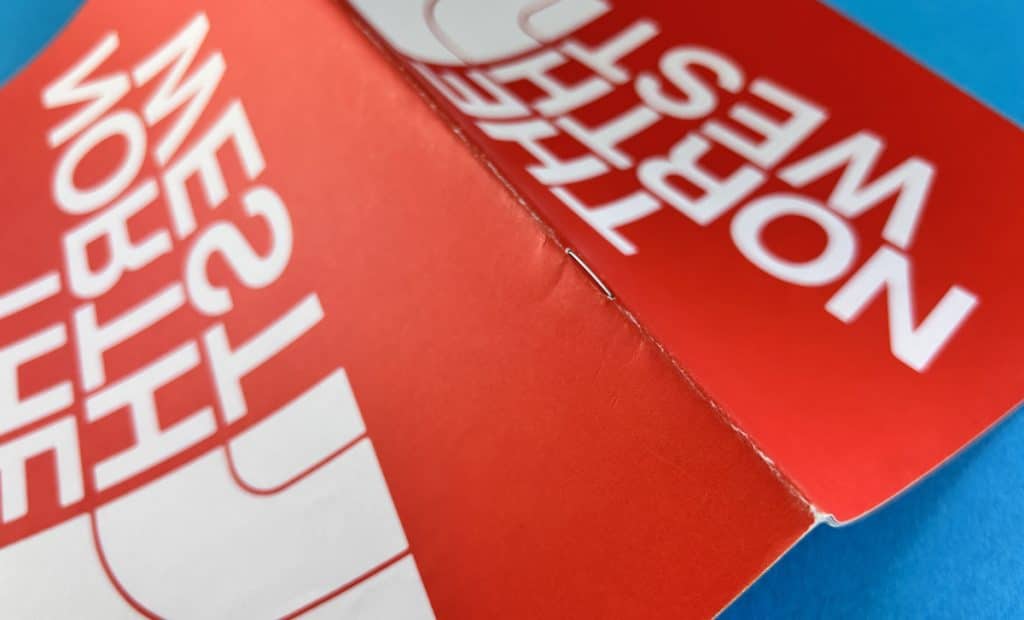
There are four choices for the lamination finish. Each option offers a different aesthetic appeal and texture, allowing you to customise your zine cover to your liking.
Matt Lamination
Matt lamination is the most common type of lamination used for zine covers. It offers a smooth and non-shiny finish, which can give your zine a sophisticated and professional look. Matt lamination is a solid accompaniment for uncoated or silk - not much of a sheen and it just feels professional.
Gloss Lamination
Gloss lamination, on the other hand, provides a shiny and reflective finish. This type of lamination can make your illustrations and colours really jump through, making it an excellent choice for comics or graphic novels.
In the image below we have gloss lamination on 'Able' on the left and matt lamination on Cunning Folk in the foreground. The gloss lamination has more shine and really jumps towards the reader but arguably makes the content harder to see when tilted towards the light. The matt lamination is more subtle and you wouldn't really know it is there.
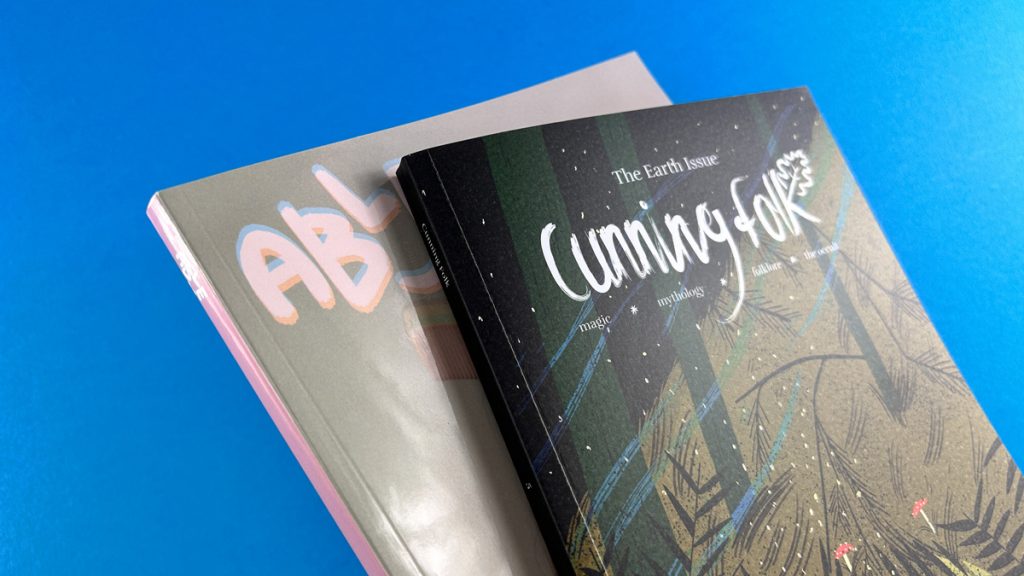
Soft Touch Lamination
Soft touch lamination provides a velvet feel to the cover, offering a unique and professional aesthetic. However, this type of lamination is arguably not suited to zines, as old school Zines would not have even entertained the idea of using Soft Touch lamination.
Anti-Scuff Lamination
Anti-scuff lamination is a less common option, chosen probably once a year. Despite its name, it doesn’t really stop scuffing. It is an option, but we would advisee you to opt for matt lamination instead.
What is the best paper for zine covers?
The best paper for zine covers depends on your personal preference and the aesthetic you're aiming for. However, if you're planning to laminate your cover, we recommend going for a cover weight of 170gsm or thicker.
What is the difference between matt lamination and velvet lamination?
Matte lamination provides a smooth and non-shiny finish, while velvet (or soft touch) lamination gives a soft, velvet-like feel to the cover.
In the photo below, Ephemera has gloss lamination and Cunning Folk is noticeably softer when compared against it.
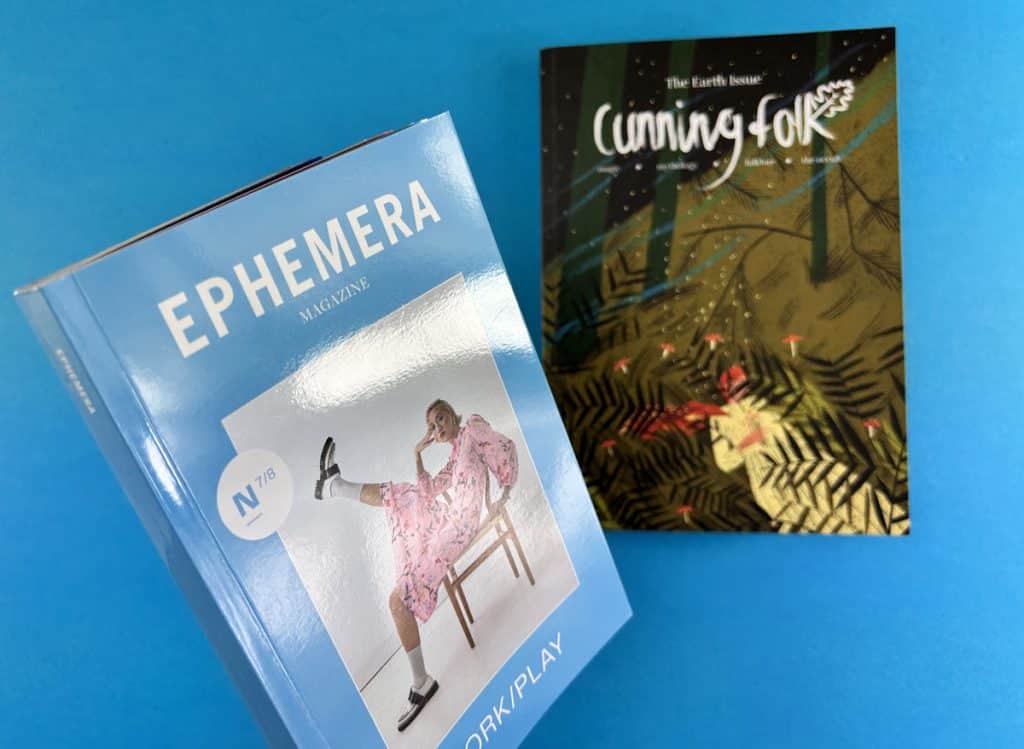
What does lamination do for printing?
Lamination adds a protective layer to the printed material, preventing it from cracking when folded. It also enhances the aesthetic appeal of the printed material, giving it a professional and high-quality finish.
What is velvet lamination?
Velvet lamination, also known as soft touch lamination, provides a soft, velvet-like feel to the cover. It offers a unique and professional aesthetic
When it comes to zine production, the binding method you choose can significantly impact the final product's look and feel. One popular method for binding zines, particularly those with a higher page count, is perfect binding. This method offers a neat, professional finish that can elevate your zine's aesthetic which can command a higher cover price and allow you scope for more content within. In this post, we'll delve into the world of perfect bound zines, exploring the design considerations, binding process, and technical tips you need to know.
Perfect binding is a method commonly used in Bookazine printing and for zines with 36 pages or more. This method involves trimming the inside pages into a text block, roughening up the left-hand edges, applying glue, and then wrapping a continuous cover around the text block. The result is a neat, professional-looking zine with a flat spine.
Perfect binding offers several advantages that make it an appealing choice for zine creators. You've all seen Little White Lies, Shooter and Moof, they are all perfect bound. Firstly, it provides a more high-end, professional look compared to other binding methods. This can be particularly beneficial if you're creating a zine for a professional context or if you're aiming for a more polished aesthetic.
Secondly, perfect binding allows for more illustrations, photography and poetry self-publishing and creative writing to be packed in. While wire stitching is suitable for zines with up to 40 pages, perfect binding can accommodate monster zines with up to 300-400 pages. This makes it an excellent choice for more substantial zines or Bookazines.
Finally, perfect binding creates a neat bind, with less bounce and curling on the inside pages compared to wire stitching. This can enhance the reader's experience, making your zine easier and more enjoyable to read. If your spine is 4mm or thicker there's even room to add your title, issue number and attention grabbing call to action.
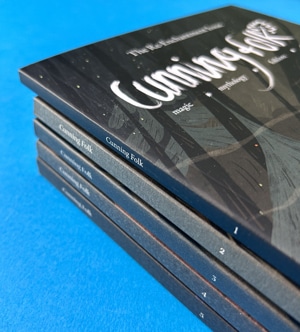
When designing a perfect bound zine, there are several key considerations to keep in mind. One of the most important is the page count. Perfect binding is best suited to zines with a minimum of 36 pages. This ensures that there is enough thickness in the text pages for the glue to hold effectively. Attempting to perfect bind a zine with fewer than 36 pages can result in the pages pulling out, as there is not enough glue to hold them in place.
Another crucial consideration is the cover weight. Because of the amount of glue used in perfect binding, the cover needs to be resilient. We recommend a minimum of 200gsm for the cover. Anything thinner, and the glue may seep through, compromising the binding's effectiveness.
When you come to create your perfect bound zine cover file, check out our dedicated page with super helpful video and illustrated guides plus downloadable InDesign templates to save you some head-scratching.
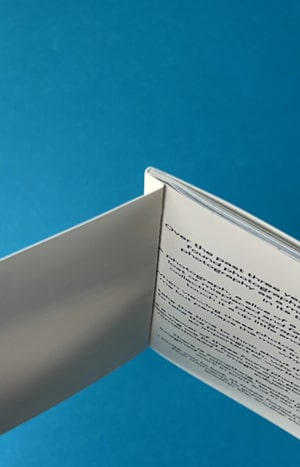
Finally, it's important to allow for a 6-8mm hinge on the front and back cover. This ensures that the cover opens neatly and falls flat again. You'll also need to allow for 6-8mm being lost on the inside front cover and the inside back cover, as well as the first 6-8mm on the spine side of your first and last text page. This area will be obscured by the glue, so it's important to keep any important content at least 10-12mm away from this side of the page.
You can actually see on our example here that the text starts too close to the 6-8mm area and it is very nearly hidden.
Text pages onto 120gsm Uncoated
36pp to 44pp Text = 3mm spine
(ie: if you have 40 pages then you need a 3mm spine)
48pp to 60pp Text = 4mm spine
64pp to 72pp Text = 5mm spine
76pp to 88pp Text = 6mm spine
92pp to 100pp Text = 7mm spine
104pp to 116pp Text = 8mm spine
120pp to 132pp Text = 9mm spine
200pp Text = 14mm spine
Text pages onto 130gsm Silk
36pp to 40pp Text = 2mm spine
44pp to 56pp Text = 3mm spine
60pp to 76pp Text = 4mm spine
80pp to 92pp Text = 5mm spine
96pp to 112pp Text = 6mm spine
116pp to 128pp Text = 7mm spine
200pp Text = 11mm spine
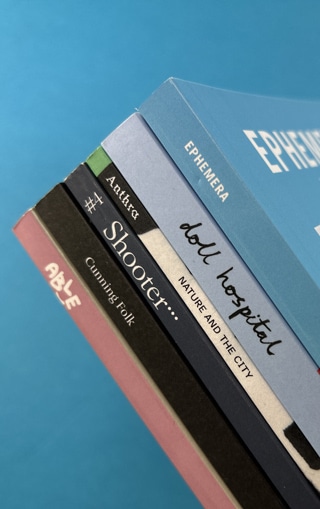
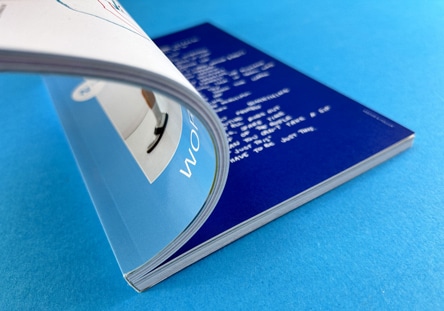
When you come to set up the inside pages, lets keep the key information at least 5mm from the trim edges of the page. On the spine side of the page, 2-3mm tends to be slightly obscured unless the reader really force the pages flat. This isn't a user friendly way to read a book so best to start content on the spine side of the pages at least 8-10mm in. Our image here shows the spine gutter area and you can see the central section is tough to fully read.
This is an example of a superb page layout for a perfect bound book. The text is neatly organised into columns which sit well within the constraints of the page's parameters. The reader does not have to work hard to read the article and it is punctuated with awesome graphics and subtle page numbers in the bottom, outer corners.
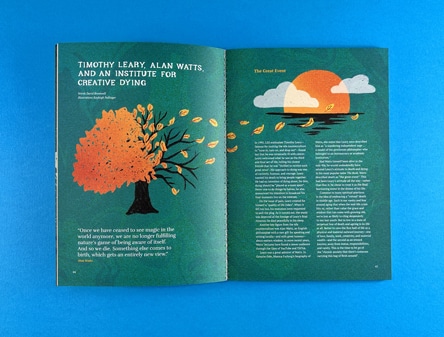
Perfect binding offers a world of possibilities for zine creators. This binding method allows for a wide range of designs and layouts, providing a canvas for your creativity and imagination. Whether you're creating a personal zine or a professional publication, perfect binding can help bring your vision to life.
For more information on perfect binding and other binding options, check out our Perfect Binding Setup Guide and our Binding Options page on our website. These resources provide detailed instructions and illustrated guides to help you prepare your zine for perfect binding.
For a visual guide to perfect bound zines, check out our YouTube videos:
The best binding for a zine depends on several factors, including the page count, the aesthetic you're aiming for, and your budget. Perfect binding is a great option for zines with a higher page count and a more professional aesthetic.
Perfect bound binding is a method that involves trimming the inside pages into a text block, roughening up the left-hand edges, applying glue, and then wrapping a continuous cover around the text block. The result is a neat, professional-looking zine with a flat spine.
You will upload your print ready pdfs to Ex Why Zed. One for the cover spreads and one for the inside pages. We will then give your artwork a preflight check and report back any issues to be ironed out. We strive for perfection in the artwork before we eve consider printing.
When it comes to binding zines, perfect binding emerges as the superior choice. This method bestows your publication with a polished, professional appearance that sets it apart from the rest. It not only accommodates a larger number of pages but also imparts a sturdy bind that stands up to the test of time and use. In contrast to other binding techniques, perfect binding presents a more refined, sophisticated aesthetic, elevating your zine to a higher level of professionalism.
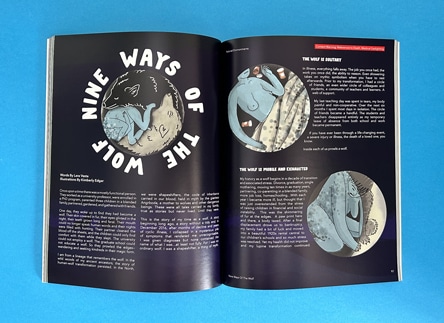
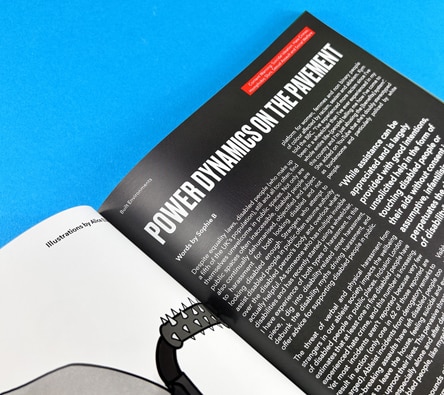
Perfect binding is characterised by its neat, flat spine, its resilience and its professional, high-end appearance. This method is also recognised for its capacity to hold a greater number of pages than alternative binding techniques.
Features of perfect binding include a flat spine, a continuous cover that wraps around the text block, and a 6-8mm hinge on the front and back cover. This binding method also requires a minimum of 40 pages and a cover weight of at least 170gsm.
The two main types of binding for a zine are wire stitching and perfect binding. Wire stitching, also known as stapling, is suitable for zines with up to 40 pages. Perfect binding, on the other hand, is best for zines with a higher page count.
Perfect binding offers a world of possibilities for zine creators, providing a canvas for your creativity and imagination. Whether you're creating a personal zine or a professional publication, perfect binding can help bring your vision to life. With its neat, professional finish and ability to accommodate a higher page count, perfect binding is an excellent choice for your next zine project.
For more information on perfect binding and other zine printing options, don't hesitate to contact us at Ex Why Zed. We're always here to help you bring your creative projects to life.
Engaging, interactive, and effective phonics teaching can seem like a mountainous task. It doesn't have to be! By understanding common challenges and finding creative solutions through printed phonics books, we can elevate the learning experience.
Diverse learning styles, the complexity of phonics itself and struggling readers are among the notable challenges in phonics instruction. However, the right approach, coupled with tailored classroom resources, can help unravel the phonetic code in an exciting and learner-friendly manner.
The first hurdle in phonics is associating sounds with their corresponding letters. For some learners, this can be a tricky business. Link to school book printing Phonics books, with their variety of content, make this transition seamless. They offer a mix of activities that cater to different learning styles, making the phonics journey enjoyable.
Another significant challenge is addressing learners who struggle with phonics-based reading. One approach is to integrate phonics instruction when reading a book. In this way, learners can connect phonics rules to real-world examples, which will make their learning more meaningful.
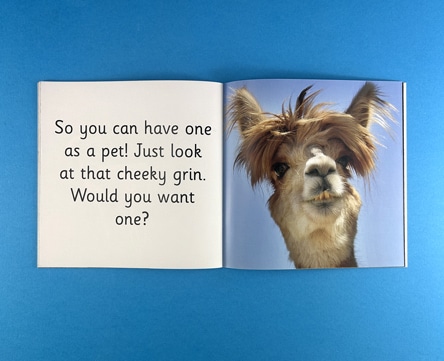
Printed phonics books, specifically tailored to suit your learners' needs, can be a game-changer. They allow learners to practice and apply their phonics skills in a safe, controlled environment, while also providing teachers with a valuable assessment tool.
Developing a rich phonics curriculum is another challenge that teachers often face. With Link to school book printing and Link to educational publishing, this process can become a breeze. Customised phonics books offer a platform to implement a variety of activities that suit individual learners’ needs.
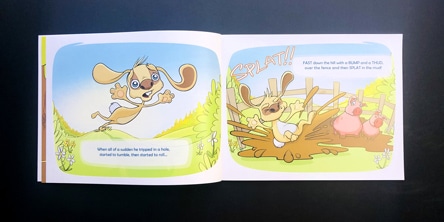
Teachers can use a multi-sensory approach to integrating phonics instruction during reading. This may include pointing to words while reading aloud, asking students to identify sounds or letters, or using phonics books to introduce and practice new sounds.
The main challenges in teaching phonics include catering to different learning styles, dealing with struggling readers, and developing a rich phonics curriculum. However, these challenges can be addressed with the right strategies and resources.
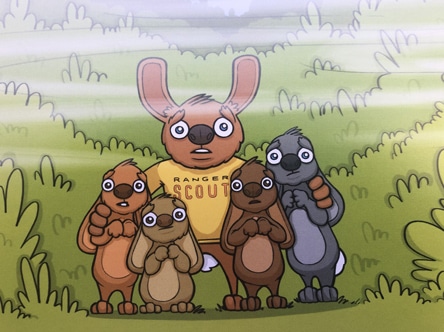
For struggling readers, explicit and systematic phonics instruction can be helpful. This can be achieved using phonics books that provide structured and progressive activities, focusing on individual sounds, blending, and segmenting.
The best approach varies based on individual students’ needs. However, an integrated approach using phonics books, alongside other teaching methods, often proves to be effective.
Teaching phonics doesn't need to be a daunting task. With the right resources, a humanistic approach, and a splash of creativity, you can turn the challenges into opportunities for learning and growth.
????????????????
Get in touch with us on Live Chat, 01206 766647 or hello@exwhyzed.com for a print quote and to discuss your upcoming project. Or jump on our Project Builder now to send us your print spec.
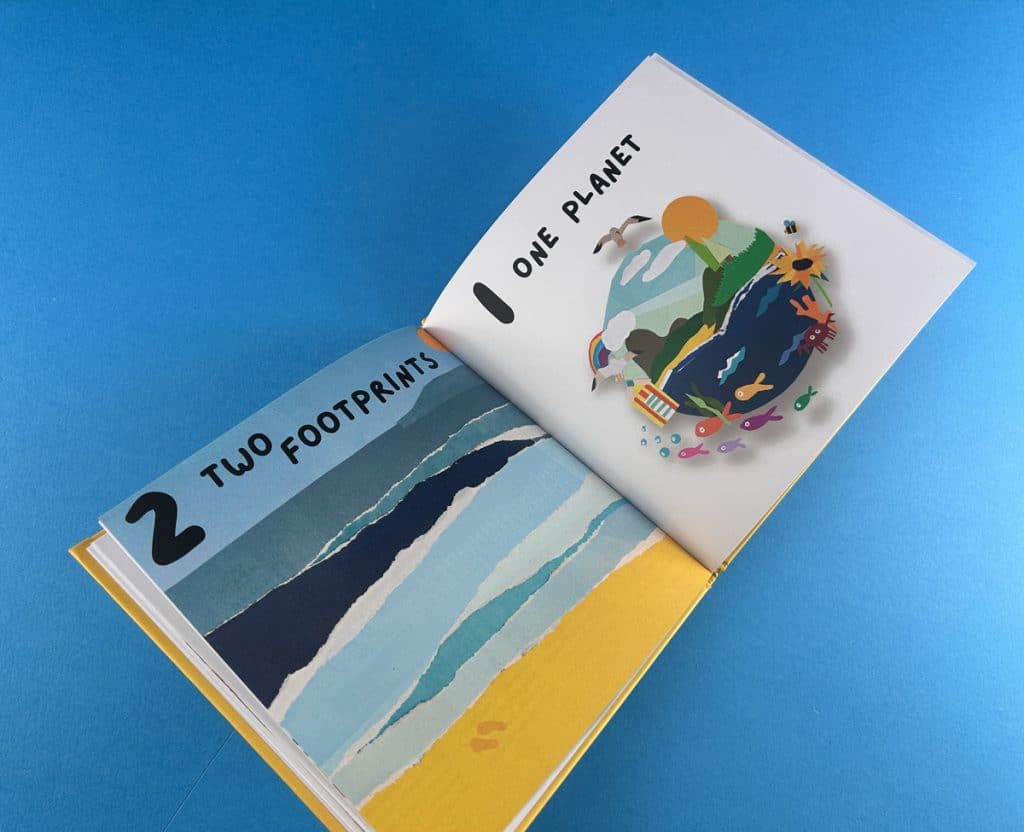
Sales of fantasy, science fiction, romance, crime novels, and personal development titles increased by 5 per cent compared to 2020, owing to strong demand. The sales totalled £1.82 billion, a 3 per cent increase over 2020, and, for the first time, sales have surpassed £1.8 billion. Short run hardback book printing was in high demand as people were looking to get their books published and sold. For hardback book printing and other services, you can rely on Ex Why Zed.
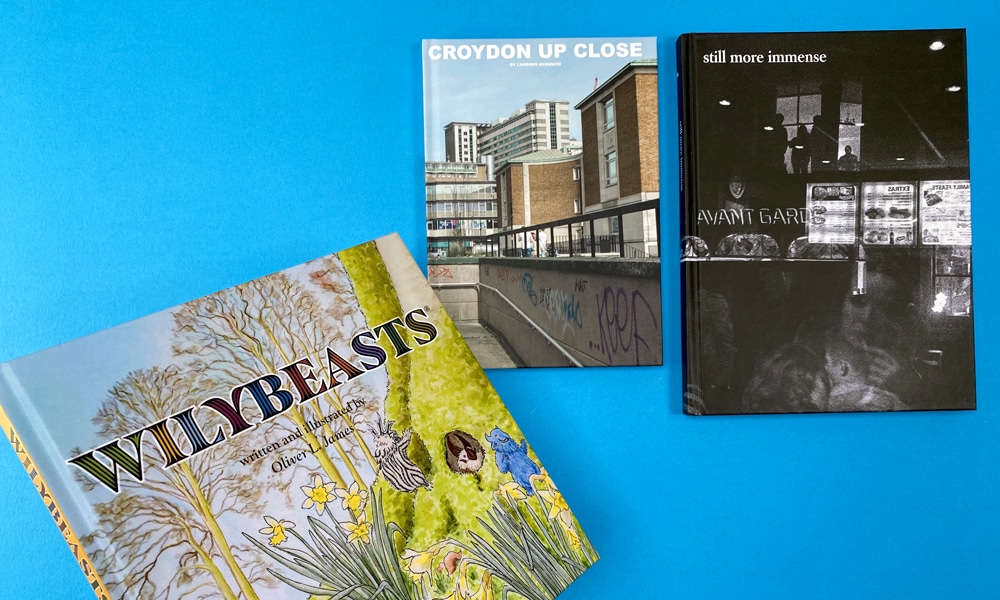
Despite the lockdowns, book sales increased in 2021, with more than 212 million print books sold – the highest figure in the last decade.
At the start of 2021, bookshops all over the UK were closed for more than three months. The data was collected from around 3,000 customers buying books each month in 2021.
In comparison to the previous year, fiction was up 20 per cent. Crime and thrillers saw a 19 per cent increase in volume, romance saw a 49 per cent increase, while science fiction and fantasy increased by 23 per cent.
The year’s bestselling title was The Thursday Murder Club, while the fourth bestselling title of the year was The Man Who Died Twice. These were Richard Osman’s first two novels. The category of non-fiction that grew the most was the mind, body, and spirit genre, which increased by 50 per cent to hit £18.7 million.
Charlie Mackesy’s “book of hope”, The Boy, the Mole, the Fox, and the Horse continued to be the best-selling title in its second year. It is closely followed by The Midnight Library by Matt Haig, a story about Nora and her depression. Douglas Stuart’s Shuggie Bain and Maggie O’Farrell’s Hamnet were strong competitors as well.
Adult fiction has been a strong runner in the top 20 books of 2021, having nine on the board. The book They Both Die at the End by Adam Silvera was the first young adult novel to be part of the year’s top books since 2015.
According to the researchers, the social media create conversations about old and new books and give new authors with great platforms to showcase novels. Therefore, book buyers who were seeking comfort found escapism, familiarity, laughter, and perhaps a sense of community in the year’s bestsellers. The increase in sales was proof that books are not a fad and have a good effect on people.
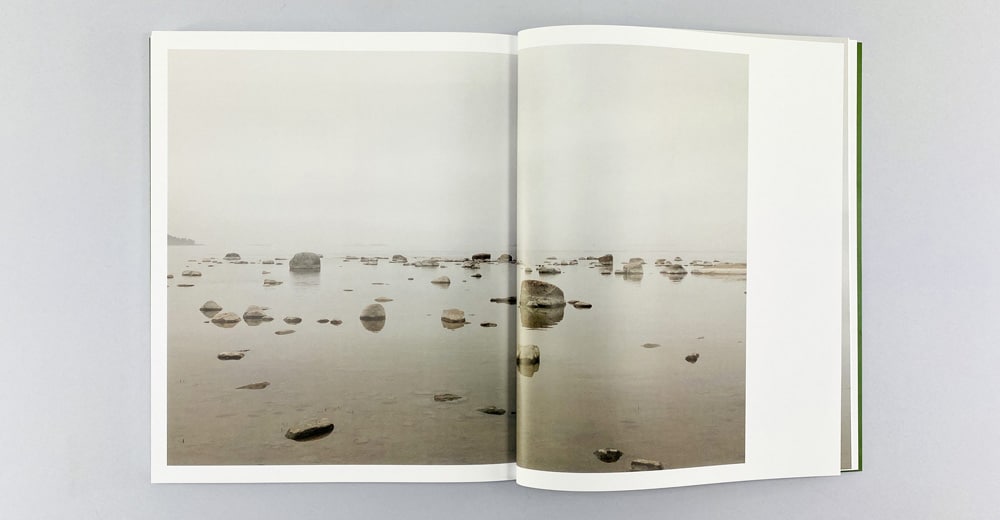
As British readers continue to support the embattled country, books by Ukrainian authors fly off the shelves. The sales of classic Russian literature have also increased dramatically.
Sales of works by respected Ukrainian writer Andrey Kurkov, best known for Death and the Penguin, have increased by 848 per cent. As a result, authors are prompted to acquire short run hardback book printing and other types of printing services to publish their books. Marina Lewycka, a British-Ukrainian author whose book A Short History of Tractors in Ukrainian was a UK bestseller in 2005, has seen her sales increase by 441 per cent in February. According to Nielsen BookData, sales of books by renowned Russian author Mikhail Bulgakov - author of The Master and Margarita - increased by nearly 50 per cent last week compared to pre-invasion levels.
This trend provided companies that offer short run hardback book printing with more work because of the heightened demand.
Books by Nobel Laureate Aleksandr Solzhenitsyn, author of One Day in the Life of Ivan Denisovich, sold nearly 30 per cent more than before the war. Dostoevsky’s classic works have increased by 123 per cent year over the year, while Tolstoy’s works, including War and Peace, have increased by 30 per cent. In comparison, total book sales in the first week of March were down 7 per cent from the same period last year.
The public’s turning to literature to support Ukraine and learn more about Russia’s often complex past, according to Tom Tivnan of The Bookseller, “makes perfect sense”. People want to help Ukraine, and they’re starting to focus on an area that they’ve never thought about or read about before. They are astute enough to separate the Putin regime and the oligarchs from the Russian people and their great literature.
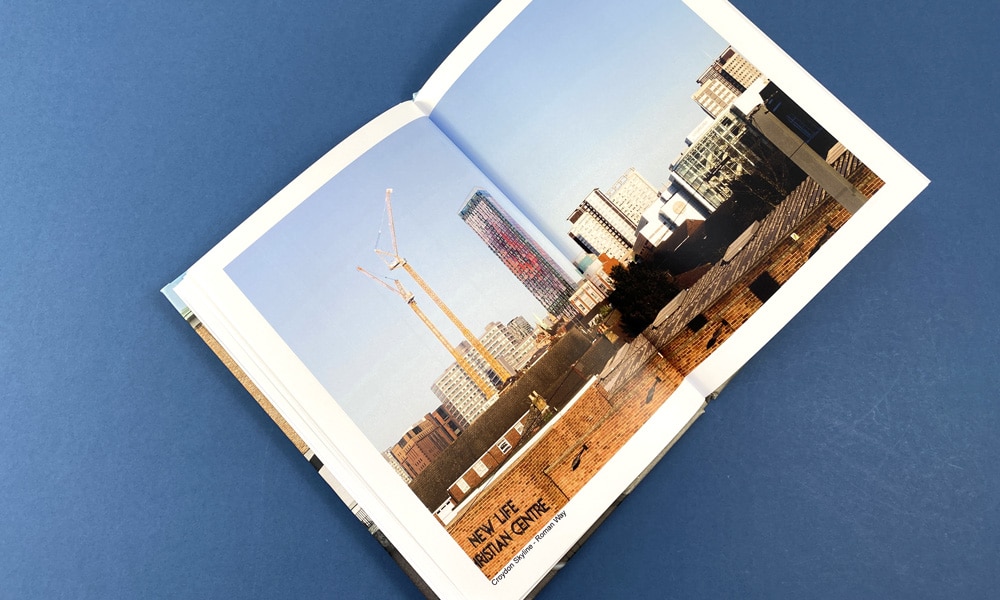
In 2021, the French government implemented a number of programmes to help booksellers. This included a reading campaign and the creation of the Culture Pass, which gave 18-year-olds across the country €300 to spend on cultural products, including books, as long as they weren’t bought online. A total of 426,000 books were sold at nearly 3,000 participating bookstores. By 2022, the pass will be extended to all 15-to 17-year-olds, potentially boosting the industry.
Sales revenue in France increased by 20 per cent in 2020 and 19 per cent in 2019 compared to the previous year, though no specific sales figures were provided. The Syndicat de la Librairie Française (SLF) confirmed these figures, stating that sales at member stores increased by 20.4 per cent in 2021 compared to 2020 and by 24.3 per cent compared to 2019, as reported by Anne Martell, president of the SLF and co-director of the Martelle family bookshop in Amiens, France.
Sales in Germany, Austria, and Switzerland increased by about 3 per cent overall in 2021 compared to 2020 and by 1 per cent compared to 2019. A large part of this was due to a modest increase in the number of books sold combined with higher prices. Lockdowns hurt book sales at brick-and-mortar stores, which fell 11 per cent from the pre-pandemic year of 2019.
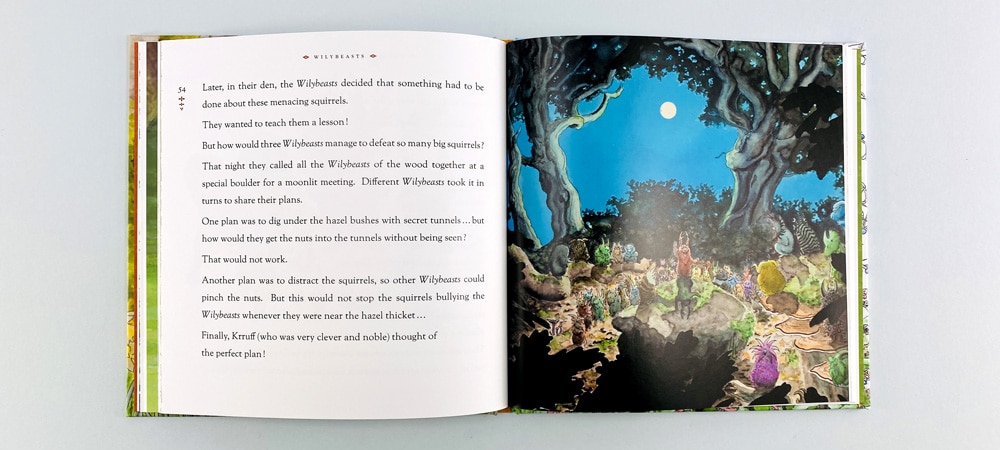
With the ease of restrictions on shopping, sales of books continue. So, if you have used the downtime during the pandemic to write a novel, or your workplace is looking for a printer for a hardback book printing of your company’s portfolio, Ex Why Zed can provide you with these services!
We provide high-quality prints on different types of paper. We also have a fast turnaround time so that you can have a physical copy in no time. Our rates are competitive so that you don’t have to look far for your options. Visit our website exwhyzed.com for more information on the services we provide.
The book markets in the UK, Europe and the USA, along with many others worldwide, experienced a strong year in 2021. That’s reassuring as the bounce back took place against the backdrop of emerging COVID-19 variants and the pressures on supply, staffing, and pricing that resulted. In China, though, book sales have yet to recover after the significant drop in sales in 2020, making the country an exception to the rule. Granted, in the current climate, custom hardcover book printing has been subject to the same pressures, but with the expected recovery, prices and availability of hardback book printing look set to recover along with the rest of the market.
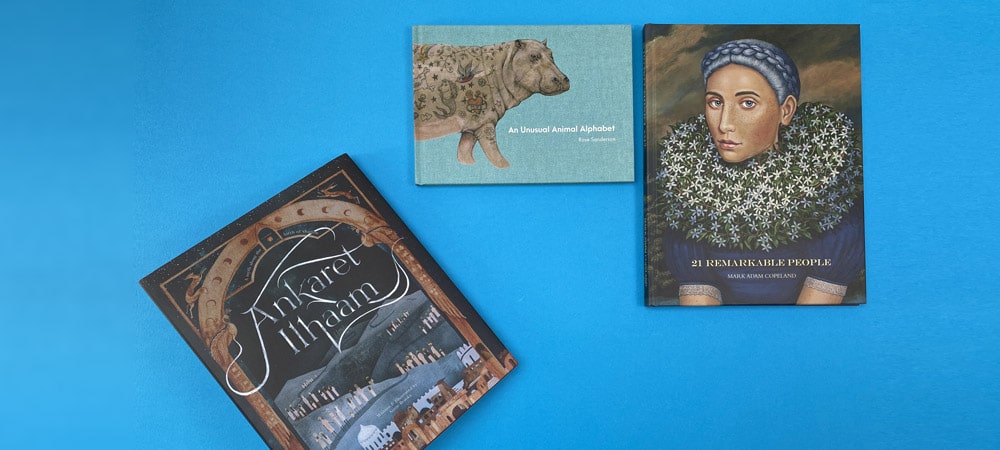
Changes to the landscape within the book industry continue, with publishing firms consolidating through mergers and acquisitions. Every market has seen notable takeovers, and it’s the largest publishers that have experienced the biggest increases in their share.
Other trends divined from observation of multiple markets include record book sales in Spain and the United Kingdom. There has been a flattening in the growth of sales of eBooks and a cooling in the nonfiction sales area. Ecommerce continues to grow, as does the threat of Amazon on booksellers, and there has been a boom in sales of manga publications in Germany, Italy, Spain, and the United Kingdom. In fact, in the UK, Manga sales have increased over twice fold, in terms of both value and volume, increasing by 157 per cent to £18.3 million.
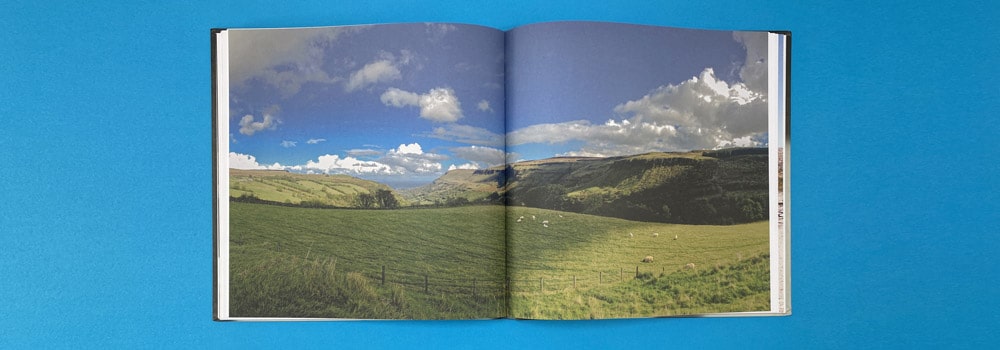
Bricks-and-mortar stores worldwide have emerged as the clear losers in many markets after two years of Covid-19 lockdowns and other pandemic measures.
However, in the UK overall, record sales have been announced, even with the ongoing supply chain issues, of which Brexit was the frontrunner.
The strongest performers in terms of sales were fiction and children’s books. In the final 42 weeks of 2021, fiction sales increased by 21% over the same period in 2019 and accounted for 23.8 per cent of the overall market, the highest share since 2012. Children’s book sales increased 15% in the final 42 weeks of the year compared to the same period last year, while nonfiction sales increased by 3%. Overall, the average selling price of a book increased for the ninth consecutive year to £8.84.
Following a ‘bonanza’ year in 2020, eBook sales were expected to decline in 2021, in line with other markets. According to data from the UK’s top six trade publishers, eBook sales fell by around 13% year on year to 47.5 million copies.
This is good news, indicating increased interest in physical books over digital, and suggesting that custom hardcover book printing is well worth considering if you are looking to distribute copies of your latest work.
While the trend for sales in bricks-and-mortar retailers went downwards globally, those businesses, including independents, are still doing well in the UK. The Booksellers Association now has 1,027 indie members, the highest number since 2013. Around 60% of respondents to the trading survey said their sales were up from the previous year.
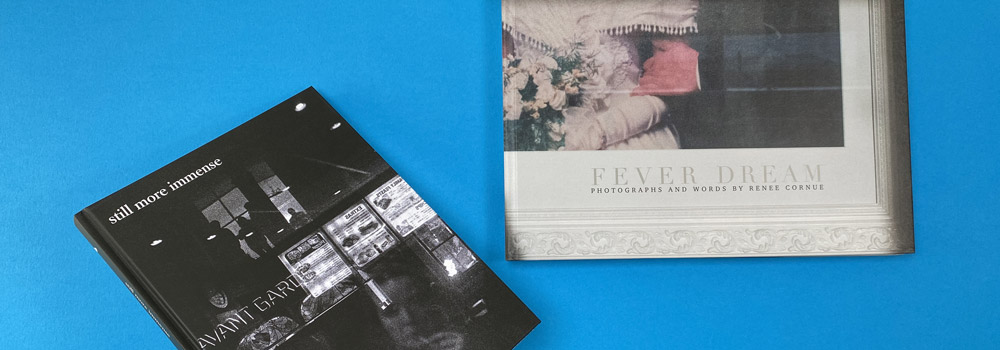
In the US, data shows that sales of printed books went up by 8.9 per cent in 2021. According to NPD BookScan data, 825.7 million print books were sold in the United States in 2018, up from 757.9 million in 2020. The most significant increase was in the Young Adult (YA) segment, which increased by 30.7 per cent. Adult fiction sales increased by 25.5 per cent, while children’s fiction sales increased by 9.6 per cent. Adult nonfiction sales increased by 4.4 per cent.
Sales totalled US$15.4 billion last year, up from US$13.7 billion in 2020, according to the Association of American Publishers, which tracks sales from 1,369 publishers. A rebound in sales in the K–12 instructional materials category, as well as a strong year for trade segments, drove the increase.
The German-language market saw growth in online sales as bookstores were closed for much of 2021. Germany, Austria, and Switzerland all saw steady sales last year, while sales of print books and book-related physical media increased by 3% in 2020. Revenue is stable compared to last year, but this is due solely to a higher average selling price, as unit sales are still down.
In 2021, book market revenue in Germany increased by 3.2 per cent, with more books sold (+1.6%) at a higher average selling price (+1.6%). In comparison to the previous ‘normal’ year, 2019, turnover was slightly higher (+0.8%) due to a significantly higher average selling price (+4.8%); however, volumes of book sales have decreased significantly during this time.
Repeated lockdowns hit sales in bricks-and-mortar stores, as they did to many other markets. Following an 8.7% drop in sales in 2020, physical stores saw another 3% drop in 2021, bringing the total loss to 11.5 per cent since 2019.
In Italy, sales have also bounced back. Book sales increased 16.9% over the previous year, more than making up for the market’s 14.6 per cent decline in 2020. Turnover was up 10.4%, a rebound from the 9% drop in 2020, with books selling for an average of €14.78, a slight decrease on 2020 figures.
Book sales in China suffered because of the increase in online sales. Although physical bookstore sales were up 4.1 per cent and online sales only increased by 1 per cent from 2020, this represents a significant slowdown in the growth of a developing market that was regularly posting double-digit year-on-year growth before the pandemic hit. Sales fell 5.1 per cent in 2020, marking the first year of negative growth since OpenBook began tracking the book market, and the year ended a five-year streak of annual growth of 10% or more.
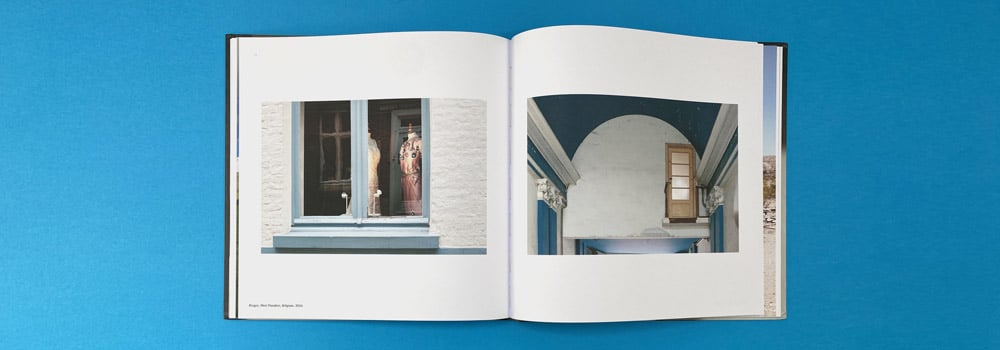
If you have a manuscript, a product catalogue, a coffee table book or any other work you want printed to share with the world, a good hardback book printing company is critical. The content is certainly vitally important, but the physical book and its production should also be of high quality. If the printing materials and print quality are anything less than acceptable, you are missing out on a chance to share the fruits of your labour with the world.
At Ex Why Zed, we can help transform your ideas into print in various ways, whether you need short run hardback book printing, booklet printing, and many more! We can print magazines, artists’ catalogues, children’s books, self-published novels, photography collections and much more.
Our prints have an award-winning quality. Browse exwhyzed.com to see our services, or send us a message to request a paper sample pack to see which type of printing you want your masterpiece to be immortalised in.
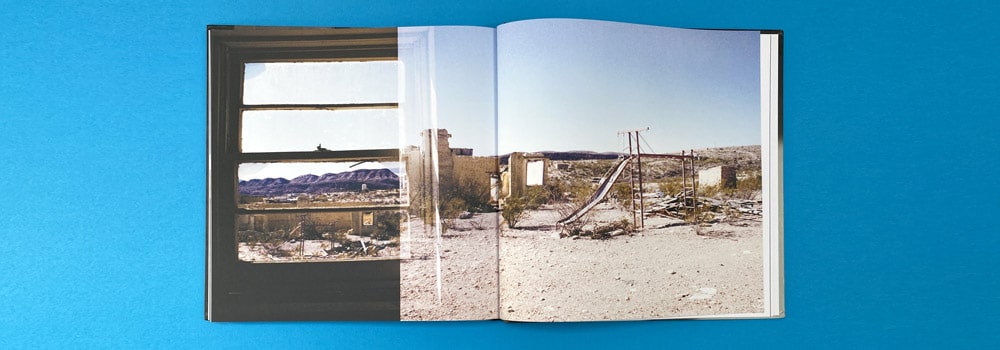
Social Media
Google My Business – With physical books making a comeback in popularity, now is the perfect time to invest in hardcover book printing. Learn more about the state of the book market here.
Facebook – As the world increasingly digitises, there is a growing trend of people yearning for physical products that they can hold and touch. This is especially true when it comes to books. Read about the performance of the book market in 2021 here.
Twitter – Last year saw a resurgence in the popularity of physical books, which is a welcome sign for publishers around the world. Find out more about it here.
LinkedIn Personal – The book market in the UK and elsewhere in the world saw welcome developments last year. Click here for more information.
LinkedIn Company – The physical book market experienced a strong year in 2021. Get more insights here now.
The year 2021 saw increased demand among consumers for physical books. However, the climate surrounding the pandemic also resulted in a shortage in their supply. While some authors chose to commission a short run of hardcover book printing to fill the supply gap, shipping issues also impacted the time it took for the products to reach stores and ultimately the hands of eager readers after soft and hardback book printing.
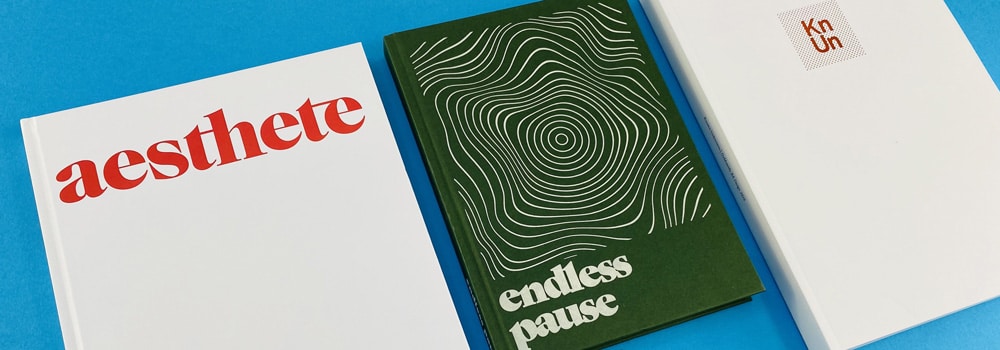
According to the executive director of the Book Manufacturers’ Institute, Matt Baehr, the shortage of physical supplies such as paper and ink is the main reason why books have become in shorter supply. The process of getting items from A to B has also been hampered.
The pandemic is the primary reason for supply shortages and delivery delays. But that’s not to say this has been the sole problem. Even prior to the pandemic, the supply chain was already in hot water. But when you add in the shortage of labour and paper globally – as well as increased demand for books from people forced to stay at home during lockdowns – you have the key factors behind the book shortage.
You may not have noticed empty bookshelves at your local bookstore over the last few months. That’s because the nature of the publishing cycle dictates that book releases are planned many months ahead of time.
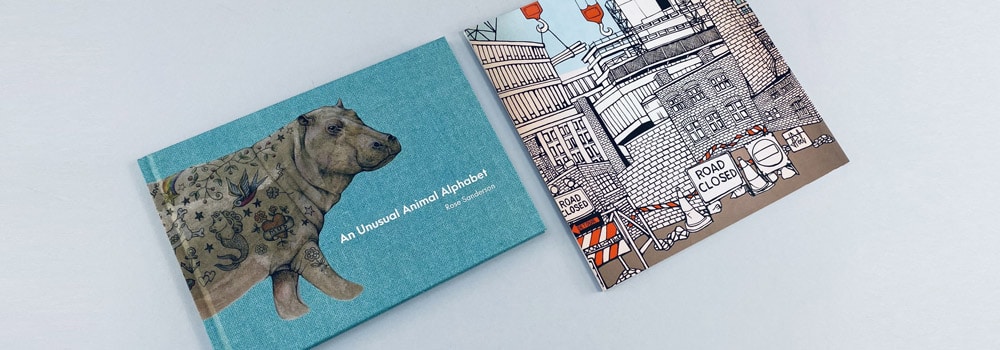
What has suffered is the printing of surprise bestsellers. Publishers tend to print some books only when demand creates a need, and these can then be shipped out immediately. And therein lay the problem in 2021. If books sold out fast, publishers were not able to replenish the stocks at such short notice. In some instances, it was the new year before they were able to send new copies.
Printed book sales typically increase by 3-4% year on year. But in 2020-21, sales increased by 13.2 per cent, according to industry tracker NPD Bookscan. And overall, they stated that the period from 2019 to 2021 saw an increase in book sales of around 21 per cent, a growth rate that according to Kristen McLean, an analyst at NPD Bookscan, was unprecedented.
The data makes it clear that it’s been the pandemic that has driven the sales of physical books up. Moreover, it’s illuminated to authors and publishers which types of books are selling well and which are not, informing new release lists.
When the global lockdowns began back in 2020, traditionally high-performing categories like self-help and business books suddenly slumped into a decline. Instead, sales of educational books and first aid books rocketed due to people keen to learn new skills and prepare for emergencies in the climate at the time.
Trends in book sales during the pandemic followed a certain pattern. Early on, people bought books on how to make bread. After a period, books on social justice and politics rose to the top of the pile. And once the US election period was over, sales of adult fiction titles began to take off.
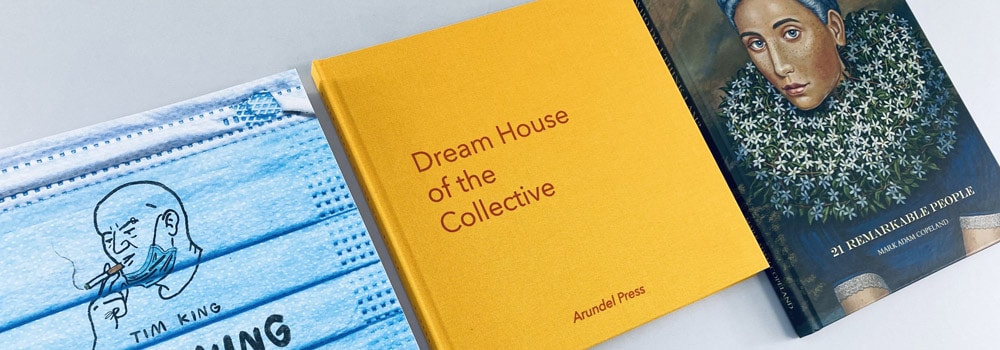
When people buy nonfiction books, they’re usually investing in them as a reference tool to inform a decision they have to make. They may also be interested in finding out more about a particular topic. But when someone buys a fiction book, it’s generally just to read for pleasure. According to McLean, the growth in sales across certain categories is a good indicator that people are now really reading and engaging with books again.
Reading is one of the top hobbies that people have adopted during the course of the pandemic, and another notable trend is that they are leaning more towards printed books than ebooks. In fact, ebook sales have not risen at all, with readers only buying these versions if they’ve found printed copies of a book have sold out. According to McLean, printed books are back in favour.
If the world was in a different situation, the increase in the sale of printed books would be a welcome positive for the publishing world and other associated industries. But even that has turned into something of a negative because of the many factors that have come into play.
In essence, printing books is not as simple as it once was. Paper, ink, and printing presses can only be found at a premium at present.
The paper shortage began with a shortage of pulp worldwide. According to reports, the price of wood pulp rose to $1,200 per metric ton in 2021 from just $700 to $750 per metric ton in 2020. The main reason for this increase is an environmental initiative in China that has closed 279 pulp and paper mills. There is also a global backlash against plastic and the rush to use paper as an alternative for all manner of applications.
The price of cardboard has also increased as more people move towards ordering products online. Paper factories have shifted production to cardboard manufacturing, taking resources away from fabricating book-grade paper.
In terms of ink, there are shortages in supply here, too – the Chinese environmental initiatives are affecting the manufacture of this as well. With the closure of wood-pulp factories, there is also decreased availability of resins, photo-initiators, monomers, oligomers, and additives.
Another contributory factor in the shortage of books is the ongoing difficulties surrounding shipping, something that’s affected the majority of industries.
The distribution network across the world is massively congested, and containers are not moving out of ports and into land transportation vehicles as fast as they would otherwise have done. On top of that, goods storage warehouses are still full.
The added complications of Brexit and the incident in which the Ever Given container ship inadvertently blocked all traffic on the Suez Canal in Spring last year also contributed to dramatic disruption to global supply chains. Then include a shortage of truck drivers, without whom products cannot be picked up and transported around the world, and it’s no wonder problems have arisen.
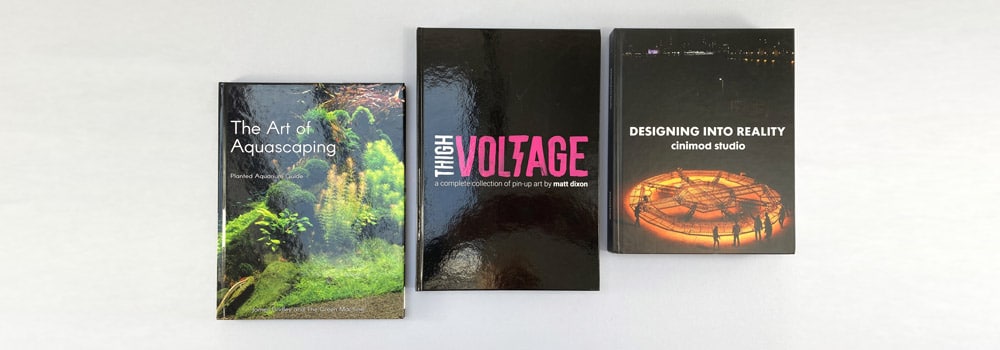
While all these factors have heavily impacted the publishing industry, some bright spots remain, such as the increased interest in reading, and of physical books rather than electronic versions to boot. If you’re an author here in the UK, you can still easily have your book printed locally. Working with a reliable and experienced printing company, you can commission short run hardcover book printing services, booklet printing services, and more.
When it comes to printing, there’s no better company to work with than Ex Why Zed. We use state-of-the-art, industry-leading printing machines that guarantee the best possible quality for your books. Not only that, but we also offer a wide range of customisation options, allowing clients to choose everything from the finish of the cover to the type of paper they want.
We are proud to have worked with many reputable companies over our years in the business, including Disney, Skype, BBC Sport, and more. Don’t hesitate to reach out to us today. We would love to talk to you and give you an accurate and reasonable quotation for your softback or hardback book printing project.
Custom notebooks can promote your business and provide your customers with something
to use and remember you by. If you want to run a campaign to increase brand recall,
notebooks may prove an excellent investment. Hardback notebook printing companies like
Ex Why Zed can provide you with various options that will fit your vision and budget.
Hardback book printing is a craft, and you should have a supportive and professional service
provider to do it for you.
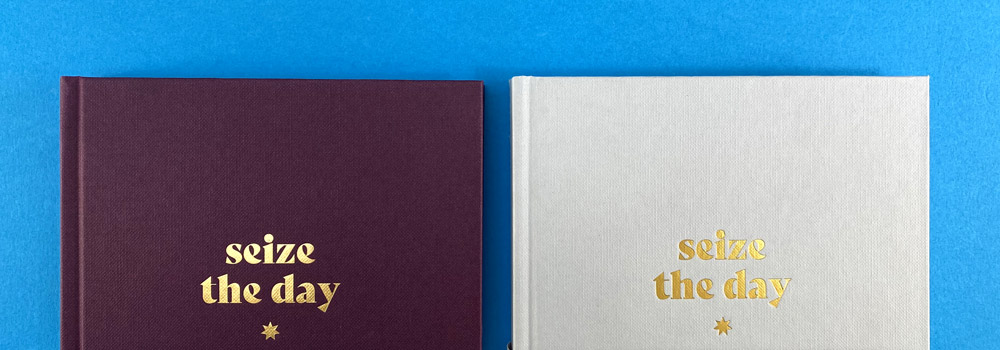
If your company has created custom designs based on your branding, you can convert them
to wallpapers, icons, greeting cards, and company paraphernalia. Transferring the branding
to a notebook will also be a great way to promote and strengthen your brand.
Notebooks come in all shapes and sizes. You can design it in a way that will speak to
customers and be related to your brand.
You can choose any photo to put on the cover. You can also put your company logo, some
creative typography, or just about anything you can dream of. Ask your hardback notebook
printing company what types of customisations they can do for you.
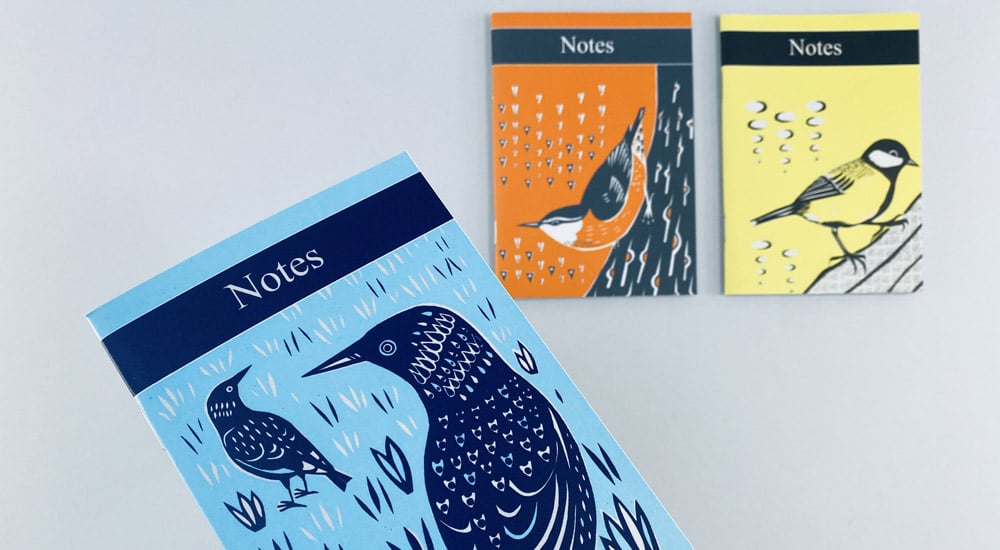
If you are thinking of printing notebooks, there is a wide range of options in terms of size,
cover design, and more. Below, we discuss the things you need to consider.
The most common sizes are A6, A5, A4, and 210x210 mm. When choosing sizes, consider
the intended purpose of the notebook, as well as its design. Smaller ones like A6 are ideal if
your target customers are on the go and want something handy to take along with them.
If you cater to people who work in the office and are always by their desk, a bigger A4 size
may be better. You can also make the notebook size completely unorthodox if you wish, but
take note that this may cost more.
Another consideration to make is the cover, and we’re not just talking about the design. The
weight of the cover page also varies. 300 gsm is typically a good weight for a notebook
cover.
Covers can also be coated with gloss, silk, or simply left uncoated. Lamination can also be
used to give the cover protection against scratches.
Inside pages are the most important parts of the notebook, which is why you should put
more thought and consideration into it. There are uncoated varieties, which have a brighter
and smoother finish. Some coatings can be used to make the pages appear off-white.
When it comes to the type of paper, you can choose between recycled paper or a house
blend. The weight of the paper usually ranges from 115 gsm to 170 gsm. The thicker the
paper, the better the ink, pencil, and crayon will stick.
You can have designs printed on the paper as well. There’s lined paper, graph paper, or
completely blank options, which each appeal to different people.
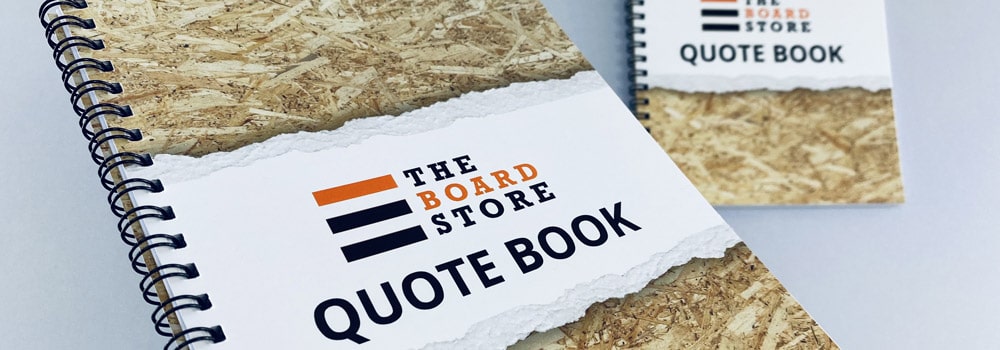
The key to making good notebooks is to define the goal and key concepts you want to
convey within the campaign. To get the most out of your investment, you must decide what
your goals will be.
You have to make sure that the branding is on point and consistent with your company
guidelines. This means the colour scheme, font, logo, and the things that make up your
corporate logo are reflected in your design and output.
It can be quite tempting to go with a nice design you saw while researching, but nothing
beats a consistent and on-brand design to provide the best recall for your company.
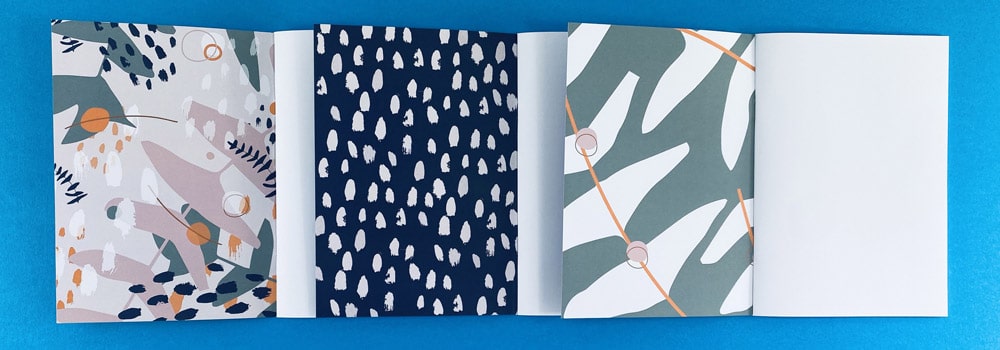
Another thing that many companies tend to forget is to remember their own employees and
associates. Remember that your employees are your primary ambassadors. If your
employees use a customised and branded notebook when jotting down notes, they would
not just look smart, but they would also embody the brand’s overall appeal. In a sense,
branded notebooks are subtle posters that showcase your brand to others.
When giving away notebooks to your clients, customers, or suppliers, you are providing
them with a piece of your company, in a sense. Notebooks may be small, but they are also
like bricks that help build B2B relationships and forge loyalty among customers and clients.
What’s great about a notebook is that it is used every day for a variety of purposes other
than office work. People can use them in daily life as well. So, think about how they would
use them and design them accordingly.
If you want people to perceive your business or company in the best way possible,
remember to make high-quality products. This will send the message that you don’t
compromise on the things you give away, which is why they can also rely on you to provide
high-quality services.
People will not just appreciate the thought of receiving a great gift from you. Quality
promotional items will also improve brand recall, enhance your company’s image, and
promote it to a wider range of people.
Surely, notebooks may seem like small things, but with the right treatment and design, they
can greatly aid your branding campaign’s success.
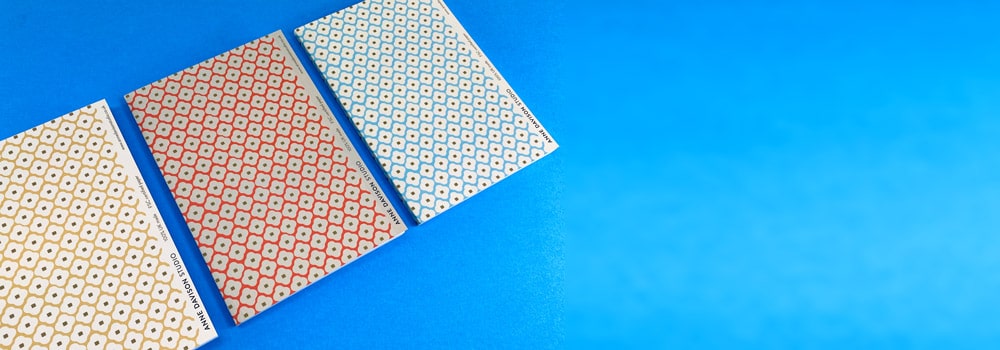
Hardback book printing can provide plenty of opportunities for companies, individuals, and
anyone who wants to promote their brand or simply make something to give away. To
ensure the best-quality prints, you need to seek out and work with a reliable printing
company.
At Ex Why Zed, we use the latest printing materials, methods, and technology to provide
you with the best outputs possible. We carefully collaborate with our clients to ensure that
they receive the right products of their goals, whether they need custom notebooks or custom journals,
booklets, hardback or paperback books, and many more.
For enquiries, don’t hesitate to reach out or use the quotation button to get started.
Before the prevalence of digital printing, the only option for printing hardback books was by ordering them in large quantities, or large runs. The use of resources between short runs and large runs was just not as economical, with short-run hardback book printing costing more money per book on average. Suffice to say, hardback book printing in small numbers was more expensive than the projected price for books that are printed en masse.
Luckily, things have changed in recent years. Short runs of book prints in every size, including hardback books, have become more seamless and have lowered in price. This opened a new window for people, businesses, and organisations that wish to publish a book but don’t have the resources for large-scale production. While it is still true that the more copies you , the lower the price per copy will be, you now only have to print a run as small as say 50-100 to make the unit cost commercially viable.
In this blog, we will discuss the benefits of conducting a short run of hardback book printing. In addition, we will also guide you in finding an affordable service provider online.
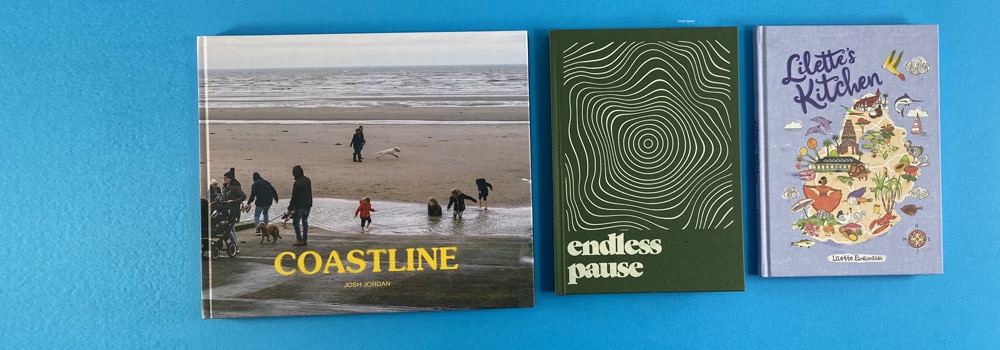
Digital prints no longer consume as much time in terms of preparation and setup, which means that you won’t have to wait for a while before getting copies of your ordered books. The reduced production time means that you will be able to get access to your printed materials, allowing you to sell them at an earlier date or use them for your business with less waiting time. If you print a short run of a few hundred copies of a self published book, we will aim to deliver 6-7 working days following receipt of your print ready artwork.
One of the main deterrents of large run hardback book printing is the associated cost. Although litho book runs (700 copies or more) are cheaper when you are comparing price per unit, they are more expensive in terms of upfront costs due to the sheer volume of copies being produced. Short-run hardback book printing, printed on our top of the range HP Indigo press is more affordable for new self publishers and children's book authors, who want to try the market without over committing on cost for their first edition.
If you are planning a limited launch for your book, or you only want to print a few copies anyway, short-run hardback book printing in the UK is a must. Short-run productions are also recommended if your book is getting frequent updates. Since you have only released a few copies of your book, it is much easier to sell all of the previous copies before they are rendered useless due to the release of an updated edition.
Some of the best places to look online for inexpensive short-run hardback book printing service providers is online forums and message boards.
Various book printing forums on the Internet cater specifically to people residing in the UK. In these forums, you can find people with similar interests and, if you look hard enough, you might even find that your question has already been answered by another user. After all, it is very likely that other people have asked for help online concerning finding affordable printing companies in the UK. We are fortunate at Ex Why Zed to regularly receive word of mouth referrals from peer groups.
You can also consider looking through reviews and blogs that cover various printing companies in the UK and use them as a basis for your research.
If you are looking for a book printing service provider that allows short runs of hardback books, check out Ex Why Zed. Our website and printed project builder are built to be customer-friendly and easy to understand regardless of your familiarity with the printing process. We offer full customisation for our customers, from the book cover finish to the type of pages used. We also guide our customers through the whole printing process if they need or want assistance. Any questions, do give us a shout we are always more than happy to help.
Aside from hardback book printing, we also print booklets of different sizes, brochures, photo books, and portfolios, among other print products. Browse this website for the full details of our services.
We allow you to choose the exact number of copies for printing, and we even allow customers to have a single hardback book printing. Regardless of whether you are printing a single book for a private collection or if you want a few hundred copies for your business, we have got you covered.
Get a quote today by filling in our printed project builder, which can be found on this website. Our project builder can be completed in just under two minutes, and we will try to send a quote to your entered email address as soon as possible. For your other questions and enquiries, you can get in touch using our phone number: 01206 766647. You can also send us an email at hello@exwhyzed.com.
Short-run printing refers to a method in which a small number of “trial” books are printed. Think of it as the next step up from printing “on demand”. Although this method used to be costly, modern digital printing technology allows short-run hardcover printing for books, booklets, zines, brochures, and other items to be produced at a relatively low price.
Hardcovers are a signal of quality and an indication of purpose on the part of the publisher: it indicates to booksellers and reviewers that this is a book they should pay attention to. Those who want a hardcover release for their books should consider getting short-run hardcover book printing services.
The production turn time depends on the size of your order. A typical order of soft back versions is generally completed within 4-5 working days, while hardbound editions can take 6/7. If you would like an estimate on how long your specific project would take, do ping us an email on hello@exwhyzed.com or even jump on our live chat in the bottom right hand corner of this page.
A booklet is a small, bound book with a paper cover and a few pages. A booklet, as you might be guessed from its name, is generally smaller in size than other books. Booklets are frequently A5 or A4 in dimensions.
The factors which affect the cost of your booklet are the size, number of pages and quantity. Jump on our Project Builder, choose the Rockstar or Helping Hand route depending on your level of print experience and we will be back with an initial quote in a couple of hours.
When it comes to paperback and hardcover book printing in the UK, colour offset printing is one of the most popular printing techniques today. It is also widely used in printing for newspapers, magazines, stationery, brochures, and many more.
Below is a photo comparing a soft back perfect bound book with a case bound hardback book.
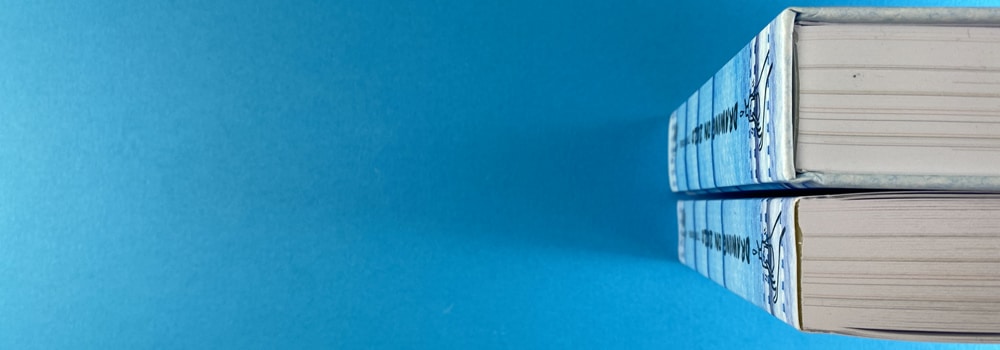
Short-run hardback book printing, or “print on demand”, is a type of printing that employs cutting-edge digital technology to produce smaller “trial” batches of short-run hardbound books. This printing method can also be used in paperback books, calendars, brochures, and other items.
Before the development of printing technologies, traditional offset printing was the only type of printing available. But today, short-run printing can yield plenty of benefits, such as a shorter turnaround time for products, fewer costs and wasted inventories, and more. And because short-run printing is done in small batches, it allows for easier revisions.
Many believe that bookbinding was the invention of Johannes Gutenberg in 1447. However, the Chinese tributary state of Korea actually came up with the first movable metal printing press 216 years earlier.
The rise of the textile industry during the Industrial Revolution influenced David McConnell Smyth to invent a sewing machine especially made for bookbinding. And during the 19th century, several improvements in the bookbinding system were made.
Bookbinding has come a long way since then. Today, anyone can have their books printed and bound simply by getting in touch with a reputable company.
When it comes to short-run hardback book printing, you only want to speak with print companies who know the idiosyncracies of that type of binding.. They produce prints with a high level of precision and efficiency. Aside from this, here are other benefits why it is best to use professional printing and bookbinding services:
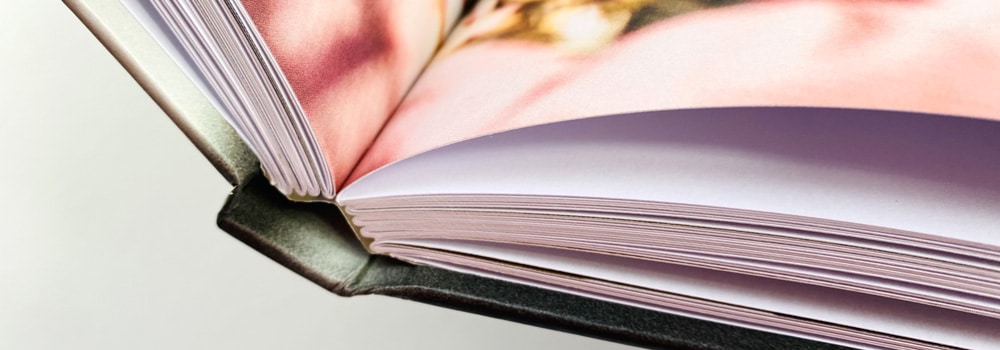
If you’re planning to have a printing project, you’ll need to choose the best printing company for the job. In doing so, here are some things to consider:
If you’ve been on a hunt for the best printing company for your project, look no further than Ex Why Zed. Whether you need printing for hardbound or soft-bound books, magazines, brochures, and more, we’re confident that we can produce the best results!
Self-publishing is a challenging endeavour because of the amount of work one needs to put in to achieve success. Despite this, artists in many fields are turning to self-publishing as a means to promote their work. Booklet printing services nowadays offer plenty of support for those who are looking to make their work more visible and well-known to the public. Many booklet printing companies nowadays can provide artists with a wide range of options, allowing for highly customised prints that don’t compromise on quality.
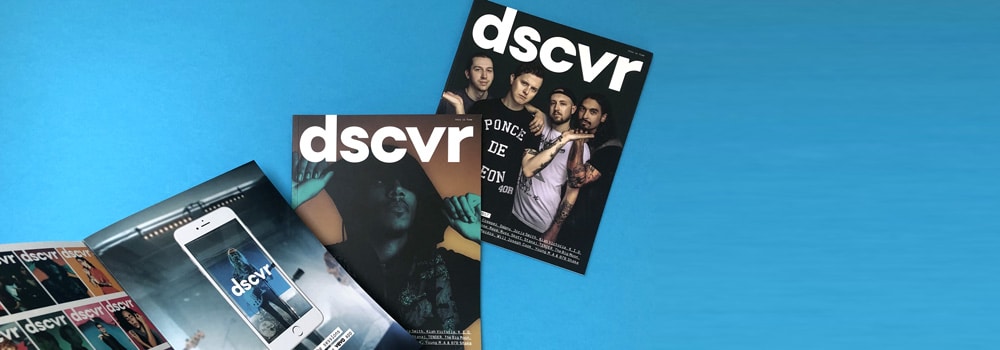
The main thing that attracts artists to self-publishing is the amount of control over the output that they can have. Some big names are taking matters into their own hands because this is a more convenient and empowering way of putting their work out there.
Many choose to go independent so that they can showcase their works and have control over what will be printed, as well as how it would look like an end product. Self-published artists say that doing it yourself makes your work seem more important, and there is a lot more emotion attached to it. Check out our content on unveiling the artistry and individuality of creative writing, typography and poetry zines..
In the early years of self-publishing, it was almost guaranteed to be gruelling work. In a book full of pictures, one had to shell out upwards of £5,000 just to get it published.
Another challenge in self-publishing a bookazine has always been that you have to surpass the standard that commercial publishing has set. The end result must be stunning.
Thankfully, independent authors and artists nowadays can simply hire a professional to help out with the printing process. Moreover, they now have a lot of say in terms of the overall design of the prints, as well as which materials are used. Independent authors and artists are encouraged to hire reliable booklet printing services from a reputable company so that the end result will be consistent with what they have in mind.
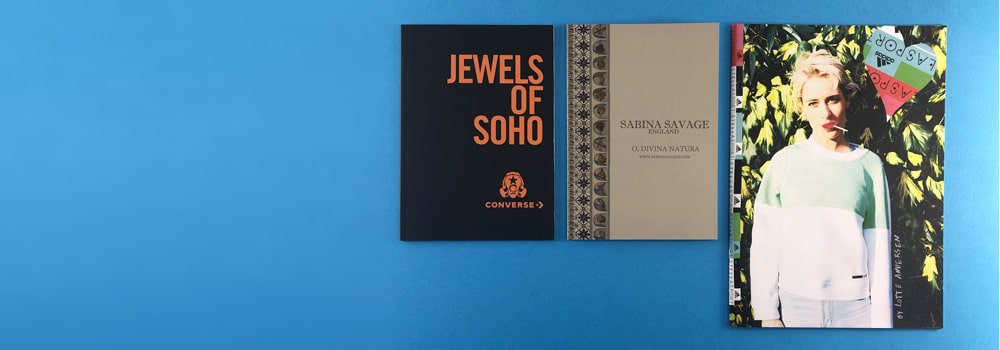
Those with little to no training or knowledge in designing an art book for self publishing can also benefit from an expert’s services. Hiring professional assistance can get what you have in mind laid out and so that you have a good idea of what could end up looking like.
However, if you do not have a lot of connections, self-publishing may also entail some self-learning, but that that is not necessarily a bad thing. You can learn a new set of skills that may become useful for you in the future.
Sometimes, learning a new skill may take as long as a month. Familiarising yourself with the equipment may mean investing even more time, but at the end of the day, when you learn these things, it will be easier for you to independently publish your booklets. Although there will be an adjustment period, through experience, you will find that you can really do it yourself.
Checking the quality is one of the biggest factors why many do not go the independent route. If you are signed with a publisher, all you need to do is to send the drawings or photos, and they do all the manipulation, layout, and quality control.
But when you self-publish, you have to oversee all the aspects of the process. So, if you spot any mistakes, you have to learn how to own them and be responsible for it.
Art and photography books need to be of top-tier quality, so it pays to check even the smallest details. Any small mistake in the printing or grammar can become obvious, so it pays to take great care when checking your work. You can ask your printing company to help out if they have this type of service.
One of the ways you can ensure a good booklet is to first create a dummy. You can print out a crude version of the booklet so that you can check it and have others see how it would flow and how the actual pages of the booklet would look.
An early version or a prototype can help immensely in getting feedback on what can be further improved or, more importantly, what needs to be revised or edited. Sometimes, a prototype may cost money, but the amount of stress it can reduce for you is priceless.

Choosing your partner printer is another great consideration to make, as they are the ones who will turn your vision into reality. You must note that different printing companies have different styles, which means each will put out a slightly different result.
You can ask your printing company to send a final on screen PDF proof to show what your booklet would look like once it has been printed. This is an essential step in choosing a printer because anyone who is flexible enough to accommodate small changes will be as passionate as you are about the output.
They should also not insist on implementing their own templates. While these can be useful when it comes to setting the printer, these can be limiting and could lead to massive changes to your vision.
A professional printer will also be more concerned about the deadline, always striving to meet and exceed the set expectations and timelines. If you want to sell your booklet at a certain time, the printer should be able to provide you with the copies at the date agreed upon or even earlier.
Self-publishing is a challenging but immensely rewarding undertaking. To ensure the best results, it’s crucial to work with a professional and reliable booklet printing partner. Such a company will have many options and services to choose from, allowing you to turn your booklet plans into a profitable reality.
At Ex Why Zed, we provide all the necessary services to assist you. We have worked with thousands of artists, self-publishers, children’s book authors, magazines, photographers, illustrators, and just about anyone who wants to see their work in high-quality prints.
Don’t hesitate to reach out, and we will do everything we can to produce the best possible results.
Hardcover book printing is a common choice for a lot of people, especially if they’re going after quality and longevity. However, hardback book printing is priced differently compared to paperback printing. That’s because there are a lot of factors to consider in terms of cost.
On average, hardcover book printing in the UK can cost from £3 and up per book. The cost is hugely dependent on the print spec though and your styling choices. Keep reading for more insight 🙂
Compared to paperback books, hardcover books are more expensive to print. The material used for the cover alone can cause this, but that’s not the only thing that affects the cost of printing.
Here are some of the most important factors that affect printing costs:
There are a number of choices when it comes to materials that can be used for hardback books. Boards are used as the base of the cover, and another material is wrapped over it, depending on your preference.
Some prefer using silk, for example. Others who want an edgier look may opt for leather. Depending on the materials to be used, the price will also increase or decrease.
The more complicated a design is, the more expensive the total cost will also be. Evidently, having a simple group of words printed across a plain background will be the cheapest way to go. There are also over 50 possible choices in terms of the cover colour.
Some may opt to foil a few letters on the cover, which will mean additional costs. In some cases, you may want to print out a simple photo or have a colourful work of art splashed across the face of the book. The basic rule here is that the simpler the cover design, the cheaper it will probably be.
The more pages your book has, the higher the costs as well. Not only does the amount of paper required add up to the base cost, but it also becomes tougher to bind the thicker the book gets.
Some might think about making the pages bigger to lessen the number of pages, but that could affect the costs as well. That’s because bigger pages mean more printing on each piece of paper. So compare first, especially if you have quite a lot of coloured images on the pages.
Some hardcover book printing near me offers a number of different choices in terms of the type of paper to be used. Some paper is thicker, and some will feel smoother between your fingers. Different types of paper will have different costs.
The best way to determine what type of paper you’ll need for your project would be to request for some samples. There are great hardback book printing companies that provide these for free so that you can make informed decisions on how you want your book to be printed. The truth is, choosing to have your book or journal printed with a hardcover means that it’s a premium product. So, it should be the value that counts and not just the price. The good news is, working with a trusted printing professional can give you the best value for your money.
The saddest thing that can happen is for you to find the cheapest printing options and end up with a sub-par product. Even sadder is if you shell out a lot of money and end up not getting any real value with for your investment.
That’s why it’s important to choose your hardcover book printing partner well. Right off the bat, check how responsive they are to your enquiries. Do they answer questions in a timely manner? Do they work with you throughout the process? How well do they explain the printing process and what the pros and cons are for each option? The more informed you are, the better your choices and the final product will be.
Make sure you check on their portfolio, too. Look at the quality of their output and how satisfied past customers were with their entire experience, and not just on the final output.
Check also how flexible they are, especially if you want a few unique touches to your book. They have to understand your creative process well and not just stick to what they already know. Work with a company that also has a team of creatives working on your project.
Call us here at Ex Why Zed via 01206 766647, and let’s talk about how we could give you the best value for your money in printing your hardback book. You can also get an accurate quote for your printing project with our project builder here at https://exwhyzed.com/printed-project-builder.
Hardcover book printing uses thick, firm cardboard and other materials that add to the book’s durability. Special covers are sometimes used to protect books and their pages from dust and frequent usage. Pages are also usually acid-free to preserve the paper and ink.
Paperbacks, meanwhile, have thin, flexible covers that are prone to wear and tear. However, they are cheaper.
Yes, they are. That’s because many readers prefer the quality and robustness of hardcover books. As they are made with high-class materials and processes, it is also easier to preserve them. Overall, hardcover books can provide a lot of value to readers who are willing to pay more money for them.
The primary reason why self-publishers opt for hard back book publishing is that hardcover books bring in more money. But apart from this, hardcover books are winners because they are highly appreciated by readers and booksellers, given that they offer better quality compared to paperback books.
Yes, they are. To keep pages in place, they are sewn with a heavy thread at the spine. They are stain- and moisture-resistant because their cover is made from thick, sturdy paper board that is topped off with gloss-coated paper. These books have gone through a digital hard bind catalogue printing process that gives them their longevity and durability.
Many people believe that printed books are superior to eBooks for various reasons. Notably, studies have found that reading on paper is a far more rewarding experience compared to reading on a screen. Moreover, as physical books don’t emit any harmful blue light emissions, they will cause less eye strain and won’t interfere with one’s sleep.
Printed books are still popular because readers enjoy the feeling of holding a physical book in hand and flipping through the pages. Moreover, printed books have numerous advantages over their digital counterparts. For instance, they help readers subconsciously absorb details better compared to reading on screen.
When it comes to durability, hardcovers are the winner. That’s because hardcovers involve the use of durable materials such as binder’s board, cloth, or leather. It may also come with jackets to shield the book from further damage. Though these books can be rather pricey, they have the power to draw in plenty of sales during release dates.
Paperbacks, however, are the winners when it comes to price. Since they only use soft paper and glue, they won’t cost as much. This makes paperbacks highly accessible for the masses as well.
Hardcover books are published first, primarily because many people still purchase them despite their high price tag. Hardbacks have an attractive quality to them that makes them appealing to display on library shelves or in bookstores.
Since book collectors are drawn to buying hardcover books at the onset of their release, publishers take advantage of this profitability. The income that publishers could get from selling hardcover books during first launches are often enough to give them a good return on their investment.
Before hiring a hardbound book printing service online, you have to consider your printing options first. The right company would offer multiple choices in sizes, colours, and materials.
The next essential step is to look at their sample works. Observe inks and layouts that have been used on previous print jobs so that you get a good feel for the quality that they produce. Another thing worth considering is the ability of the printing company to meet deadlines.
Lastly, verify if the company’s staff demonstrates professionalism and excellent customer service. All these would help you recognise which printing companies are worth hiring.
When hiring a printing company, onlookers must consider two main factors: reputation and experience. If a printing company has earned certifications and awards, these serve as proof of their capacities, professionalism, and dedication.
Chances are, they would give the same level of commitment to every client who has hired their services. Satisfied clients would, in turn, serve as active promoters of their business.
Companies that have been operating for years will have displayed expert skills, innovation, and efficient methods in their previous work. You can learn more about how well they perform by checking testimonials from their previous clients.
If you’re looking for exceptional services for hardback, paperback, booklet, brochure, and art book printing UK-wide at competitive prices, check out our range of offers right now at Ex Why Zed. Call one of our representatives today!
Over 200 million printed books were sold in the UK last year despite the COVID-19 pandemic. This is an impressive figure, and even more notable for being the highest volume of UK book sales in well over a decade. It would seem that the popularity of printed materials, as opposed to online-only publications, may not only be persisting, but even increasing. This could be an encouraging sign to companies and individuals looking to invest in custom booklet printing to promote their writing, products or services. If you’re a business or an independent author opting to self-publish, it’s well worth considering investing in affordable book and booklet printing.
The Bookseller magazine recently reported that official book sales in the UK increased by 5.2 per cent in 2020. The total book sales amounted to 202 million volumes, worth around £1.76 billion. This figure represents the largest rise in book sales since 2007, while the annual value was the highest since its last significant peak in 2009.
It’s interesting that physical books continued to sell in huge numbers despite the pandemic; not least because booksellers faced shutdowns for long periods last year, with the two national lockdowns from 23 March to 15 June and from 5 November to 2 December. However, the lack of open bookshops apparently failed to stop printed book retailers from thriving in the industry.
Sales director Vicky Ellis said that 2020 was a year like no other, a year of extremes, in fact. She said that the first lockdown saw a significant decline in sales; but once non-essential retailers reopened, sales skyrocketed. Ellis especially singled out an additional “Super Thursday”, which took place on 1 September 2020.
While the arrival of books at local bookstores saw delays during the pandemic, there was a huge increase in sales as soon as the shops opened.
Despite stringent social distancing rules, readers were quick to return to their favourite bookshops, and the first week of June saw sales of 3.8 million books. This totalled £33 million, a 31 per cent increase in sales in the same week of 2019. Print book sales rose by 9 per cent in volume and 11 per cent in value in the eight weeks following reopening after the first lockdown.
According to The Bookseller, the best-selling title of 2020 was The Boy, The Mole, The Fox and The Horse by Charlie Mackesy. Closely following in terms of volumes of sales were Richard Osman’s The Thursday Murder Club, and Pinch of Nom – Everyday Light.
Ellis stated she was not surprised that demand continued throughout the remainder of 2020 and the pandemic as a whole. She also noted that demand had remained strong during the second lockdown and ensuing restrictions. Her conclusion was that people had grown tired of watching so many Netflix series and had been in search of something else to fill their time.
Ellis also conjectured that books offer people a diversion away from spending too much time on their phones or in front of computers – devices that most people use on a daily basis for work and other purposes. Physical books can also be a home accessory capable of being put on display, unlike e-books.
Other industry commentators claim that the increase in sales of physical books could also have been prompted by a greater yearning for educational content. The home learning market, either for children whose schools have been closed or for adults aiming to benefit from lifelong learning, is continuously growing. People want to learn for themselves or to escape to another world, even for a brief moment in time. A physical book, though often viewed as outdated these days, can do something for readers that an electronic version cannot.
Businesses too can capitalise on this trend. Custom booklet printing gives their customers something more tactile and less ephemeral than an advert, a website or online pdf. In short, printed notebooks can help a brand get noticed and make a company stand out from its competitors.
Back in the world of publishing, publishers were unable to release their offerings during the April 2020 lockdown, so they had to postpone new releases until the following season. In previous years, the weeks that lead up to the autumn have been viewed as the busiest months for new releases as people stock up on books as presents for Christmas and to entertain themselves during the forthcoming holiday season.
Since 2008, there has traditionally been a Super Thursday in October, on which a host of new titles are released onto the market. But this year, because of delays in release dates during the lockdown and the inability to hold face-to-face conferences, festivals and literary events in spring and summer, there was a huge backlog of titles waiting to appear on the shelves.
The industry, therefore, decided to have a whole series of Super Thursdays, with the first, on 3 September 2020, when almost 600 books were released on a single day.
However, while readers rejoiced in the wealth of new material available to them, book publishers and authors were less enthusiastic. Greater numbers of new releases equate to greater competition. It was even harder to attract attention, especially for first-time published authors, whether for sales or for reviews by major publications. The pandemic left little unaltered in the publishing world last year.
Increases in book sales were also mirrored in the US. In 2020, sales increased by 8.2 per cent to reach a massive 751 million books purchased. Similar to the UK, many people who were avoiding Covid were stuck at home and took to reading books as one of their key sources of entertainment, comfort, and escape.
Book analysts have given their insight into the state of book markets in the UK and beyond and have stated it has changed dramatically for the good in recent years. Growth in sales came in waves, whether driven by increased interest in analysis of the political scene in the context of the presidential election or in purchasing texts to teach children at home during school closures. Others looked for new interests or to improve existing skills during lockdowns by purchasing a printed cookbook, for example.
One huge area of growth during 2020 was the juvenile fiction category. Sales of print books classified in this niche contributed a third of the growth across the entire US book market. The percentage of juvenile fiction books sold increased by 11 per cent, totalling 18 million volumes more in 2020 than across 2019. Adult non-fiction printed book sales also increased by 4.8 per cent, selling 14 million more books in the same period.
Whether you’re a business looking to advertise, an aspiring author or a seasoned writer, a good publishing partner is essential to help realise your ambitions. With the increased interest in physical books and other printed material, self-publishing could prove a valuable tool in your arsenal as you seek to reach new audiences.
When you want to transform your ideas into print, Ex Why Zed can help you. Our services range from pamphlet, magazine, and booklet printing to artists’ catalogues and self-published children’s books, novels and non-fiction. We ensure that every aspect looks professional, from the quality of our printing to our binding, and all at the most competitive prices.
Why not see for yourself by asking us for paper samples? We’re also delighted to offer advice and support for any printing project. Call us on 01206 766647 or email us at hello@exwhyzed.com, and we’ll be glad to help you out.
As in all areas of life, the printing industry has seen many technological advances over the years. Booklet printing UK-wide and printing of many other formats like newspapers and magazines are very different to how it was done in the past. Major improvements to booklet printing technology have made the process more environmentally friendly and efficient, as well as resulting in better-looking, better-quality prints.
This brief guide will offer tips on finding affordable but high-quality booklet printing services for whatever purpose you need. It also lists some of the qualities and services you should look for when choosing a booklet printing company.
Nowadays, you can find most UK printing companies online. Just search for ‘booklet printing UK’, and you’ll be presented with a long list of companies that offer this service, as well as details of their processes and how much you might have to pay.
Some of the most helpful and transparent companies will offer quotes for their printing services upfront online. All you have to do is provide the necessary information, such as the number of copies you want to print, the page colouring, materials to be used, and whether you require multiple or single book printing UK-wide, and so on.
After doing a degree of research online, you can shortlist the printing services company you want to work with. Then, compare and contrast the companies on your list by factors such as price, the company’s reputation, customer service, delivery estimates and so on. Finally, narrow your options down to the best one on the list.
If you’ve been searching for “booklet printing near me” on Google, here are several factors to take into consideration:
The first thing you should look for in a booklet printing company is the quality of their print. Nowadays, people have higher standards than ever and expect professional presentation. Something produced in a low quality of print, no matter how compelling the words inside are, will stand out like a sore thumb and give people a poor impression of your business.
Print quality is all down to the company’s procedures and the quality of the printing equipment they use. To ensure your words make a great first impression, make sure you find a printer that has a proven track record of producing high-quality outputs.
Try requesting some print samples from any company you intend to use before signing a deal with them. If you ask for print samples from a few printing companies, that’s even better, so you can decide which looks and feels the best. That will help you a lot in deciding which company to entrust your business to.
Consistency is the key to building your brand and setting your printed materials apart from your competitors’. If you plan to other forms of literature or portfolio booklets to promote your business in the future, you may want to select the same colours, fonts, shapes and style, so your regular readers can familiarise themselves with your brand.
If you were printing a comic book, you’d want to ensure that the page and book cover elements matched the story’s theme. But generally, aim for consistent design across all your publications, as inconsistencies could result in confusion among your customers. Aim to work with a booklet printing service provider who values consistency at all times and can advise on building a unique and memorable house style for your company.
If you are looking for affordable yet high-quality children's booklet printing services in the UK, you’ve come to the right place. Here at Ex Why Zed, we are dedicated to helping our customers get the best printing services by providing close support and accessible services.
Get your print quote today using our printed project builder. To determine the total price, we factor in size, the number of pages, cover material, binding method, colouring, matt lamination, and other properties.
We offer various binding options for booklets, such as saddle stitch, staples, wire stitch, perfect binding, and so on. Each of these binding options for booklets is designed for different booklet thicknesses. For example, saddle stitch is generally only required for booklets with 48 pages or less.
Alongside booklet printing, we also offer a range of other printing services for our customers, such as the printing of business cards, children’s books, photo books, notebooks, newsletters, portfolios, and much more.
Our website is highly user-friendly, whether you are a beginner when it comes to printing processes or an experienced publisher. We provide extra help, tips, and resources to help our customers who are unfamiliar with the printing process. But if you’re more experienced, you can skip straight to our project builder. It takes just two minutes to use, and we aim to get back to you with an email quote as soon as possible.
If you have any further questions, you can email us at hello@exwhyzed.com or give us a call on 01206 766647.
The cost of booklet printing depends on various factors, including the page quantity, booklet size, the binding methods used, paper types, colours and turnaround time. A company that offers top-notch booklet printing in the UK will aim to provide a competitive quote for your project. Contact us today for an estimate for your publication.
You need at least four pages to form a booklet. Each sheet of paper contains four pages, two on the front and two on the back. The paper is folded so that the pages all run consecutively. The number of pages in your booklet, then, must be in multiples of four. Typically, a booklet has a minimum of eight pages.
It can take between five days and two weeks or more to print a booklet. The duration of the printing process depends on the design’s complexity and other variables, including file submission, proofing, binding styles, and quantity. Orders of a hundred or fewer copies take five days to print, while orders of five hundred or more copies take ten days.
A5 booklet printing is an effective way to market products, issue user instructions, or even showcase stories in a compact form. Booklets are bound or stapled, making them stronger and longer-lasting than a pamphlet. Printed booklets typically have a standard size of 210mm x 148mm, 210x210mm or 240x170mm which reduces waste as well as the overall print costs.
A booklet is a document containing multiple sheets of paper with four pages printed on each. Once folded, these sheets correspond to a page order. Printers can print on both sides of the pages using automatic or manual processes. A professional service offering bound booklet printing in the UK can provide a range of design options as well as scalability.
The many benefits of brochures include the following:
With the rise of high-tech e-readers and the like, it can be tempting to publish your book online instead of having it printed. However, many people still prefer printed books to e-books. Here are a few of the reasons why:
If you’ve been searching for a printing company that offers top quality outputs at competitive rates, check out our wide range of services at Ex Why Zed!